Nepal Guide Treks & Expedition – Hiking & Peak Climbing Agency
- +977-98510-29613
- [email protected]

Langtang Trek In March
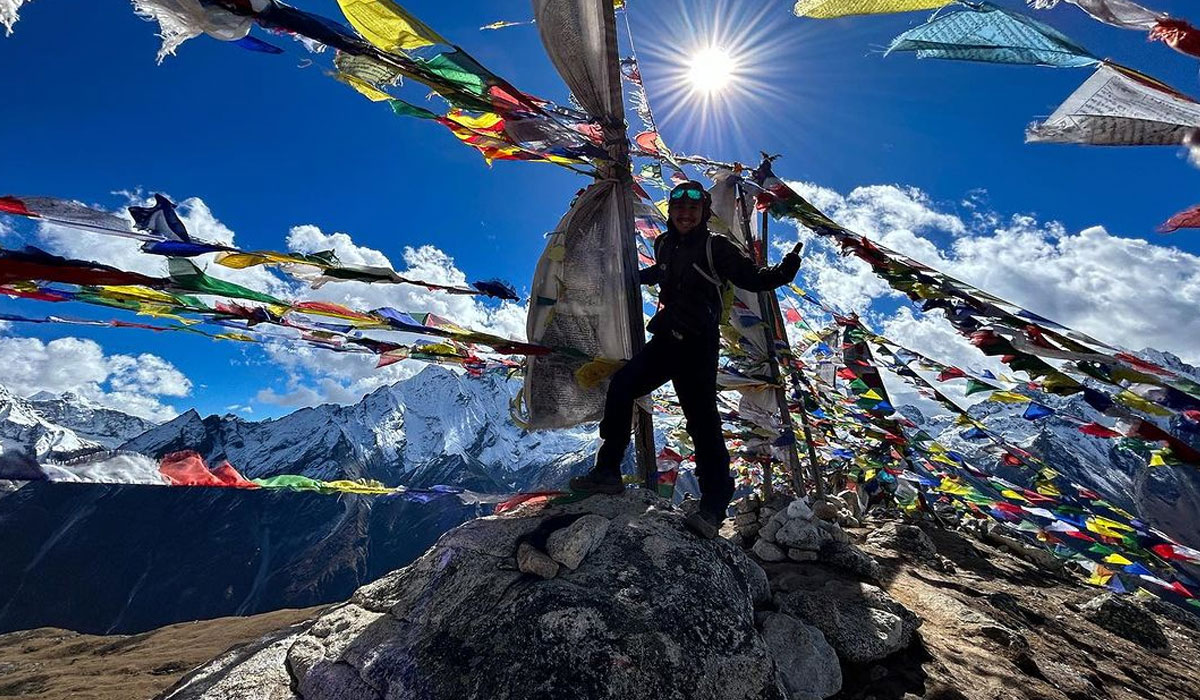
The Langtang Valley trek is a very popular trekking destination in Nepal. This trek is more suitable during certain seasons. Spring is one of those popular times when the Langtang trek is done. Here, we will cover everything you must know about the Langtang trek during such a season, specifically, the Langtang trek in March.
Langtang trek is a very accessible and easy trek encircling the Langtang mountain range. It takes you to several remote hamlets of the Himalayan foothills in the Langtang region . Treks to Kyanjin Ri and Tserko Ri peaks are popular points of the Langtang trek. Similarly, the trek to Helambu, Gosainkunda, Ganja La Pass, etc., also comes under a variation of the Langtang trek.
These treks come with aesthetically pleasing sceneries and beautiful vistas of mountains. You will walk through various springs, alpine woodlands, and traditional villages. Such an environment becomes more vibrant during the spring season . The weather becomes stable, and the trails are quite accommodating for long-duration walks. The vistas become more clear due to the clear blue skies. Similarly, the temperature also becomes quite suitable for traveling. The lack of rainfall or snowfall will make the trails quite dry and easy to walk.
Since the trek will become more popular this season, the trails will get more crowded. So, you should ensure you have proper management of accommodation for your treks. Lodges and tea houses could be overbooked. You might not be able to manage your transportation. So make sure you get a travel package from trekking agencies. You can trust us at Nepal Guide Treks with such arrangements. We will ensure your Langtang trek in March is as awesome as you had planned in your head.
- Find vibrant floras in the alpine woodland, including flowers like Jasmine and rhododendron.
- Walk through the thick green forests filled with bamboo and oak trees.
- Watch the amazing vistas of mountains like Langtang, Manaslu, Ganesh, and Jugal Himal without obstruction from the clouds.
- Walk through dry and temperate trails in the foothills of the Langtang range.
- Clear blue skies with vistas of Ganjala, Dorje Lakpa Ranges, and Khumjung glacier.
- Visit the Gosaikunda Lake, which is a very vibrant spring environment.
- Get a chance to reach viewpoints like Tserko Ri and Kyanjin Ri, or cross the Ganja La pass, etc.
- Trek in a chill climate and a very stable weather environment.
- Visit the cheese factory as well as the ancient monastery of Kyanjin Gompa.
- Pay a visit to hamlets like Langtang, Rimche, etc, and fraternize with the ethnic communities residing there.
- Get a chance to see rare wildlife living in the wildlife of Langtang.
Why should you do the Langtang trek in March?
Temperature and weather suitability.
March bids farewell to the cold and gloomy winter and welcomes the spring season. The overall environment becomes vibrant and much warmer compared to winter. Although early March might still have traces of winter, the month’s end wil definitely bring the blooming season to Langtang.
The days become longer, and the temperature becomes quite suitable. You will not have to face scorching heat like the middle of the summer, yet it won’t be cold and dreary like winter. The average temperature lies at 5 Celsius at high points like Kyanjin Ri. On the other hand, lower altitudes face around 10 degrees Celsius on average on normal days of March. You could say the range is 5 to 10 degrees Celsius in March in the Langtang region.
Along with the temperate climate, the weather at Langtang is also quite stable . You will get clear blue skies without obstruction caused by clouds during March. The chances of rainfalls and snowstorms become significantly low. Hence, it avoids spontaneous risks for high-altitude treks. The stable weather of March is a great tool for safe treks in the remote HImalayan trails. They not only allow us to stick to the itinerary but also decrease dangers or landslides and roadblockages.
Flora and Fauna observation
Spring is a great time for floras and fauna to flourish. After the dread of winter, the vegetation comes to life. The same applies to the wildlife. After a cold and gloomy winter, most animals are seen out in the forests roaming. The Langtang trek in March allows you to observe such floras and faunas both in the local community as well as the region’s forests.
During your trek, you will observe various terrace farms, particularly growing mustard on the lower trails. You will also observe the blossoms of Jasmine during your trek. You will also notice the local hamlets with various tiny buds starting to form in their locality. These buds will bloom best during months of May with flowers like rhododendron and Magnolia.
During the trek, you will also pass through thick green forests. These forests will be covered with vibrant trees of spanish oak and bamboo trees. You will also see meadows of Gentian and Daphne. Some places will also show you blooming rhododendrons if you’re lucky.
The trek also takes you to the protected area of the Langtang National Park . The region is known for being a habitat for wildlife. You might be able to spot several rare wildlife during your Langtang trek in March. Some common spottings include musk deer, wild deer, dzo, falcons, lizards, langurs, bears, etc. The spring season also brings high chances of spotting rare animals like snow leopards and red pandas.
Dry trekking trails
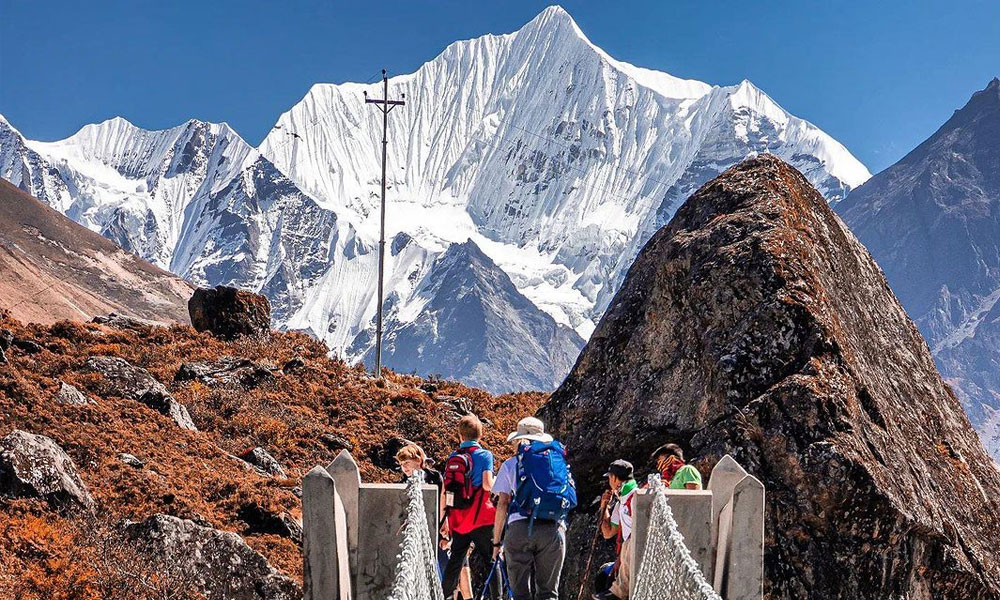
Due to the lack of rainfall and snowfall in March, the trails will be quite dry. This reduces the risks of injuries caused by slick roads. Hence, the trekking will be quite convenient this time of the year. Moreover, rainfalls and snowfall cause trails to be slick and cause issues of landslides. Road blockages due to such problems cause huge inconvenience for your treks. However, this will likely not occur if you do the Langtang trek in March.
Easy access to resources
The Langtang trails become very inaccessible for local businesses during the off-season. The winter and monsoon months make the trail very inhabitable, especially for freight. Transporting resources to run businesses like tea houses is quite difficult at such a time. So, most businesses close during peak winter and monsoon seasons.
However, such problems do not really cause an inconvenience during March. The transportation of goods can be done easily through hikes or on animal backs. The chances of spoiling the goods or road blockage are minimal. Hence, the businesses are smoothly running. You will not have problems with accommodation or meals during your Langtang trek in March.
Beautiful mountain views
The Langtang trek in March will be spectacular because of the wonderful mountain views. Due to the lack of clouds to obstruct your views, the skies will be aesthetically pleasing . You can see snow-capped mountains even from the first days of the trek. You will also get close and unobstructed vistas of glaciers and lakes of the valley. Peaks like Langtang Lirung, Yala Peak, Gangchhhenpo, Dokpu, Naya Kangri, etc ., are visible during this trek.
Challenges of the Langtang Trek in March
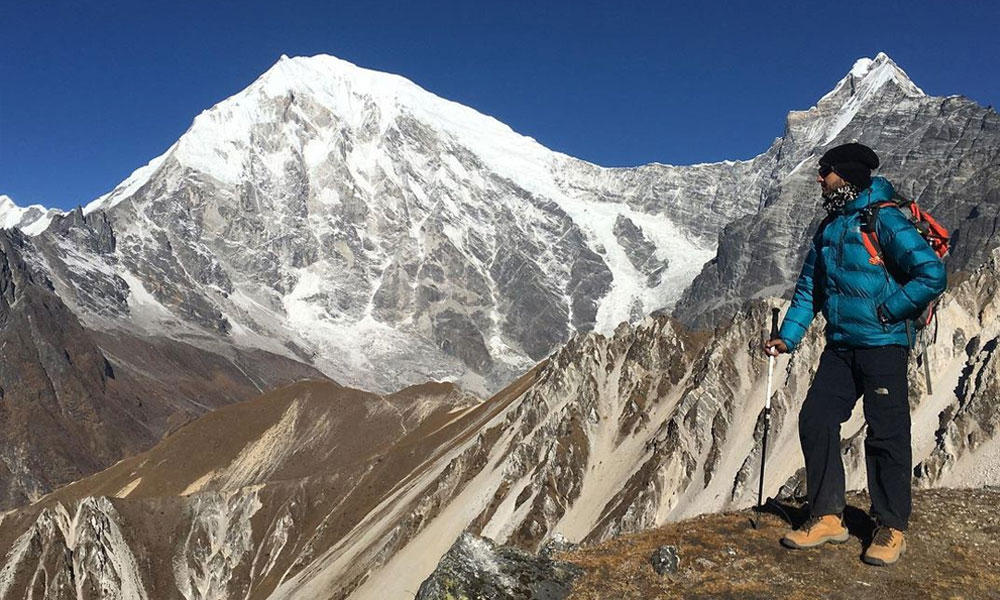
Crowded trails
The spring season begins the trekking season in Nepal. This means travelers from all around the world make several trekking trips to Nepal . The trekking season causes the trails to be a little more occupied than usual. You will find several trekkers, local and international, during your Langtang trek in March.
The early days of March might show you significantly quieter trails. However, they get more crowded by the end of the month. So, if you wish to have a peaceful trek with not many people around, make it earlier.
Overbooking
Spring brings in trekking season, and along with it, the demand for consumers on the trails increases. This causes the businesses to run on a massive scale. But at the same time, it causes overbooking and an overload of demand. Sometimes, due to overbooking, you might not be able to reach basic amenities. Tea houses could be overbooked; you might not find proper transportation, etc.
So to ensure you do not get into problems caused by this, make prior bookings. This can be done on your own or via your guides. Usually, when you book your Langtang trek via trekking agencies , they make these bookings for you. You can look into several of our Langtang trek packages, choose, and we will make the necessary bookings.
Chances of fraud
Since the spring season brings a lot of crowds to the trekking trails, you might be scammed . Unregistered companies might sell you packages without legitimacy. So make sure you double-check before getting any packages from random agencies or people. Ensure you have travel insurance and trustworthy companies in Nepal for your travels. Do not let the busyness of the peak trekking season make you a victim of fraud.
We at Nepal Guide Trek have great legitimacy and rapport. If you are looking forward to doing the Langtang trek in March, you can look into us.
What are the Langtang treks that we offer in March?
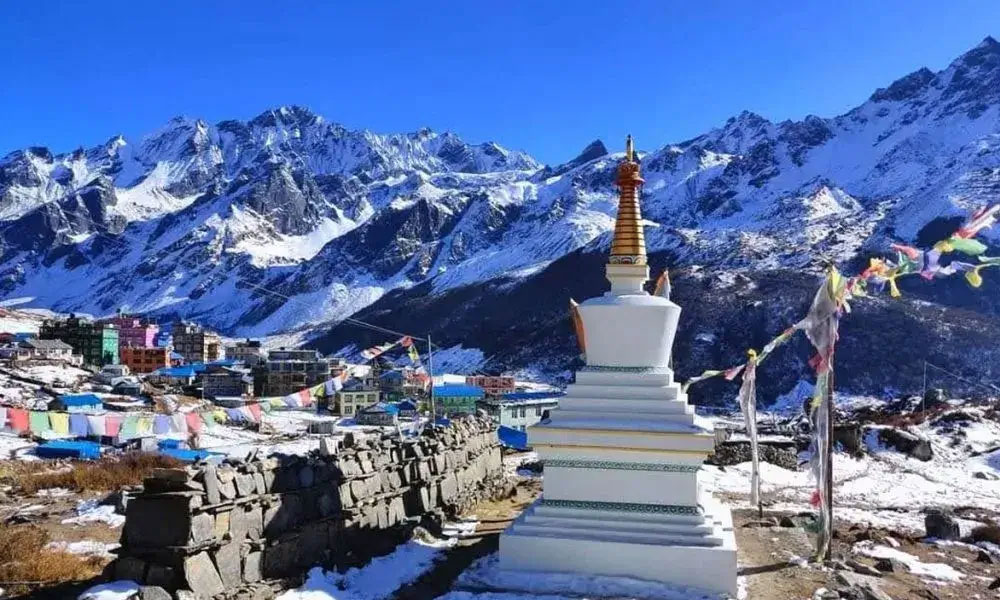
7 DAYS LANGTANG VALLEY SHORT TREK
The 7-day Langtang Valley short trek will take you through the most frequented route of the Langtang Valley. It will take you through the beautiful alpine trails filled with rhododendrons and bamboo trees. You will reach as high as 5000 meters above sea level on this trek. The Kyanjin Ri Peak and Tserko Ri Peak are the popular destinations for this trip.
The trek is also a great way to connect with the local Tamand and Sherpa community. You will get to learn about their Buddhist culture, which has a high Tibetan influence. Visit ancient landmarks of cultural significance like Kyanjin Gompa.
GOSAINKUNDA LAKE TREK
Another amazing offer of the Langtang trek in March is the Gosainkunda Lake trek. The Goisainkunda Lake is a revered lake among Hindu and Buddhist pilgrims. The lake lies in the Langtang region and is distinguished among the adventures within the Langtang trek.
The trek to Gosainkunda is quite simple and accessible. It is short, scenic, and quite near Kathmandu. The Gosainkunda trek we propose for you takes around 8 days to complete . You will be able to visit the splendid lake as well as get amazing mountain vistas throughout the trek. Panoramic vistas of the Langtang range, Himal Chuli, Manaslu, and Ganesh Himal, are available during this trek. Since the trek is in spring, the clear skies will also allow you to see the Annapurna range from afar.
LANGTANG GANJA LA PASS TREK
The Langtang Ganja La Pass trek is another variation of the Langtang trek you can do in March. This trek is quite similar to the most frequented route of the Langtang Valley trek. This trek also takes you to regular destinations like Kyanjin Ri and Tserko Ri. However, we take this journey a step further by going higher. We will trek by crossing the Ganja La Pass at 5122 meters on this trip. Vistas of Langtang Lirung, Yala Peak, Tserko Ri, Sishapangma, etc., are available through this trek.
TAMANG HERITAGE TRAIL WITH LANGTANG VALLEY
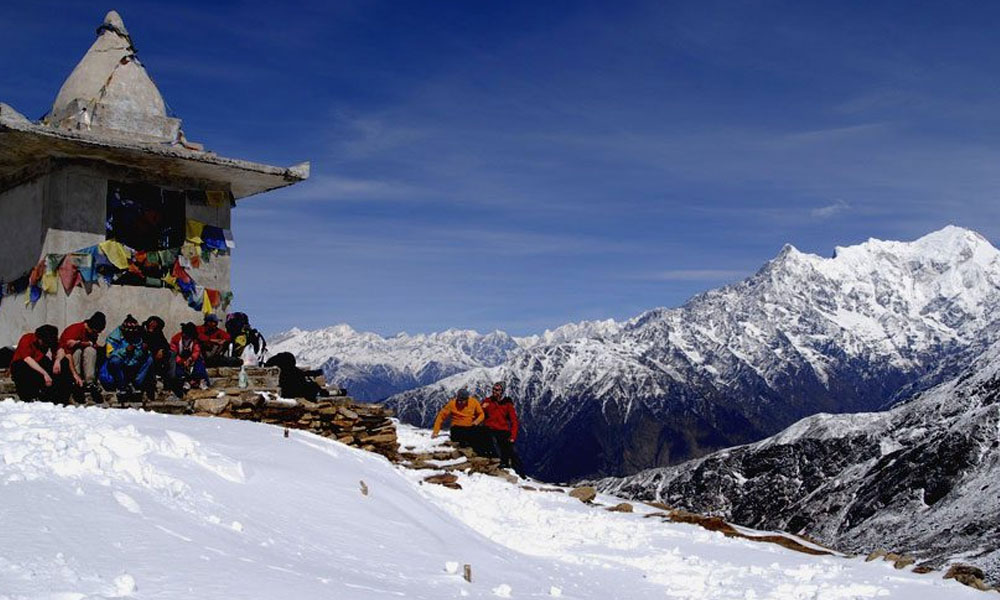
The Tamang Heritage Trail with Langtang Valley is a cultural and natural exploration of the northern Langtang region of Nepal. This trip is a great amalgamation of a trekking adventure and cultural exploration of the Tamang community .
The Tamang community is a unique ethnic group of Tibetan origins. They migrated to Nepal centuries ago and settled in its borders. You get to live close to the Tamang people and learn their culture up close. Along with the Tamangs, ethnic groups like Yolmus and Bothias also reside in the Langtang region. You get to explore the culture of all such ethnic groups during this trip.
Vistas of mountain ranges like Langtang Lirung, Langtang II, Kim Shun, Gangchempo, Dorje Lakpa, Jugal Himal, etc, are available on this trek.
LANGTANG VALLEY TREK
The Langtang Valley trek package is another regular Langtang route-based trek package you can do in March. It takes you to the most frequent trails of Langtang, filled with rhododendrons, birch, and junipers. You will pass through the Langtang National Park and reach heights like Tserko Ri and Kyanjin Ri.
Although shorter variations of the Langtang trek can be done in a week, this one is different. It is a 13 days long trek. We have customized a longer itinerary to allow you to visit more exciting destinations around the Langtang region. You will visit several beautiful landscapes of the Nuwakot and Rasuwa districts on this trek.
LANGTANG GOSAINKUNDA TREK
The Langtang Gosainkunda Trek is another adventure you can do as your Langtang trek in March. This trek combines the regular Langtang Valley trek with a trip to the revered Gosainkunda Lake as well. It will be both educational as well as adventurous. You will get to learn the religious and cultural significance of Gosainkunda and enjoy the aesthetic landscapes of the Langtang Valley.
LANGTANG HELAMBU TREKKING
Langtang Helambu trekking is a great way to explore the cultural heritage of the Langtang trails. The Helambu trails are specifically frequented as a way of getting familiar with the ethnic communities of the region. Communities of Tamangs, Bhotis, and Yolmus reside on these trails. You will get a deeper insight into the Tibetan-influenced Buddhist community of Nepal through this trek. The trek is around 10 days long and quite accessible.
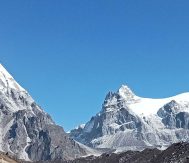
Kanchenjunga Trek In Spring (March | April | May)
Langtang trek in april.
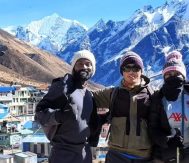
Prakash Devkota
Meet with Prakash Chandra Devkota, Managing Director and Team Leader
Mr. Devkota hails from the beautiful hilly region of Gorkha District. He started his career as a guide in 1997 and quickly became a reputed figure in the Tourism Industry because of his extensive experience. He has gathered impressive experience in all Trekking and Climbing Routes, such as Mera, Island, Lobuche, Ama Dablam etc.
His success also lies in his brilliant mind and hospitable nature. He is fully dedicated to providing excellent services and introducing innovative concepts. With more than 15 years of experience in trekking and expedition operations in Nepal, Tibet, India, and Bhutan, he has earned a reputation as a renowned leader in the field. He understands the importance of personalized service for creating memorable experiences for his clients and constantly seeks innovative company operation methods.
Mr. Devkota has always been an avid practitioner of eco-friendly tourism and has always promoted environmental conservation throughout his career. He motivates his staff to embrace eco-friendly tourism through responsible tourism practices.
Post Your Views

LANGTANG VALLEY TREK GUIDE

LANGTANG VALLEY TREK

Pin Tweet Share WhatsApp
THE ESSENTIAL GUIDE
In this guide we cover everything you need to know about the Langtang Valley Trek in Nepal. This includes a suggested itinerary, a route map, and a GPX download, as well as practical information about accommodation, costs, what to pack, independent vs. guided treks, and more. Along with this written guide, we also share ‘silent hiking’ films of the trail and a video guide to trekking the Langtang Valley. For detailed trail notes, check out our Langtang Valley Trekking Route Guide .
With lush forests and snow-capped peaks, the chance to reach nearly 5000 m without crossing a high mountain pass, and an opportunity to experience the culture of the Tibetan-speaking Tamang people, there are many things that appeal about a Langtang Valley trek. What’s more, the area is relatively close to Kathmandu, the transport options make it easily accessible, and the trek itself is not too long. Read on to discover more and start planning your own Langtang Valley trek.
TREK OVERVIEW LANGTANG TREK VIDEOS MAP & GPX DOWNLOAD ELEVATION PROFILE & 3D MAP SUGGESTED LANGTANG ITINERARY TREKKING SEASONS GETTING TO LANGTANG VALLEY LANGTANG VALLEY PERMITS TREKKING INDEPENDENTLY TREKKING WITH A GUIDE RECOMMENDED TREK AGENCY ACCOMMODATION ON THE TREK FOOD ON THE LANGTANG TREK SAFE DRINKING WATER WIFI/PHONE SIGNAL/CHARGING LANGTANG TREK COST & BUDGET WHAT TO PACK FOR THE TREK ALTITUDE AWARENESS TRAVEL INSURANCE ADD-ON TREKS GETTING TO NEPAL NEPAL TOURIST VISAS WHERE TO STAY IN KATHMANDU MAPS, GUIDEBOOKS, & APPS
TREK OVERVIEW LANGTANG TREK VIDEOS MAP & GPX DOWNLOAD ELEVATION PROFILE & 3D MAP SUGGESTED ITINERARY TREKKING SEASONS GETTING TO LANGTANG VALLEY LANGTANG VALLEY PERMITS TREKKING INDEPENDENTLY TREKKING WITH A GUIDE RECOMMENDED TREK AGENCY ACCOMMODATION ON THE TREK FOOD ON THE LANGTANG TREK SAFE DRINKING WATER WIFI/PHONE/CHARGING LANGTANG TREK COST WHAT TO PACK FOR THE TREK ALTITUDE AWARENESS TRAVEL INSURANCE ADD-ON TREKS GETTING TO NEPAL NEPAL TOURIST VISAS WHERE TO STAY IN KATHMANDU MAPS, GUIDEBOOKS, & APPS
*Some of the links in this post are affiliate links – if you purchase a product or service via these links, we may earn a small commission at no extra cost to you . This helps offset the cost of running this blog and keeps us travelling so that we can continue to produce great content for you. We greatly appreciate your support!*
LANGTANG VALLEY TREK OVERVIEW
- DISTANCE | 60 – 75 km (depending on day hikes)
- DURATION | 6 – 8 days (+ 2 days travel to/from Kathmandu)
- START/END | Syabrubesi (accessible by public bus (8+ hours) or private jeep (6 – 7 hours) from Kathmandu)
- PERMITS REQUIRED | Langtang National Park Fee 3000 NPR (payable at checkpoint near start of trek), TIMS NOT Required
- TREKKING SEASON | Best Seasons: Mid-March to April, October to Mid-November; Shoulder Seasons: Early-March, May, September, Mid-November to December; Avoid: June to August, January to February
- TREK DIFFICULTY | Moderate
- ELEVATION GAIN/LOSS | +/- 3420 metres (to Kyanjin Gompa only), +/- 5300 metres (including day hikes)
- MAX ALTITUDE | 3865 m at Kyanjin Gompa, 4965 m if trekking to Tsergo Ri
- GUIDE MANDATORY | Debatable: From April 1st 2023, trekking guides became mandatory for all foreign trekkers in Nepal, however the rule isn’t necessarily being enforced on the ground
- ACCOMMODATION | Teahouses/Guesthouses in villages along the trail
- TREK COST | $ 24 – 100 USD per person, per day (budget independent trekker to fully inclusive package)
- ADD-ON TREKS | Gosainkunda , Tamang Heritage Trail, climbing Yala Peak
- RECOMMENDED TREKKING AGENCY | Himalayan Masters , Quote HOGG5 for 5% discount
DISTANCE 60 -75 km
DURATION 6 – 8 days (+ 2 days travel to/from Kathmandu)
START/END Syabrubesi (accessible by public bus (8+ hours) or private jeep (6 – 7 hours) from Kathmandu)
PERMITS REQUIRED Langtang National Park Fee 3000 NPR (payable at checkpoint near start of trek), TIMS NOT Required
TREKKING SEASON Best Seasons Mid-March to April October to Mid-November Shoulder Seasons Early-March, May, September Mid-November to December Avoid June to August January to February
TREK DIFFICULTY Moderate
ELEVATION GAIN/LOSS +/- 3420 metres (to Kyanjin Gompa only) +/- 5300 metres (including day hikes)
MAX ALTITUDE 3880 m at Kyanjin Gompa 4965 m if trekking to Tsergo Ri
GUIDE MANDATORY Debatable: From April 1st 2023, trekking guides became mandatory for all foreign trekkers in Nepal, however the rule isn’t necessarily being enforced on the ground
ACCOMMODATION Teahouses/Guesthouses in villages along the trail
TREK COST $24 – 100 USD per person, per day (budget independent trekker to fully inclusive package)
ADD-ON TREKS Gosainkunda , Tamang Heritage Trail, climbing Yala Peak
OUR RECOMMENDED TREKKING AGENCY Himalayan Masters , Quote HOGG5 for 5% discount
LANGTANG VALLEY FILM & VIDEO GUIDE
Our ambient ‘silent hiking’ style films are perfect for getting a sense of the Langtang Valley trek. Our indepth video guide works well as a companion piece to this written guide and includes much more discussion of our own experience on the trek.
Watch the behind the scenes version of our Langtang Valley trek on Instagram stories
Watch the behind the scenes version of our langtang valley trek on instagram stories .
Langtang Valley Trek Stories
LANGTANG VALLEY TREK MAP & GPX DOWNLOAD
Langtang valley trek //.
MAP & GPX DOWNLOAD
We have created a detailed Langtang Valley trekking map to accompany this guide. The trekking route between Syabrubesi and Kyanjin Gompa, the day hiking routes to Kyanjin Ri and Tsergo Ri, and the stats for each section are all marked on the map. Villages and tea shops are also marked, as well as key sights and practical info such as checkpoints. Guesthouses as per our own trek itinerary are marked, including prices and services, phone numbers, and a copy of the menu. Photos are included with almost every pin. You can use the digital map online, or download it for offline use with a mapping app such as Organic Maps, Maps.me or Gaia GPS. This is very helpful for navigation assistance on the trail and allows you to quickly pinpoint key places and services along the way and calculate distance and elevation differences between destinations. Note that while we’ve tried to be as accurate as possible when recording and mapping the route, changes on the ground are inevitable, and this map should not be solely relied upon for navigation.
LANGTANG VALLEY TREK ELEVATION PROFILE
ELEVATION PROFILE
The image below shows the elevation profile of our own route for the Langtang Valley trek, going via Sherpagaon on the way up, including the day hikes to Kyanjin Ri (4586 m) and Tsergo Ri (4965 m), and ending at the Gosainkunda turn-off on the way down. Elevation is displayed in metres and distance in kilometres.

3D ROUTE MAP
Watch our 3D relief map video of the route to visualise the geography of the Langtang Valley and get a sense of the trek.
LANGTANG VALLEY TREK ITINERARY
In the table below, we have outlined what we feel is an ideal Langtang Valley trek itinerary. This is an 8 day trek starting and ending in Syabrubesi, plus 2 days travel to and from Kathmandu.
Many Langtang Valley trek itineraries offered by trekking agencies, or outlined in other blog posts online, suggest a 6 day trek plus 2 travel days. Although that is certainly possible, when you consider factors like altitude and acclimatisation, day hikes, and alternative routes, we feel an 8 day trekking itinerary is better and will outline the reasons for this below.
The times given for each day are an average and don’t include time for lunch or other significant stops, such as tea/coffee breaks. You may of course be faster or slower than these times, depending on a variety of factors such as your pace, desire to take photos, and interest in things along the way.
If viewing on a mobile device or tablet, scroll to the right to see the full table or flip your screen to landscape mode.
*You could stop earlier at Ghodatabela (~ 3000 m) although the accommodation is more basic, or continue to Langtang if you are already acclimatised (which will save you a day)
** You could continue 30 minutes to Rimche for better views
ALTITUDE AND ACCLIMATISATION
Most Langtang Valley trek itineraries suggest trekking from Syabrubesi to Lama Hotel on Day 1 (1500 m to 2485 m), from Lama Hotel to Langtang or Mundu on Day 2 (2485 m to 3450 m), and then from Langtang or Mundu to Kyanjin Gompa on Day 3 (3450 m to 3865 m). From Kyanjin Gompa, two of the absolute highlights of the Langtang Valley trek are the day hikes to Kyanjin Ri (4586 m) and Tsergo Ri (4965 m) on Days 4 and 5.
If you are already acclimatised (ie. you have been at altitudes of 3500 m + within the previous week), then we don’t see a problem with this itinerary. However, if you are not yet acclimatised, we feel the speed of ascent to 3500 m and above puts hikers at an unnecessary risk of experiencing adverse reactions to altitude.

Ascending too quickly to Langtang village (3450 m) and above can put trekkers at risk of experiencing symptoms of altitude sickness

Everybody reacts to altitude differently. There’s every chance that you may feel fine by the time you reach Langtang or Kyanjin Gompa, but there’s also a chance that you may be suffering from headaches, nausea, fatigue, loss of appetite, or other symptoms of AMS (Acute Mountain Sickness) because the speed of ascent has been too fast for your body to properly acclimatise. At best, if your symptoms are relatively mild, you may feel pretty miserable and too unwell to tackle the day hikes to Kyanjin Ri and/or Tsergo Ri, missing out on some of the best views and experiences on the Langtang Valley trek. And at worst, you could put yourself at risk of developing HAPE or HACE, both life-threatening conditions.
Therefore, we feel that it is more sensible to follow medical advice and aim to sleep no more than 300 – 500 metres higher than the previous day when at altitudes of 2500 m and above . As such, our suggested itinerary includes a night at Thangshyap (3190 m) on Day 2 , before ascending to Langtang at 3450 m on Day 3, and finally Kyangjin Gompa at 3865 m on Day 4. This is the itinerary we followed and I (Kim) suffered almost no symptoms of AMS during the trek, having suffered from AMS at similar altitudes in the past when ascending more rapidly.
DAY HIKES TO KYANJIN RI AND TSERGO RI
Many Langtang Valley trek itineraries include a 2 night stay at Kyanjin Gompa , however we would recommend staying 3 nights instead. This gives you plenty of time to rest and further acclimatise on the day you arrive at Kyanjin Gompa, then do the day hike to Kyanjin Ri the following morning, and the day hike to Tsergo Ri the morning after that.
These two day hikes are absolute highlights of the trek. By planning morning ascents you’ll give yourself the best possibility of clear views, and by spreading them out over two days you will be less rushed and better acclimatised.

Climbing Tsergo Ri in the morning gives you the best chance of having clear mountain views

ALTERNATIVE ROUTES ON THE WAY UP & DOWN THE LANGTANG VALLEY
The Langtang Valley trek is largely an up and down the valley route, following the same trail from Syabrubesi to Kyanjin Gompa and back again. Between Rimche and Kyanjin Gompa there is no way to avoid this, however between Syabrubesi and Rimche there is an option to take an alternative route on the way up and/or down , which we think is far more interesting than simply repeating the same trail.
Most Langtang Valley trek itineraries suggest hiking from Syabrubesi to Lama Hotel on Day 1, and repeating this route in reverse on Day 6. The route follows the Langtang Khola (River), going via Bamboo. However, for a change of scenery and chance to visit more local villages in the region, we’d suggest taking an alternative route from Syabrubesi to Sherpagaon on Day 1.
Instead of climbing gradually up the valley and ending the day with a steep climb to Rimche or Lama Hotel, you’ll start the day with a steep climb up through forest to Khangjim and Surka. From here you’ll follow a gently undulating trail for the rest of the day, working your way around the hillside through attractive forest sections and across open areas with fantastic views. Sherpagaon itself is a lovely village with a mix of guesthouses and local homes, and the views from here are great. The following morning it takes less than 1.5 hours to trek to Rimche (again with fantastic views), where you’ll rejoin the classic Langtang Valley trekking route.

High above the Langtang Valley floor, Sherpagaon (2563 m) has impressive views of the surrounding mountains

Sherpagaon (2563 m) has impressive views of the surrounding mountains from its position high above the Langtang Valley floor
If for whatever reason you would prefer not to trek the alternative route to Sherpagaon on Day 1, we would at least suggest overnighting at Rimche instead of Lama Hotel. The views from Rimche are much better than at Lama Hotel (a riverside location tucked into a narrow valley), plus it’s more interesting to stay at different places on the way up and down the valley.
If combining the Langtang Valley trek with the Tamang Heritage Trail, note that you’ll trek via Sherpagaon anyway.
OUR RECOMMENDED TREKKING AGENCY
We partnered with Himalayan Masters for our Langtang Valley, Gosainkunda, and Everest Three Passes treks, and found them to be professional and committed to a high level of service
To enquire about booking your own trek, get in touch via email at [email protected] and mention the code HOGG5 to get a 5% discount off the cost of your trip
LANGTANG VALLEY TREKKING SEASON
TREKKING SEASON
Like many treks in Nepal , the peak seasons for trekking in the Langtang Valley are Mid-March to April and October to Mid-November . While nothing is guaranteed, as weather patterns are becoming increasingly unpredictable in Nepal and across the world, these months typically offer the best chance of clear skies mixed with warmer temperatures. In autumn, expect less wind and higher temperatures, while in late March and April, blooming rhododendrons and other spring flowers are a beautiful sight at lower elevations.

Clear, sunrise mountain views in late March from the rooftop terrace of the Holyland Guesthouse in Kyanjin Gompa (3865 m)

The shoulder seasons of Early-March and Mid-November to December can be quieter and colder, typically with clear weather, especially in December. In late May and early September there is a higher chance of early or lingering monsoon rains and cloudy skies.
The summer months of June, July, and August coincide with the monsoon season . Trekking during this period means lots of walking in rain, poor visibility with clouds obscuring the surrounding mountains, muddy trails, and leeches. The landscape is lush and green though, and some rare mushrooms and colourful wildflowers can be spotted on the hillsides. Many guesthouses close during this time, although there is usually at least one open in each settlement.
The winter months of January and February are considered too cold by most to trek, and as is the case during the summer monsoon, many guesthouses close for these two months. If you don’t mind cold mornings and evenings, December is a good option for clear skies and sunny days.
HOW TO GET TO/FROM THE LANGTANG VALLEY TREK TRAILHEAD
HOW TO GET TO AND FROM THE TRAILHEAD
Syabrubesi is the trailhead for the Langtang Valley trek , a small town approximately 115 km north of Kathmandu. You can get there by public bus or private jeep and the journey takes around 5.5 – 9 hours depending on your mode of transport. The road is narrow and twisting at points with occasional steep drop-offs, and includes some bumpy sections on rough non-tarmac roads.
BUS FROM KATHMANDU TO SYABRUBESI
Buses from Kathmandu to Syabrubesi depart from Machhapokhari (near the New Bus Park / Gongabu Bus Park) between 6am – 8am every day. They depart from Syabrubesi to Kathmandu between approximately 6am – 7am. Tickets cost 1000 NPR per person, one way. The journey takes around 8 – 9 hours, although it’s possible it can take longer depending on road conditions that day. In Kathmandu, you can arrive early and purchase a ticket on the same day, or head to the bus stop the day before to buy your ticket. In Syabrubesi, you can ask your guesthouse owner to book your seat for the following morning.

A typical bus plying the route between Kathmandu and Syabrubesi

The bus will stop a couple of times during the journey for food and a toilet break. It’s a pretty uncomfortable trip, with no air conditioning, dust and fumes blowing in the windows, and often music blasting through the speakers for hours on end. Drivers can tear along the road at high speed, which can be potentially dangerous and a little scary.
You can get a taxi between Thamel (or elsewhere in Kathmandu) and Machhapokhari for about 500 NPR. If you hail a taxi on the street, be sure to agree the price with your taxi driver at the start. You can also use a taxi app such as Pathao ( iOS / Android ).
PRIVATE JEEP FROM KATHMANDU TO SYABRUBESI
A private jeep from Kathmandu to Syabrubesi costs approximately $170 one way. It can seat up to 7 people plus a guide and driver (with your bags strapped to the roof). The price can be shared between all passengers. The route is the same as by bus, but the journey time is usually significantly less at around 5.5 – 7 hours, depending on the road conditions that day. You will likely stop for lunch and a toilet break along the way, and you have more flexibility to stop for photos, etc, whenever you like.

A private tourist jeep enroute to Syabrubesi
If you are organising your Langtang Valley trek via a trekking agency, they will be able to organise a private jeep for you. Otherwise, you can ask at your hotel or at local travel agencies. A private jeep will pick you up at your accommodation, offering door-to-door service.
It is much more comfortable to travel by private jeep than bus, and safer too.
SEE MORE FROM NEPAL

Everest Base Camp Trek: The Essential Guide

Everest Three Passes Trekking Route Guide

Everest Three Passes Trek: The Essential Guide

Gosainkunda Helambu Trekking Route Guide

Gosainkunda Trek: The Essential Guide

Langtang Valley Trekking Route Guide

Langtang Valley Trek: The Essential Guide

What To Pack For Trekking In Nepal

Upper Mustang Trek: The Essential Guide

Upper Mustang Trek Itinerary: A Day By Day Account

Annapurna Circuit Trek: The Essential Guide

Annapurna Circuit Trek Itinerary: A Day By Day Account

Manaslu Circuit Trek: The Essential Guide

Manaslu Circuit Trek Itinerary: A Day By Day Account
Langtang valley trek permits and fees.
TREKKING PERMITS & FEES
To trek in the Langtang Valley you will need to pay the Langtang National Park entrance fee , which is 3000 NPR (1500 NPR for SAARC nationals, 100 NPR for Nepalis). You can pay it on the way to Syabrubesi, at the NP entrance shortly before Dhunche, where all public and private transport have to make a stop. You need your passport and the fee in cash, in Nepalese rupees (NPR). Be sure to hold onto your receipt as you need to show it at checkpoints along the route.
Formerly, getting a TIMS card was also necessary, but this hasn’t been the case for a couple of years and when we trekked in March 2023, it was not required. Whether this situation will continue, we can’t say, but since 1 April 2023 a TIMS (Trekkers’ Information Management System) card can only be obtained by a representative of a registered trekking agency.
Your bag will be searched at the same checkpoint where your NP permit is issued, and the police will specifically ask if you have a drone with you. These are not permitted, unless you have the relevant permission and documents proving it.
TREKKING THE LANGTANG VALLEY INDEPENDENTLY
TREKKING INDEPENDENTLY
The Langtang Valley is not a restricted area, and as such, a guide (historically) has not been mandatory. However, the Nepal Tourism Board announced on March 9 2023 that as of April 1 2023, all international trekkers in Nepal are required to hire a licenced trekking guide and obtain the TIMS card through an authorised trekking agency registered with the government of Nepal. This abrupt announcement led to much confusion and debate about where such a rule applies, and whether it is being enforced on the ground.
A common interpretation of the rule is that trekking routes where TIMS is not required are exempt from the mandatory guide rule. The Langtang Valley falls under this category (along with treks in the Khumbu region, such as Everest Base Camp or Everest Three Passes).
From our own experience trekking in Nepal in March and April 2023, we can confirm that independent trekkers are still trekking in the Langtang Valley without guides. They are passing through police and national park checkpoints without any problems. However, the situation can of course change, so it’s best to seek out on-the-trail updates from independent trekkers on active Facebook groups, forums, etc.
PROS AND CONS OF INDEPENDENT TREKKING
Assuming the situation stays the same, and hikers continue to be able to trek independently in the Langtang Valley, here are a few thoughts on the pros and cons of independent trekking here.
This is the cheapest way to trek in the Langtang Valley. You won’t have to pay for anything extra beyond your daily food and accommodation costs, permit fee, and transport to/from the trailhead.
You have complete freedom and flexibility. You can choose how long to trek for each day, what route to take and where to stay. If you like somewhere, you can choose to stay an extra day without having to consult anyone else or consider their needs.
It is easier to enjoy a bit of ‘alone time’ on the trail. If you are trekking with a guide or group it can be harder or more awkward to branch out and enjoy walking alone with your thoughts.
You’ll likely have more interaction with locals. If you are trekking with a guide it is common practice for them to deal with everything at your guesthouse and act as a go-between. It’s normal for your guide to take your order, bring out your food, and settle up the bill on your behalf, which means you may have little interaction with the owner or staff yourself. But, you’ll be doing all that by yourself if you trek independently.
With freedom and flexibility comes more responsibility and the need to do more research, preparation and daily planning. You will need to spend time organising things both on and off the trail. You will need to sort out all the logistics like your permit, transport, and accommodation by yourself, and be confident in your route planning and navigation.
You are more vulnerable in an emergency situation or if you get sick. This is especially true if you are trekking solo. You should prepare as best you can with a comprehensive medical kit, emergency contact numbers at the ready, and ideally an emergency communication device like the InReach Explorer .
In peak trekking season you may find it harder to get a room. Many guesthouses prefer bigger groups with organised companies and will give preference to them over independent solo trekkers or those in small groups. Guides with existing local contacts often call ahead to book rooms, something which isn’t as easy for independent trekkers with no personal contacts.
You miss out on all the insights a knowledgeable, English speaking guide can offer. Your understanding of the region, and Nepal in general, is likely to be much broader after spending a week or more in the company of a Nepali guide rather than going it alone.
This is the cheapest way to trek in the Langtang Valley. You won’t have to pay for anything extra beyond your daily food and accommodation costs, permit fee, and transport to/from the trailhead.
You have complete freedom and flexibility. You can choose how long to trek for each day, what route to take and where to stay. If you like somewhere, you can choose to stay an extra day without having to consult anyone else or consider their needs.
It is easier to enjoy a bit of ‘alone time’ on the trail. If you are trekking with a guide or group it can be harder or more awkward to branch out and enjoy walking alone with your thoughts.
TREKKING THE LANGTANG VALLEY WITH A GUIDE (AND PORTER)
TREKKING WITH A GUIDE (AND PORTER)
Many people choose to trek the Langtang Valley with a guide, and often with a porter too. Whether you’re an inexperienced or seasoned trekker, this is a great option. Not only can an experienced guide be invaluable when it comes to your safety, a guide can also enrich your experience on the trail, giving you the opportunity to learn much more about the history, culture, and geography of the land. Hiring a porter to carry your bag will put less strain on your body, making your trek much easier and perhaps allowing you to better enjoy the surroundings. Hiring a guide and/or porter also provides jobs and supports the trekking tourism economy.
If you are trekking the Langtang Valley with a guide you will usually meet them in Kathmandu prior to your trek, travel to the trailhead together, and then return to Kathmandu together at the end. If you’re trekking with a porter, they may also travel with you from Kathmandu, or you may meet them locally at the start of the trek.

A guide can help with many practical things and also provide insight into local culture and customs

A guide can help with many practical things, but also provide insight into local culture and customs
During your trek a guide will stick with you on the trail, suggest the best spots to stop for lunch, and take you to their recommended overnight accommodation. At busy times, they may call ahead and pre-book a room for you. They will act as your go-between at each guesthouse, arranging your room, taking your food orders, and settling the bill. It’s normal for a guide to run through the following day’s itinerary each evening, giving you an overview of the trail, trekking time, and any other relevant information. Your guide will always be around at your guesthouse, but they won’t stick by you constantly. You will have plenty of freedom to hang out in your room or the dining room, read your book, chat with other guests, play cards, etc. Guides sleep and eat in the same guesthouse as you, always in a separate room.
Porters often trek at their own pace, meaning you won’t always be with them on the trail. It’s common for you to pack your porter bag before breakfast and have it ready for them, and for your bag to already be in your room when you arrive at your guesthouse for the evening. In the Langtang Valley, porters will sleep and eat at the same guesthouse as you, again in a separate room.
HOW TO ORGANISE A LANGTANG VALLEY TREKKING GUIDE (AND PORTER)
The easiest way to arrange a trekking guide is via a trekking agency . You can book an inclusive Langtang Valley trekking package which covers your transport, permit, guide (and porter), accommodation costs, and three meals a day. Alternatively, you can pay for a guide (and porter) only, and then pay-as-you-go for your accommodation, food, transport, and permit.
Choosing a trekking agency is often the trickiest part as there are thousands of registered agencies in Nepal and the quality of service can vary greatly between them. Many trekkers will choose a guide or agency based on a trusted recommendation from a friend or fellow trekker, and this is a good approach. An alternative option is to visit a number of trekking agencies in person when you arrive in Thamel (Kathmandu) to get a feel for a company that you like, or to contact agencies online in advance.
Having trekked with three different agencies and three different guides on three visits to Nepal, our best experience has been with Himalayan Masters . We partnered with them for our Langtang Gosainkunda and Everest Three Passes treks, and found them to be professional, committed to a high level of service, and competitively priced.
We really appreciate the fact that Sandip, the agency owner, is super flexible when it comes to itinerary amendments that don’t just follow the norm (eg. including Sherpagaon and Thangshyap). He’s also a problem solver and what we’d call a real ‘go-getter’, a trait that’s highly valuable to his clients, whether he’s retrieving a swallowed bank card from a Thamel ATM in record time or fixing logistical issues when things go wrong last minute at 2am (both real life examples experienced by us or fellow Himalayan Masters clients we met on the trail!).
We’d also highly recommend our Himalayan Masters guide, Govinda Rai, who we spent over a month trekking with in Nepal. He is very professional, taking care of everything you would expect from a guide, but also tailoring his suggestions and advice specifically to his clients, resulting in a more enjoyable trekking experience overall. We quickly came to trust his choices for lunch stops and accommodation as we felt they were always among the best options available. His knowledge of the trail was excellent, and his advice on trekking times for each day (based on our own pace) was spot-on, making it easier for us to plan our itinerary and make on-the-go changes as we saw fit. And on a personal level, we found Govinda to be easy-going, friendly, and an all-round great person to spend time with.

Govinda, o ur Himalayan Masters guide, enjoying a masala tea break at Kyanjin Ri (4586 m)

Govinda, our Himalayan Masters guide, enjoying a masala tea break at Kyanjin Ri (4586 m)
We also met a number of other Himalayan Masters guides while out on the trail, including Dipak who we chatted with lots, as our Langtang Valley trek itinerary coincided for three nights at the same guesthouses. From our interactions with Dipak, and positive feedback shared over dining room chats with his two trekking clients, we’re confident that Himalayan Masters are working with great guides across the board.
To discuss your Langtang Valley trek, get in touch with Himalayan Masters at [email protected] , and you’ll get a 5% discount off your trip cost by using our code HOGG5 .
CHALLENGE YOURSELF ON THE EVEREST THREE PASSES TREK

PLAN YOUR TREK WITH OUR GUIDE

TRAIL NOTES AND OTHER USEFUL INFO
ACCOMMODATION ON THE LANGTANG VALLEY TREK
Accommodation.
Accommodation on the Langtang Valley trek is in the form of guesthouses, also known as teahouses or lodges. These can be found regularly along the trail in local villages (Langtang/Kyanjin Gompa), in guesthouse only settlements (Lama Hotel/Bamboo), and occasionally as stand alone guesthouses such as Riverside (at Gumnachok). In general, the standard of accommodation in the Langtang Valley is quite high, as many of the guesthouses have been newly built following the devastating earthquake of 2015. The main exception is Lama Hotel, where all the guesthouses are old and the facilities are more basic. The guesthouses at Rimche, Gumnachok, and Ghodatabela are also more basic.

There are many guesthouses at Kyanjin Gompa

Guesthouses provide both accommodation and meals, and you are expected to eat dinner and breakfast at the guesthouse you sleep at. Lunch is usually at a different guesthouse along the trail, unless you arrive early at your destination for the day.
Rooms are basic, but comfortable. They usually have two single beds, although some places will have rooms sleeping three, or just one. Beds always have a sheet-covered mattress, a pillow with a pillowcase, and a blanket. We have seen plenty of bedding hanging out to dry which would suggest sheets, pillowcases, and blankets do get washed, however there is no guarantee that they will be freshly laundered for each guest. Personally, we always trek with our own sleeping bag and silk liner, using the blanket over our sleeping bag for extra warmth at higher altitudes.
There is always a light in the room, powered by mains electricity or solar. Often there is a small table, some hooks on the wall, and a bin, and there is almost always a window with curtains. Some guesthouses will have charging sockets in the room, but this is not always the case. There is no heating in guesthouse rooms, only ever in the main dining room.

A better-than-average room in the Langtang Valley, this one at the Holyland Guesthouse, Kyanjin Gompa

TOILETS AND SHOWERS
There are often rooms with attached bathrooms (ensuite) available, but shared bathrooms are also common. If you have an attached bathroom this will usually have a toilet, sink (not always), and shower. Shared bathroom facilities usually consist of separate toilets and shower rooms, with a sink outside, although sometimes there is no dedicated sink and you’ll need to wash your hands/brush your teeth at an outdoor tap.
Toilets may be sit-down or squat style. Toilet paper is never provided , so you’ll need to pack your own and buy more as you go. Do not flush toilet paper down the toilet, always put it in the bin next to the toilet (this may be an old tin can, a cardboard box, a plastic container, or such like.) Sit-down toilets will likely have an automatic flush, although at higher altitudes in cold weather, the pipes can freeze and you may need to flush the toilet using a bucket of water. Squat toilets never have an automatic flush; you always need to flush using the scoop and bucket of water provided.
Showers are generally solar heated, although sometimes a gas shower is available (usually for a fee). If neither are available, guesthouses can provide a bucket of hot water for a fee, which you can use to wash.
DINING ROOM
Every guesthouse has a dining room where you can eat your meals, drink tea, and hang out. There are usually tables and fixed benches around the perimeter of the room, with plenty of movable chairs too. Expect to see a display cabinet of snacks and sundries for sale (eg. chocolate bars, biscuits, Pringles, toilet paper, soft drinks), and often a Buddhist prayer altar, too. The dining room is the only room with a stove, usually lit in the late afternoon/early evening as the sun goes down and it starts to get cold, making it nice and cosy.

A traditional and typical teahouse/guesthouse dining room, complete with stove, this one at the Ganesh View Hotel, Rimche

A typical, traditional teahouse/guesthouse dining room, complete with stove, this one at the Ganesh View Hotel, Rimche
The kitchen is usually pretty cosy too, as most food is cooked over a wood fire stove. In smaller guesthouses, or when it’s not too busy, you might be invited to sit in the kitchen to stay warm (often at breakfast when the dining room is still cold).
COME JOIN US ON INSTAGRAM

FOOD ON THE LANGTANG VALLEY TREK
FOOD AND DRINKS
Every guesthouse serves meals and you are expected to eat dinner and breakfast at the guesthouse you are sleeping at, otherwise the cost of the room will be much higher. There are also a few bakeries, coffee shops, and tea shops along the route where you can pop in for treats.
Every guesthouse has a menu, and the options for breakfast, lunch, and dinner at each are almost identical. Prices tend to increase the higher you go as food and fuel needs to be transported further via porters or pack mules, resulting in additional costs.
LANGTANG VALLEY SAMPLE MENU
Click into the slider to see a typical example of a menu in the Langtang Valley. This menu is from Summit Guesthouse in Thangshyap (3190 m) and the prices are similar to those in both Langtang (3450 m) and Kyanjin Gompa (3865 m).

Breakfast dishes include porridge, muesli, eggs, Tibetan bread (a kind of fried dough), chapati (flat, unleavened bread), and pancakes . Honey, jam, peanut butter, apples, chocolate sauce, and yak cheese are common accompaniments on offer.
Breakfast options are generally priced between 300 – 600 NPR (approx $2 – $5 USD) , depending on location and item.
LUNCH AND DINNER
Dal Bhat is a ubiquitous Nepali meal , eaten twice a day by many locals. It consists of plain rice, a lentil soup, veggie curry, papad (poppadom), and some sort of pickle. Depending on the veggies available, you may also get saag (spinach) or something similar. Everything is served on a big plate, and you can get free refills of each item (apart from the papad!).

There are always free refills of rice, dal and curry with Dal Bhat , giving rise to the familiar catchphrase ‘Dal Bhat power 24 hour’

With Dal Bhat , t here are always free refills of at least the rice, dal and curry, giving rise to the familiar catchphrase, ‘Dal Bhat power 24 hour’
Other options include various soups (some fresh, some from a packet), basic pasta dishes (usually fried), fried rice, fried noodles, boiled or fried potatoes, and momos (steamed or fried dumplings). Ingredients more or less revolve around eggs, cheese, potatoes, carrots, cabbage, onion, garlic, and tinned tuna.
Meal options are generally priced between 350 – 700 NPR (approx $3 – $6 USD) , depending on location and item.
Various hot drinks include black/green/milk/masala/mint/ginger lemon honey tea, instant coffee, and hot chocolate . You can order a single cup or a small/medium/large thermos (called ‘pots’). Cups or pots of hot water are also available.
Seabuckthorn juice is commonly available, served either hot or cold. Seabuckthorn grows locally and is harvested and turned into juice in autumn, making this the best season to try it, although it is often still available in spring.
Soft drinks like Coke, Fanta, and Sprite are available to buy at each guesthouse shop, along with bottled water (although we recommend purifying tap water to drink instead of buying bottled water). You can also buy beer (bottles/cans) and small bottles of Khukuri rum , however it’s best to avoid alcohol at higher altitudes as this dehydrates you and makes acclimatisation more difficult.
Hot drinks are on average about 150 NPR per cup ($1 USD) , or up to 1500 – 2000 NPR per large pot ($11 – $15 USD). Soft drinks are about 400 NPR ($3 USD), bottled water is about 350 NPR ($2.5 USD) , and beer is about 800 NPR ($6 USD) .
SNACKS AND DESSERTS
You can buy chocolate bars, biscuits, and Pringles at most guesthouse shops. Other snacks like popcorn, papad, prawn crackers, yak cheese, or french fries are often available on the menu, and you can usually get desserts like apple, Snickers, or Mars spring rolls/fritters/pies/momos.
Prices for Snickers/Mars are around 300 NPR ($2 USD) , packets of biscuits start from 100 NPR ($.80 USD) , and Pringles are about 600 NPR ($5.5 USD) . Desserts range from 300 – 600 NPR ($2 – $5.5 USD) .

A typical example of what’s on sale in Langtang Valley guesthouses

A fairly typical example of what’s on sale at guesthouses in the Langtang Valley
BAKERIES AND COFFEE SHOPS
Proper coffee machines are starting to make an appearance in the upper reaches of the Langtang Valley, brought to the area at much expense via helicopter. A real americano goes perfectly with a baked goodie such as a brownie, cinnamon bun, or slice of apple pie, available at bakeries in Langtang and Kyanjin Gompa, as well as a few other select spots. Our personal favourite is the Himalayan Bakery in Langtang, run by friendly Mapsing.
Coffee costs around 300 – 400 NPR ($2 – $3 USD) , and bakery treats are usually around 400 – 600 NPR ($3 – $5.5 USD) .
SAFE DRINKING WATER ON THE LANGTANG VALLEY TREK
SAFE DRINKING WATER
Bottled water is available to buy along the trail, however a much better option (environmentally and economically!) is to treat tap water and drink this instead. Come prepared with a refillable water bottle and/or water bladder , and a method of treating the water to make it safe for drinking.
The cheapest option is to use water purification tablets . You drop these into the water, wait about 30 minutes, then your water is safe to drink (although it can have a strange taste due to the active chemical in the tablets, ie. iodine or chlorine). You can buy these easily in supermarkets and outdoor shops in Kathmandu.
Our preferred method of water sterilisation is to use a Steripen Ultra in conjunction with a filter . The filter screws onto the top of our Nalgene water bottle and ensures any weird floaty bits or particulates are filtered out. Then we stick the Steripen into 1 litre of water for 90 seconds and the UV light sterilises the water, making it safe to drink immediately and with no change to the taste. The Steripen Ultra model is rechargeable via USB, so we can charge it using our solar panel, power bank, or an electrical socket. We always carry water purification tablets as an emergency backup, although we’ve never had to use them during 6+ years of using the Steripen.
Other common sterilisation methods include a Lifestraw , Grayl , Water-To Go , or a squeeze filter system .
THINKING ABOUT THE MANASLU CIRCUIT TOO?

DAY BY DAY ACCOUNT
WIFI, PHONE SIGNAL, AND CHARGING ON THE LANGTANG VALLEY TREK
WIFI, PHONE SIGNAL, AND CHARGING
Nepal Telecom SIM cards work best in the Langtang Valley , with a phone signal and (weak) data connection available for most of the trek up to Rimche, and between Ghodatabela and Kyanjin Gompa. NCell doesn’t get much of a phone signal or data connection beyond Syabrubesi.
WiFi is available at a number of guesthouses and bakeries along the trail, although this is often via a hotspot connection to a staff member’s phone. The more people connected, the slower the internet service. There is often a charge of 300 NPR ($2 USD) for unlimited use per stay at a guesthouse . There is no WiFi or phone signal at Lama Hotel or other locations in the narrow valley area, such as Riverside/Gumnachok. Poor weather conditions can affect WiFi connectivity, with no guarantees that it will be working 24/7. In short, you can’t rely on having an internet connection every day, however you will be able to access the internet regularly throughout the trek.

In a deep and narrow section of the Langtang Valley, there is no wifi, data connection, or phone signal at Lama Hotel

There is no wifi, data connection, or phone signal at Lama Hotel, a collection of older guesthouses in a deep, narrow section of the Langtang Valley
Many guesthouses run off solar power and free in-room charging isn’t always available, although we had sockets in our room at four out of six guesthouses on the Langtang Valley trek. At our guesthouse in Lama Hotel, solar power was so limited that charging wasn’t possible at all, and in Thangshyap, charging in the dining room was possible for a fee per device.
Generally speaking, if there are no sockets in your room then you will be able to charge in the dining room , but there may be a fee per device (eg. 150 NPR (~$1 USD) for a phone or 250 NPR (~$2 USD) for a camera battery.
It’s a good idea to pack a power bank (or two, depending on your usage), enabling you to charge your phone and batteries on-the-go. You can charge your power bank overnight in your room or in the dining room when you don’t need it. A portable solar panel can also be useful although it’s certainly not necessary and will add extra weight to your pack; not worth buying unless you will use it on other treks and outdoor adventures in the future.
LANGTANG VALLEY TREK COST AND BUDGET
COSTS AND BUDGET
The cost of your Langtang Valley trek will very much depend on how you choose to trek (whether independently or with a guide), and how many people you share the costs with . The cheapest option is to trek independently as a duo, opting to travel by public transport and sleep in rooms with shared bathroom facilities every night. Trekking with a guide and porter as part of an inclusive trek package, taking private transport, and sleeping in rooms with attached bathrooms wherever possible, will cost more.
Below is a breakdown of the average costs for a Langtang Valley trek.
LANGTANG VALLEY TREK COSTS
3000 NPR ($23 USD) taxi to bus station + public bus (per person return)
$340 USD private jeep return (cost can be shared between up to 7 people)
3000 NPR ($23 USD) per person (1500 NPR for SAARC nationals/100 NPR for Nepalis)
Twin Room w/ attached bathroom, average cost 1000 NPR ($7.50 USD) per night (for 1 or 2 people)
Twin Room w/ shared bathroom, average cost 500 NPR ($3.80 USD) per night (for 1 or 2 people)
3 x meals with hot drinks, average 2500 NPR ($19 USD) per person, per day
Extra Snacks (chocolate bars, biscuits, soft drinks) average 1000 NPR ($7.50 USD) per person, per day
For a detailed look at prices, check out the Langtang Valley menu in the food section above
WIFI/CHARGING
Average 300 NPR ($2.30 USD) per person, per day
$20 – $30 USD per day (cost can be shared with up to 5 people)
$18 – $25 USD per day (max weight carried 25 kg, cost can be shared between 2-3 people)
Expected by guides and porters
Recommended minimum amount is:
500 NPR ($4 USD) per person, per day for guides
400 NPR ($3 USD) per person, per day for porters
For larger groups, tip 10% of total tour cost to be split between all trekking staff
3000 NPR ($23 USD) per person (1500 NPR for SAARC nationals, 100 NPR for Nepalis)
In summary, the average cost for an 8 – 10 day Langtang Valley trek is about $24 per day for a budget trekker sharing a room with one person and trekking independently, with no guide or porter. A fully inclusive package is about $100 per day . Other considerations, such as trekking with a guide but no porter, buying lots of snacks, or staying in more expensive rooms, would see your daily budget falling somewhere between these two figures.
MONEY AND ATMs ON THE LANGTANG VALLEY TREK
You must bring all the cash you need from Kathmandu , in Nepalese rupees. There is an ATM in Kyanjin Gompa, but it wasn’t working when we visited and by all accounts it can’t be relied upon. It’s a good idea to have a mixture of large and small bills, as guesthouses, teashops, and bakeries don’t usually have change.
ATMs in Nepal have maximum withdrawal limits (usually 35,000 NPR), and your bank card is also likely to have a max daily withdrawal limit. Be sure to plan ahead and start withdrawing cash a few days in advance if you need to carry a lot.
PLAN YOUR TREK ON THE ANNAPURNA CIRCUIT

WHAT TO PACK FOR THE LANGTANG VALLEY TREK
WHAT TO PACK
We have outlined packing recommendations for a Nepal trek in our What To Pack For Trekking in Nepal guide, so be sure to check this out for a complete rundown. You can also download our Nepal Packing List , a useful online or printable checklist for your trek.
In a nutshell, you will need clothes suitable for trekking in warm and cold conditions and for changing into in the evening, gear to use on the trail and at your guesthouse, any relevant electronics, hygiene and first aid items, and a few essentials such as cash, emergency contact details, travel insurance documents, and your passport.
If you arrive in Nepal without the appropriate gear for trekking, you can buy and/or rent everything you need in Kathmandu (either fake or genuine items). Some trekking agencies provide gear free of charge to clients. Himalayan Masters , for example, provide sleeping bags, down jackets, trekking poles, water bottles, purification tablets, caps, and T-Shirts, plus a duffel bag if you’re trekking with a porter.
You can leave any excess luggage at your hotel in Kathmandu and pick it up when you return from your trek.

WHAT TO PACK FOR YOUR TREK
ALTITUDE AWARENESS
Acute Mountain Sickness (AMS) , also commonly referred to as Altitude Sickness, can affect people at heights of around 2500 m and above . It can affect anyone regardless of age, physical fitness, or other factors. The higher you go the less oxygen there is, and it takes time for your body to adjust. Symptoms of AMS, such as headaches, nausea, vomiting, dizziness, fatigue, or loss of appetite, can occur when your body is not properly acclimatised to being at a particular altitude. The highest sleeping altitude on the Langtang Valley trek is around 3865 m, at Kyanjin Gompa. The highest points you are likely to trek to are Kyanjin Ri (4586 m) and Tsergo Ri (just under 4965 m).
AMS can develop into the life-threatening conditions of HACE or HAPE, therefore symptoms of AMS should never be ignored. Read up on the causes, symptoms, and treatments for AMS prior to your trek – it could save your life or that of a fellow trekker! We have found the altitude.org website helpful, along with the PDF booklet about Travel at High Altitude (available in a number of languages) produced by Medex . A number of other medical websites, such as the NHS , are also good resources.
In a nutshell, the best way to avoid developing AMS (or the life-threatening conditions of HACE or HAPE) is to follow medically advised best-practices . This includes ascending slowly , sleeping no more than 300 – 500 metres higher than the previous night , taking a rest day for every 1000 metres ascended above 2500 m, staying well hydrated by drinking lots of water, and going on acclimatisation hikes where you can climb high but return to sleep at a lower altitude .

Getting to the top of Tsergo Ri (4965 m) is a great feeling; make sure you acclimatise properly so you can enjoy it!

Getting to the top of Tsergo Ri is a fantastic feeling; acclimatise properly beforehand so you can enjoy it!
If you develop AMS symptoms, do not ascend any higher. Rest, drink water, eat something, take paracetamol and ibuprofen to help with the pain, and assess whether your condition is worsening or improving. If it is worsening, you should descend to a lower altitude immediately. If it is improving or staying the same, rest at the same altitude for a night and allow your body more time to acclimatise before ascending.
Acetazolamide (Diamox) is a tablet that can be taken as a preventative to AMS, or as a treatment to help reduce the symptoms. It helps to speed up the acclimatisation process by causing you to breathe deeper and faster, resulting in higher oxygen concentrations in the body. It usually comes in tablets of 250 mg and the dosage is 125 mg twice a day. You can speak to a medical professional prior to your trip about taking Acetazolamide (Diamox). It is available to purchase over the counter at pharmacies in Kathmandu and trekking guides will often carry it in their first aid kit. Common side effects of taking Acetazolamide (Diamox) are tingling fingers, lips, and/or feet.
Note that many guides and locals will advise you to eat garlic soup as a remedy to AMS, but there is no medical evidence to support this notion.
TRAVEL INSURANCE FOR TREKKING IN NEPAL
You will have the chance to trek up to nearly 5000 m on the Langtang Valley trek. Trekking to this altitude is NOT automatically covered by most travel insurance providers , but you should be able to pay extra for an add-on ‘activity pack’ which will cover you for trekking at such heights. When choosing your travel insurance policy, it’s also wise to ensure you have Search and Rescue cover and Medical Evacuation cover included.
Always check the inclusions and exclusions of your policy carefully. Some travel insurance providers have specific exclusions or conditions when it comes to trekking in Nepal. For example, the excess for helicopter evacuation may be considerably higher for Nepal than elsewhere. This is due in part to a scam in recent years whereby trekkers who become ill are pressured or encouraged to fly out of the mountains by helicopter for medical attention, with unscrupulous guides, helicopter companies, doctors, and even some trekkers themselves, profiting from the scam.
You should also make a note of the correct procedure for medical emergencies and the insurance company emergency contact number . Add this information to your phone, and keep a written copy with you while trekking.
Whether you are currently in your home country or are already travelling, two travel insurance policy providers that can cover you for trekking in Nepal are World Nomads (for residents of 140+ countries) and True Traveller (for UK and EEA residents only). We have purchased travel insurance policies from both of these companies on numerous occasions and have found their policies to be comprehensive, and their online claims and extension processes straightforward.
If you still need to organise travel insurance, we’d suggest getting a quote from each to see which suits you best.
Click the links below to get a quote
Click the links to get a quote.
LANGTANG VALLEY ADD-ON TREKS
ADD-ON TREKS
It’s possible to combine a Langtang Valley trek with other treks in the region . One option is the Tamang Heritage Trail , a 5 to 6 day route which also starts and ends at Syabrubesi. Another option (and the add-on trek that we chose) is Gosainkunda , a high altitude lake and holy pilgrimage site. This adds 4 to 6 days onto your trek. You can start/end at Dhunche just south of Syabrubesi, or cross the Laurebina Pass and end at Kutumsang, Chisapani or Sundarijal, northeast of Kathmandu.
Read our Complete Guide to the Gosainkunda Trek and Gosainkunda Trail Notes to find out more and plan your own Langtang Gosainkunda trek.

Gosainkunda is a great addition to a Langtang trek, requiring an extra 4 – 6 days

It’s also possible to climb Yala Peak (5500 m) from Kyanjin Gompa. This is usually a 2 day expedition, camping at Yala Peak Base Camp on Day 1, then summiting the peak and returning to Kyanjin Gompa on Day 2.
You can organise each of these add-on treks plus a Yala Peak climb via Himalayan Masters (our recommended local trekking agency) and get 5% off your trip cost if you mention our referral code HOGG5 . Contact them by email at [email protected] .
GETTING TO NEPAL
It’s possible to travel overland from India to Nepal, crossing the border at Sunauli. The route and details are described in this post on Seat 61 .
The easiest way to get to Nepal is by flying and this is how the vast majority of people arrive. A number of different airlines operate flights to Nepal’s only international airport, Tribhuvan International Airport, on the outskirts of Kathmandu. There are very few long distance direct flights to Nepal, so you can expect to transfer somewhere in Asia or the Middle East, depending on your direction of travel.
It’s best to book your flights at the earliest possible opportunity . During busy times, such as the peak trekking seasons in spring and autumn, flights are often fully booked.
CHECK FLIGHT OPTIONS HERE
Arriving at kathmandu airport.
There is a money exchange booth next to the visa payment counter , prior to passing through immigration. There is an ATM next to the visa payment counter too, however it is unreliable. More ATMs are available after passing through immigration, but it’s best to have some cash with you just in case.
You can arrange a SIM from NCell or Nepal Telecom at arrivals , and SIM cards are also available from many small shops in Thamel.
AIRPORT TAXI
A taxi from the airport to Thamel costs approximately 800 – 1000 NPR ($6 – $7.50 USD) and takes between 15 – 30 minutes depending on traffic and the time of day. There are prepaid taxi counters at arrivals, or you can negotiate a fare with a taxi driver outside (there are no metered taxis). You need to pay cash .
PLAN YOUR TREK TO UPPER MUSTANG

NEPAL TOURIST VISAS
Tourist visas are available on arrival at Tribhuvan International Airport and at all land border crossings that are open to foreign travellers .
While tourist visas on arrival are available for many foreign passport holders, citizens of some countries are required to get a visa prior to arrival, while those from SAARC countries can get their visa free of charge.
See the Nepal Immigration website for more details.
NEPAL VISA ON ARRIVAL
There are three Nepal tourist visas available and three things you must have to get one on arrival:
- 15 Days – 30 USD
- 30 Days – 50 USD
- 90 Days – 125 USD
WHAT YOU NEED
- A passport valid for at least six months
- At least one blank page in your passport
- The visa fee in cash (US Dollars is best)
The Nepal tourist visa on arrival process is as follows:
NEPAL VISA ON ARRIVAL PROCESS
- Go to the machines to the right as you enter the arrivals hall. You’ll need your passport details and hotel address . After filling in the required details on the screen, take a photo of the confirmation page on your phone (the printer doesn’t work).
- Next, you need to pay for your visa at the desk on the left as you enter the arrivals hall. You can show the confirmation on your phone. They want a cash payment for the visa. A sign indicates that a number of currencies are acceptable, including EUR, GBP, CAD, USD, AUD, JPY, KRW, AED, SGD, THB, MYR, CHF, DKK, QAD, SAR, CNY, HKD, KWD, and BHD. Note that they will NOT accept Bank of Scotland GBP notes, only Bank of England notes. You cannot pay in NPR. The sign says they accept card payments, but they will refuse and advise you that you must pay cash. If you insist hard enough, then they’ll send you to the desk on the far left to pay at a card machine with a $1 surcharge. The machine can be temperamental and the payment may fail to go through a few times. Also, it’s treated as a cash advance from your credit card, not a transaction, so you’ll probably be charged a cash withdrawal fee by your credit card company. After paying for your visa you’ll get a receipt .
- Take the receipt of visa payment, your passport , and boarding pass for your flight into Kathmandu to the immigration desk and get stamped through.
WHERE TO STAY IN KATHMANDU
Thamel is the main tourist hub in Kathmandu , with plenty of restaurants, bars, shops, and services aimed at trekkers. Below are our accommodation recommendations for before and after your Langtang Valley trek, with something to suit all budgets.
BUDGET KATHMANDU ACCOMMODATION
Flock Hostel | Dorm and Private rooms, modern design, close to Thamel, rooftop bar and terrace, restaurant
Zostel Kathmandu | Dorm and Private rooms, terrace, bar, restaurant, close to Thamel
Flying Yak | Dorm and Private rooms, modern design, central Thamel, bar, terrace
Yakety Yak | Dorm and Private rooms, sleek modern design, rooftop terrace, bar, restaurant, central Thamel
Bag Packer’s Lodge | Budget private rooms with shared or private bathroom, rooftop terrace, restaurant, central Thamel location
MID-RANGE KATHMANDU ACCOMMODATION
9ine Thamel | Sleek minimalist design, central Thamel, excellent restaurant
Nomad Hotel | Tasteful modern design, short walk from Thamel, restaurant and terrace
Oasis Kathmandu Hotel | Good location in Thamel, restaurant, generically ‘nice’ decor
Kathmandu Aagantuk Hotel | Good location in Thamel, restaurant, generically ‘nice’ decor, some rooms with balconies
Hotel Roadhouse | Stylish Modern design with heritage feel, central Thamel, popular restaurant on ground floor
HIGH-END KATHMANDU ACCOMMODATION
Dalai-La | Central Thamel, courtyard restaurant, artistic Nepali design
Hotel Thamel House | Classic heritage style with lots of brick and wood, leafy courtyard restaurant, central Thamel
Kathmandu Marriott Hotel | Sleek and minimal design, walking distance to Thamel, Nimsdai store on-site
Aloft Kathmandu | Modern design, Thamel location
Baber Mahal Vilas – The Heritage Hotel | Heritage boutique hotel invoking a range of historic styles
The Dwarika’s Hotel | 5* luxury heritage style hotel, half-way between airport and Thamel
SEE MORE KATHMANDU ACCOMMODATION HERE
Watch our full length langtang valley film, langtang valley maps, guidebooks and apps.
MAPS, GUIDEBOOKS & APPS
You can easily pick up trekking maps of the Langtang Valley region in Thamel, Kathmandu, with many shops selling them.
Good guidebooks for the Langtang Valley specifically, and Nepal in general, include A Trekking Guide to Langtang by Sian Pritchard-Jones and Bob Gibbons (available in paperback or kindle), Lonely Planet’s Nepal Guide , the Lonely Planet Trekking in the Nepal Himalaya guide, and The Rough Guide to Nepal .
We would also suggest having a mapping app on your phone that can be used offline . Our favourite is Organic Maps ( iOS / Android ) (very similar to Maps.me, but with less ads) which is easy to use and has a straightforward interface. You can download maps for the area beforehand and use it offline with the GPS on your phone. Our Langtang Valley Trekking E-Map includes a KML file with the route and all relevant places pinned, which can be imported to Organic Maps or Maps.Me for easy navigation and planning.
We also use the Gaia GPS app ( iOS / Android ) when we want more detailed topographical info, ensuring that we’ve downloaded the relevant map region online in advance. Again, our Langtang Valley Trekking E-Map includes a GPX file download of the route and key places, which can be imported directly into your app.
THANKS FOR READING!
If you’ve found this guide helpful, please consider leaving us a small tip. Your support is greatly appreciated and helps cover the costs of running this blog.
Kim and Del Hogg
If you’ve found this guide helpful, please consider leaving us a small tip.
Your support is greatly appreciated and helps cover the costs of running this blog.
That’s it for our guide to the Langtang Valley trek. We hope you found it useful. If you’ve any thoughts or experiences to share, or any questions about this trek, drop them in the comments below.
ORGANISE YOUR TRIP
Still not sorted your travel insurance it’s not too late get a quote now, liked this guide pin it for later, leave a reply.
WORK WITH US
We use cookies to ensure we give you the best possible user experience on Going the Whole Hogg. By continuing to browse this site, we assume you're happy with this.
Cookie and Privacy Settings
We may request cookies to be set on your device. We use cookies to let us know when you visit our websites, how you interact with us, to enrich your user experience, and to customize your relationship with our website.
Click on the different category headings to find out more. You can also change some of your preferences. Note that blocking some types of cookies may impact your experience on our websites and the services we are able to offer.
These cookies are strictly necessary to provide you with services available through our website and to use some of its features.
Because these cookies are strictly necessary to deliver the website, refusing them will have impact how our site functions. You always can block or delete cookies by changing your browser settings and force blocking all cookies on this website. But this will always prompt you to accept/refuse cookies when revisiting our site.
We fully respect if you want to refuse cookies but to avoid asking you again and again kindly allow us to store a cookie for that. You are free to opt out any time or opt in for other cookies to get a better experience. If you refuse cookies we will remove all set cookies in our domain.
We provide you with a list of stored cookies on your computer in our domain so you can check what we stored. Due to security reasons we are not able to show or modify cookies from other domains. You can check these in your browser security settings.
We also use different external services like Google Webfonts, Google Maps, and external Video providers. Since these providers may collect personal data like your IP address we allow you to block them here. Please be aware that this might heavily reduce the functionality and appearance of our site. Changes will take effect once you reload the page.
Google Webfont Settings:
Google Map Settings:
Google reCaptcha Settings:
Vimeo and Youtube video embeds:
You can read about our cookies and privacy settings in detail on our Privacy Policy Page.
- Online Payment

- Everest Panorama Trek
- Everest View Trek
- Everest Base Camp Trek -13 Days
- Everest Base Camp Short Trek
- Everest Three Passes Trek
- Annapurna Base Camp Trek – 10 Days
- 6 Days Annapurna Base Camp Trek
- Australian Camp Trek – 2 Days
- Annapurna Circuit Trekking
- 7 Days Annapurna Base Camp Trek
- Annapurna Base Camp Via Ghorepani Poonhill Trek
- Langtang Valley Trek
- Gosaikunda Lake Trek
- Tamang Heritage Trail Trek
- Mardi Himal Trek – 3 Day
- Ghorepani Poon Hill Ghandruk Trek
- Manaslu Circuit Trek
- Tsum Valley Trek
- Upper Mustang Trek
- Upper Mustang Mountain Bike Tour
- Kanchenjunga Circuit Trek
- 7N/8 Days Tibet Group Joining Tour
- Kathmandu Nagarkot Chitwan Lumbini Pokhara Tour
- Kathmandu Valley Tour – 1 Day
- Kathmandu Pokhara Chitwan Lumbini Tour
- Pashupatinath Tour
- Muktinath Tour: Tour in High Himalayas
- Lumbini Tour Package: 2 Nights, 3 Days Itinerary
- Janakpur Tour
- Everest Base Camp Helicopter Tour with Landing
- Jungle Safari
- Nepal Travel Information
- Acute Mountain Sickness (AMS)
- Trek Difficulty Level
- Travel Insurance
- Visa Information
- +9779851076943 Talk to Expert
Langtang Trek in Spring | Trekking Tips
- Langtang Trek in Spring
About Langtang Valley Trek
Highlights of langtang trek in spring, langtang trek in spring itinerary overview, which is the best time: march, april or may, langtang valley trek difficulties in spring, foods and accommodations during langtang trek in spring, trekking tips for langtang valley in spring, trekking gear and equipment, other items, lastly, is the langtang trek in spring worth it.
Amongst different trekking destinations in Nepal, Langtang Trek is one of the most popular treks nestled in the heart of the Himalayas.
This amazing 8-day trek takes you through the stunning mountain ranges and provides an opportunity to experience cultural diversity.
If trekking in Nepal excites you and you are unsure about where to start, then trekking to Langtang Valley can be one of the best options for you. Unlike the Everest Base Camp Trek and Annapurna Base Camp , this trek is less popular and easily accessible.
In this article, we will discuss the Langtang Trek in the spring and its benefits. Also, at the end, we will provide the best tips to consider during the trekking period, which will surely make your trip even easier and more comfortable.
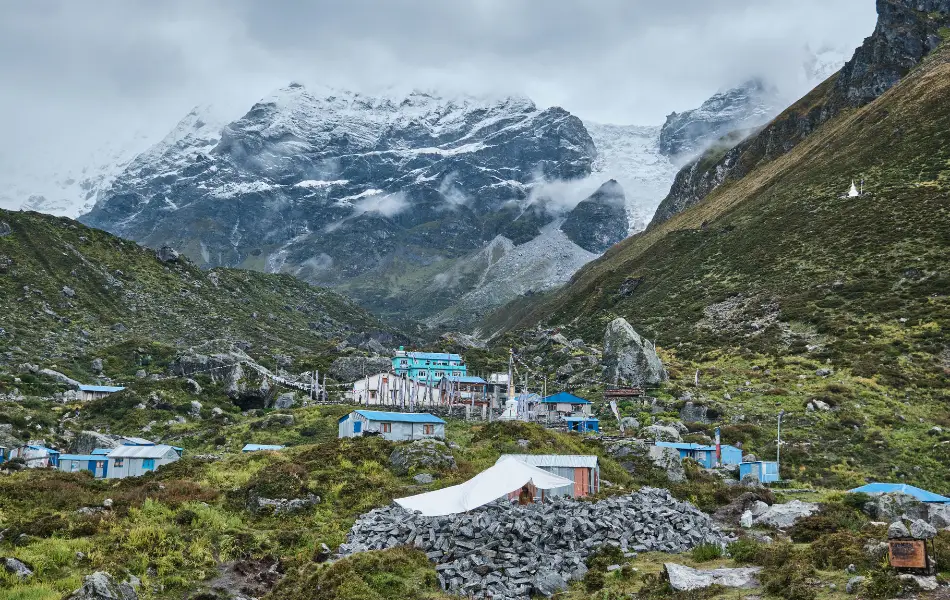
Langtang Valley Trek is one of the best trekking routes in the Langtang Region that takes you through the best panoramic views of the Langtang Range . This trek will take you to the highest altitude of 5,000 m, which is Tserko-Ri.
The trekking usually starts in Syabrubesi, which is easily accessible from Kathmandu City, Nepal. Within 7-8 hours of driving from Kathmandu, you can reach Syabrubesi.
The Langtang Trek is not a long trek, as you just have to trek around 77 kilometers (48 miles), which includes the round trip from Syabrubesi to Kyajin Gompa. Also, it includes the side trek to Tsero-Ri as well.
If we are talking about the difficulty, then this is a moderate trek as it includes higher altitudes, and there are chances of getting altitude sickness. Also, it requires better physical fitness to be able to walk for hours.
During this trek, you are required to obtain permits, including the TIMS (Trekkers’ Information Management System) card and Langtang National Park Permit . The TIMS and Langtang National Park both have permits that can be obtained from the NTB.
The overall cost for the Langtang Trek can be around USD 575 per person, whereas if there are group discounts available while getting the package with Blue Lake Adventure. Find here the detailed cost breakdown for the Langtang Valley Trek.
- Stunning views of the beautiful mountains in Nepal, including the Langtang Lirung (7,227m), Langtang II (6,596m), and Kimshung (6,781m)
- Lush forests of pine, fir and colorful rhododendron
- A glimpse of unique culture and way of life of the Tamang people
- Kyanjin Gompa – Buddhist monastery and a popular destination that offers spectacular views of the surrounding mountains
- Tsero-Ri, peak viewpoint for the panoramic views of surrounding mountains
- Wildflowers like rhododendrons, orchids, and lilies transforms the valley into a carpet of color
- The best temperature and weather for hiking with clear skies
- Opportunity to encounter several wildlife species, including the red panda, snow leopard, and musk deer, in Langtang National Park
Weather and Temperature during Langtang Trek in Spring
Spring is one of the best seasons to have treks in Nepal, aside from autumn. The months March, April and May fall during the spring season.
April is the peak season for trekking to Langtang Valley, as it offers the best time for trekking and trekkers all around the world want to trek in Nepal during this season.
March is the starting month of the spring so there is likely less crowding. Not that March doesn’t offer the best experience, but mostly people miss out this month for preparations.
The weather is fantastic and the temperature is exactly what you are looking for during the day hike. As this month just comes after winter, there are almost no chances of rainfall.
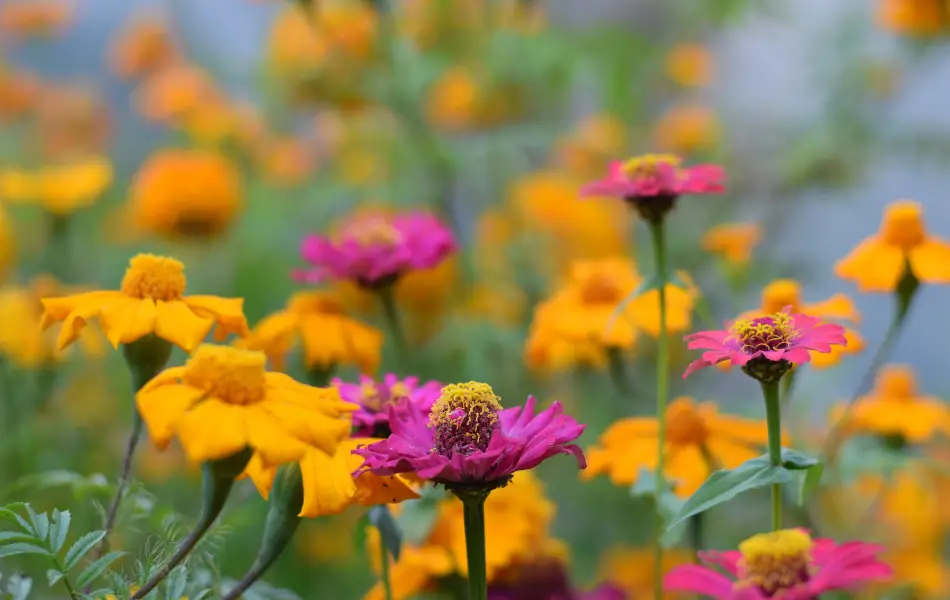
And if you are among those who enjoy the view of the snow, then I have good news for you. Yes, you can see snowfall, as there are high chances of snowfall at higher altitudes.
If you are considering the Langtang Valley Trek, I say go for March. In addition to the better views, you will face fewer crowds on the trails and teahouses.
The average day temperature during the Langtang Valley Trek in March is around 10°C–20°C (50°F–68°F). Whereas the average night temperature is around 0°C–10°C (32°F–50°F),
It is important to consider that the temperature can vary depending on the altitude and the weather conditions.
April is the best month for trekking to Langtang, as it offers the most suitable weather and temperature. This month is best for trekking with the spectacular views of the different mountain peaks with clear skies.
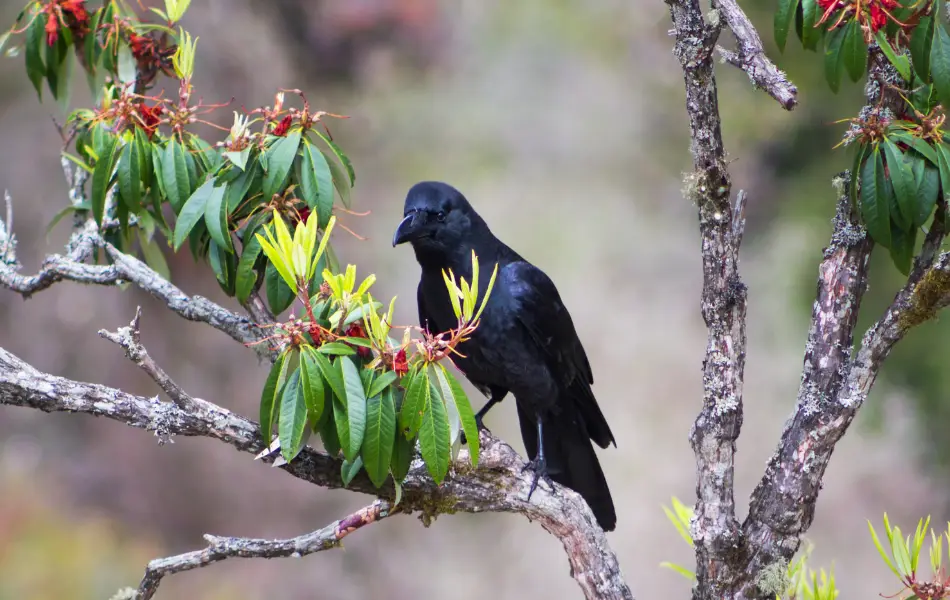
Moreover, April is most popular for the stunning views of the lush forest and the blooming of the rhododendrons and lilies. The blooming of the rhododendron offers vibrant color, which is truly a magical view for the trekkers.
Compared to March, April has more crowds on the trails and the teahouses. Even with the crowd, you can get better accommodation and better views during the trek.
The Langtang Valley Trek, also called the Tamang Heritage Trek , in April is the best time to experience the unique cultural diversity of the Tamang community.
The average day temperature during the Langtang Valley Trek in April is around 12°C–22°C (54°F–72°C). Whereas the average night temperature is around 2°C–12°C (36°F–54°F),
May is the ending month of the spring season and the trekkers are less during this time. With the better views of the mountain ranges and natural beauty of the Langtang region, you can do this trek with no difficulties at all.
As the monsoon season is closer to the month of May, there are chances of rainfall, which may create difficulty during the trek.
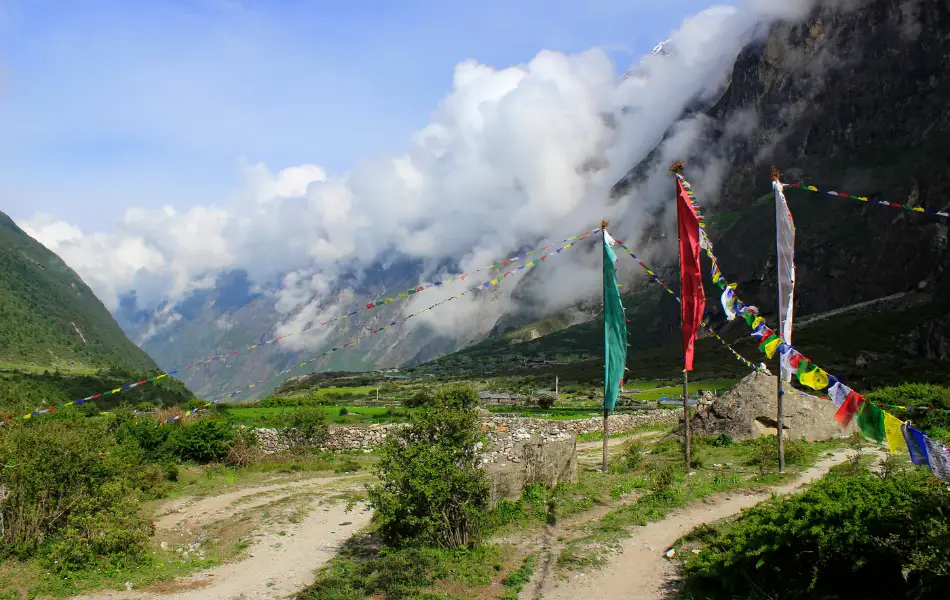
It is important to plan ahead before trekking, considering the weather conditions. Rest; the days are dry and sunny, which makes it perfect for hiking. Less crowds offer more availability of space in viewpoints and teahouses.
With the clear weather, you will face an average day temperature of 15°C–25°C (59°F–77°F). Whereas the average night temperature is around 5°C–15°C (41°F–59°F),
- Day 01: Drive to Syabrubesi from Kathmandu (around 7-8 hours of drive)
- Day 02: Trek to Lama Hotel (2,380m) from Syabrubesi (6-7 hours trek)
- Day 03: Trek from Lama Hotel to Mundu (3,430m) via Langtang Valley (6-7 trekking hours)
- Day 04: Trek to Kyajin Gompa (3,870m) from Mundu (3–4 trekking hours)
- Day 05: Trek to Tserko-Ri (5,000m) from Kyanjin Gompa (5–6 trekking hours)
- Day 06: Trek from Kyanjin Gompa to Lama Hotel (5–6 trekking hours)
- Day 07: Trek to Syabrubesi from Lama Hotel (5–6 trekking hours)
- Day 08: Drive back to Kathmandu from Syabrubesi (7-8 hours)
March, April and May all fall during the spring season, so you can consider having the Langtang Trek in all of the months. But as per my recommendation, March is the best time for trekking to Langtang Valley.
The best experience of trekking in March is because of the less crowded trails and teahouses. You can have a better experience either at the viewpoints or the teahouses. Also, the clear weather is the month’s highlight.
Also, are you into snowfall views? March has the opportunity because, from my last trekking experience, I had the best view of the snowfall. Surprisingly, the daytime temperature wasn’t as cool as we expected. So, it was the best experience trekking to Langtang during March.
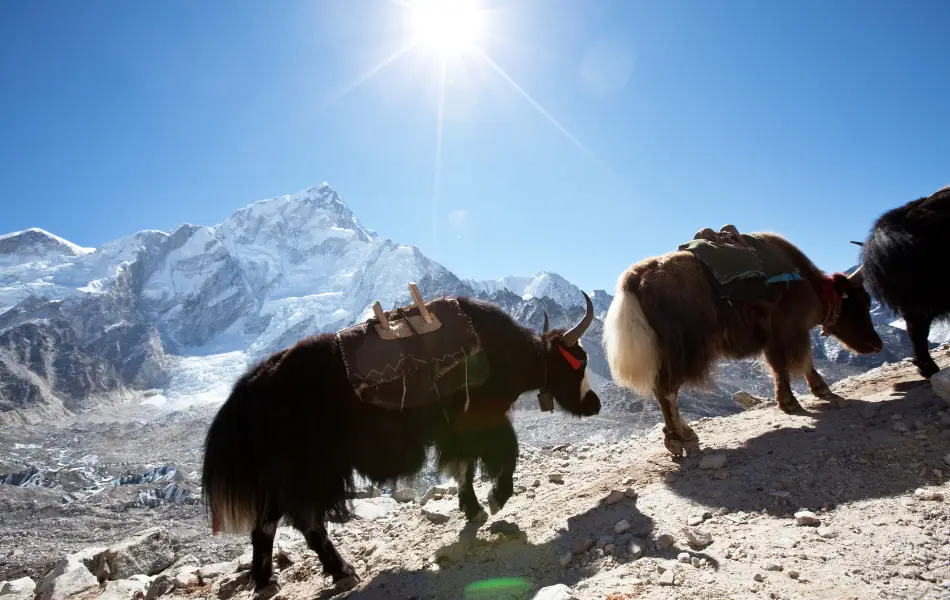
April has a disadvantage as the crowd gradually increases and the teahouse and trails are almost full so you are likely to enjoy them freely. May, on the other hand, is closer to the monsoon because it can receive unexpected rainfall, which sure is going to disturb your momentum when trekking.
Langtang Valley Trek is both easy and moderately graded, as it is relatively less difficult for trekkers with better fitness and the trails are easier too. It is important to consider the fact that this trek involved higher altitude so acclimatization is important.
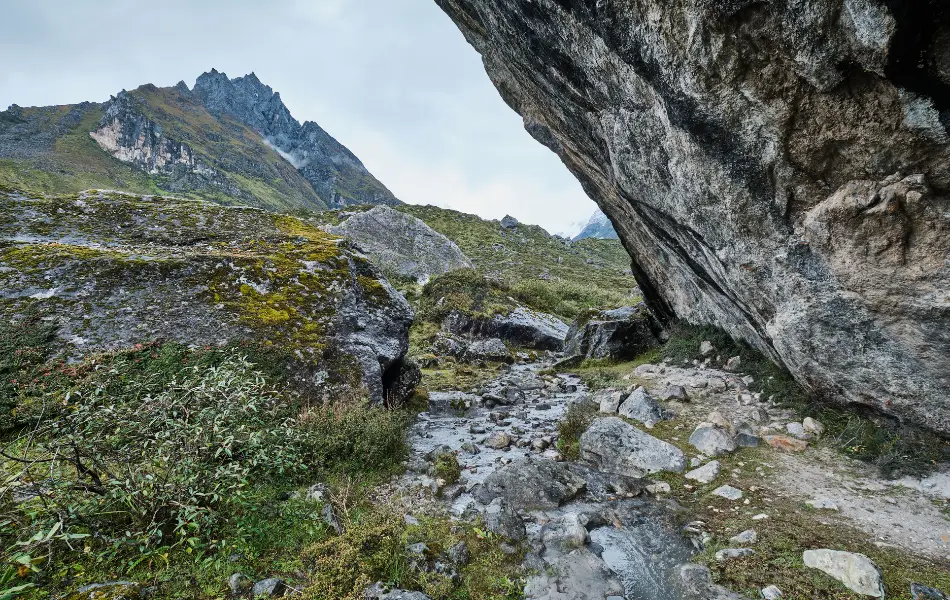
Check here for the difficulty of the Langtang Trek and the best tips to reduce the difficulty during the treks. Also, if you are a beginner in trekking, then the tips can be of great assistance during the trek.
Also, check out these 8 best reasons to do the Langtang Valley Trek . Make sure you don’t miss the last one.
Spring is the peak season for trekking in Nepal, so every teahouse and lodge are operated during this time. For accommodation, you can choose to stay at the basic teahouses, expensive lodges or luxury hotels.
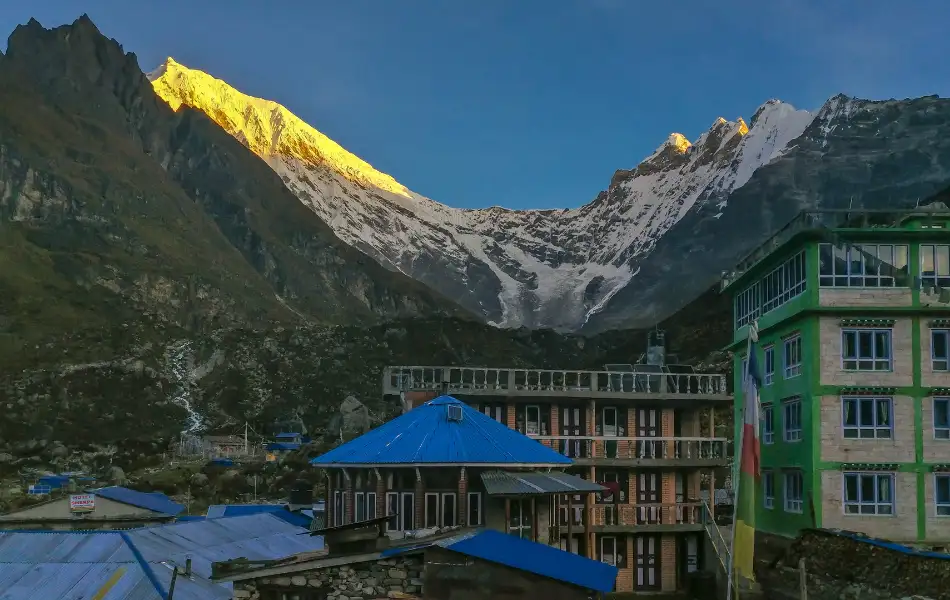
During the trek, you can have your overnight stay at the teahouses, as they are widely available throughout the trail. The services may be basic but for the price range they offer, it is acceptable.
The teahouses offer single rooms and dorm rooms. Also, some of them also have hot water showers, Wi-Fi, and charging stations, which in most cases cost extra.
Alternatively, if you aren’t concerned about the budget, then having a luxury hotel can be a better experience, as they offer the best services in terms of luxury.
Do you want to have a hassle-free trek without worrying about booking accommodation, transportation costs, or permits? Blue Lake Adventure invites you to the 8-day Langtang Valley Trek .
Food is one of the essential needs during the trek, as it involves hours of trekking, which in general requires stamina or energy from the food. You can prefer carrying light snacks, energy bars, and chocolate bars from Kathmandu to avoid the additional cost, as the price may be higher at higher altitudes.
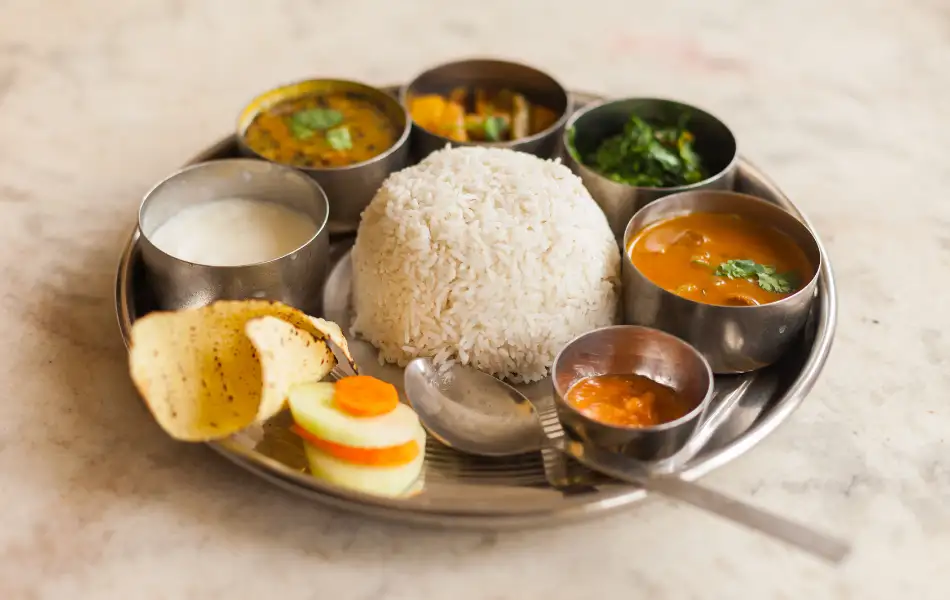
If you are trekking in Nepal, then having Dal Bhaat is essential. It is a staple food in Nepal and is available in every teahouse. It is one of the nutritious dishes you can find, which consists of rice, lentil soup, vegetables, spinach, and pickles in the vegetarian section. You can have non-vegetarians too.
For lunch, you may choose from the options, which includes momos, thukpa, yak cheese, nepalese curd, tea, snacks, etc. They are the basis for foods available in almost every teahouse.
Lastly, for water, you can carry the hydration system, which is reusable. You can fill up the water bottles with the local tap water. Make sure you carry a water filter tablet or any kind of filter system possible.
As trekking to Langtang Valley in the spring may not be familiar to everyone, here are some tips you may consider that will make your trip even easier and more comfortable.
- Acclimatize to the altitude, as this trek involves trekking at a higher altitude so there are chances of getting altitude sickness.
- Pack wisely, considering every weather condition. Wearing layers of clothes can be beneficial so you can adjust to the temperature as needed.
- Carry reusable water bottles and drink plenty of water.
- Make sure you carry the necessary documents, including the permits, and also keep them in a plastic bag.
- Having comfortable hiking shoes is important as this trek involves trekking for 5–6 hours a day on average.
- Be respectful of the local culture and environment and also make sure you properly maintain the waste products.
Spring Trek to Langtang Valley Packing List
Here are some packing lists you can consider taking with you while on the Langtang Trek in the spring. Remember that these are only suggestions; what to take and what not to take are in your hands, so packing wisely is important.
- Moisture-wicking base layers (long-sleeved shirts and pants)
- Fleece jackets, down jackets, or synthetic insulation jackets
- Waterproof and windproof shell jacket and pants
- Hiking shorts, t-shirts, thermal socks, hiking socks, warm hat, gloves, sun hat, sunglasses, and a bandana
- A comfortable and supportive pair of hiking boots
- A pair of sandals or flip-flops
- 40- to 50-liter backpack with a rain cover
- 4-season sleeping back
- Trekking poles for additional stability
- Water bottle or hydration system
- Personal medical kit
- Toiletries (toothbrush, toothpaste, biodegradable soap, sunscreen)
- Quick-dry towel
- Camera, travel charger with power bank, energy bars, pen and diary
Yes, the Langtang Trek in the spring is totally worth it. As spring is the best season to go trekking in Nepal, Langtang Trek in the spring is sure to provide you with ever-lasting memories and experiences.
The stunning visuals of the mountain ranges, glaciers and different traditional Tamang villages are the major highlights of the trek.
If you are more of an adventurous and nature lover, then the Langtang Valley Trek is one of the best opportunities for you to explore the beauties of Nepal. Which includes the lush forest, varieties of the plants and wildlife.
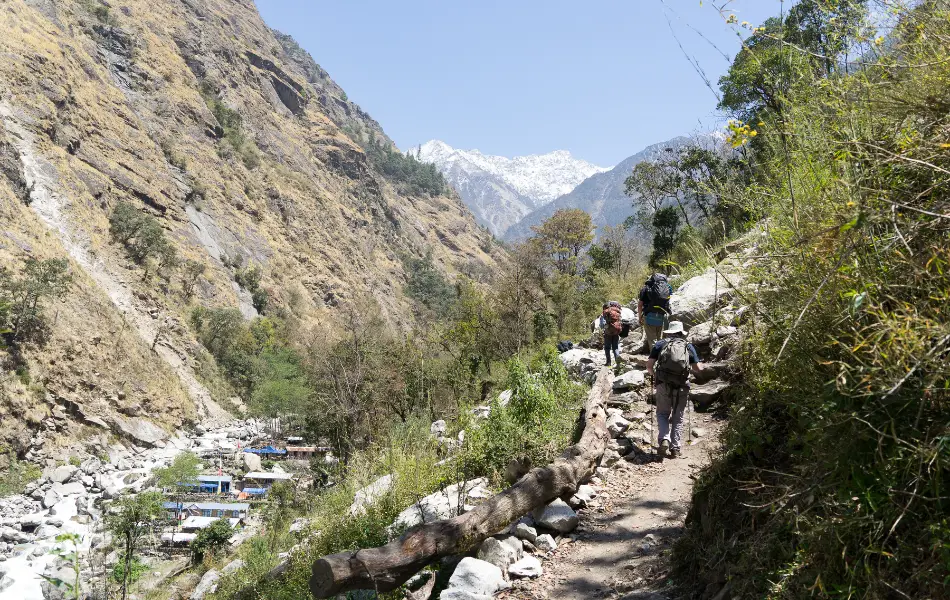
Also, you might know that spring is the season of the rhododendrons. You will be able to see the vibrant color of the rhododendron on the trails, making the view even more magical.
Do you know what the best part of trekking to Langtang Valley in the spring is? The best part is that you will be able to meet different local people with different traditions. The most common is Tamang. And the warmth the community offers makes it even more exciting.
Rest, the easy access of the trek, the short 8-day trek, and the considerably easy trek make it an ideal trekking route for every age group with a good fitness level.
If you have been to the Langtang Valley Trek, then let us know the experience you had during the trek in the comment section below. Also, for any trekking or tours in Nepal, remember Blue Lake Adventure as your next travel companion.
Recent Blog Posts
© Copyright 2024 Bluelake Adventure Pvt. Ltd. Website Developed by: I3 Web

Himalayas on Foot
Local Trekking Company in Nepal
Langtang Valley Trek in March

Langtang Valley Trek in March is a captivating journey in the high-altitude Himalayas. March offers a harmonious blend of delightful weather and favorable temperatures with enchanting mountain topographies . March is just the start of trekking activities, and unlike April and May, there is less number of trekkers, which offers a peaceful atmosphere in a pleasant environment, allowing for an immersive trekking experience. However, as trekkers start to flow more than usual winter season, a lively environment in trekking trails and teahouses is created.
March is the best time to explore the transitional beauty of the Langtang Valley with a mix of snow-filled landscapes and a picturesque floral ambiance. Right after the end of winter in February, the alpine temperature is still somewhat chill. Having said that, it is not particularly cold during March, but the chill of winter subtly persists, adding freshness to the trekking adventure.
Traversing the trekking trails, you may encounter the remains of winter snow. You can glimpse a winter wonderland around the mesmerizing spring beauty. This unique combination adds charm to the trekking journey with a visual feast of white hues mountain peaks beyond the lush scenery. Likewise, the encounter of local villages with traditions, customs, and festivals adds to the cultural dimension of the Langtang Valley Trek . You can indulge in the natural beauty of March while exploring the cultural richness of Langtang Valley.
March Highlights of Langtang Valley Trek

- Forests with heavy rhododendrons and Himalayan wildflowers blossom indicate March as the start of an enchanting spring season.
- The uninterrupted vistas of the Langtang Lirung, Ganesh Himal, and other magnificent peaks against the cloudless skies are the result of stable March weather.
- The temperatures in March are mild and bearable, which aids in comfortable daytime trekking.
- Stunning landscapes with a combination of little snow and vibrant blossoms of Himalayan flowers against the awe-inspiring backdrop of snow-capped peaks create a picturesque setting for Himalayan photography.
- A lively teahouse environment in March denotes the start of trekking activities.
- Warm welcome and authentic hospitality of the local settlements.
- A valuable opportunity to spot the important fauna of the Langtang Valley as they start to become active with the end of the winter season.
- March coincides with several festivals, so there’s a chance to engage in local and cultural celebrations in a charming festive atmosphere along the villages.
Why Should You Do Langtang Trek in March?

Enhanced visibility:
March is an ideal time for high-altitude trekking, including the Langtang Valley Trek, due to its favorable and stable weather conditions. The atmosphere is dry during March with less humidity, like fog. Such weather promotes optimum visibility of the enchanting landscapes in the Langtang surroundings and the incredible Himalayan peaks. No heavy rain, mist, or snowfall will obstruct the clarity of magnificent and serene Himalayan topographies during March.
Suitable Climate:
The March climatic conditions are suitable for trekking activities. Temperatures are milder and promising for comfortable daytime trekking. A dry climate characterized by reduced precipitation offers clean-dry trails. The fresh and blooming nature after a long and hazy winter creates a mesmerizing environmental setting against the wonderful Himalayas. Warm and clear days are accompanied by stable weather conditions, which makes the Langtang Valley Trek in March experience the ideal autumn climate while enjoying the natural attractions of enchanting spring.
Fewer crowds:
The Langtang region experiences less crowds than several other trekking trails in the Himalayas. You can have a close-to-nature trekking journey on peaceful trails. The pleasant climatic conditions favor the comfortable exploration even in the alpine altitudes. Nature comes alive with the spring season, and if wish to savor the full bloom of spring while skipping the crowded routes of the peak season, March is the perfect month to schedule the Langtang Valley Trek.
Photography Opportunities:
March is the beginning of floral bloom, with sprouts of buds and new leaves. As such, the landscapes become incredibly enchanting . The Himalayan birds and animals, along with the regeneration of vegetation, become active. There is a high chance of spotting some valuable species of the Langtang region during the journey.
The trek traverses the amazing biodiversity of the Langtang National Prak, and you can capture the perfect shot of flora and fauna there. Likewise, the weather of the time is stable and clear, allowing clarity in visibility even to photograph the distant beauties. You can capture the awe-inspiring mountain peaks in between the vibrant shades of the landscapes and cloudless blue skies.
Required Permits for Langtang Valley Trek

Trekking permits are the required documents issued by authorized officials in order to carry out trekking activities at a particular Himalayan destination. For the Langtang Valley Trek, there are two major permits that you have to obtain.
Langtang National Park Entry Permit
The Langtang Valley Trek has to pass through the protected area of Langtang National Park . This first Himalayan National Park of Nepal in the Langtang region requires an entry permit to access trekking activities. The Langtang National Park Entry permit costs NPR 3,000 per person . This amount is equivalent to USD 22.65 .
The allocated permit amount is used for the preservation of the local environment for the sustainability of the biodiversity within the National Park. The trekking trails within the National Park offer you a glimpse of the enriched ecosystem in the region. The trek furthermore proceeds through the wonderful vegetation, spotting animal lives and encountering the diverse topographies of the Langtang region.
A TIMS card is a trekking permit, mandatorily required to do every Himalayan trek. TIMS card carries details on trekkers and their trekking destination. The information inserted into a system tracks the whereabouts of trekkers and provides emergency rescue in case of accidents while on the trekking journey. The TIMS card costs NPR 2,000 per person, which is equivalent to USD 15.
Your trekking agency handles all the necessary paperwork and arranges the permits on your behalf before embarking on the Langtang Valley Trek. To issue the permits, you have to provide your agency with all the required information and a copy of your passport with a pp-size photo.
You may also like:
- Langtang Trek Cost
Langtang Trek 7 Days
- Helambu Langtang Trek
Langtang Valley Weather and Temperature in March

The March weather of the Langtang Valley Trek is delightful and stable, with moderate temperatures . March is a beautiful springtime with less atmospheric haze and fog. The favorable weather conditions, like reduced rain and snowfall, uplift the visibility of the Himalayan environment. The surrounding landscapes are seen with enhanced clarity, and the sharp observation of distant scenery is also possible in March. Weather-favored clear blue cloudless skies offer unobstructed views of the magnificent Himalayas. The trekking trails remain dry and clean, which helps for a smooth walk. Similarly, the chance of strong winds, landslides, and avalanches is minimized during this time, contributing to the uninterrupted journey.
The altitude varies significantly, trekking from lower regions to reaching the highest altitudes of 4,773 meters/15,655 feet at Kyanjin Ri. Weather and temperature greatly differ with frequent changes at high altitudes. Although the parts of the lower Langtang region remain dry and pleasant, the climate can be unpredictably changeable with colder temperatures while ascending to height.
The daytime temperature during the Langtang Valley Trek can range from 10-15 degrees Celcius (50 to 59 degrees Fahrenheit), and the nighttime temperature can drop to around -5 to 5 degrees Celcius (23 to 41 degrees Fahrenheit) . The chill breezes accompany you during the early morning and evening. It is recommended for a considerable packing of layers with a mix of heavy and lightweight clothes . You can pack the moisture-wicking flexible tops and buttons for comfortable trekking in warmer daytime and down jackets for warmth in colder conditions.
- Contact Number *
- Your Message *
- Please press 5 to submit *
March Packing Lists for Langtang Valley Trek

Be conscious while packing for the Langtang Valley trek in March because it is a time succeding winter. Consider a layered approach in packing to adjust to the varying temperatures and climatic conditions of March, especially in high-altitude environments.
The Langtang Valley trekking trails pass varied Langtang region topographies. You also have to navigate some sections of the rugged mountainous terrains. So, comfortable packing of proper clothes and gear is essential to overcome the journey easily. Here are the advisable packing lists for an enjoyable trek that fits the weather and temperatures of March.
Gear and Equipment
- Trekking poles
- Sleeping bag (Your trekking agency can give you one if you do not have and has to be returned after the trek)
- Down jacket (Especially required for cold conditions above 4,000 meters)
- Lightweight T-shirts
- Fleece jackets
- Thermal shorts and trousers
- Trekking tops and bottoms
- Hiking trousers
- Wind and waterproof jackets
- Moisture-wicking lightweight dress items
Head, Hand, and Footwear
- UV protection sunglasses
- Headlamp with extra battery
- Woolen and waterproof gloves
- Sturdy hiking boots
- Woolen and light trekking socks
Hygiene and First Aid Kit
- Soap, shampoo and deodorant
- Toothbrush and paste
- Quick drying towel
- Nail cutter
- Wet wipes and hand sanitizer,
- Lip balm and high SPF sunscreen.
- Thermometer
- Safety pins, etc.
Electronics and Travel Accessories
- Smartphones
- Water Bottle
- Diamox tablet (in case of altitude sickness)
March Food and Accommodation

There are several teahouses along the trekking trails that are open and welcoming. These are the commonly found and popularly used forms of accommodation for remote Himalayan trekking adventures. Accommodations are rustic yet comfortable in teahouses with simple amenities. Basic bedding facilities like multiple beds in a single room, mattresses, a set of pillows, and a warm blanket are offered.
Similarly, bathrooms and dining areas are also available in a shared option. Expect no modern-style toilets and be self-occupant with hygiene and toiletries. You have to pay extra for the hot shower and wifi facilities. At higher prices, you can also opt for the modern amenities in luxurious lodges for a lavish stay. However, these options are available only at the lower regions of trekking, and the accommodations start to decline, reaching more at higher altitudes.
You can enjoy the taste of delicious local and continental cuisines in teahouses. The popular meal at teahouses is typical Nepali dal bhat, and the curries are made out of locally available fresh seasonal vegetables. The other meal options are chowmein, momo, mushroom soups, yak steaks, noodles, thukpa, etc., and international dishes like burgers, sandwiches, pizza, etc. The common dining space in the teahouses offers a chance to connect with fellow trekkers and lighten up the atmosphere.
Several hard and soft drinks are available, like milk, hot water, canned juice, tea choices (milk, black, honey, ginger, lemon), coffee (milk and black), and alcoholic drinks (not recommended as it complicate health and acclimatization). Drinking water taps along the way offer free water that is drinkable after a purifying solution. You can buy bottled water throughout the trekking routes. However, food, drinks, and accommodation prices increase with altitude .
Note: March is the beginning time for the Himalayan trekking, and the flow of trekkers can reserve the available accommodation spaces. So, check the accommodation availability before going on the journey and book the room if there is a low chance of getting a preferred stay.
Useful Tips for Langtang Valley Trek in March

- The Langtang Valley Trek is moderately challenging and requires considerable body fitness with mental preparedness to deal with the rugged mountainous terrains and diverse climatic conditions.
- March undoubtedly has mild temperatures with pleasant warm days. However, the higher altitudes can still experience cold mornings and nights, which requires warm clothes. So, consider packing layered clothes for both warm and cold conditions.
- Altitude sickness has a probability at higher altitudes above 2,500 meters, which requires acclimatization days to properly adjust to the elevation. Also, do not rush and consider a gradual and steady ascent.
- Good personal hygiene and staying well-hydrated promote well-being and reduce the risk of altitude sickness.
- A basic first aid kit and general medications help in accidents and health attacks.
- You can capture the enchanting landscapes of Langtang Valley in March, including heavily bloomed forests and mesmerizing mountains in upgraded clarity.
- It is recommended to obtain permits primarily for a smooth and uninterrupted trekking experience.
- As the trekking trails are moderately challenging, it is good to have an experienced and knowledgeable guide for safe navigation assistance and cultural immersion.
- Porters are also recommended as they assist in carrying your backpack and let you enjoy the journey.
- Be mindful of weather changes and temperature variations and keep regular updates on the weather forecast.
Langtang Valley Trek in March FAQs:

How long does it take to complete the Langtang Valley trek?
Langtang Valley Trek is not a lengthy journey. It can finish easily within a duration of around 7 to 10 days, covering a distance of approximately 65 to 75 kilometers (40 to 47 miles). The duration depends upon the route of the trek, any side trips taken, and the pace of each individual trekker.
Is March a good time for Langtang Valley Trek?
March is an excellent time for trekking the Langtang Valley. The milder temperature and stable weather make it an ideal time for Himalayan adventure. Though the time before and after the sun is colder at high altitudes, days are warm and pleasant, which is suitable throughout the trekking hours.
What is the difficulty level of Langtang Valley Trek?
Langtang Valley Trek is considered to be moderately difficult and suitable for trekkers with moderate fitness levels. The trek contains steep trails, and ascending and descending through the inclined rugged terrains are often challenging. The challenges can be easily addressed with sound health and robust physical stamina.
Are ATM facilities available along the route?
There are no ATM facilities along the trekking trails of the Langtang Valley. It will be better to withdraw enough cash from the abundant ATMs in Kathmandu. Though some lower region villages may have basic banking facilities , carrying adequate money helps for the smooth trekking journey.
What are the preparations for the Langtang Valley Trek?
For the Langtang Valley trek, prepare yourself inside out. A physically fit body with mental readiness for the trek is what you need primarily. Then, you can follow a slow elevation gain with adequate acclimatization days, maintaining hydration. You can consider light physical exercises and endurance training to build up strength for consecutive trekking days.
Are accommodations available in the March Trek of Langtang Valley?
March is the starting time of trekking activities in the Himalayas. A vibrant atmosphere is found in the teahouses and trekking trails, with a flow of trekkers/travelers. You can find several teahouses and lodges open along the trails , which can be occupied easily. So, checking and booking accommodations is advisable.
What should I pack for the Langtang Valley Trek in March?
Consider packing mixed clothes for the Langtang Valley Trek in March. Weather and temperatures are favorable for daytime trekking, for which you need lightweight, flexible clothes. In contrast, the high-altitude regions face climatic variations with colder nights and mornings, so pack down jackets to stay warm. Pack sturdy trekking boots and trekking poles for good grip and maintaining balance while trekking.
About Author
Mukti is is the founder and CEO of Himalayas on Foot. He started Himalayas on Foot in 2008 after working as a trekking porter, guide and then a sales manager for a decade.
He has done most of the treks in Nepal such as Everest Base Camp, Annapurna Base Camp, Manaslu Circuit Trek, Poon Hill, Langtang Trek, Annapurna Circuit, etc. Apart from Nepal, he has also travelled to Japan, Thailand, Malaysia, Hong Kong, China, Finland, Norway, Germany, Belgium, France and USA.
Mukti was also secretary of Trekking Agency Association of Nepal (TAAN) for the year 2015-2017. TAAN is an umbrella association of trekking agencies in the Nepal.
He speaks fluent English, Japanese and Nepali.
Mukti is friendly and he is the one who answers most of your trip questions. So if you have any inquiry about our trip, don't be shy. Write to us.
You may also like...

Langtang Valley Trek Cost

Gosaikunda Trek Cost


The Langtang Trek Itinerary: the ultimate guide
This post offers you the ultimate Langtang Trek itinerary. The Langtang trek is a beautiful multi day hike in the Bagmati province of Nepal . An area that is 51 kilometers north of Kathmandu . Making this an easy and accessible trek for those that love to see the Himalayas, but have limited time
The Langtang trek brings you to a beautiful valley at the foot of the snow capped mountain peaks of Kyanjin Ri and Langtang Lirung. All are part of the Langtang National Park.

Why choose the Langtang Trek?
So why choose the Langtang trek? My first response would be, because it is a very beautiful and diverse hike. The Langtang trek starts in lush forests where you might see langur monkeys or red panda’s and ends in the alpine meadows of Kyanjin gompa where yaks wander around.
Culturally it is also an interesting hike as you pass by multicultural villages with Tamang and Sherpa communities. Most ethnic groups along the Langtang trek are of Tibetan origin and follow Buddhism.
The Langtang trek is one of the shortest tea house treks in Nepal and brings you to beautiful high altitude mountain sceneries in just a few days. Perfect if you are short on time, but if you prefer a longer hike it is easy to combine the Langtang trek with the Gosainkund lakes and the Helambu circuit.
The Langtang trek is also a sustainable choice as you do not need to fly to reach the start of the trail. Syabrubesi is an 8 hour bus journey from Kathmandu. Despite all these advantages, the Langtang trek gets relatively few visitors compared to the Everest and Annapurna regions. If you want to avoid the crowds, Langtang is a great destination.

The Langtang Trek and the earthquake
The Langtang area was hit hard by the earthquake in 2015 when a deadly avalanche completely destroyed Langtang village. The families that survived slowly rebuilt their lodges, but then covid came. If there is one area in Nepal where people can really benefit from the return of tourism, it is on the Langtang trek.
I did the Langtang trek in 2010. Long before the earthquake hit the area. The Langtang village that I visited and stayed at, no longer exists and is still buried under the avalanche. Survivors moved to Kyanjin gompa, but a new Langtang village is built 100 meters above the old one.
As of now, the Langtang Trek is open again and there are enough lodges in the new Langtang village to receive trekkers.

Langtang Trek Itinerary
In this Langtang trek itinerary I mention every day the amount of time it took me from start to finish. I am a slow hiker though. I like to take frequent breaks to enjoy the beautiful views.
If you are a fit hiker, you can probably do it in less time
Day 1: Bus from Kathmandu to Syabrubesi
You need the first day to get from Kathmandu to Syabrubesi, the start of the Langtang trek. Like any bus journey in Nepal , it is a long and bumpy ride over winding mountain roads. Delays are common with frequent breakdowns or landslides blocking the road.
In theory, the bus journey to Syabrubesi takes around 8 hours. In practice, it often takes much longer. Buses stop everywhere to let in new passengers. Up till the point that the only place left for more people is on the roof.
My bus was half empty when we left Kathmandu, but one hour later was totally packed. As we left the city behind us the views got more beautiful and soon the peaks of the Himalaya were in sight.
Right before Dunche there were some scary parts with steep cliffs right next to the road. Even the Nepali lady next to me was afraid.
After 9 long hours I finally arrived at Syabrubesi. Because it was late in the afternoon I decided to stay the night.
Logistics : Buses and shared jeeps to Dhunche and Syabrubesi leave everyday from the Gongabu bus station (new bus park or Machapokhari) in Kathmandu. Get there early as it is a chaotic bus station and buses to Langtang leave between 6 – 8 AM in the morning. It is best to reserve your tickets a day in advance at the bus station or at a travel agency in Thamel.
Insider tip : there are delux buses that are slightly more expensive, but don’t stop everywhere to let in new passengers. Shared jeeps are also slightly faster. The best option are private jeeps, but they are expensive ($150+)

Day 2: Syabrubesi (1492) – Lama Hotel (2447)
15 kilometers, 7 hours, altitude gain 1070+
The first day of the Langtang trek is also one of the most difficult days of the trek as you gain more than a 1000 meters in altitude. It starts with a 3 hour gentle climb up to Bamboo village.
Bamboo village is about halfway and a great place for a lunch break. After Bamboo the climb gets more steep, but is still not too difficult if you take it easy.
Overall, I really enjoyed my first day. Most of the day is right next to the Langtang river and through lush forests where I saw langur monkeys in the trees. In total it took me little over 7 hours to reach Lama Hotel or Changtang village. A cluster of lodges in the forest.

Day 3: Lama Hotel (2447) – Langtang village (3430)
14 kilometers, 6 hours, altitude gain 980+
The second day of the Langtang trek is another day of long ascents. The first half of the day is still next to the river and through the forests. However, after 3 hours you leave the forests behind you and enter the beautiful Langtang valley.
Ghodatabela is midway and a great place to stop for lunch. From here you have beautiful views on the snow capped mountain peaks of the Himalayas. The second half of the day is through the glacial valley past small rural villages.
Langtang village used to be the largest and oldest village in the Langtang valley. Famous for its yak yogurt and yak cheese. Langtang village was swept away by an avalanche in the 2015 earthquake. Slowly a new village is built and there are a number of new lodges to stay the night.

Day 4: Langtang village (3430) – Kyanjin Gompa (3900)
7 kilometers, 4 hours, altitude gain 470+
The third day of the Langtang valley is the shortest and only has a small gain in altitude. I did feel the ascent more than the previous days though which probably had to do with being over 3000 meters high.
I felt tired easily and was more quickly out of breath. Therefore, I had to take frequent breaks. Stil, I enjoyed every step I took because of the spectacular views. Between Langtang village and Kyanjin gompa are a few yak herding villages with visible buddhist influences such as ancient mani walls and stupas.
Kyanjin gompa was the most lively village I visited in the Langtang valley. Yaks and horses were grazing in the fields, children were playing outside and women walked outside carrying buckets of yak milk.
Kyanjin gompa is a good place to try yak yogurt or yak cheese and the yak cheese factory is definitely worth a visit.

Day 5: Kyanjin Gompa
Kyanjin Gompa is a great place to stay for at least one day to explore the valley. For half day hikes you can choose between the peaks of Kyanjin Ri and Tsergo Ri that both offer beautiful viewpoints. The hike up to the summer yak pastures of Langshisha Kharka is a long and challenging day trip.

Day 6: Kyanjin Gompa – Lama Hotel
20 km, 8 hours, altitude loss -1440
The sixth day of the Langtang valley trek was a very long day walking back from Kyanjin Gompa all the way to Lama Hotel. At Ghodatabela I was doubting whether to stop and still had energy, but I miscalculated the time it took to reach Lama Hotel. Being alone in the forest with misty clouds in the mountains and the sun setting was very beautiful, but I was glad to reach the warmth of my guesthouse just before dark.

Day 7: Lama Hotel – Syabrubesi
15 kilometers, 7 hours, altitude loss -1070
The seventh day of the Langtang valley trek I felt a bit sad that this would be my last day of hiking. I loved being back in the forests and once again saw langur monkeys. It felt too soon for my lunch break at Bamboo and my arrival at Syabrubesi.

Day 8: bus back to Kathmandu
Going back to Kathmandu after trekking in the mountains of Nepal always brings mixed feelings. Of course I am looking forward to the comforts and delicious foods in Kathmandu, but at the same time I am missing the mountains as soon as I take my seat in the bus back.

The Langtang Trek Travel tips
Langtang trek permits.
For the Langtang trek you need two permits.
TIMS card : The Trekkers information management card is necessary for almost all treks in Nepal. You can get your TIMS card at the Tourism Board office at Bhrikuti Mandap in Kathmandu. Bring your passport and two passport size photos. The TIMS card costs 2000 nepalese rupees.
National Park Entrance permit : For the Langtang trek you also need a national park entrance permit. Although you can get this at the checkpoints in Dunche and Syabrubesi I recommend you to get it as well at the Tourism Board Office at Bhrikuti Mandap in Kathmandu. This costs 3000 nepalese rupees plus 13% VAT.
Do I need a guide on the Langtang Trek?
The Langtang trek is moderately difficult, but easy to do without a guide. There is one trail to follow and it is hard to get lost. Unless you go off season there will be enough other hikers on the trail to keep you company.
If you are alone and not that experienced you might want to consider joining a guided trek or hiring a guide, porter or porter guide.
In Nepal there is a clear distinction between a porter and a guide. A guide shows you the way and can tell you more about the history and the culture of the places you visit. A porter will only carry your luggage. Despite their heavy burden they often walk far in front of you and might have reached the lodge when you are only midway. A porterguide is less common, but does both.
If you prefer a female guide I can recommend the 3 sisters adventure trekking that works to empower women and trains women to become trekking guides in Nepal.
Update April 2023 : The Nepal Tourism Board issued a press release that trekking without a guide is no longer permitted from 1 April 2023 onwards. Trekkers planning to hike in Nepal’s National Parks where you normally need a TIM’s card should have a government licensed guide that is registered with the official Trekking Agency Association of Nepal (TAAN) . It is unclear yet how this rule will play out in practice. Everest issued a press release stating that they will not enforce it. Other areas do. However, there are no guidelines on how they are going to implement the ban on solo trekking .

Accomodation on the Langtang Trek
Along the Langtang trek there is plenty of accomodation and teahouses to choose from. They are rather basic compared to other treks like, The Gokyo Lakes , Poon hill trek or the Annapurna Circuit . They can’t be booked online beforehand. There is a first come first serve basis and some lodges are fully booked by big tour groups.
At the regular stops like Lama Hotel, Langtang village and Kyanjin Gompa there are enough lodges that there will always be a bed for you somewhere.
The prices of accomodation is incredibly cheap, sometimes even free, but they do expect you to order dinner and breakfast at their establishment.

Food on the Langtang Trek
The good thing about tea house treks in Nepal is that however basic lodges might be, the food is often quite good if you stick to Nepali cuisine. Yes, many lodges try all kinds of international dishes to attract tourists, but in my opinion often not the best choice.
When trekking in Nepal I eat Dahl bath at least once a day. This national dish of rice with lentils knows a huge variety. Different vegetable curries from fermented spinach to roasted cauliflower and different pickles to spice it up. Not one dahl bath is the same.
Other Nepali foods to try are Tibetan bread, Thukpa and Momo’s.

When to hike the Langtang Trek
The best time to go trekking in Nepal is spring and autumn.January and February will be too cold with lots of snow on the trail. March, April and May are the warmer months before the monsoon. As the rainy season approaches it can become hot, dusty and humid, but this is not a problem at the higher altitude Langtang valley. Another highlight in spring are the blooming rhododendrons
June, July and August are the monsoon months bringing lots of rain and leeches at the lower altitudes. The biggest problem regarding the Langtang trek is the high chances of landslides on the road from Kathmandu to Syabrubesi and muddy trails.
September, October and November are the most popular months for trekking. Autumn brings clear blue skies and mild temperatures before the cold sets in in December. Autumn is also a festive season with the celebration of Dashain and Tihar . Nepal’s biggest festivals .

Altitude Sickness on the Langtang Trek
The Langtang trek involves a rapid gain of altitude with Syabrubesi at less than 1500 meters high and Kyanjin gompa at 3900 meters high. Experts advise to not ascend more than 300 – 400 meters per day once you are above 3000 meters high. This Langtang trek itinerary actually ascends a little bit more than that and therefore it is important to be cautious of altitude sickness.
The key to prevent altitude sickness is to take it slow, give your body enough time to adjust to the height and to drink enough water. Diamox is a medicine that might help your body to acclimatize, but will not cure altitude sickness once you have severe symptoms. In that case, the only remedy is to go down to a lower altitude as soon as possible.
Mild symptoms may include being tired and more easily out of breath. More severe symptoms of high altitude sickness are headache, dizziness, trouble sleeping, breathing problems, loss of appetite and nausea.
Take these symptoms seriously and watch out for symptoms in others, even in your nepali guides or porters. It is a misconception that they cannot get altitude sickness.
Langtang Trek Books and Guides
Cicerone and Trailblazer both have excellent and comprehensive guides about treks in Nepal. Unfortunately their guidebooks about Langtang are out of print and somewhat outdated. Still, if you can get one of those I would certainly recommend it.
Another option is the Lonely Planet’s trekking in the Nepal Himalayas guide. However, even the newest version was released shortly after the earthquake and lots of things have changed in Langtang since.
Langtang Trek packing list
If you need to carry your own gear on a multi day trek the advice is to bring as little as possible. The Langtang trek is not difficult and there is no need to bring a tent or food. Below a few things to consider
Sun protection : no matter what time of the year, you will need to bring protection against the sun. Sunscreen and a hat are a must.
Rain protection : there is always a risk of rain. I brought a poncho along that protected both me and my backpack from the rain.
Sturdy shoes : There is no need for proffesional hiking boots. However, there are rocky trails. Bring sturdy shoes that fit you well. Don’t bring brand new shoes. Make sure they are tested and comfortable to prevent blisters.
Hiking socks : Besides good shoes, hiking socks are key to prevent blisters. Merino wool socks are lightweight and dry quickly. Wrightsocks are specially designed with double layers to prevent blisters. Decathlon has good merino wool socks too.
Layers : there can be a big difference in temperatures during the day and night. The best way to deal with this is to wear layers. As a base layer I bought merino wool tshirts. I had a fleece vest as a midlayer and as the upper layer I had a windproof jacket.
Backpack : Your shoes and backpack are two things that will have a big influence on the comfort of your multi day trek. I recommend to go to an outdoor store to get some good advice to buy a backpack that fits your torso length and that is comfortable when you wear it. I own the Osprey Fairview trek 50 that I am very happy with.
Reusable water bottle : to prevent plastic waste I always bring a reusable water bottle with me and a water filter or steri pen.
Sustainable Travel on the Langtang Trek
Although the Langtang trek is not as crowded as other trails, tourism is increasing. The trails become more crowded and pollution is a growing problem. Traveling sustainably to the Himalayas is essential to minimize your environmental impact and preserve the area’s natural beauty for future generations.
Support the local community : You can support the community by purchasing goods and services from local vendors. It is better to try Nepali Cuisine that uses local ingredients rather than imported foreign foods. Nepali food is vegetarian friendly and it is very easy to follow a vegetarian or vegan diet.
Stay in small scale sustainable hotels : It is also better to stay in locally-owned guesthouses or homestays to support the local economy directly. These accommodations often have a more positive impact on the environment compared to large hotels.
You can try to look for guesthouses or homestays that prioritizes sustainable practices. That said, environmental awareness is still low. It’s up to you to use water sparsely, turn off lights, air conditioning, and heating when leaving your accommodation.
Leave no trace principle : When hiking the Langtang Trek, stick to designated trails to protect the fragile alpine ecosystem. Straying off the marked paths can cause soil erosion and damage to plant life. If you are lucky enough to spot wildlife, observe quietly from a distance to prevent disruption to their habitats and help maintain their natural behaviors.
I encourage you to take all your trash back with you and dispose of it responsibly. In other words, leave no trace of your visit. Even better is when you bring something to pick up any of the trash that other people left behind.
To avoid single-use plastics, invest in reusable items. For example, you can bring your own water bottle with a filter. At last, use biodegradable and eco-friendly personal care products to minimize pollution of water sources.
Respect the culture : Besides environmental concerns it is also important to be sensitive of the community’s way of life. Nepal is a multicultural country and on the trail you will encounter different ethnic groups.
People will appreciate it, if you dress modestly. Learning a few basic phrases in Nepali, can go a long way in building meaningful connections and to learn more about the local culture. Not everybody is happy to have their picture taken. When in doubt, ask permission.
Disclaimer : This post with a travel guide about the Langtang trek in Nepal contains affiliate links. If you buy any service through any of my links, I will get a small commission at no extra cost to you. These earnings help me to keep Backpack Adventures alive! Thanks for your support!

2 thoughts on “The Langtang Trek Itinerary: the ultimate guide”
Thanks for this great overview. It’s just what I was looking for
Hi! Happy to read it! Being a trekking – tourist guide, i want leave one suggesstion : While you stay a couple of days at kyanjing gumba, should not miss to hike to Tserku-Ri (4984m)
Leave a Reply Cancel reply
Your email address will not be published. Required fields are marked *
- Kale by LyraThemes.com.

Alpha Adventure Treks
Your Perfect Trekking Partner

A Guide to the Langtang Valley Trek in Nepal

Last Updated on May 17, 2023 by Alpha Adventure Treks
The Langtang trek is one of Nepal’s shortest trekking trails. From the jungle with banana trees and monkeys at lower heights to glaciers and ice peaks at higher elevations, it offers spectacular beauty. Short does not imply simple; the path is difficult from the start, with several long and steep ascents, as is typical of Nepalese trekking.
The trek can be completed as a standalone adventure, in conjunction with the Tamang Heritage trek, or as an acclimatization trek before attempting one of the longer and more difficult routes like as Everest Base Camp or the Annapurna Circuit.
The Langtang Valley is one of the most well-known treks in Nepal’s central region. The alpine scenery around Langtang valley is very magnificent and spectacular.
Langtang trekking takes you through some of Tibet’s old monasteries, Tibetan Buddhist culture, and alpine meadows. Langtang’s valley floor and alpine slops bloom freely with poppy and other alpine flowers throughout the summer, creating a spectacular display of world flowers.
Langtang Lirung (7,246 m), Gang Chhenpo (6,388 m), Naya Kangri (5,846 m), and Dorje Lakpa(6,966 m) are some of the most important mountains in Langtang .
Check Langtang Valley Trekking Package
Table of Contents
Top 10 Reason To Choose Langtang Valley Trek
- Stunning views: The Langtang Valley trek offers breathtaking views of the Langtang Lirung glacier and the surrounding peaks, including Langtang Ri, Yala Peak, and the Dorje Lakpa massif.
- Cultural diversity: The Langtang Valley is home to a diverse mix of Tamang and Tibetan cultures, and the trek offers the opportunity to learn about and experience these cultures firsthand.
- Off the beaten path: While the Langtang Valley trek is not as crowded as some of the other popular trekking routes in Nepal, it is still well-maintained and offers a variety of accommodation options. This means that you can enjoy a more authentic and peaceful trekking experience.
- Wildlife spotting: The Langtang Valley is home to a variety of wildlife, including Himalayan black bears, red pandas, and even the occasional leopard. The trek offers excellent opportunities for wildlife spotting and birdwatching.
- V aried terrain: The Langtang Valley trek takes you through a variety of landscapes, including forests, meadows, and high-altitude passes. This diversity makes for an interesting and varied trekking experience.
- Adventure: The Langtang Valley trek offers plenty of opportunities for adventure, including the option to summit Tserko Ri, a peak that offers panoramic views of the Langtang region.
- Community-based tourism: Many of the accommodations along the Langtang Valley trek are run by local communities, which helps to support the local economy and promote sustainable tourism practices.
- Spiritual significance: The Langtang Valley is home to several Buddhist monasteries and holy sites, which adds a spiritual dimension to the trek.
- Natural hot springs: The Langtang Valley is home to several natural hot springs, which provide a welcome respite after a long day of trekking.
- Good for all levels: The Langtang Valley trek is suitable for trekkers of all levels, from beginners to experienced hikers. There are a variety of routes and options available, making it possible for everyone to find a trek that is suitable for their fitness and experience level.
Overview of the Langtang Trek
- Distance – 77 km/48 mi
- Total ascent – 3925 m/12 877 ft
- Total Days: 9-11 Days
- Highest point – 4600m/15 000 ft Kynajin Ri peak
- Accommodation – guest houses
- Permits – TIMS card and Park entrance permit required
- Cost per day – US$25-30 per person including permits and transportation
Outlined Itinerary for Langtang valley trek:
Day 1 : Arrival day Day 2 : Kathmandu valley (1,300 m) (sightseeing) Day 3 : Kathmandu (1,300 m) to SyabruBesi (1,550 m) Day 4 : SyabruBesi (1,550 m) to Lama Hotel (2,450 m) Day 5 : Lama Hotel (2,450 m) to Langtang village (3,430 m) Day 6 : Langtang village (3,430 m) to Kyanjin Gompa (3,870 m) Day 7 : Kyanjin Gompa (3,870 m) (Acclimatization day) Day 8 : Kyanjin Gompa (3,870 m) to Lama Hotel (2,450 m) Day 9 : Lama Hotel (2,450 m) to SyabruBesi (1,550 m) Day 10 : Drive back to Kathmandu (1,300 m)
Typically, 10 days are enough for concluding Langtang valley trek in accessible manner.
Here are a few reasons why you should consider a Langtang Trek for your next walking vacation:
- Langtang is a breathtakingly magnificent mountain range.
- Langtang treks are easily accessible.
- More than 70 glaciers and stunning lakes, including Goshainkunda (4,380 m), Parvatikunda, Bhairavkunda, and Dudhkunda, can be found in the Langtang valley.
- Survey Langtang National Park (the first Himalayan national park), which was established in 1976 and contains a diverse mix of flora and animals within a 1,710 km2 overall territory.
- Diverse cultures and landscapes
- Because it’s quiet, you’ll be able to learn (and give) much more than you would elsewhere.
“Even if you are unaware of Nepal’s recent history, the Langtang region is a unique corner of the world. By choosing to spend time in Langtang and with its people, you may obtain a better understanding of what life is like beneath Nepal’s vast snow mountains.”
Difficulty level and physical effort for Langtang valley trek
Langtang valley trek is categorized as moderate because it is just over 5,000 meters above sea level. If we can consistently walk for 5-6 hours, we can build up a trek for using a light bag load. For those who are accustomed to walking at higher heights, the climb is much easier.
Furthermore, the Glacier region necessitates a bit more activity in terms of running and exercising on a regular basis before beginning the trek in a couple of months. Aside from that, workouts focusing on the heart, muscles, and lungs would be good in preparing for the Langtang valley trek.
Langtang Valley Trek Facilities and Accommodation:
When compared to other Nepalese treks, the Langtang Valley trek is well-equipped. Imagine savoring a cup of world-class Italian coffee while admiring the magnificent scenery of Langtang Lirung.
Isn’t that fantastic? There are numerous recently constructed hotels and guesthouses that offer superb lodging and dining.
You won’t need to bring any food with you on your hike. There are various alternatives here, ranging from local cuisine to international cuisine.
The hotels provide amenities such as free WiFi and hot showers. Hotels and teahouses can be found at regular intervals throughout the walk. In general, the cuisine and lodging amenities are outstanding.
Best Time to do Langtang Trek:
Spring (March, April, and May) and fall (September, October and November) are the optimum seasons for a Langtang valley trek. The greatest time to see the spectacular mountains and glaciers is in the autumn. Spring also brings us snow-capped mountains and green woodlands brimming with crimson rhododendrons.
Aside from this, the Monsoon has its own significance. Trails are infested with leeches due to the rainy season. Waterfalls, rivers, foliage, and flora and fauna, on the other hand, shine brightest during this season. As a result, nature lovers and photographers enjoy this season.
For the Langtang Valley Trek, you’ll need the following information:
- Passport, separate photocopies of passport, proof of insurance, two additional page size photos, flight tickets, card money, ready money for obtaining Nepalese visa at airport, and photocopies of identity card (for withdrawing cash from bank/ATM).
- Head scarf, warm hat/cap, alternative head lamp, sunglasses, half and long sleeve upper wears, wind cheater jackets, waterproof jackets, light and warm thermal tops and pair of normal, woolen or fleece gloves, trekking shorts, trekking trousers, woolen trousers, waterproof pants, light weighted thermal bottoms, normal and woolen socks, and trekking shoes
- Sleeping bag, large travel bag, small personal carry bag, camera with additional batteries, binoculars, little folding knife, anti-bacterial hand wash, guide books, pocket travel games, power bank are all useful goods.
- Medical and toiletries: First-aid kit (containing bandages, anti-loose motion pills, anti-headache pills, cold and cough medicine, anti-altitude sickness pills, water purification tablets, and stomach antibiotic) and toiletry information, if desired.
Trekking Equipment List:
Body clothing:.
- Sleeping Bag
- Down Jacket
- Three pairs of trekking t-shirts
- Long sleeved shirts
- Thermal Shirt for Colder place
- Fleece Jacket
- Warm wool Sweaters
- Waterproof and windproof Jacket
- Cotton Trekking pants with folding
- Waterproof and windproof pants
Head and Face:
- Wool or fleece hat
- Sunscreen 50
- Face wipes and towel
List of Foot wears :
- Trekking Boats
- ¾ Paris Preferably Cotton Socks
- One pairs extra Sport Shoes
Necessary Gears:
- Gaiters just in case if snow
- Gloves and Thick Gloves
- Big rucksack above the 40 L
- Waterproof Bag Cover
- Trekking Pole (if you needed)
- Laundry Soap
- Toilet papers
- Water peals
- Bottle for drinking water
- Pen and Note Book
- Copy and Tourist Guide Book
- Battery charger
- Memory card
- Cell Phone and Charger
- Money Wallet
- Altimeters and Playing card
First aid Kid:
- Cotton bandages
- Paracetamol
- Painkillers
- Loperamide to Control diarrhea (just in Case).
- Water purified tablets
- Elastic bandages
- Thermometer
- Moleskin and sling.
Activities To Do in Langtang National Park:
Visitors can participate in a range of activities in the park with the help of guides and tour operators.
Visitors can go hiking, climbing, bird watching, or go on a nature walk, village walks, visit hot springs after the trip for a hot bath, and many more activities, depending on their level of adventure and interest.
Langtang Treks FAQs:
Langtang trek difficulty is rated as ‘Strenuous’, which falls midway between moderate and challenging. To reach Kyanjin Gompa, you’ll need to trek for about 5-6 hours each day, which is doable for novices. To go above Kyanjin, though, you’ll have to hike 6-7 hours’ round trip at a high height, eventually arriving at the legendary Tserko Ri (5000 m).
It takes 4 hours to drive from Kathmandu to Langtang National Park (202Km). Early morning buses go from Machhapokhari, New Bus Park in Kathmandu to Syabrubesi in Langtang National Park, commencing at 7-9 a.m.
Yes, Langtang Valley is open all over years for trekking and Hiking to Local as well as Foreign tourists.
Yes, langtang is absolutely safe to trek and enjoy the beautiful landscape and wildlife.
The region is known for its gorgeous cedar trees and flowers, as well as breathtaking vistas of soaring Himalayan peaks such as the gigantic Shishapangma, one of the 8000-meter summits, Manaslu Massif, Ganesh, Langtang, and Jugal Himal.
Langtang trek is considered to be one of the easiest trek which is about 10-12 days’ trek from Kathmandu.
The Langtang Valley begins just north of Kathmandu, on the Tibetan border. Langtang Lirung (7246m), the highest peak in the vicinity, dominates the valley.
Yes, you can exchange your currency in Nepal with the help of your local tour guide agency.
Yes, you will have internet connection in most of the tea houses, you might have to pay minimal fee to use it but don’t be expecting the fast browsing.
Langtang valley trek is possible and safe for solo/individual hikers because it is a short and moderate trek. The track is not difficult to follow, and there are numerous signposts along the way.
No, ATMs and banks are not available on the Langtang Valley trip; therefore, you must bring Nepali cash from Kathmandu.
The cost for langtang trek ranges anywhere between $750- $999 depending on the way you travel and accommodation you stay in. The package includes your stay, dining and other necessary expenses.
Guide to Langtan isn’t Mandatory however trekking to any routes in the place you are not familiar with is no less risky so we recommend hiring a professional guide for better travel experience.
Langtang Treks takes about 9 to 12 days from Kathmandu. We recommend you take at least a day or two in leisure just in case of bad weather or any unforeseen situations.
Langtang Village is located at 3400 Meters above sea level from the North of Kathmandu and takes about 8 days to reach there.
The Langtang Base Camp Trek is a popular trekking route in Nepal that takes you through the beautiful Langtang Valley and up to the base camp of Langtang Lirung, a 7,227m peak in the Langtang region.
The Langtang Base Camp Trek typically takes about 10-12 days to complete, depending on the itinerary and pace of the trekker.
The Langtang Base Camp Trek is considered to be a moderate trek, suitable for people with some prior trekking experience. The trek involves walking through rugged terrain, steep climbs, and high altitudes, so it is important to be in good physical condition.
The best time to do the Langtang Base Camp Trek is during the spring (March to May) and autumn (September to November) seasons. During these months, the weather is generally clear and dry, with good visibility and pleasant temperatures.
The maximum altitude reached on the Langtang Base Camp Trek is around 4,984m at the Kyanjin Ri viewpoint.
Yes, you need a trekking permit to do the Langtang Base Camp Trek. You can obtain a permit from the Nepal Tourism Board or through a licensed trekking agency.
There are several teahouses and lodges along the Langtang Base Camp Trek route that offer basic accommodation and meals. You can also choose to camp if you prefer
You will need to bring suitable trekking gear, including good quality hiking boots, warm clothing, a sleeping bag, a backpack, and other essentials. It is recommended to bring a first aid kit, trekking poles, and a headlamp as well. A comprehensive packing list can be obtained from your trekking agency.
The Langtang Base Camp Trek is generally considered to be safe, but it is important to take appropriate precautions and follow the guidance of your trekking agency and guides. Altitude sickness is a risk at higher elevations, so it is important to acclimatize properly and be aware of the symptoms.
The maximum altitude reached on the Langtang Valley Trek is around 4,984m at the Kyanjin Ri viewpoint.
The cost of the Langtang Valley Trek varies depending on several factors such as the trekking agency you choose, the duration of the trek, the type of accommodation and meals you prefer, and other additional expenses such as permits, transportation, and equipment rentals. Generally, the cost can range from $500 to $1500 USD.
The highlights of the Langtang Valley Trek include the stunning mountain views, the beautiful Langtang Valley, the Kyanjin Gompa monastery, the diverse flora and fauna of the Langtang National Park, and the opportunity to experience the local Tamang culture and lifestyle.
The Langtang Valley Trek covers a distance of approximately 50-60 kilometers, depending on the specific route and itinerary chosen by the trekker.
Feel Free To Contact Us:
Share this:.
- Click to share on Twitter (Opens in new window)
- Click to share on Facebook (Opens in new window)
- Click to share on WhatsApp (Opens in new window)
Related Post
Author: Alpha Adventure Treks
You might want to explore the highest and coolest Himalayas of Nepal, explore Nepali cultures, and visit many beautiful places of Nepal. We are here to make your travel dream come true. There are so many thing you can do in Nepal. You can enroll in trekking, mountaineering, hiking, rafting, and jungle safari. We create best itinerary for our customers according to their travel plans. Our agents are very cooperative and they will contact you beforehand so that you can tell what to include in your travel itinerary. We have highly experienced and very professional team in our Company. They make sure about your safety and other travel things. With us, it will be easy for you to travel to your favorite destination. View all posts by Alpha Adventure Treks

- Best Hikes In The World
- Appalachian Trail
- European Hikes
- Nepal Hikes
- Patagonia Hikes
- See All Hikes
- Mount Kenya
- Mount Kilimanjaro
- Mount Toubkal
- See All Mountains
- South Africa
- New Zealand
- Switzerland
- United Kingdom
- Packing Lists
Langtang Valley Trek – One Of The World’s Most Beautiful Valleys
Asia , Nepal
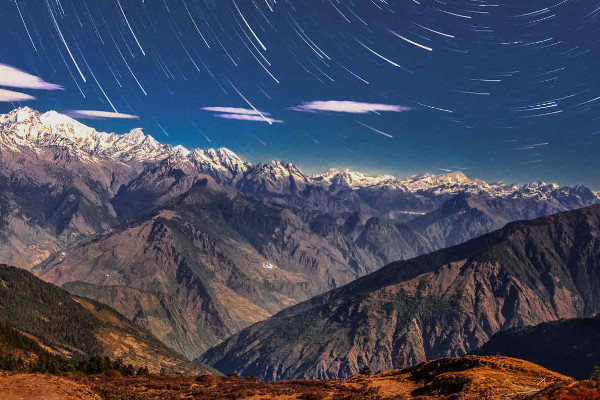
The Langtang Valley Trek is a relatively easy trek and is often far less busy than other popular treks in Nepal . The trek can be done in seven days; however, it usually takes 10 to 12 days.
On this page, you will find a comprehensive and impartial guide to the Langtang Valley Trek.
Langtang Valley Trek
Route overview.
The famed British mountaineer and travel writer, Bill Tilman (1898-1977), called this “one of the world’s most beautiful valleys.”
The local people in the Langtang Valley are mostly of Tibetan origin and, according to legend, the valley was first discovered by a lama – a teacher of Tibetan Buddhism – who was pursuing a runaway yak. “Lang” is Tibetan for “lama” while “tang” is Tibetan for “follow.”
The highlight of the Langtang Valley Trek is the sight of the Langtang Lirung range, which is simply stunning. The eponymous mountain is 23,773 feet high and dominates the valley.
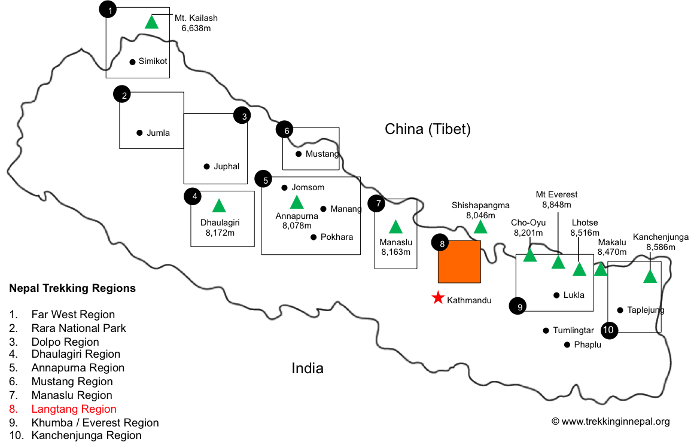
Langtang Regional Map
The Langtang valley region is in central Nepal, around 19 miles directly north of Kathmandu and near the border with Tibet. Although close to Kathmandu, closer than any other trek, this is as wild as it gets.
As you can see from the map above, the valley runs from east to west, sandwiched between the Himalayas to the north and the slightly lower Langtang Lirung range to the south.
Langtang Recommended Map
We believe the best map of the Lantang region is the Langtang & Helambu Map of the GHT which can be purchased online via Amazon. The map is produced based on data collected from the National Geographic Information Infrastructure Programme (NGIIP).
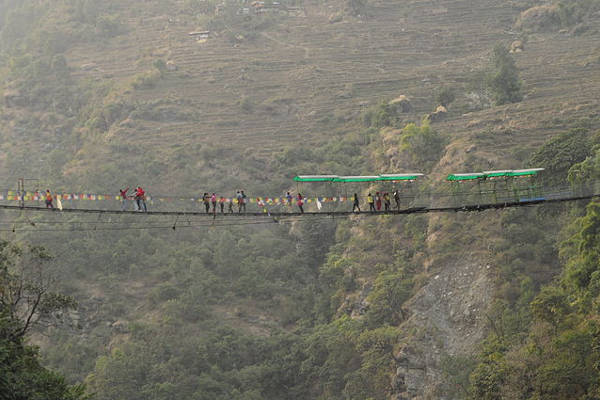
Langtang Trek Itinerary
It is possible to conduct this trek staying only at tea houses, but there is some time under canvas in this particular itinerary. There are several trek itineraries for this route, however, the one below is the most popular. You could also possibly arrange to meet your operator in Syabrubesi if you want to make your own way there.
Day 1-2: Arrive Kathmandu
You will arrive in Kathmandu on the first day.
You have the second day to spare while the provider arranges things. Kathmandu is a UNESCO World Heritage Site , so you could use the time to explore some the incredible local sites. Or you could do some last-minute shopping around the markets.
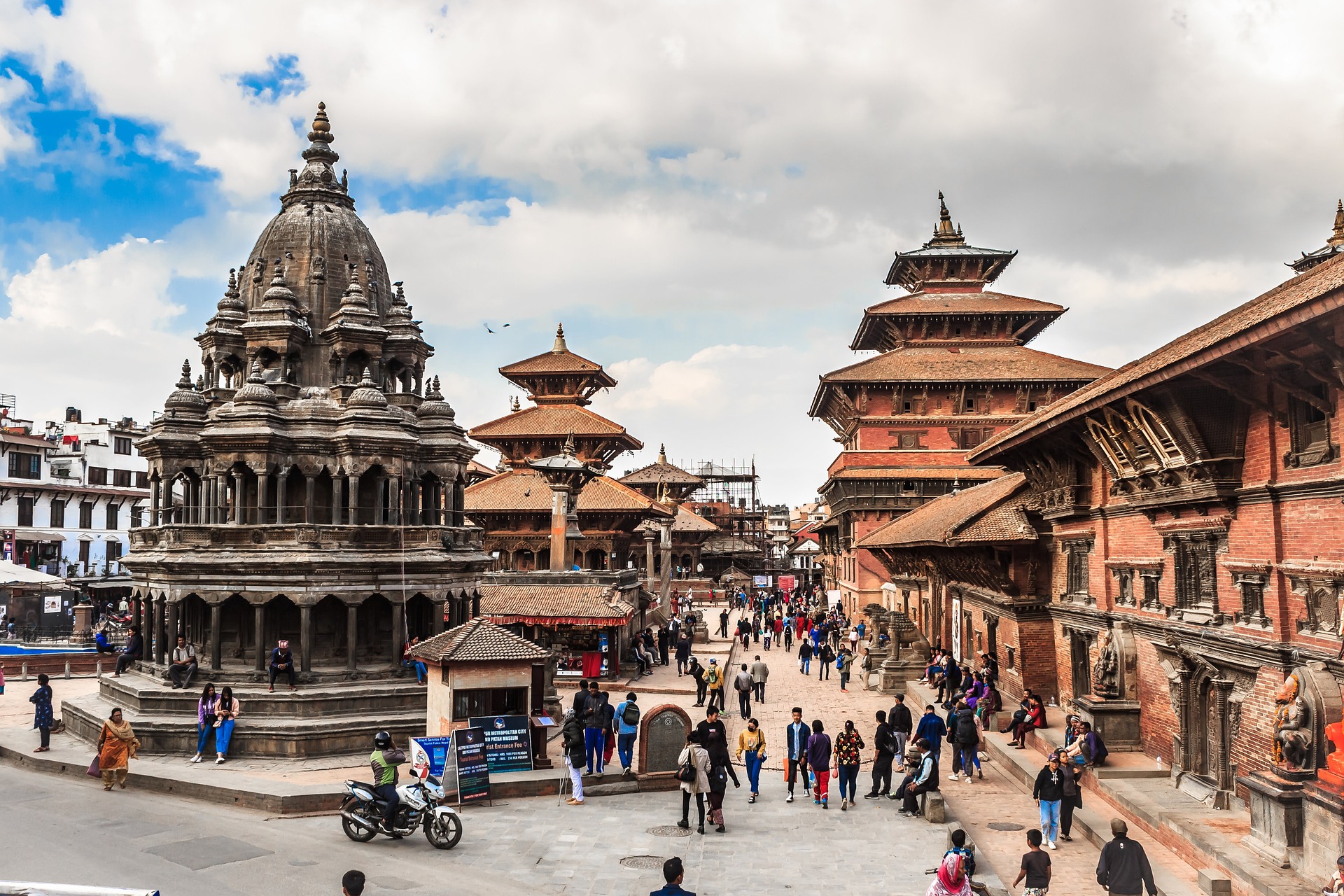
Day 3: Drive to Syabrubesi
Leaving early in the morning, you embark upon a seven-hour drive to Syabrubesi at the bottom of the Langtang Valley, the valley of glaciers. The second half is unpaved and the drive becomes quite rough. You might share a bus with goats and chickens. Sometimes, during the rainy season, the road is blocked by landslides.
The route is dazzling, passing through high ridges and with a marvellous panorama of the Himalayas that includes the Annapurnas, Ganesh Himal, Manaslu and the peaks of the Langtang range. There are many waterfalls and wild bee hives. You could also potentially see yellow-throated martins, Himalayan black bears or red pandas, which are endangered. There will certainly be no shortage of monkeys.
Day 4: Trek across the Bhote Kosi
Here, the trek begins properly. The trail takes you across the Bhote Kosi, which emanates from Tibet and lies in a deep gorge. You then climb through sub-tropical forests that teem with bird life, connecting to the trail from Syabru. One of these birds is the danphe, which is a colourful bird and the national bird of Nepal.
You will follow the river, ascending through uninhabited forests of oak and rhododendron, catching sight of langur monkeys if fortune smiles upon you. Vegetation becomes sparser as you go. You will camp overnight in a forest.
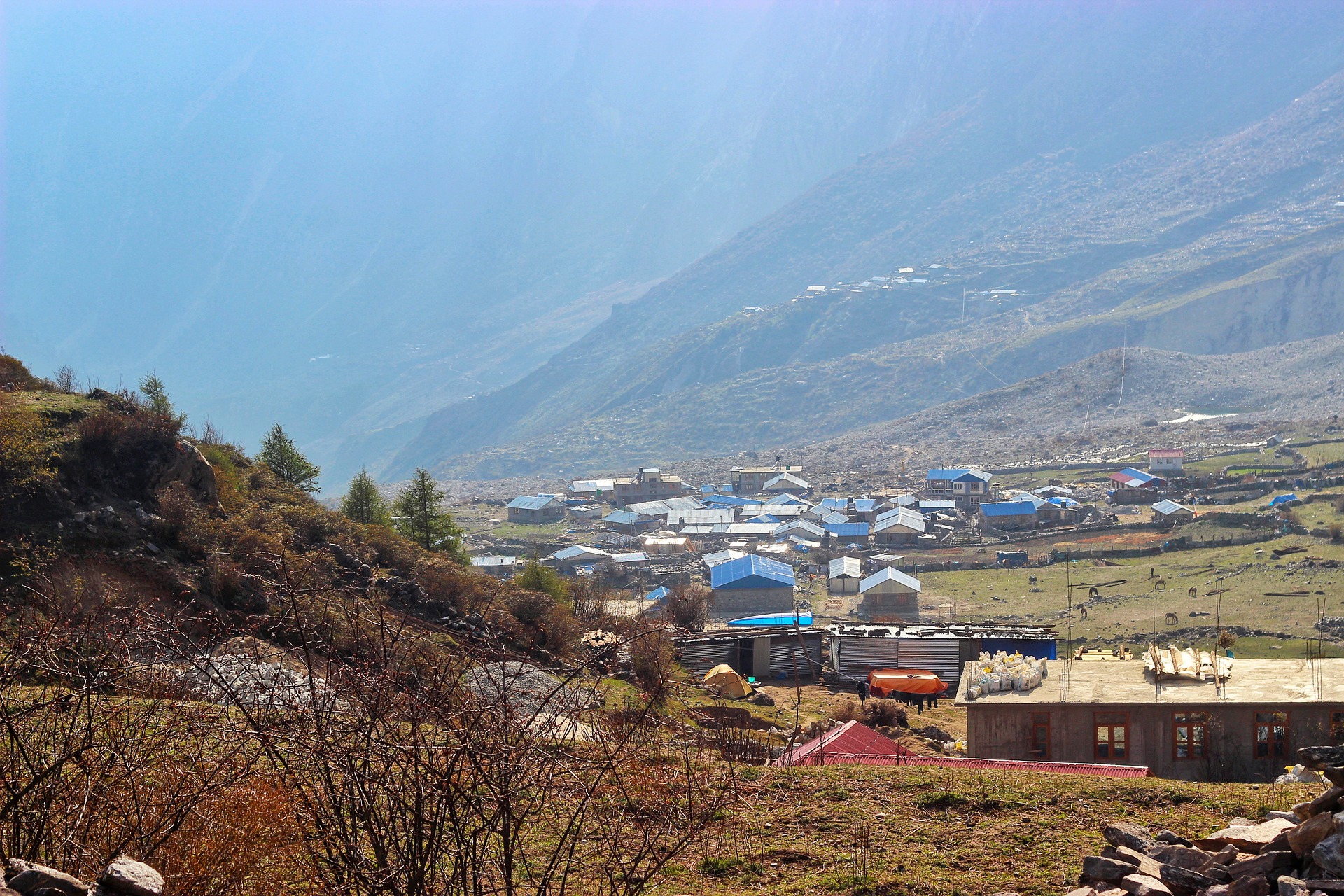
Day 5: Trek to Langtang
This day sees more climbing, with the occasional glimpse of Langtang Lirung visible through the trees. The trail leaves the forest at Ghora Tabela, now a Nepalese army post. The trail climbs comfortably, and the valley grows wider.
In summer, you will pass the temporary settlements of herders whose livestock grazes here. There are numerous chortens and mani walls, structures featuring inscriptions. In Tintin in Tibet , Captain Haddock was informed that you should always walk to the left of a chorten or demons will be released, but this was an invention of the author, so there is no cause for worry.
Shortly before the village of Langtang, there is a monastery for your delectation. The village is the headquarters of the Langtang National Park, which opened in 1976, the first in the Himalayas and the most unspoiled in Nepal. Houses there are of Tibetan style, with flat roofs and surrounded by stone walls.
Day 6: Trek to Kyangjin and onward
You will climb slowly through small villages and yak pastures. The valley opens, allowing for even better views. Having crossed a few small streams and moraines (patches of dirt or rock), before lunchtime, the trail arrives at the settlement of Kyangjin.
Here, there are facilities for the production of spiritual fulfilment and cheese: a small monastery and a famous government-owned factory. The factory makes Swiss cheese from yak milk and is supported by the Swiss government. Really, it should be called nak milk, as that is the female. This is just a small, three-roomed building, but it churns out prodigious quantities of cheese in summer. The snow-covered peaks in every direction make this spot very dramatic and beautiful.
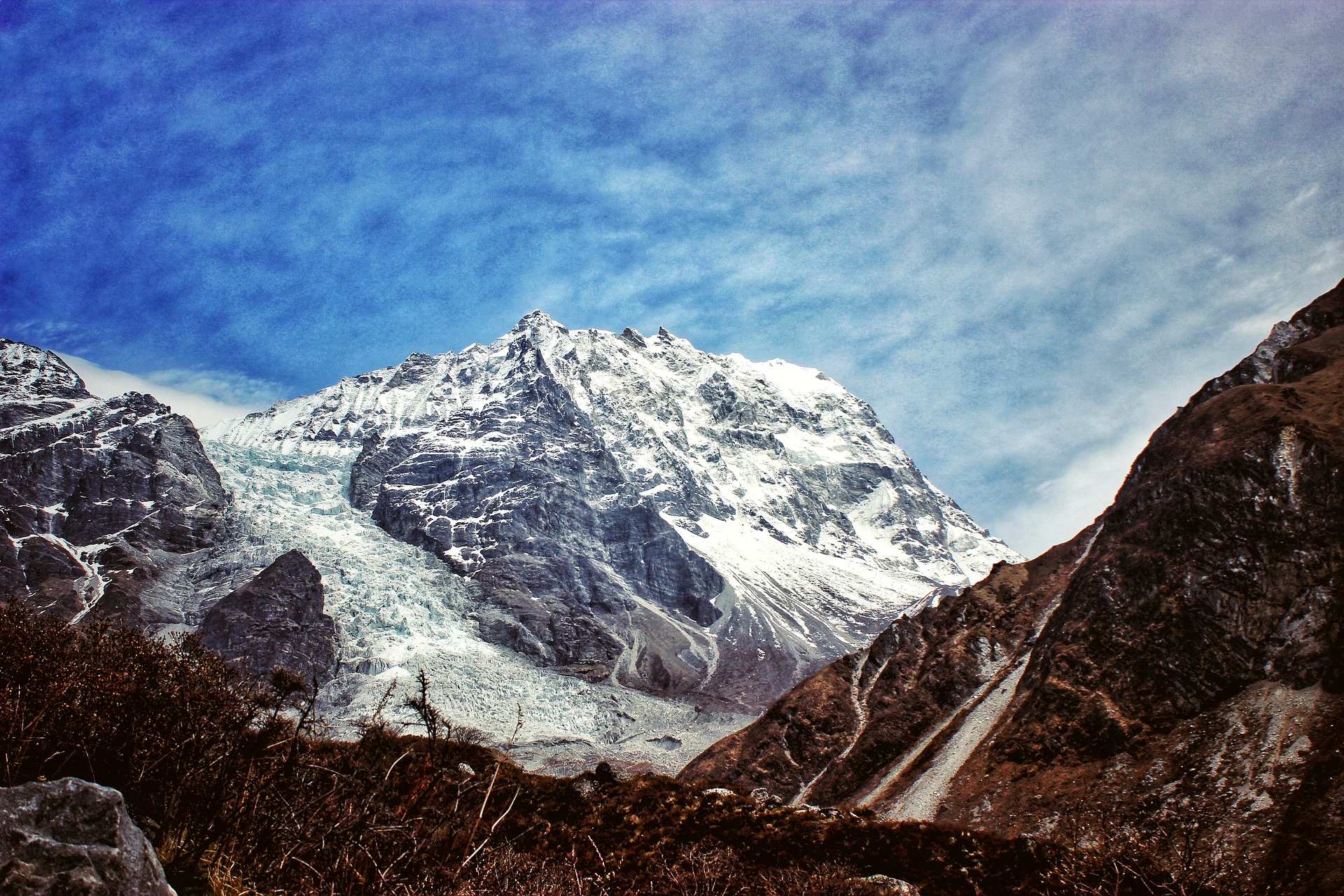
Day 7: Acclimatisation Day
This is a rest day which you will probably use to explore. The glaciers of Langtang Lirung are sensational. You could even summit Kyangjin Ri (14,209 feet), known locally as Brana Chumbo, which is immediately behind the village and provides a breathtaking 360-degree view of the Langtang peaks.
Day 8: Retrace route to Langtang
You will retrace your route towards Langtang village. The trail heads is down hill through forest following the river. You pass through ethnic Tamang settlements who strictly follow religious and cultural practices similar to that of the Tibetans.
Day 9: Return to Syabrubesi
You will continue the return journey, finishing at Syabrubesi. This is roughly a 5-hour walk and the easy trail goes mostly downhill through lush green vegetation.
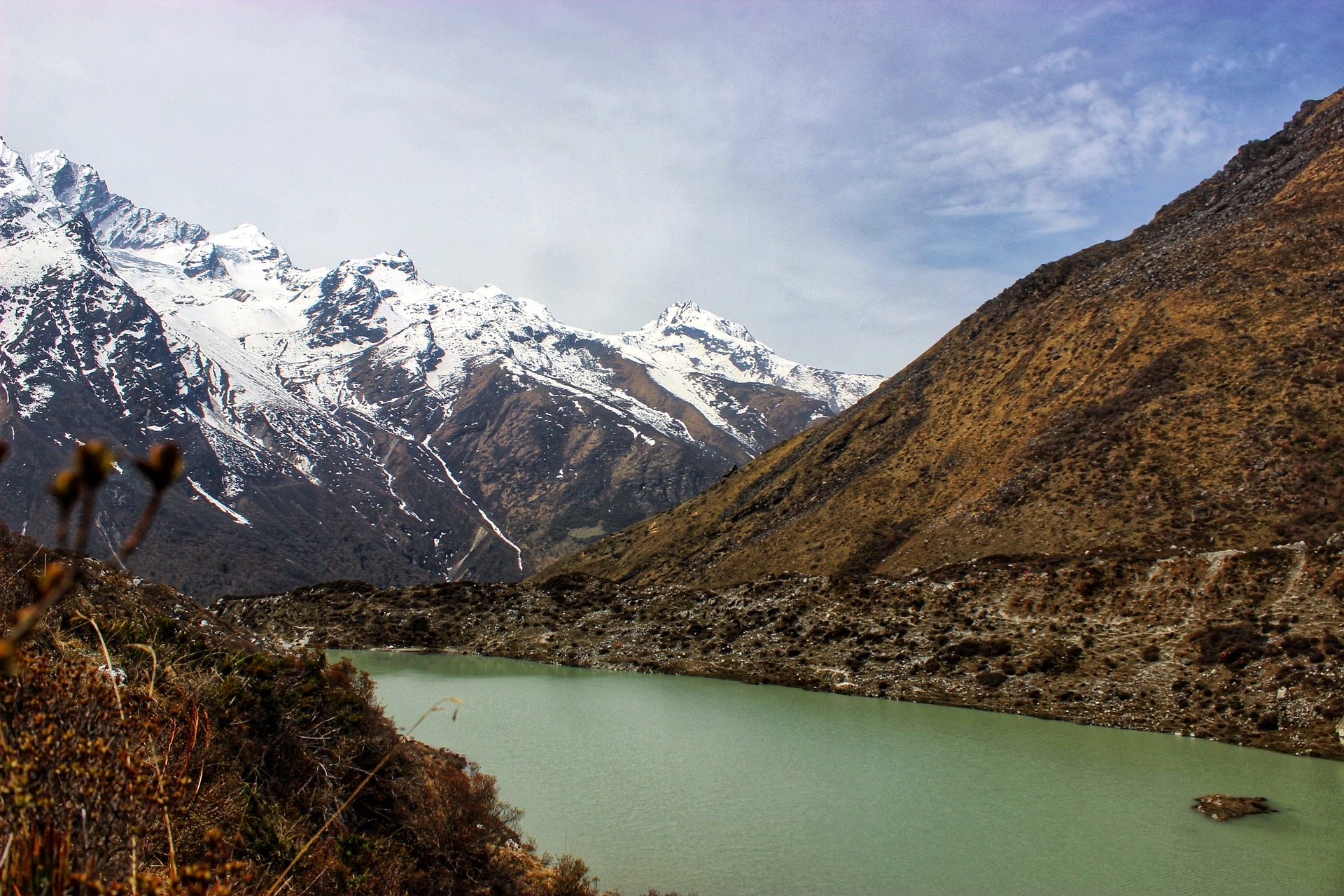
Langtang Valley Trek FAQ
How much does the langtang valley trek cost.
Costs for the Langtang Valley trek range from $1000 on the low-end to $2,000 on the top-end. Check out our list of the best trekking companies in Nepal .
Are permits required for the Langtang Valley trek?
You don't need a permit for the Langtang Valley Trek. However, you must be registered with the Trekkers Information Management system (TIMS for short) in order to do the trek. An entry fee of $30 is charged by the Langang National Park.
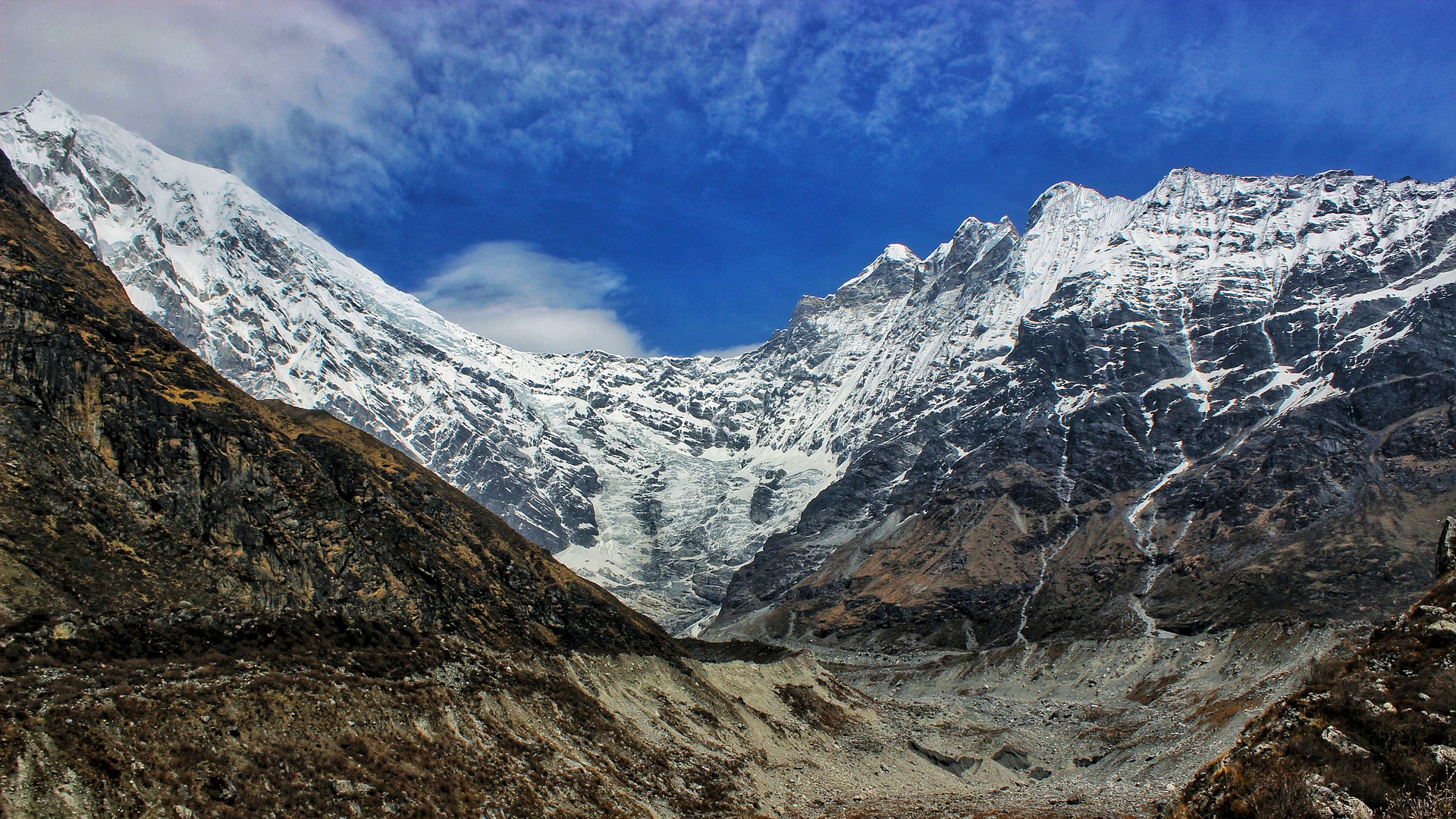
When is the best time to trek the Langtang Valley?
The best time to trek the Langtang Valley is Autumn, from mid-September to mid-December, and Spring, from March to May. These are considered the best seasons to hike in Nepal . when the sun is out during the day, but the nights are cold. Winter is also a possibility, if you don’t mind the cold.
Is altitude sickness a risk on the Langtang Valley trek?
Yes, altitude sickness is a risk because the Langtang Valley trek ascends to some high-altitude points. At its highest point, Tserko Ri, you will reach an altitude of 5,000 meters (16,347 feet). There are steep section on this trek where you will ascend fairly quickly.
Because of this, it is important to have a good understanding of the risks associated with high altitude trekking and how the body acclimatises to high altitude. We recommend you read our detailed article on Altitude Sickness and Acclimatisation .
How difficult is the Langtang Valley trek?
The Langtang Valley Trek is considered to be of moderate difficulty. There are steep sections that require a good level of fitness; however, the trek is relatively short and most people with a good attitude and high level of determination should be okay.
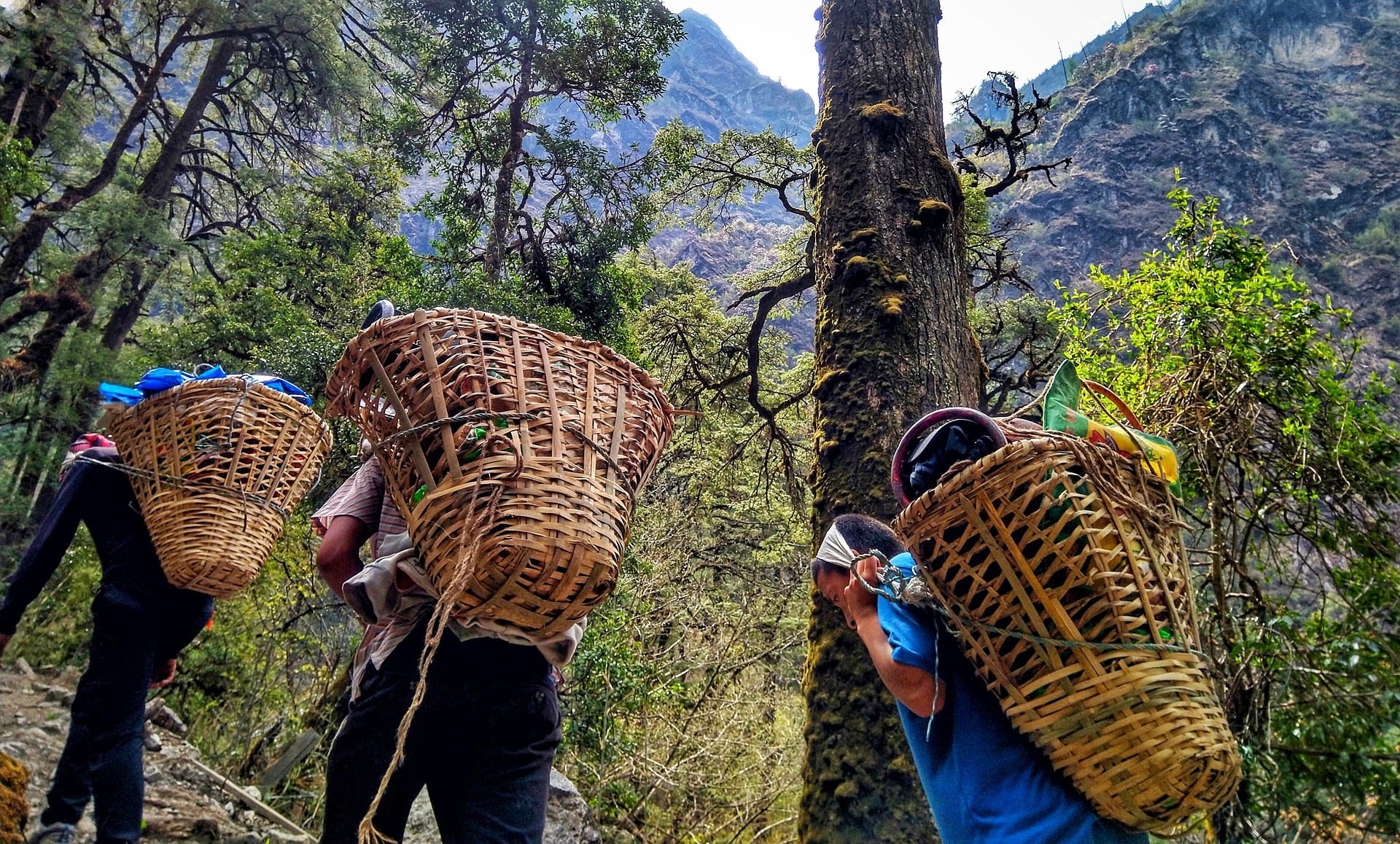
What gear do I need for the Langtang Valley trek?
Trekking the Langtang Valley requires a number of essential pieces of trekking gear and equipment. It is a long and moderately difficult trek, exposing you to a range of altitudes where temperatures fluctuate dramatically between night and day.
Much of your gear can be rented or bought in Kathmandu, but we strongly suggest bringing the most important pieces of gear and equipment with you.
To help you plan and prepare for your trek, we recommend reading our hiking packing list . Also, dont forget to take out good travel insurance for Nepal .
Are there any recommended guidebooks for the Langtang Valley trek?
Yes, there are several recommended guidebooks for the Langtang Valley trek. The Langtang Valley trek appears in many guidebooks which you use before and during your trip.
We highly recommend A Trekking Guide to Langtang: Gosainkund, Helambu and Tamang Heritage Trail by Sian Pritchard-Jones and Bob Gibbons. If this guidebook isn’t available, then Trekking the Tamang Heritage Trail of Nepal by Alonzo Lucius Lyons is very good too.
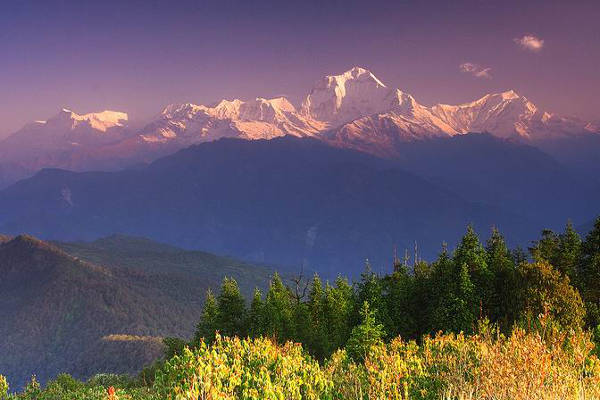
Continue browsing
See more information on Nepal . Or check out these other Nepal hiking articles:
- Short Nepal Trails
- Kala Patthar Trek
- Annapurna Circuit Hike
- Everest Base Camp Trek
- Trekking the Khumbu Valley
- Island Peak Hiking Guide
- Hiking to Rara Lake
- Limi Valley Trek
- Rolwaling Trekking Guide
- Panchase Hike
- Dhaulagiri Circuit Trek
- Trekking the Jomsom Muktinath
- Hiking to Kanchenjunga Base Camp
- Mera Peak Trek
- Helambu Hiking Trail
- Mustang Circuit Trek
- Gokyo Lakes Hike
- Trekking to Makalu Base Camp
- Gosainkunda Trek
- Ghorepani Poon Hill Trek
- The Royal Trek
About the author
Mark Whitman
Mark has trekked extensively in Asia, Europe, South America and Africa. He founded Mountain IQ in 2014 with the sole aim to be the best online information portal to some of the most popular mountain destinations around the world. When not writing for Mountain IQ, Mark is out exploring the outdoors with his wife!
Leave a Reply
Your email address will not be published. Required fields are marked
We work with local guides to offer great value adventures at unbeatable prices
- Hiking Shoes
- Hiking Boots
- Hiking Sandals
- Trail Runners
- Base layers
- Hiking Shirts
- Fleece Jackets
- Softshell Jackets
- Rain jackets
- Down Jackets
- Hiking Pants
- Hiking Shorts
- Base Layers
- Rain Jackets
- Hiking Bras
- Baby Carriers
- Cookware Sets
- Water Filters
- Water Purifiers
- Sleeping Bags
- Sleeping Pads
- Hiking Poles
- GPS Devices
- Solar Chargers
- Dive Regulators
- Dive Computers
- Dive Watches
- Dive Wetsuits
- Dive Gloves
- Dive Lights
- Dive Knives
- Spearfishing Wetsuits
- Spearfishing Masks
- Spearfishing Fins
- Spearfishing Watches
- Freediving Wetsuits
- Freediving Masks
- Freediving Fins
- Freediving Watches
- Sit On Top Kayaks
- Inflatable Kayaks
- Fishing Kayaks
- Tandem Kayaks
- Touring Kayaks
- Kayak Paddles
- Kayak Seats
- Kayak Roof Racks
- Kayak Carts
- Stand Up Paddle Boards
- Touring SUPs
- Inflatable SUPs
- Fishing SUPs
- SUPs For Yoga
- SUPs For Surfing
- SUP Paddles
- Climbing Boots
- Belay Devices
- Climbing Shoes
- Women's Climbing Shoes
- Bouldering Shoes
- Approach Shoes
- Climbing Pants
- Bouldering Pants
- Mountain Bikes for Men
- Mountain Bikes for Women
- MTB Handlebars
- Bike Saddles
- Bike Computers
- Bike Lights
- MTB Jackets
- Bike Helmets
- Bike Packing Gear
- Fat Biking Gear
- Ski Bindings
- Ski Helmets
- Ski Goggles
- Ski Jackets
- Snowboarding Bindings
- Snowboarding Boots
- Snowboard Helmets
- Snowboard Goggles
- Snowboard Pants
- Snowboard Jackets
- Snowshoe Poles
- Avalanche Beacons
- Avalanche Probes
- Avalanche Shovels
- Ski Backpacks
- Surfboards For Beginners
- Surfboards For Kids
- Surfboard For Small Waves
- Soft Top Surfboards
- Foam Surfboards
- Body Boards
- Boogie Boards
- Kiteboarding Kites
- Kitesurfing Boards
- Kiteboarding Harnesses
- Surfing Wetsuits
- Men's Rash Guards
- Women's Rash Guards
- Board Leashes
- DLSR Travel Cameras
- Mirrorles Travel Cameras
- Point and Shoot Travel Cameras
- Fuji Travel Lenses
- Nikon Travel Lenses
- Tripods for Travel
- DLSR Landscape Cameras
- Mirrorles Landscape Cameras
- Point and Shoot Landscape Cameras
- Fuji Landscape Lenses
- Nikon Landcape Lenses
- Canon Landcape Lenses
- Tripods for Landscape Photo
- Wildlife Cameras
- Wildlife Lenses
- Wildlife Tripods
- Wildlife Monopods
- Birdlife Cameras
- Birdlife Lenses
- Surfboards For Small Waves
Hiking The Langtang Trek in Nepal
Have you ever dreamed of hiking the Langtang Trek in Nepal? We’ve all seen those pictures of the soaring Himalayan Mountain Range but do you know what it takes to get there?
A long list of questions fill your head: When is the best time of the year to go? What should I pack? And, what about altitude sickness?
To answer those questions, I have put together this guide to walk you through everything you need to know to plan and prepare for the Langtang Trek, one of the best treks in Nepal .
[thrive_leads id=’51961′]
WHAT TO EXPECT FROM THE LANGTANG TREK?
The trek is situated in the Langtang Valley, nearby Kathmandu city. It is the perfect destination for someone who wishes to trek to the Himalayas but is looking for a relatively easy route with shorter walks and lower altitude.
Although it is close to the city, it is hard to tell. The rich ecosystem of the valley is well preserved. The region is a rural landscape comprising of villages, terraced farms and forests encircled with green hills with a backdrop of the white Himalayan ranges.
The route is a scenic one through dense bamboo and rose tree forests that will take you passed waterfalls and snow-capped mountain peaks. The trek is known for having one of the best views of the Annapurna Range.
The bonus that comes along with the wild scenery is the chance to get to know the unique culture of the local people. Because the region is close to the Tibetan border, their culture resembles to theirs’. As you hike through the valley, you will get a chance to learn from their practices and traditions. You will also come across several Buddhist temples and monasteries.
LANGTANG AFTER THE EARTHQUAKE
The April 2015 Nepal earthquake annihilated many homes and lives. Langtang, among all the devastated areas, was one of the most effected region. The catastrophe destroyed almost all the guesthouses and marred some parts of the trek. The region was also closed for trekking for a really long time.
The good news is that the region has been open again for trekking. Most of the guesthouses are still under reconstruction. You might have to spend your nights in tented camps if you can’t find a room in any of the few guesthouses.
The routes that were a part of the trek but were destroyed in the earthquake, have been recreated following a different path. You need not worry about the comfort. The trek is as pleasant as it always has been.
In fact, by trekking to Langtang, you will become a part of rebuilding the region. Your recreation will be a major contribution to the economical upliftment of the local residents.
BEST SEASON TO TREK TO LANGTANG VALLEY
The best seasons to trek to Langtang are autumn and spring. Autumn is from September to December and spring stretches from March to May. The weather is warm and the heat is bearable. There will be very little or no rainfall. The sky will be clear allowing you to get the best view of the mountains.
DIFFICULTY LEVEL
The trek is graded as a moderate trek. Unlike easy treks, moderate treks have longer walks and higher altitudes. The route in some places steeply ascends or descends. You will require an average level of physical fitness to enjoy the trek.
However, a moderate trek doesn’t not require as much skill, knowledge and experience as the strenuous ones. Even if it is your first trekking experience, Langtang can be a good option to start with. If you are overweight or a senior citizen, take enough rest and break up the hike into short walks.
REQUIRED PHYSICAL FITNESS
The Langtang Trek is not a strenuous trek and hence doesn’t require a high level of physical fitness. But it is advisable to be moderately fit for any kind of trek. Being fit will help you enjoy the walk without putting much stress on your body. Train your body a few weeks before the trek. Read up on how to get fit for hiking , go for a city walking tour and do some regular routine exercises.
WHERE CAN I BUY TREKKING GEAR?
You can purchase hiking equipment in your hometown or in Nepal. Nepal has several stores that sale name brand gear as well as some cheaper ones that sell trekking essentials. Most of these stores are in Thamel, which is the most popular area among travellers. You can also rent gear if you don’t want to travel with your own.
FOOD AND ACCOMMODATION
There aren’t as many teas houses to chose from as before the earthquake but you can still find a few that serve tasty food.
The prefered meal is Dal Bhaat . The dish is filling and will fuel you up for the long walks. Rice is served with lentils, vegetable curry, salad, chutney and meat cooked in Nepali style. The best part of the meal is that you can take as many additional helping of rice and vegetables as you want without having to pay extra.
There are a variety of other dishes. For breakfast, the tea houses serve pancakes, eggs, cereal and porridge. For lunch and dinner, you can also ask for noodles, pasta, momos and various other dishes.
Since most of the guest houses were destroyed during the earthquake, only a few of them are in good condition to accommodate trekkers. You will be either sleeping in tented camps or tea houses depending upon the availability of the rooms.
Do not expect luxurious home stays. The tea houses are simple, comfortable and cozy. In some, you might have to share the restroom which have a squat toilet .
HEALTH CONCERNS
Before trekking, it is always advisable to consult a doctor to check if you are physically healthy enough for high altitudes. But, despite of how fit you may be, there is no guarantee that you won’t fall victim of altitude sickness. There are many symptoms of altitude sickness. Some of them are below:
a. Headache
b. Nausea and vomiting
c. Dizziness
d. Tiredness
e. Loss of appetite
f. Upset stomach
g. Feeling dizzy
h. Shortness of breath
i. Increased heart rate
j. Difficulty sleeping
If you notice any of the symptoms, do not take it for granted. Take necessary precautionary and treatment measures. Some such precautions are:
a. Do not climb any higher for the next 48 hours
b. Descend to a lower altitude if possible
c. Take complete rest until you feel well
d. Do not exercise
e. Do not smoke
f. Drink plenty of water
g. Take external oxygen supply if necessary
h. Take anti-sickness medications
If you don’t feel better but notice you are feeling worse, you will have to be immediately evacuated in a helicopter. So, make sure you purchase your insurance before you trek. The insurance will cover your health costs such as minor & major injuries and emergency helicopter rescue.
There are a couple of local clinics you can consult for minor injuries. Be sure to read up on how to train for high altitude hiking to avoid getting sick.
HIRING A GUIDE AND A PORTER
While you can hike the Langtang on your own, hiring a guide and a porter is highly advisable. A guide will help you navigate through the mountains and will be there in case of an emergency. An added bonus is he will know the best places to eat and stop for the night. When you go to hire a guide, make sure that he or she is licensed to lead tours.
A porter will carry your baggage for you. This will allow you to enjoy long walks without feeling too tired. Even if you have experience carrying heavy backpacks, breathing the thin air of high altitude makes it much more difficult.
A tip of 15% of what you pay to hire the guide & porter is recommended.
WHAT TO PACK
It is very important to have the right kind of equipment to enjoy any trek. Below is a generous list of the things you need to pack. Depending on your needs, you could pack more or less.
• Heavyweight gloves or mittens with a waterproof shell outer
• Down vest and/or jacket (optional)
• Fleece or wool pants
• Hiking boots with spare laces
• Thick Wool Hiking Socks
• Footwear For Around Camp (running shoes and/or sandals)
• Gaiters (optional)
• Thermal Base Layers
• Fleece Jacket
• Wind Breaker Jacket (optional)
• Waterproof Shell Jacket
• Thermal Gloves
• Underwear
• Hiking Pants
• Thermal Bottoms
• Sunglasses with UV protection (opt to but this at your home country)
• Sleeping bag rated to 0 degrees (3/4 season)
• Head Lamp , spare bulbs & batteries
• Small padlock to lock trek bag
• Plastic bags
• Daypack (35-40 litres/2500-3000 cubic inches)
• Sleeping Pad
• Water bottles
• Small Towel
• Waterproof Pants (preferably breathable fabric)
• Toiletries
• Basic first aid kit
ELECTRONIC DEVICES
It is safe to carry your electronic devices with you. But make sure to purchase a cover to insulate your devices from extreme temperatures. Nepal has acute electricity shortage so pack a lot of spare batteries just in case. In higher altitudes, the tea houses will charge you extra for charging your devices.
FINAL THOUGHTS
Langtang trek is one of the best ways to experience the Himalayas. It has its own special characteristics that make it worth experiencing. It may not be as famous as the Annapurna Base Camp or the Everest Base Camp , but the experience cannot be compared. I hope you have found this guide useful and enjoy your adventure!
For more of our top hiking & backpacking gear recommendations, check out these popular buyer's guides:
Best Hiking Backpacks
Best Backpacking Tents
Best Backpacking Sleeping Bags
Best Backpacking Sleeping Pads
Best Backpacking Stoves
Best Hiking Boots For Men ( and Women )
Best Hiking Shoes For Men ( and Women )
The Togian Islands Full Journey and Dive Information
Camino de santiago reward concepts for pilgrims 2024, camino ingles – your detailed information 2024.
- Unforgettable Cities on the Camino de Santiago – The French Method.
- All about Automobile Rental in Cape City South Africa
- The Portuguese Camino from Tui, strolling the final 100 km
- The Central Route of the Portuguese Camino a 2024 information
- Greatest Cities to Go to on the Portuguese Camino de Santiago

Langtang trek – a 2023 information & itinerary

The Langtang trek is among the shorter mountain climbing routes in Nepal. It presents improbable surroundings from the jungle with banana bushes and monkeys at decrease altitudes to glaciers and ice peaks at larger elevations. Quick doesn’t imply simple the route is sort of difficult from the start with many lengthy and steep ascents which is a typical factor for trekking in Nepal.
The trek will be finished as a single trek, together with the Tamang Heritage trek, or as an acclimatization trek earlier than trying one of many longer and more difficult routes just like the Everest Base Camp trek or the Annapurna Circuit trek.

Langtang trek overview
- Distance – 77 km/48 mi (together with Kyanjin Ri peak)
- Days required – 5-7 days + 2 days to get to and again
- Whole ascent – 3925 m/12 877 ft
- Whole descent – 3925 m/12 877 ft (the identical means up and down)
- Highest level – 3800 m/12 467 ft on the Langtang trek itself and 4600 m/15 000 ft if you happen to climb Kynajin Ri peak.
- Issue – average/tough
- Permits – TIMS card and Park entrance allow required
- Value per day – US$23 per individual together with permits and transportation
- Information – not obligatory, will be finished independently, with a information/a porter, or in a gaggle.
- Lodging – visitor homes
How lengthy is the Langtang trek?
The Langtang trek is 77 km/48 mi (together with Kyanjin Ri peak). It takes 5-7 days on common to finish the route. You’ll be able to add some aspect treks to the route which can enhance your complete distance. When you stroll to Tserko Ri peak from Kyanjin Gompa it’ll add round Eight km to your trek.
The trek will be mixed with the Tamang Heritage trek, it’ll add Three additional days to your itinerary. Sadly, we didn’t have sufficient time to do it however from what we’ve heard the Tamang trek is a good cultural experience.
How tough is the Langtang trek?
The trek is sort of demanding as a result of elevation acquire, within the first two days you go over 2000m up, and there are various steep and lengthy ascents on the route. Nonetheless, it’s one of many simpler mountain climbing routes in Nepal and one for individuals who have by no means finished a high-altitude trek earlier than. The primary reason I thought of the Langtang trek as a neater choice is the elevation. The utmost elevation on the trek is 3800 m (4600 m if you happen to climb Kyanin Ri peak) which is way decrease than on most different well-liked routes such because the Annapurna Base Camp trek or Mardi Himal trek.

Journey insurance coverage for the trek
The Langtang trek is a high-altitude trek by way of distant and difficult-to-access areas of Nepal. It’s truly required when making use of for the TIMS card mountain climbing allow to have insurance coverage. No person has ever requested us for any proof although. Getting injured or sick at remoted places, particularly at altitude evacuation will be very sophisticated and costly. You’ll be able to shortly get a quote for journey insurance coverage. World Nomads Journey Insurance coverage.
Do I want a information for the trek?
Not. The Langtang trek will be walked independently. When you’re an inexperienced hiker I might suggest fairly hiring a information or becoming a member of a gaggle tour.
There are a number of benefits of becoming a member of a gaggle tour:
- You don’t have to fret about permits, transportation, lodging, and many others. every little thing is organized for you.
- You don’t need to plan your route.
- You may have higher probabilities to speak with locals not a lot of them can communicate good English.
- You will get extra details about the area, native traditions, life-style, and many others.
- When you’re touring alone it’s rather more enjoyable to satisfy new folks. Lagtang trek excursions
Langtang trek excursions
How a lot does the Langtang trek price?
Mountaineering the Langtang trek will price you round US$25 per individual per day together with permits, transportation, lodging, and meals.
As I already talked about above for the Langtang trek you’ll want the TIMS card and the Park entrance allow. The TIMS card – NPR 2000/US$15; The park entrance allow – NPR 3000/US$23. Whole – NPR 5000/US$38 per individual.
- A bus from Kathmandu to Syabubesi – NPR800/US$6 a technique per individual, NPR 1600/US$12 return. When you take a jeep it’ll be dearer.
- A taxi to the New Bus Station in Kathmandu – NPR 500/US$4. Whole – NPR 2100/US$16 per individual.
The price of lodging
Lodging on the Langtang trek could be very low cost if you happen to eat at your guesthouse. When you don’t eat there they cost you extra for rooms. In season for a double room, you pay NPR 500/US$ 4, often, if you happen to’re one individual they cost half. Low season you possibly can keep for free if you happen to purchase meals there.
The price of meals
Meals is the principle expense on the Langtang trek. The upper up you go the dearer it will get which is simple to clarify there isn’t any highway every little thing is carried up by donkeys and porters. Costs range relying on what you order. The common worth for a meal is about NPR500-700/US$4-6 . It could be pasta with cheese, Dal Bhat, eggs, fried rice, soup, oat porridge, momos, pizza, and many others. Sizzling drinks (tea, espresso) are between NPR 100-200/US$0,7-1,5 . Snacks (chocolate, chips, cool drinks, and many others.) from NPR 250/US$2.
The price of our Langtang trek
We didn’t attempt to save on the trek and just about purchased and ate no matter we wished and didn’t cut price an excessive amount of.
The price of the trek (per individual) for 7 days
Whole : NPR 19 100/US$145 per individual for 7 days or US$21 per individual per day . The price of the trek is considerably lower than the price of trekking to Everest Base Camp the place our finances was about US$58 (together with the return flight to Lukla).
Cash-saving ideas
Convey a LifeStraw bottle or every other water purification system . It saves you some huge cash and helps to cut back plastic air pollution within the area. There are many rivers and streams alongside the route, you possibly can refill your water from a faucet at anywhere without cost.
Convey tea baggage/espresso with you, it’s less expensive to purchase a pot of sizzling water and make your personal tea than to pay for a cup of tea or espresso.
Pack snacks (nuts, cookies, chocolate, dried fruit, and many others.) it’s clearly cheaper to purchase these in Kathmandu than on the trek.
When you’re very hungry order Dal Bhat it’s often bottomless when you end your rice and dal (fried lentils) you possibly can ask for extra at no additional price. It’s meal to have if you wish to eat solely twice a day.
Permits for the Langtang trek
For the Langtang trek, you’ll want a TIMS card and a nationwide park allow. Whole price for each NPR 5000/US$38 per individual.
TIMS playing cards will be obtained on the Tourism Board Workplace in Kathmandu, tackle Pradarshani Marg Bhrikutimandap. Open Mon-Fri and Solar from 10am to 5pm. Closed on Saturdays.
To get the TIMS card you’ll want:
- Stuffed type (you get it on the workplace)
- Two passport-size photographs, shade or black&white (if you happen to don’t have photographs they’ll take a replica of your passport picture however I’d suggest bringing photographs with you).
- NPR 2000/US$15 to pay the payment, it may be paid solely in money in Nepalese Rupees. There’s an ATM exterior the workplace the place you possibly can draw cash.
Relying on the variety of folks it might probably take from 15min. to 1 hour.
When you don’t have time to get your TIMS card in Kathmandu it’s doable to get it on the first checkpoint on the best way to Syabrubesi. The value is similar NPS 2000/US$15. We acquired ours in Kathmandu however we requested on the checkpoint they usually confirmed it. It could be a bit inconvenient if you happen to go by native bus as a result of the bus must await you. Make sure that to convey two photographs, there aren’t any services for taking photographs or making copies.
The Nationwide Park allow you may get on the best way to Syabrubesi, on the second checkpoint about one hour earlier than the city.
To get the mountain climbing allow you’ll want:
- NPR 3000/US$23 to pay the payment, it’s paid in money in native foreign money.
On the identical checkpoint the place you get your allow, they test your baggage. In case you have a drone ensure you put it in your hand baggage they don’t test small backpacks. In response to Nepalese legislation, you aren’t allowed to make use of a drone with no particular allow from the native authorities.
They do test TIMS playing cards and permits; Three occasions on the best way to Syabrubesi, Three occasions on the best way again to Kathmandu, and as soon as on the Langtang trek itself. All buses and jeeps cease at each checkpoint, vacationers need to get out and go to the workplace. It doesn’t take lengthy, they write down your title and stamp your TIMS card.

The right way to get to the Langtang trek?
The trek begins and finishes in Syabrubesi, a small city 120 km from Kathmandu.
There isn’t any airport within the space. The highway is the one means of attending to Syabrubesi. The highway is in dangerous situation; partly tarred, and partly gravel, with ongoing highway works. Buses drive very slowly and cease so much on the best way folks get out and in on a regular basis.
The bus prices NPR 800/US$6 per individual a technique. It takes between 7 and 9 hours. Buses depart every day between 6am and 8am from New Bus Station (on Google Maps it’s marked as Machha Pokhari microbus cease). The simplest means of getting there may be to inform your taxi driver the place you need to go and he’ll convey you to the precise bus station.
Buses make no less than two lengthy bathroom/meals stops the place you should purchase water and snacks. Generally they play native music very loudly for hours; taking earphones or earplugs could be a good suggestion.
A taxi from Thamel (the principle touristy district) to New Bus Station prices round NPR 500/US$4.
Taking a jeep from Kathmandu to Syabrubesi is a quicker choice for getting there. It’s quicker and extra snug however much more costly. At our lodge, the worth was 100US$ per individual however perhaps if you happen to store round in Thamel yow will discover a less expensive choice. When you’re a gaggle of individuals sharing a jeep it’s not that a lot.

Locations to remain in Kathmandu
Thamel is the principle vacationer space in Kathmandu a lot of the accommodations, eating places, journey businesses, and retailers will be discovered right here. Thamel is sort of a giant space it’s essential to discover a lodge with location.
There are lots of accommodations on the road we stayed at Aryatara Kathmandu Lodge many occasions. The workers is extraordinarily useful and pleasant. We saved our additional baggage right here each time we went mountain climbing without cost with none drawback.
When is one of the best time for trekking?
The height season for mountain climbing the Langtang trek is March-April and October-November , with April and October being the busiest months. The wet season , June to August is the worst time for trekking. It rains so much, trails and roads get very muddy, many visitor homes shut for the offseason, and at decrease elevations, there are various leeches.
Winter months December – February are the coldest and driest months . In January there could be numerous snow larger up within the mountains. Many guesthouses shut for the winter season as a result of there are only a few vacationers and it’s simply too chilly to remain up there.
We hiked the Langtang trek in mid-February. It was fairly chilly at night time however in the course of the day it was heat. We had one wet day, the final day of the trek. There have been only a few vacationers on the route. On the draw back many visitor homes, bakeries, and cafes have been nonetheless closed for the low season, we have been advised they have been going to reopen in March.
From our mountain climbing experience in Nepal March is one of the best time for trekking , as a result of;
- it’s the tip of the dry season not a lot rain and clear skies
- roads and trails should not muddy
- many visitor homes open after the winter season
- there should not too many individuals
- snug temperatures for mountain climbing, not too sizzling not too chilly
What’s the lodging like on the trek?
Langtang is a tea home trek each night time trekkers keep at visitor homes. The services can range from place to position. Most guesthouses have;
- double rooms with two single beds every
- a eating room with a range and tables
- an in-door bathroom – some have rooms with an connected bathroom some have shared services, it could be a Western sit-down bathroom or an Asian gap bathroom.
- electrical energy – some locations have energy retailers within the rooms or within the eating space. We didn’t pay additional for charging.
- sizzling bathe – often it’s a photo voltaic bathe if it’s cloudy it doesn’t get sizzling. Generally it’s a bucket bathe, you purchase a giant bucket of sizzling water, NPR 200/US$1,5 (one bucket is sufficient for 2 folks).
- blankets – each place has thick blankets however we used our sleeping baggage as properly.
- wi-fi – it’s important to pay additional for utilizing it, some locations cost a hard and fast fee for limitless utilization however most locations promote playing cards, 200Mb to NPR500/US$Four and 1Gb for NPR 1000/US$8.
Be ready to not have electrical energy, sizzling water, or wi-fi on the trek even when a spot has all of the services. Typically one thing doesn’t work e.g. there isn’t any energy within the village, it was a cloudy day and a photo voltaic panel couldn’t heat water within the bathe, they ran out of Web playing cards, there isn’t any operating water as a result of pipes are frozen, and many others. I’d suggest asking if every little thing works nice earlier than checking in.

What’s the meals like on the trek?
Menus in all visitor homes are fairly comparable and never very totally different from menus on the opposite treks in Nepal. Oat porridge, eggs, chapati, pancakes with jam, or peanut butter for breakfast. Dal Bhat, curry, pasta, spaghetti, soups, fried rice, and momos (native dumplings) for lunch and dinner. Sizzling drinks – totally different teas, sizzling chocolate, instantaneous espresso. Each visitor home has a small store the place you should purchase snacks and sweets like chips, chocolate, cool drinks, and many others. Total meals on the Langtang trek is just like the meals on the Everest Base Camp trek.
Should-try native dishes on the Langtang trek
- Tibetan tea – black tea with yak butter (virtually like bulletproof espresso);
- Sukuti – dried yak meat (it could be beef, fish, or buffalo) like American jerky served fried;
- Dal Bhat – rice, thick lentil soup, potatoes, and sauce, the most well-liked meal in Nepal;
- Masala tea – black tea with Masala spice and milk;
- Yak cheese and milk
- Buckthorn juice – a candy juice from native berries.

Langtang trek itinerary – 6 days
Day 1. syabrubesi (1492m) – lama lodge (2447m), 15,7 km/9,7 mi.
Route: Tiwasi – Pairo – Bamboo – Rimche – Lama Lodge
- Distance – 15,7 km/9,7 mi
- Time – 5 hours*
- Ascent – 1247m
- Descent – 278m

*We often stroll a bit quicker than a median individual. I’d suggest including 1-2 hours to our strolling occasions.
The Langtang trek begins on the finish of the highway that goes by way of Syabrubesi in the direction of the river. There would be the first signal simply earlier than the suspension bridge. After crossing the bridge take left there will likely be one other signal indicating the best way to Langtang. After that the route was fairly simple to comply with, it’s only one path that goes alongside the river up.
There was one place at about 5km the place the suspension bridge regarded fairly damaged and we didn’t know at first the place to cross the river however ultimately, it was nice to stroll throughout the bridge, it was fairly regular.
It was a really stunning and fairly robust strolling day. The surroundings was improbable; all the best way alongside the river, by way of the forest, and over a few suspension bridges. There are a number of locations to cease on the best way for tea or lunch.
- Lovely surroundings; the river, a number of waterfalls, big boulders alongside the path, small villages, stunning forest.
- A number of ascents and descents in the beginning of the day
- A really steep and lengthy ascent from Bamboo to Lama Lodge
Stops on the route

Day 2. Lama Lodge (2447m) – Langtang Village (3500m), 14 km/8,6 mi
Route: Riverside Lodge – Ghodatabela – Thyangsyapu – Chyamki – Langtang
- Distance – 14 km/8,6 mi
- Time – Four hours
- Ascent – 1075m
- Descent – 155m

One other stunning strolling day with breathtaking surroundings and lots of locations alongside the path to cease for tea or lunch. The ascent will not be so long as the day past nevertheless it was fairly robust because of the larger elevation.
The route is simple to comply with although there aren’t any route markers it’s only one single path alongside the river. The primary half of the day is thru the forest, the second half is thru a valley with nice views of the mountain vary.
Midway by way of the day at Ghodatabela, there’s a allow checkpoint.
- Lovely forest
- Implausible views of the mountain vary and snow peaks
- A protracted ascent within the second half of the day
- A steep although not lengthy ascent simply earlier than Langtang Village

Day 3. Langtang Village (3500m) – Kyanjin Gompa (3800m), 6,7 km/4,1 mi
Route: Mundu – Singdum – Yamphu – Kyanjin Gompa
- Distance – 6,7 km/4,1 mi
- Time – 2 hours
- Ascent – 418m
- Descent – 42m

A really brief and comparatively simple strolling day with one of the best surroundings on the trek thus far; snow peaks, turquoise shade river, big boulders, bizarrely formed rocks, stupas, many yaks, and nice lookout factors.
- Unbelievable surroundings
- Two stunning stupas about 2km earlier than the city
- Nice views of the valley from Kyanjin Gompa
- A few steep however brief ascents
- Rising altitude makes you drained and out of breath very fast

Day 4. Kyanjin Gompa (3800m) – Kyanjin Ri (4600m) – Kyanjin Gompa (3800m) – Chyamki (3380m), 13,5 km/8,Three mi
Route: Kyanjin Gompa – Kyanjin Ri – Kyanjin Gompa – Yamphu – Singdum – Mundo – Langtang – Chyamki
- Distance – 13,5 km/8,Three mi
- Time – 5h.30min.
- Ascent – 804m
- Descent – 1237m
Kyanjin Gompa (3800m) – Kyanjin Ri peak (4600m) – Kyanjin Gompa (3800m), 5 km/3,1 mi
- Distance – 5 km/3,1 mi
- Time – Three hours
- Ascent – 696m
- Descent – 696m

It was a troublesome climb to the highest of the mountain. The path will not be well-marked, there is just one signal, proper in the beginning. Someplace after about 20min. of going up we missed the flip and took an extended path to the highest. On the first cut up take proper and comply with a well-walked path all the best way to the highest.
The surroundings from the highest was actually spectacular we have been very fortunate with the climate the sky was clear we may see the valley, a number of snow peaks, and mountain ranges. It’s higher to stroll up within the morning when it’s often good and sunny, After lunchtime, it usually will get cloudy and also you gained’t be capable of see a lot. When you don’t really feel sturdy sufficient to stroll all the best way to the height, you possibly can stroll to Decrease Kyanjin Ri it’s about midway.

Kyanjin Gompa (3800m) – Chyamki (3380m), 8,5 km/5,2 mi
- Distance – 8,5 km/5,2 mi
- Time – 2h30min
- Ascent – 108m
- Descent – 541m

Our unique plan was to remain two nights at Kyanjin Gompa we have been pondering of going to each peaks Kyanjin Ri (4600m) and Tserko Ri (4800m). We have been a bit apprehensive about altitude. I didn’t sleep properly and awakened with a headache. We determined to go as much as the height first after which stroll down and sleep at a decrease elevation.
The Langtang trek is a return route you stroll to and again the identical option to diversify it a bit we determined to remain at totally different villages on the best way again. We walked previous Langtang to the following place Chyamki and stayed there.

Day 5. Chyamki (3380m) – Bamboo (1970m), 18 km/11 mi
Route: Thyangsyapu – Ghodatabela – Lama Lodge – Rimche – Bamboo
- Distance – 18 km/11 mi
- Time – 4h30min.
- Ascent – 198m
- Descent – 1574m

We walked the final two days in someday, we arrived at Bamboo round lunchtime and determined to go all the best way to Syabrubesi and the following morning to take a bus again to Kathmandu. It was a protracted strolling day, took us 6 hours with numerous downhill strolling, in complete 2254m down in someday. Don’t push your self if you happen to really feel drained or your knees begin hurting fairly cease at Bamboo and proceed the stroll the following day.
On the best way down we noticed many monkeys within the forest we didn’t see them on the best way up. The stroll, on the whole, was simple however after Bamboo, it began raining and it acquired a bit slippery we needed to stroll extra rigorously.
There are a few guesthouses and eating places in Bamboo, so it gained’t be an issue to discover a place.

Day 6. Bamboo (1970m) – Syabrubesi (1492m), 9,5 km/5,9 mi
Route: Pairo – Tiwasi – Syabrubesi
- Distance – 9,5 km/5,9 mi
- Time – 2h20min.
- Ascent – 183m
- Descent – 680m

When you stroll it on a separate day it’s a really brief and straightforward stroll with stunning surroundings.
We stayed on the identical place Lodge White Palace we arrived too drained to stroll round looking for a greater place (if it exists). It was nice, the proprietor organized for us a bus again to Kathmandu for the following morning.

Getting again to Kathmandu
The bus picked us up at our lodge at about 7am and we began the exhausting journey again to Kathmandu. It took between 8-9 hours to get again on the best way we ran out of petrol, forgot any person at one of many stops and acquired heavy site visitors on the entrance to town.
What to pack for the Langtang trek?
When you’re going to hold your backpack it’s essential to not pack too heavy and take solely the necessities. Right here is our important packing listing for the Langtang trek which is sort of just like our Everest Base Camp trek packing listing.
- Backpack – a 40L backpack will likely be sufficient.
- LifeStraw – it’ll prevent fairly some huge cash.
- Sleeping bag – most locations have blankets however we personally want sleeping in our sleeping baggage below a blanket.
- Mountaineering poles – on the best way up we didn’t really feel like they have been needed however on the best way down ranging from Kyanjin Ri peak, I needed I had the poles.
- Waterproof pouch for paperwork, cash, cellphone, permits, and many others.
- Small mixture lock – you should use it to lock your room in a visitor home.
Mountaineering sneakers – simply earlier than coming to Nepal we each purchased new mountain climbing boots, Salomon X Extremely Three GORETEX. We didn’t have time to put on them the Langtang trek was the primary time we walked in our new sneakers we even acquired an opportunity to check them within the rain. The sneakers are superior, very snug, and waterproof, our toes weren’t sweating or getting chilly. We’re tremendous completely satisfied we purchased these sneakers. I actually like my new Salomon sneakers.
Mountaineering socks – we all the time put on merino wool socks for mountain climbing, they work nice, final lengthy, don’t take in odors and defend your toes from blisters, and many others.
Down jacket – we used ours rather a lot on the trek for sporting inside and out of doors, they’re nice; heat, gentle and pack small.
Trekking pants – Campbell all the time hikes in regular trekking pants I want sporting yoga pants if it’s heat and fleece trekking pants if it’s chilly.
Mountaineering shirt – Colombia mountain climbing shirts are Campbell’s favourite, I like mountain climbing in lengthy sleeve operating shirts with sports activities bras.
Rain jacket – it could be not essential to pack one if you happen to pack a down jacket and a rain poncho.
Fleece – a really helpful merchandise to have on the trek for strolling inside and outside.
A cap beanie – we wore them rather a lot within the morning for mountain climbing and at night time for sporting inside.
Sleeping garments e.g. lengthy cotton pajama pants and a thermal shirt for sleeping and sporting in guesthouses after the bathe – it’s snug and heat. Women’ choices; pants and a shirt.
Mountaineering towel – we had a bathe/a bucket bathe each day on the Langtang trek.
Electronics
- Kindle Paperwhite. When you’re an proprietor of Kindle by becoming a member of Kindle limitless program by Amazon you’ll get entry to hundreds of e-books and audiobooks.
- GoPro HERO10 we used it so much for taking photographs and movies.
- Garmin Fenix 5X – we are able to’t think about how we hiked with out this watch (now we each have one), we use it so much for out of doors actions and coaching. Due to this watch we may add elevation profiles, precise distances, stops on the route, and many others. to our submit.
Toiletries & miscellaneous
Really useful books and guidebooks
When you want e-books over paper books don’t hesitate to affix Amazon Kindle Limitless to get entry to hundreds of e-books and audiobooks. Even if you happen to don’t have a Kindle system you possibly can learn or hearken to books in your cellphone or pill utilizing the app. The primary 30 days of this system are free.
Like this submit? Pin it!

Please comply with and like us:

The beautiful half of Stingy Nomads, answerable for all our land adventures (mountain climbing, climbing, strolling the Camino) and following them write-ups. Alya loves strolling since she was a toddler, she prefers to stroll 1000 km with a backpack fairly than to do a 10 000 km highway journey (truly any highway journey). Alya is a giant fan of Latin America, the Spanish language, and dancing. Each time we go away she desperately misses our canine Chile.
Hey! A bit about us - we’re John & Maria and we're a couple that loves to travel the world and document our adventures! We enjoy writing, blogging, exploring and sharing our adventures. We’re always embarking on new journeys and here you’ll find articles covering many travel destinations, and topics, such as culture, history, art and cuisine. Our goal and mission is to present compelling stories, photography and personal opinions, as well as serve as an online resource for anyone who wishes to plan their own trips and visit the destinations we've been to. We genuinely love meeting new people, mingling with locals, listening to their amazing stories and trying new travel experiences.

No covid associated restrictions for Indian travellers travelling to Thailand.

Indians travelling to Sri Lanka now want to hold vaccination playing cards, and PCR reviews.
Related posts.

Write A Comment Cancel Reply
Notify me of follow-up comments by email.
Notify me of new posts by email.
Beyond Wild Places
Your guide to the wilder side of life
A Guide to the Langtang Valley Trek in Nepal
Langtang Valley is one of the most popular shorter trekking options in Nepal. The Langtang National Park wasn’t even on my radar for trekking in Nepal. However, within days of arriving in Kathmandu , I decided it would be the best introduction to hiking in the Himalayas and I wasn’t wrong.
It may not boast any of the top ten highest peaks in the world like in Annapurna or Sagarmatha National Park, but what it lacks in height it makes up for with genuine down to earth people and a less commercialised feel. The Tamang people of the Langtang region were the most hospitable and friendly I’ve come across in Nepal and I’d go back in a heartbeat.
I hiked the Langtang Valley Trek at the beginning of March, which was just before the main trekking season when it was still relatively quiet. Nepal had seen some of the heaviest snowfall in decades and Langtang was completely covered in it, nothing like the pictures I had seen from a normal trekking season. It meant that it was extremely cold at night and required some trudging through snow on the trails, however, it also made the scenery extra beautiful and I wouldn’t have had it any other way.
Keep reading for my guide to Langtang Valley from my personal experience on the trail as a solo hiker.
Disclaimer: This post contains affiliate links which means I get a commission if you buy a product through my link at no extra cost to you. By doing so, I can keep this blog going and continue to create helpful guides for you. Read more: Privacy Policy
What you need to know before heading off on the Langtang Valley trek
Before you head off for the Langtang Valley, here’s some essential information that you need to know.
Quick info about the Langtang Valley Trek
- Distance: 60km
- Time: 5-7 days
- Highest point: Kyanjin Ri 4773m
- Difficulty: Moderate-Hard
- Start/end: Syabrubesi, approximately 120km north of Kathmandu
- Trail: Out and back same way
- Permits and fees: TIMS card and national park fees
- Accommodation: Teahouses
- Hiking requirements: Anyone can hike the trail, with or without a guide
- Optional add ons: Gosaikunda Trek or Tamang Heritage Trail for a longer trek

Best time to hike Langtang Valley
There are two main trekking seasons: March-April and October-November . I would advise to try and complete the trek around these months and avoid the wet season in the middle of the year. The dry winter can make for quieter trails, but many teahouses close down and the trail will be snowed in higher up.
If you’re travelling at the start of the trekking season, it’s a good idea to ask around in Kathmandu at your hostel or guesthouse about trail conditions before you set off. When I did the trek at the start of March the trails had only just been declared passable after a very long winter. Some hikers who’d left too early in the season couldn’t make it up to Kyanjin Ri.
Read next: What You Need to Know About Trekking in Nepal

Permit and fees
You will need a TIMS card (Trekkers Information Management System Card). These can be purchased at the Nepal Tourism Board office near Ratna Park. I simply had to fill an easy form out, hand over a few passport photos and pay 2000 rupees (AUD$25) and I was given a green card which I had to keep with me for checkpoints along the trek.
You can also purchase the National Park fee in Kathmandu but I was told that I could do that at the Park entrance as well, which I did with no hassles. It costs 3000 Nepali rupees and you’ll have to show your valid TIMS card and passport.
I managed to pack everything that I needed into a 30L backpack, including a sleeping bag. You don’t need a whole lot considering it’s less than a week trek and you’ll be staying in teahouses along the way.
I hired a sleeping bag from Shona’s Alpine Rentals in Thamel for 120 rupees per day (AUD$1.50). The sleeping bag was extremely warm, even on the night that the water in my drink bottle froze!
You can also pick up a Langtang Valley map in many Kathmandu book stores. However, I wouldn’t say it’s overly necessary unless you’re planning on doing something like adding Gosaikunda trek onto the end of Langtang Valley.
Read next: A Guide to Kathmandu

Getting to Syabrubesi
The only way to get to the trailhead is by road. I had read that the hardest part of the trek was in fact the notorious bus ride north of Kathmandu to Syabrubesi. The road is a rough, dirt road that winds its way up towards the mountains and is constantly under reconstruction from landslides (I mean, look at that photo above!). The driver was a madman and I swear he’d made a bet with someone that he would make it to Syabrubesi first, as we overtook even the 4WD jeeps along the way.
The buses depart from near the New Bus Stand , across the Ring Road. There’s really only two companies and both were the same price. I purchased my ticket the day before directly at the counter, which I would highly recommend. The ticket cost 750 rupees (AU$9) and the bus left at 8am from the counter. There’s also the option of shared jeeps, although they’re more expensive and stop less often on the way.
The drive was extremely dusty and, as I was sitting in the front seat near the door, my bag on my lap was covered in a layer of brown dust by the end. The 120km journey took 8 hours to cover (even though I was told to expect around 10)! I emerged from the bus feeling as if I’d actually walked the distance rather than sat in a vehicle. Be prepared!

Syabrubesi town
The trailhead is a small, one street town that has a few hotels and some basic shops. Don’t expect anything like Namche Bazaar in Sagarmatha National Park, although it’s still not a bad place to spend the night before and after trekking.
I stayed at Old Namaste Hotel . For 600 rupees (AUD$8) per night I got a bed with a private bathroom. The food there was also really good with intermittent WiFi. The lady who owns the hotel was lovely and I sat up with her for hours talking about everything from tourism, to government corruption to the impacts of the 2015 earthquake.
The town was extremely quiet and I was the only one at the hotel for the night. You can easily walk around and ask prices at different hotels, although most looked a similar standard.
There was one ATM in the town when I was there, although it wasn’t very reliable. I would suggest taking as much cash as you think you’ll need plus extra from Kathmandu.

Trek report: Langtang Valley
If you want to know more about my experience on the trail, keep reading for my day by day track notes below.
Day 1: Syabrubesi to Lama Hotel
After crossing the suspension bridge to the old part of town on the other side of the river, the trail becomes more obvious (ask locals if you’re unsure). I could already see the snow capped mountains through the valley and I was excited to think that it wouldn’t take me long to be completely amongst them.
The trail mostly climbed up through forest, following the fluorescent blue river below. I arrived at a small cluster of lodges called Bamboo at 11.15am and I was already hungry for lunch. I stopped for fried rice and some tea at a guesthouse with a pretty view and then continued on upwards.
The rocky trail continued to climb and considering I hadn’t done any proper exercise in months I knew this would really test me. However, I passed quite a few people on the trail, more than I thought I would. Despite leaving after 8am that morning, I managed to arrive at Lama Hotel (the name for the first major village where most people stop for the night) at 2pm, well before most. The man at the first lodge greeted me and I decided to stay there.
I sat outside in the sun sipping a cup of tea and soon the lodge was full and the owner was turning people away to the next place. As the sun set, the temperature plummeted and everyone huddled inside the dining room where there was a wood fired heater. It was my first experience of the social teahouse dining rooms in Nepal where trekkers from all different countries sit around and chat without the distractions of phones and internet. Not long after finishing my dal bhat though I was in bed asleep, recovering for the next day’s climb.
Distance: 10km Time: 6 hours Ascended: 1100m

Day 2: Lama Hotel to Mundu
I decided not to hurry in the morning and didn’t leave until 9am. The trail continued to climb quite ruthlessly with a skinny, rocky trail in some sections. There was less forest coverage as the vegetation started to thin out, a hallmark that I was getting higher. I stopped for lunch early again in a newly built restaurant which had beautiful views of the valley I was walking through.
After my lunch stop, the trail continued on its pursuit upwards, however, the views suddenly improved. The mountains on either side of the valley now had snow cascading down them all the way to the river below. Still, with the clear skies and strong sun, I was relatively warm when I was moving. However, with such incredible views around me I found myself stopping much more often to take photos.
I began to see some of the remains from the devastating earthquake of 2015. Lodges, homes, farming sheds, all destroyed and left in rubble. Most of the lodges have now been rebuilt or moved, but seeing some of the remains that had been left behind was devastating. I couldn’t help but get a little emotional. One village had been completely flattened and abandoned, looking up I could still see the landslide that had seemingly came crashing down in April 2015 to bury the structures below. It was hard to comprehend. The scenery around me was so beautiful, yet on the other hand, it was obvious that mother nature could also be destructive when it wanted to be.

Just before Langtang village (where most people stop for their second day) I met a lady who had a small shop and lodge. I decided to try the local seabuckthorn juice, a local berry that is incredibly high in vitamins. A couple more trekkers saw me there and also stopped to try the famous juice. As I got up to leave the lady hugged me and said, “Thank you for bringing business here”. It must be tough to rely on tourism and trekkers for a living, particularly when life in the mountains is so unpredictable.
I arrived in Langtang, a village that had been completely wiped off the valley and rebuilt since 2015. A small memorial is near the trail to mark the victims of the earthquake, which also included many foreign trekkers and their guides. I decided to keep pushing on to the next village which was just another 20 minutes.
Mundu was much less commercialised than Langtang and didn’t boast Wi-Fi and hot showers, but that was okay with me. I saw a fellow trekker who had caught the same bus to Syabrubesi and we stayed at the same lodge for the night. The owners were beautiful people and while the wife cooked us dal bhat, her husband sat at the fire and told us about life in the Himalayas, including their experience during the earthquake.
He had lost a devastating 26 family members down in Langtang village, however, in Mundu just a short distance away they themselves had come away unscathed. They spent three months in Kathmandu before they could return to Langtang Valley and start the process of rebuilding, which took them nearly two years.
Distance: 13km Time: 6.5 hours Ascended: 1070m

Day 3: Mundu to Kyanjin Gompa
From Mundu it was a short couple of hours to my final destination for the Langtang Valley trek at Kyanjin Gompa. There was a lot of snow around and the trail had only recently been cleared. I passed some other trekkers coming back and they were raving about the view from Kyanjin Ri, which made me even more eager to get there.
The valley opened up and there was just a complete blanket of white with soaring mountains towering above in every direction. I climbed up to a newly built hydropower station and crossed a suspension bridge which had amazing views of the valley below and the glacier behind me. Just 10 minutes later I walked up and over a small hill and the village of Kyanjin Gompa was spread out before me in the valley floor.

A trekker that I had passed told me of a lodge that he’d stayed in, a large three storey place with WiFi and showers. As I was heading towards it, a lady stopped and begged me to have a look at her lodge, so I obliged. It was a tiny place with just three rooms and squashed between other surrounding lodges. I decided to stay. I try to avoid the overly commercialised lodges and it turned out to be a great decision. The name of the guesthouse was Dorje Lakpa and the woman spoke little English but was incredibly hospitable.
I decided to try and hike to the glacier viewpoint just past the small monastery. I tried to find the trail but there was so much snow it wasn’t visible. I attempted to just trudge through the snow in the direction my phone was telling me but I kept falling through, once up to my waist and so I gave up. I found a protruding rock instead and sat to just admire the incredible view of the valley.
I relaxed for the afternoon, trying to keep my fluids up considering I was sitting at 3870m after just three days of hiking. A Dutch girl was also staying at the same place and together we had a great time. The couple who owned the lodge were beautiful people and we had a fun night laughing and talking, trying to learn the Tibetan language and traditional dances. It was experiences like this which made the Langtang Valley trek so memorable.
Distance: 5km Time: 2 hours Ascended: 315m

Day 4: Kyanjin Gompa to Kyanjin Ri to Langtang Village
I left just after 8am for Kyanjin Ri, the highest point of the whole trek. The trail started directly from the village and switchbacked steeply for just over an hour to the first viewpoint at 4300m. I was in absolute awe of the view around me but I was concentrating heavily on breathing, sipping water and taking small steps forward. Many people were sitting at the lower viewpoint, content with the view all the way back through the valley we’d all come. I looked up to Kyanjin Ri, another 400m in elevation and just 900m of trail. I could see a couple of people almost at the top and I thought, ‘I’ve gotta have a crack!’.
I pushed on slowly, but surely, stopping every 10 steps or so to let my heart rate settle and my lungs capture more oxygen. The trail was slippery with snow covering much of it and I had to be careful where I placed my foot each time. I kept looking up to see how long I had to go, but progress was slow.
The last few steps were sweet, I had made it even when I began thinking that I wouldn’t. I had the peak to myself and the moment I stopped on the very top and did a 360 degree turn around, I had tears in my eyes. It was the most beautiful place I’d ever seen.
I stayed nearly an hour, soaking in the view and taking photos. I didn’t want to ever leave. However, at over 4700m and with no water left in my bottle I knew I needed to get back down. It was more slippery going down but I was still much quicker, not having to stop to catch my breath anymore. I made it back to the lodge at 1pm, in time for a much needed lunch.
Distance: 4.5km return Time: 3.5 hours Ascended: 720m

I had contemplated staying another night in Kyanjin Gompa. However, with many of the other side trips and other hikes such as to Tserko Ri closed due to the snow level, I decided there was no reason to hang around. So after lunch I took off and headed back as far as I could walk.
I managed to get back to Langtang village in two hours and although I wanted to keep walking, it was after 4pm and so I decided to stop for the night. I stayed at a different guesthouse, which was much larger and more commercialised than in Mundu. However, the view from the property was incredible and a nice change.
Distance: 6.5km Time: 2 hours Descended: 400m

Day 5: Langtang Village to Syabrubesi
Having made it to Langtang the day before, I realised I could potentially get all the way back to Syabrubesi in one day from there. This meant finishing the trek in just 5 days.
I set off at 8am and moved pretty fast, my legs had quickly become conditioned to the movement and the trail over the previous few days. I made it back to Lama Hotel in no time but stopped in the next village called Rimche for some lunch just after 12pm. I was feeling tired and the sun was hot, the steep downhills had me hiking quickly but it was tough on my legs.
The local boys at the lodge in Rimche told me they were surveying the area for a potential road construction project in the future. I couldn’t believe it. It would ruin the whole landscape of the valley if a motorable road was ever built, but the boys looked excited. “It’s just a dream,” they told me. Of course, for the locals it meant better access to the outside world.

I kept pushing on, passed Bamboo where I’d stopped for lunch on the first day, over the rocky stairs where I’m sure I lost my headphones on the first day too.
I finally hit the dirt road again and I knew I had just one more hour to get back to Syabrubesi. I was almost limping by this point, dragging my walking pole behind me, absolutely exhausted. I was almost losing the sun behind the valley as I made it to the suspension bridge which took me into town. I took one last glance back through the valley at the snow capped peaks in the distance, I couldn’t believe I’d been completely amongst them just yesterday.
I arrived at the same hotel in Syabrubesi that I’d stayed before the trek and the lady told me that there was a political strike planned for the next day and so no transport would likely run. So after all that, I’d pushed my body for 8.5 hours for nothing!
Distance: 22km Time: 8.5 hours Descended: 2020m
Getting back to Kathmandu
There are bus and jeep ticket counters in the main street of town so it’s easy to get a ticket and see where they leave from. They leave at around 8am and it took almost 10 hours on the way back.

Langtang Valley Accommodation
Most trekking lodges have been either repaired or completely rebuilt since the earthquake in 2015. There are plenty of options to choose from, including smaller villages in between the popular overnight stops on the trail. I was always offered a free room (a few even with a private bathroom) as long as I ate dinner and breakfast there. A simple bed with 1-2 blankets and a pillow is usually all that was in the room, but the beds were always comfortable from my experience.
In the high trekking season, many lodges and guesthouses will charge between 200-400 rupees (AU$3-5) for a room, although it’s usually negotiable.
The Tamang people are great at marketing and almost every lodge I stayed at passed me a business card of a family member who owned a lodge in the next village. Similarly, many of the locals I passed on the trail would also stop and ask me where I was heading and then proceed to hand me a business card of a cousin, sister or friend of a friend. I actually rarely even bothered to go to one of those recommended lodges as whenever I arrived I found it best to just walk around and have a look myself.

The menus were almost all identical with the standard trekking meals on offer: fried rice, chow mien, fried potatoes, spaghetti, momos and the ubiquitous, dal bhat (similar to an Indian thali consisting of rice with lentil soup and a veg curry, and unlimited refills!).
My meals were pretty repetitive and most days I ate exactly the same thing. I had porridge for breakfast, fried rice for lunch (it was usually the quickest meal for them to make) and dal bhat for dinner.
The meals get pricier as you climb higher, because the teahouses obviously pay more for porters and donkeys to get the products up the valley. Meals cost between 400-700 Nepali rupees (AU$5-8).

Trail navigation
The trail has all been repaired since the earthquake and is well maintained. It’s relatively obvious with few if any junctions where it might be confusing, however, with the heavy snowfall some parts of the trail closer to Kyanjin Gompa were covered in snow. Still, I had no problems navigating my way.
It’s a good idea to have Maps.Me on your phone though, as the trail is clearly marked on there.
A breakdown of how much trekking Langtang Valley cost me all up:
Permit and park fees: 5000 rupees (AUD$65)
Sleeping bag rental: 950 rupees (AUD$12)
Snacks: 1500 rupees (AUD$20) purchased in Kathmandu before leaving
Meals (accommodation included): 11,600 rupees (AUD$150)
Transport: 1200 rupees (AUD$16)
Total: AUD$263 for 8 nights (5 trekking, 3 in Syabrubesi)
Pin this post

Share this:

A Guide to the Jomsom to Muktinath Trek in Nepal

A Complete Guide to the Great Ocean Walk (2024 Update)

Baw Baw to Mushroom Rocks Overnight Hike with Side Trip to Whitelaw Hut Ruins

A Guide to Hiking the Markha Valley Trek
12 comments.
[…] Langtang Valley in Nepal […]
Incredible guide! thank you
Can I ask when you did the trek, and do you know if it’s possible to hire a guide at Kyanjin Gompa to do a sunrise hike to Kyanjin Ri? I’m thinking in the dark and with possible snow coverage on trail it will be difficult for me to navigate. I’m solo trekking. thanks!
I did this trek in early 2019, so some things may have changed. I would imagine it’s definitely possible to hire a guide in Kyanjin Gompa. Many trekkers hire a guide just for a section of trail, so one of the teahouses will definitely be able to help you out! Enjoy!
Hello Mariel, I am Ang from Sherpa Goan a village 1 day before the Langtang. I own a small Homestay named Hello Trekkers Home in Sherpa Goan and also a certified trekking guide and would love to provide you also various informations you would need. Our small place is usually visited by solo trekkers so I would love to welcome you if you pass by. Yet I am in Kathamndu but will be soon going to my place. Thank [email protected]
Hey, thanks for such a detailed guide!
I am planning to do this trek at the end of December this year, but was curious about shortening it by a day — specifically, going from Lama Hotel to Kyanjin Gompa in one shot rather than staying in Mundu. The idea being to free up a day to allow for an extra hike. Do you think this is feasible? Waking up early/hiking with a headlamp isn’t an issue.
Hi Rob, glad it was helpful! It’s definitely doable, as it would be around 18km I think. I’d allow about 9-10 hours depending on fitness level, but you should also consider elevation change. If you’re fairly acclimatised, it will be fine, but otherwise, watch for symptoms and see how you feel on the trail as tbe altitude starts to climb a bit after Lama Hotel. Wish you all the best, you’ll love it!
Well written !! doing the Langtang trek this oct end !! cant wait !! thanks for the info
Hey nice write ups! Sorry for a loaded question, but you seem to have been to all 3 areas we are contemplating – but alas can only pick one! Muldai View, Lower Mustang, Tamang Hertitage – which one?? Kinda get the feeling that Lower Mustang would be more about exposure to different cultures rather than trekking, due to the roads so prob better to jeep it for some of the way with a few side treks – not a bad thing if the villages make it worth it 🙂 Any insight welcome!
Hi John, that’s a tough one! I think Lower Mustang and Tamang Heritage are both more a cultural experience, although the Lower Mustang does have some incredible landscapes that are quite different to elsewhere in Nepal. You could do some exploring around Lower Mustang by road as you say, if you have time. Muldai Viewpoint would be the best option in terms of mountain views, especially if you can also include Poon Hill in that trek. Either way, you’ll love it – Nepal is amazing! Hope that helps.
Thank you very much for that post. We love the Langtang trek and we recommend a stopover in Sherpagaun, between Lama Hotel and Syafru Bensi. Thanks again.
[…] undiscovered jewel in Nepal, the Langtang Valley Trek offers a rare fusion of alpine forests, steep climbs, and snow-capped summits. The path passes by […]
nice information and good article thank you
Leave a Reply Cancel reply
Discover more from beyond wild places.
Subscribe now to keep reading and get access to the full archive.
Type your email…
Continue reading

The Great Adventure Treks and Expedition
Best Trekking Agency in Nepal
6 Days Langtang Trek Itinerary

The Langtang Valley, which is blessed with incredible natural beauty and houses beautiful civilizations that still preserve their ancient culture and traditions, is one of the top destinations in the Nepali Himalayas for trekking enthusiasts who are looking for a blend of natural and cultural exploration. Due to its incredible natural and cultural prospects that go really with the breathtaking vistas of the central Himalayas at the backdrop, this beautiful hidden valley of the Himalayan region has been dubbed as the third-mainstream trekking destination of the country.
Langtang Trek 6 Days, which is a short and sweet exploration of this mainstream region, is one of the most popular trekking aspects of the valley. Compared to other trekking regions, the exploration in the Langtang Valley is both short and immersive as it is the closest trekking destination to the capital valley.
If you do not have much time on your hands, this short itinerary exploration plan will help you build up your Himalayan prospects, ensuring a treasured journey filled with life-long memories. Moving along the mainstream route of this sacred valley, you will head closer to the Langtang Lirung, standing at the height of 7,234 meters (23,7334 feet) is the highest peak of the Langtang Massif.
Your exciting trekking journey on this iconic route will also introduce you to the magical diversity of the Langtang National Park , and you will also get the opportunity to relish culturally enthralling trails across the Tamang, Yolmo, and Bhotia communities. Due to lower difficulty levels and comfortable trekking trails, this central Himalayas exploration is suitable for even beginners and trekking enthusiasts who want to immerse in a wonderful Himalayan excursion without worrying about the demanding aspects of the route.
Trek Overview- Langtang Trek 6 Days

As the Langtang Trek 6 Days is a short form of exploration in the third mainstream trekking region of the Himalayas, the itinerary plans in this package start directly with a drive from Kathmandu to Syabrubesi . If you have selected an extensive, fully guided package, it will take care of all your itinerary plans for your stay till departure. Beginning your journey from Syabrubesi, you will trek along the Bhote Koshi River and Langtang River, trekking past the rural settlements and bamboo field at the bank of the river, you will reach Lama Hotel .
From Lama Hotel, you will move along the densely forested trail to the narrow river valley, which opens up at Ghoda Tabela. Moving ahead in your exciting trail, you will then walk past the Chyamki Village to reach Langtang Village . Heading toward the further elevation points of this mainstream valley trekking route, you will trek across the traditional small villages, yak pastures, and meadows to reach the Kyanjin Gompa .
Immersing in the spiritual vibrance of the Kyanjin Gompa, you will hike to Kyanjin Ri , the highest elevation point of this trek. From this popular viewpoint, you will be able to enjoy the spectacular views of the Himalayan ranges like Makalu, Cho Oyu, Lhotse, Langtang Lirung, and other surrounding peaks. After the morning hike, you will move along with your descending journey and trek down to Lama Hotel. The next day, you will continue with your downhill journey and descend to Sybarbuesi from you will drive back to Kathmandu in a comfortable private vehicle.

Langtang Trek 6 Days Outline Itinerary

Day 01: Drive from Kathmandu (1,400 meters) to Syabrubesi (1,460 meters)
Day 02: Trekking from Syabrubesi to Lama Hotel (2,480 meters)
Day 03: Lama Hotel to Langtang Village (3,540 meters) trek
Day 04: Langtang Village to Kyanjin Gompa (3,900 meters)
Day 05: Morning hike to Kyanjin Ri (4,773 meters) and trek down to Lama Hotel
Day 06: Trekking down to Sybarbuesi from Lama Hotel and drive back to Kathmandu
Best Time for Langtang Trek 6 Days

Langtang Trek 6 Days is one of the closest Himalayan trekking adventures from the capital and is considered a relatively easier excursion compared to other mainstream trekking adventures in the country. Thus, this exciting Himalayan trekking adventure pretty much can be enjoyed during any season throughout the year.
However, even among all those seasons, peak periods like autumn and spring are considered to offer the most rewarding experience. These high seasons have the most suitable climatic conditions and have their own unique natural alluring prospects. That’s why trekking enthusiasts from all over the world prefer these seasons for the most gratifying experience.
Langtang Trek in Spring (March, April and May)
Spring is the season of nature; during this period, the landscapes of the entire country are brimming with life. During your trekking adventure, you traverse across the lush green hills, terraced farms, and charming trails adorned with colorful flowers. If you are a nature enthusiast who is looking forward to exploring the natural aspects of this Himalayan country, then you should set your exploration date for the spring season.
Besides incredible natural lush allurements, the melting snow, which adds momentum to the rivers and waterfalls, makes the excursion even more magical. The weather is stable during the spring seasons, the days are generally clear, and the temperatures are pleasant, you will feel warmer even at the higher altitudes. Similarly, the flora and fauna exploration prospects of the Langtang National Park become more extensive at this nature’s peak point.
You can expect the temperature of the Langtang Valley to be around 20°C during the spring season , and during the warmer days, it can reach up to 25°C . Similarly, the night temperatures at high-altitude regions can drop from 10°C to 5°C in this season.
Langtang Trek in Autumn (September, October and November)
Autumn, the fall season, is the foliage period of nature when the landscape is covered with the hues of green, yellow, grey, and crimson. Although the spring season receives the largest volume of trekkers among other seasons throughout the year, autumn is considered the number one season for this outdoor exploration. The reason that autumn is the most favored season for trekking and mountain expeditions is due to its stable climatic conditions.
There is a very low probability of the weather getting unfavorable during this season to an extent that can affect the Himalayan journey. Similarly, the walking routes in this season and well maintained and mostly dry, so you will be able to smoothly traverse across the diverse landscapes of the Himalayas without a glitch. On top of that, due to the clear climatic conditions, the Himalayan vistas seem magical from any point of the route.
Also, autumn is the harvest season in Nepal, and it is the period when most of the big festivals happen. Suppose you time it right during your Himalayan trek. In that case, you will have the opportunity for a first-hand experience of some of the most fascinating festivals in the country, like Dashain, Tihar, Chhath, Sita Bibaha, Mani Rimdu, etc. The daytime temperature of the Langtang Valley during the autumn season ranges between 10°C to 20°C . Similarly, the night can be a little chilly at high altitudes and generally ranges between 0°C to 10°C .
Send us a Quick Enquiry
- Full Name *
- Your Email *
- Your Country *
- Contact Number
- Your Message *
How Difficult is This Trek?

It wouldn’t be a stretch to say that the Langtang Trek 6 Days is one of the easiest Himalayan expeditions in Nepal. On top of that, this Himalayan journey ranks third in popularity among other mainstream trekking adventures in the country. Thus, it is pretty much evident that despite being one of the easiest trekking adventures to the Himalayas, this mainstream route close to Capital Valley doesn’t miss out much on the experience. However, Langtang Valley Trek is still a high-altitude journey in central Nepal that takes you to isolated and high-altitude points of the hidden valley.
Thus, there are still a few aspects of this trip that you need to be mindful about. Let’s start with the overall trekking distance during this incredible Himalayan adventure; you will walk roughly about 77 km (47.8 miles). Your journey mostly takes you across the remote and rugged route of the central Himalayas that are gradually ascending. On top of that, you will need to walk about 6 to 7 hours on average during each day of your journey. If you are not physically prepared for that, it can leave a sour taste in your mouth.
Similarly, altitude gain is another demanding factor that you have to be on the lookout for. Although the altitude gain in this Himalayan trip is not as significant as other circuit and base camp trekking adventures in Nepal, you will still trek at an altitude above 4,000 meters. You will start your trekking journey from Syabrubesi (1,460 meters) and reach the highest point of the trip at Kyanjin Ri (4,773 meters). So, the overall altitude gain in this iconic Himalayan journey is about 3,313 meters (10,869 feet); even if it is not a major altitude gain, if you are not careful with the acclimatization process, you may expose yourself to the risk of Acute Mountain Sickness (AMS).
See more: How Difficult is Langtang Trek?
Training and Preparation

As we just discussed, the physical demand for the long hours of walking and the risk of altitude sickness don’t acclimatize properly; now, let’s discuss the ways to minimize the hurdles of this exciting Himalayan excursion to make the journey an extraordinary experience. First of all, know that with proper physical preparation, not only you will be able to keep your energy level at optimum during the long hours of the trek, but you will also be able to significantly reduce the risk of altitude sickness during your trek.
With a good level of strength and endurance training , you will be able to easily match the long-hour trekking demands of the trail. Similarly, the stamina and cardiovascular exercises will improve your stamina level and overall develop your cardiovascular health, making it easier for you to acclimatize properly at high altitudes. You are generally recommended to train for at least 3 to 8 weeks so your body gets a chance to properly get accustomed to the physical activity. However, if you work out routinely, you can arrange the training period as you see fit.
Strength Training Exercises: Lunge, Hammer Curl, Plank, Squat, Push Up, Calf Raise, Woodchop, Pull Up, Deadlift, Glute Bridge, Plank, Bench Press, etc.
Stamina Training Exercises: Swimming, Jumping Rope, Cycling, Dancing, Kickboxing, Aerobics, Mountain Climbing, Stair Climbing, etc.
Note: For a real-life experience, you can do some practice hikes to the nearly steep section carrying your backpack with little weight. This will give you a chance to properly understand the physical demands of the trek and what area you need to work on to make the journey more comfortable. To top it all, you will also have the opportunity to test out your trekking gear.
Is Langtang Trek 6 Days Trek Right for Me?

Langtang Trek 6 Days is one of the most wonderful exploration opportunities in the central Himalayas that takes you across the third most popular trekking destination in the country. Whether this trip is the right adventure for you or not will depend on what kind of trekking enthusiast you are. Are you an adventurer who loves exploring the unparalleled natural beauty of the mystical Himalayas amidst the pristine peaks? Are you a person who enjoys incredible cultural immersion along with natural exploration? Are you a traveler who is looking for a short and sweet exploration that doesn’t take too many slots on your vacation? Are you looking for an easy grade and one of the most gratifying Himalayan trekking experiences?
If your answer is yes to any one of those questions, then this exhilarating Himalayan journey is suitable for you. If your answer is yes to all of the above, then you are in for the adventure of your lifetime. The Langtang Trek 6 Days is one of the most well-balanced trekking prospects in the Nepali Himalayas that rewards you with a complete experience in a short period. One of the best things about doing this trek is that you don’t even need to be in top shape; if you have a basic level of fitness and good health , then you are all set for this unforgettable journey. As this Himalayan trek is considered a relatively easier excursion, you don’t need to exert yourself or worry about the risk factors during your trip.
Also, if you are curious about the age restriction for the Langtang Valley Trek, there are no age restrictions whatsoever. Anyone who is determined to do this trek and will not mind putting some effort during the training period will seamlessly complete this Himalayan journey. The success rate of the Langtang Valley Trek is about 98% to complete 100% with Great Adventure Treks . We have completed this trek with groups that had elderly trekkers in their late 60s and even children below the age of 10. So, we believe that whether you feel this trek is right for you or not depends on what you believe, ‘Your only limitations are those that you set upon yourself.’
What to Pack for Langtang Trek 6 Days?

During the Langtang Trek 6 Days, you wil traverse across a diverse range of climatic zones, from tropical zones to sub-tropical, temperate, and even alpine zones. Thus, you must pack the right layers to keep yourself comfortable throughout the journey. You also need to pack different useful gear and equipment that can add comfort to your Himalayan journey.
We recommend you make your packing as light as possible without skipping the most important item for the trip. Great Adventure Treks will also provide a helpful porter who will assist you with your luggage. We assign one porter for two trekkers, and the maximum weight limit per trekker that the porter will carry is about 15 kg . So, you will have to carry the additional luggage beyond the species weight limit if you overpack for your trek.
For Upper Body
- Sunhat or sports hat
- Woolen or warm insulated hat
- Neck gaiter, scarf, or cowl
- Moisture-wicking base layers
- Lightweight half and full t-shirt
- Thermal vets
- Warm mid-layers
- Breathable fleece jacket
- Waterproof hooded jacket
- Windproof shell jacket
- Down jacket for alpine zones
- Inner wears: several pairs and different layers
For Lower Body and Feet
- Trekking shorts
- Comfortable cotton pant
- Lightweight, breathable trousers
- Windproof/waterproof trousers
- Heavy woolen or insulated trousers for colder regions
- Comfortable trekking boot
- Sports or trainer shoes
- Slipper or sandals
- Lightweight socks
- Heavy woolen warm socks
- Waterproof foot gaiter
Personal Hygiene
- Sunscreen cream
- Toothbrush and toothpaste
- Body lotion and lip balm
- Nail clipper, razor blade, and a small mirror
- Bar soap and shampoo
- Quick-dry travel towel
- Tissue paper and wet wipes
- Toilet paper
- Hand wash or hand sanitizer
- Water purification solution
- Bug repellent
- Small first aid kit with basic medications
- Personal medications
- Female hygiene products
Gear/Equipment
- Sunglasses with UV protection
- Trekking pole
- Backpack and duffle bag
- Sleeping bag or sleeping pad
- Camera and binocular
- Headlamp with extra batteries
- Universal adapter
- Guidebook and map
- GPS device and compass
- Multi-purpose knife
- Re-usable water bottle and thermos flask
- Board games
- Magazines and books
- Journal and pen
Note: Make sure to bring cash converted to Nepali currency or another acceptable currency; there are no proper ATM services available en route, and you may have to pay a high exchange rate on the mountain.
Food and Accommodation in Langtang Trek 6 Days

As the Langtang Valley is one of the closest trekking destinations to the Kathmandu Valley and a mainstream trekking destination, you can expect the food and accommodation services available here to have a good standard. Let’s start with your accommodation facilities; during this incredible Himalayan journey, you will spend five of your nights at the teahouses or lodges on the mountain. Depending on the kind of package you are buying, standard or luxury, the quality of the accommodation destinations will vary.
However, in a standard trekking package, you will rest at a comfortable teahouse, which will offer you private rooms with two or three adjacent beds. Some teahouses have attached bathroom facilities, while some have on the floor level or outside. The amenities at these teahouses/lodges are on a moderate level, but as you ascend to higher and remote regions, the facilities are more basic. Although you will be provided with warm blankets, including comfortable mattresses and pillows, you are still recommended to bring a sleeping bag to rest comfortably.
Food During Trek
Langtang Valley is a fusion of great cultures and traditions; thus, during this Himalayan journey, you can expect a wide range of delightful delicacies on the menu. From traditional Nepali dishes to Tibetan culturally inspired menus and Western delicacies, you will be able to enjoy a wide variety of dishes during your Himalayan trek. The meal plans during your trek are divided into three categories: breakfast, lunch, and dinner.
Your breakfast menu will comprise light and nutritious options like Toast, Tibetan/Gurung Bread, Eggs, Jam, Butter, Honey, Juice, Tea, Coffee, Pancake, Tibetan Pudding, Chapati, etc. Then comes the big meal of the day, lunch and dinner; during these meal times, the most popular dish is the national dish of this Himalayan country, Dal Bhat Tarkari (steamed rice, lentils soup, and vegetables with other side dishes). This traditional filling dish is high in nutritious value and available in every teahouses/lodges throughout the trekking route. Your other menus for lunch on this trekking trail include other delightful delicacies like Gundruk Dhindo, Momo, Chwomein, Shyaphale, Rilduk, Paratha, Pizza, Burger, Sandwich, Pasta, etc.
Note: Don’t forget to pack snacks and energy bars for a quick boost of energy during your trekking adventure. Buy snacks in the city area so you don’t have to buy them at expensive prices on the mountain.
You may also like:
- Langtang Valley and Ganja-la Trek
- Tamang Heritage Trail Langtang
- Langtang Valley & Yala Peak
Permits Required for Langtang Trek

The Langtang Valley is one of the protected areas in the Himalayan region of Nepal. Thus, you will need to acquire the required permits to legally access the region. Travelers who are found trekking without a permit are liable for fines and can even be banned from trekking in the region.
You will need the following permits to do trekking adventures in the Langtang Valley.
- Langtang National Park Entry Permit
- Shivapuri-Nagarjun National Park Entry Permit
- Trekker’s Information Management System (TIMS) Card
Langtang National Park Entry Pemit is mandatory for any kind of trekking adventure in the region, regardless of the route. This permit costs around US$ 30 per person and can be easily obtained from the Tourism Board office in Kathmandu or the Langtang National Park Entry point at Dhunche. In case you are doing an exploration of the Langtang region on the alternative Gosaikunda to Helambu route, you will also need to get the Shivapuri-Nagarjun National Park Entry Permit.
This national park permit costs around US$ 10 per person and per entry. Like the Langtang National Park Entry Permit, you can get this permit at the Tourism Board office in the capital city or at the entry point of Shivapuri. Great Adventure Treks will take care of all the required permits for you, so you can enjoy your Langtang Trek 6 Days without worrying about a single thing. Similarly, the TIMS Card costs approximately US$ 20 and can be collected from the Tourism Board Office in Bhrikutimandap.
You may also like...

How Long Is Langtang Trek?

Langtang Trek Cost – Permits, Guides and Porter

Langtang trek in Spring (March, April & May)
Leave a reply cancel reply.
Your email address will not be published. Required fields are marked *
Save my name, email, and website in this browser for the next time I comment.

Langtang Valley Trek: Everything You Need To Know
Jackson Groves
Posted on Last updated: October 20, 2023
Categories NEPAL , HIKING
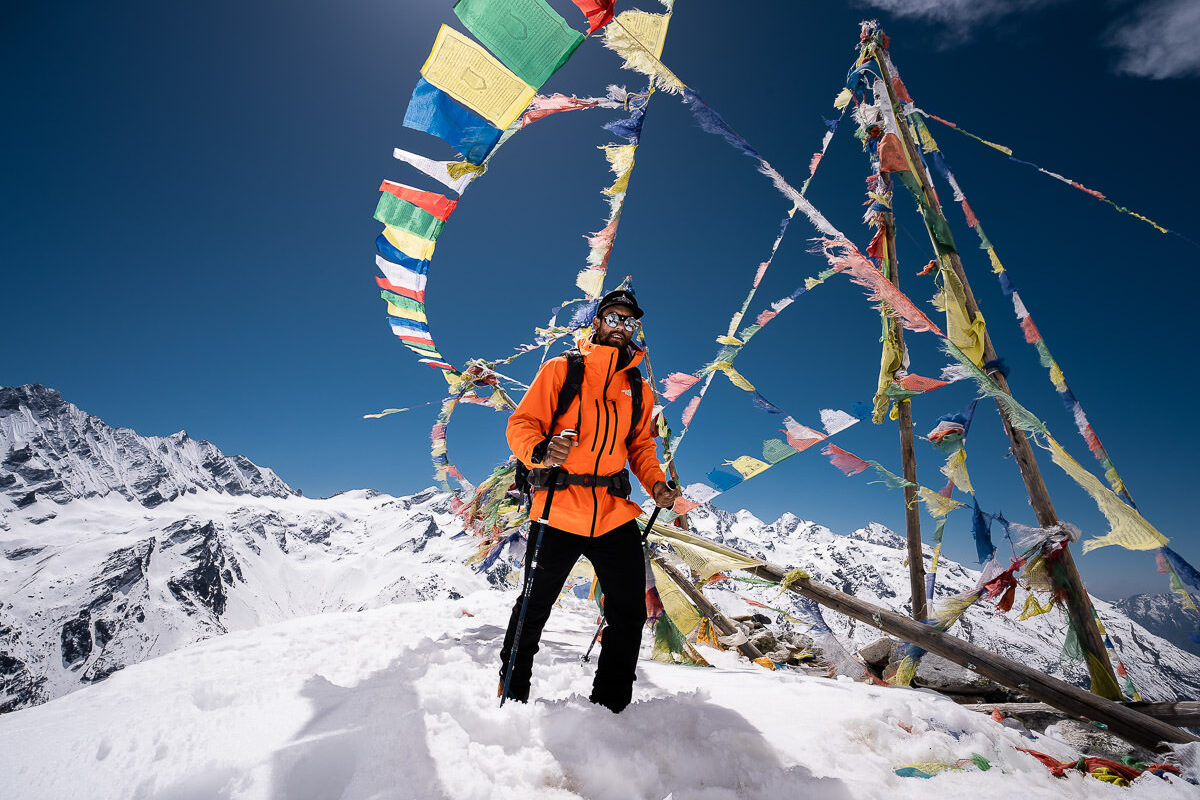
The Langtang Valley Trek is a unique expedition in the Himalayas of Nepal. While shorter than many other popular treks in Nepal, the adventurous expeditions and day-hikes throughout this route make it one of my favorites. After three days of trekking, you will reach Kyanjin Gompa. From this small mountain town, there are several incredible day-hikes with fantastic views.
The short 3-day trek into Kyanjin Gompa makes this trek shorter, cheaper but arguably more beautiful than other treks such as Manaslu Circuit, Everest Base Camp Trek, or the Annapurna Circuit. I did this trek with the trekking company Himalayan Masters who I’ve trekked with
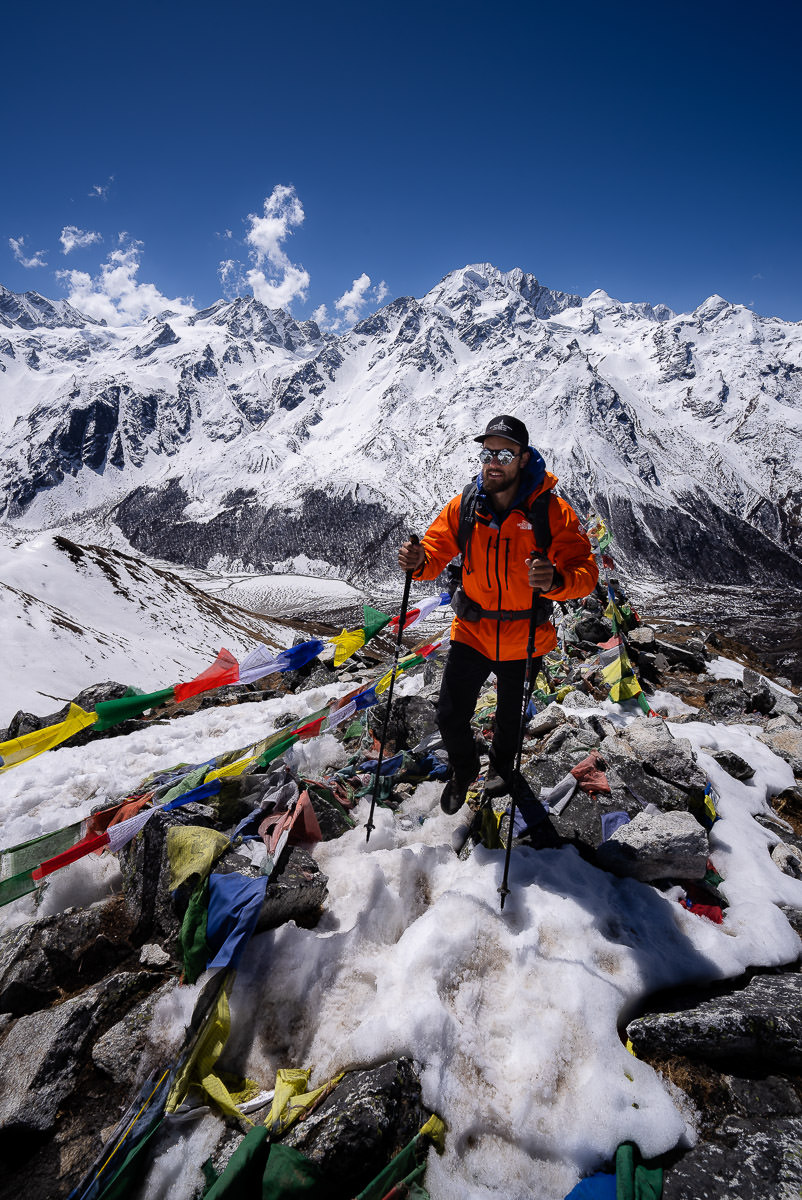
In this blog post, I will cover everything you need to know about the logistics of the Langtang Valley Trek. I’ll also share with you my experience on each day of the trek in the form of a short journal entry and my photos from that day. This will give you an idea of what to expect and a great insight into the scenery you will find on each day of the trek. I’ve already created a lengthy guide for the nearby viewpoints such as Tserko Ri, Kyanjin Ri, or the climb of Yala Peak .
Before sharing my experience in the second section of this blog post, I will detail all of the information you have to know in this complete guide about the Langtang Valley Trek and climbing Yala Peak.
BEST TREKKING COMPANY IN NEPAL
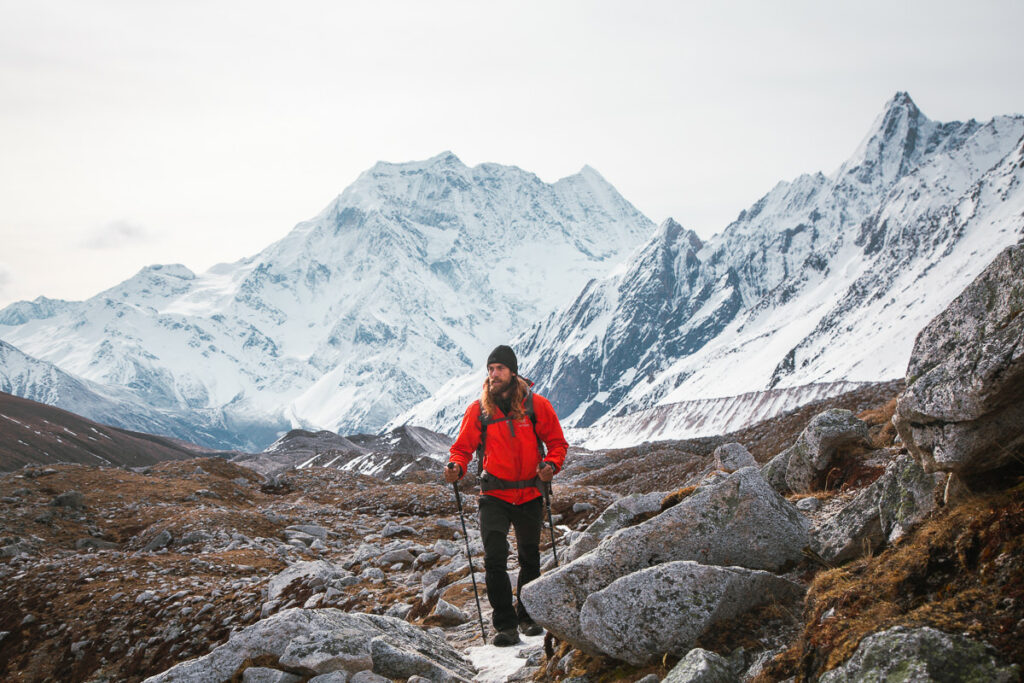
Interested in trekking in Nepal or doing the Everest Base Camp Trek? I recommend booking your trek with Himalayan Masters , which is the company I use for all of my treks in Nepal. Use my code JACKSON5 when you book to receive a 5% DISCOUNT .
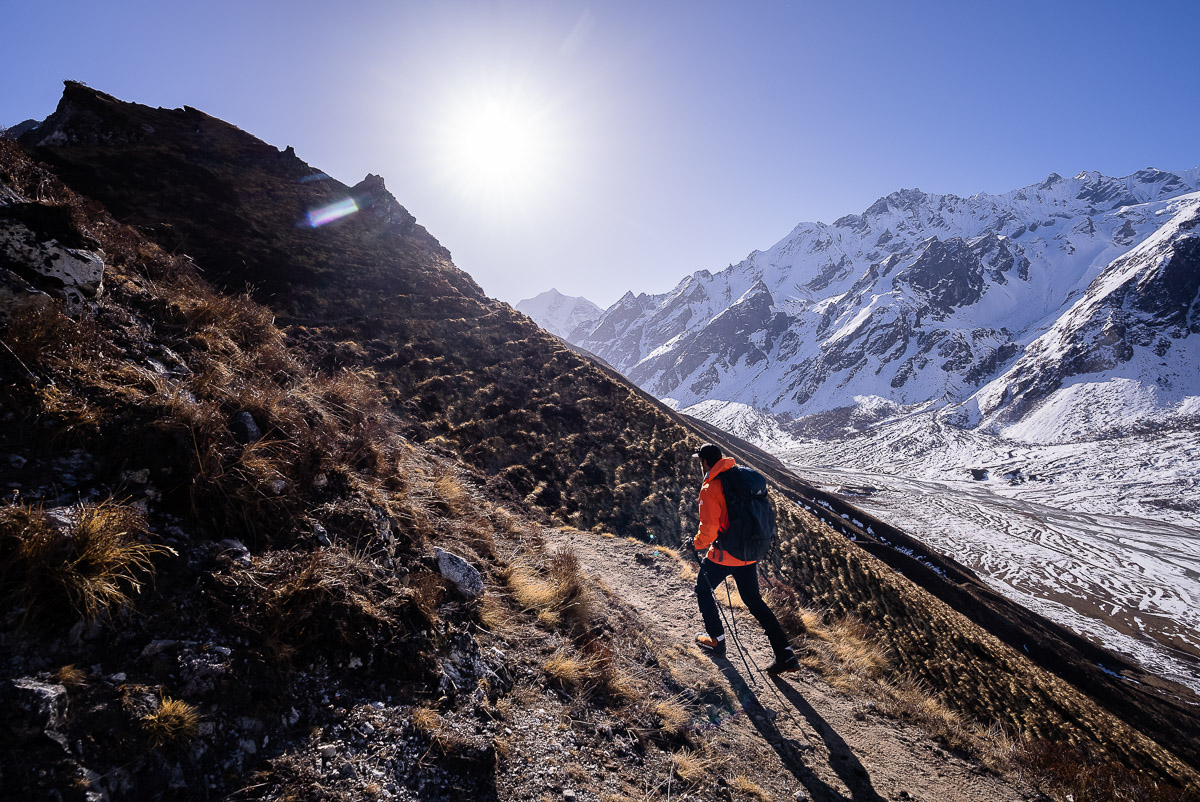
Table of Contents
A GUIDE TO THE LANGTANG VALLEY TREK
In this guide, you will find all of the valuable information you need to plan your trek as well as my personal experience on the entire trek including the Kyanjin Ri Viewpoint, Tserko Ri Viewpoint, and Yala Peak climb.
LANGTANG VALLEY TREK DETAILS
- Distance : 77km or 48 miles
- Days required : 9 days including 2 days of transit to and from Kathmandu (7 days trekking)
- Total Incline : 4000 meters
- Total Decline : 4000 meters
- The highest point on the trek : From Kyanjin Gompa you can reach Kyanjin Ri (4,773m) or Tserko Ri viewpoint (5,033m). Additionally, you can climb Yala Peak from Kyanjin Gompa, which has an altitude of 5,500m.
- Difficulty : The Langtang Valley Trek is much shorter than Everest Base Camp or the Annapurna Circuit although relativley similair. You will reach an altitude of 5000m, which will challenge many. Altitude sickness can be common. The route ascends quite quickly with several days having more than 1000m of altitude gain. These days of ascent are tiring and also require the body to adjust quickly. It is a good beginner trek in Nepal but not one to be taken lightly.
- Permits : You will need a TIMS card and Park Entrance Permit, both can be purchased when entering the park.
- Guide: A guide is not required on this trek. However, the guide manages all of the logistics, distances, directions, and tea houses for your group. I used maps.me to navigate from tea-house to tea-house and found the paths easy to follow. If it’s your first time trekking in Nepal, I would suggest having a guide.
- Accommodation: Guest Houses, also known as Tea Houses, are available along the way where you will sleep in a comfortable bed and have access to showers (extra charge) and restaurant facilities. It was very comfortable accommodation and great after a long day of hiking. Most of the villages were Tibetan, which gave us a great insight into their unique culture.
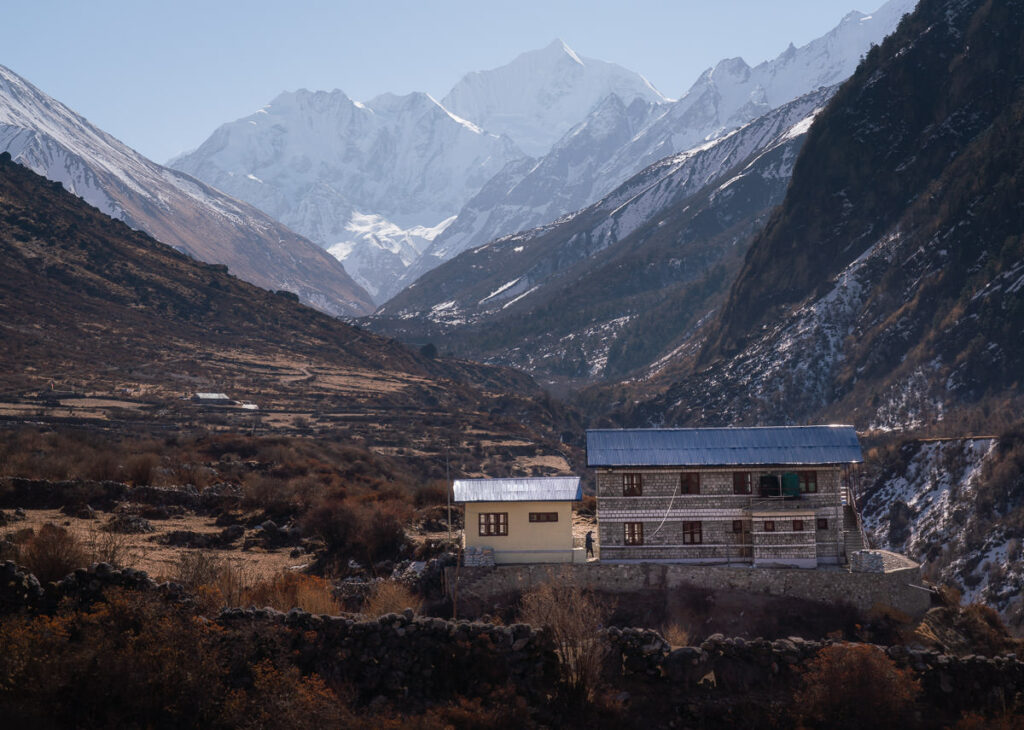
TRY THE 3 BEST TREKS IN NEPAL

Manaslu Circuit : My personal favorite 2-week trek through Tibetan villages and stunning scenery. Less crowded and more authentic.
Annapurna Circuit : The most beautiful & scenic 2-week trek in Nepal although can be crowded at times.
Everest Base Camp Trek : The most iconic 2-week route reaching the famous (EBC) Everest Base Camp at 5,300m.
KEY POINTS ABOUT THE LANGTANG VALLEY TREK
- This circuit is way less crowded than Everest Base Camp Trek or the Annapurna Circuit. It is growing in popularity but it’s still a great time to trek this circuit before it hits the mainstream.
- There are teahouses in each village along the way so each night you get a great sleep in a bed with blankets, have access to showers, eat great meals in a restaurant, and can charge your electronics and cameras.
- The trailhead can be reached by car so there is no need to pay for expensive domestic flights.
- I think it is important to base in Kyanjin Gompa for atleast three nights so you can hike up to Kyanjin Ri and Tserko Ri, which are the highlight of the trip.
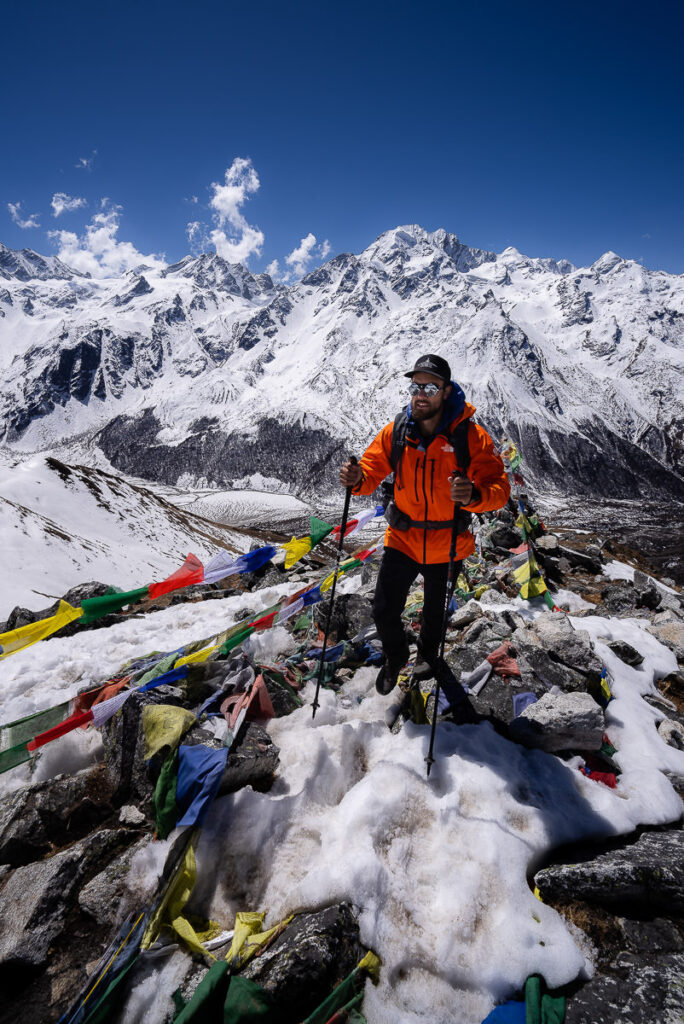
BOOKING A GUIDE FOR THE LANGTANG VALLEY TREK
The Langtang Valley Trek doesn’t require a guide but it’s great to have a guide managing the logistics such as directions, tea-houses, distances, medical issues, and the overall organization. I’d say 80% of trekkers go with a guide. I did the trek with Himalayan Masters which is one of the top trekking companies when it comes to the Langtang Valley Trek.
The trek costs around $800 USD with Himalayan Masters as of 2022 and includes all transfers, accommodation, meals, drinks, permits, and even the hotel stay before and after the trek at a high-quality hotel. I honestly had a great time on this trek and I can wholeheartedly recommend Himalayan Masters.
You can use my discount code ‘ JACKSON5 ‘ for 5% off the total price of your trek with Himalayan Masters which is a pretty handy saving.
Email: [email protected]
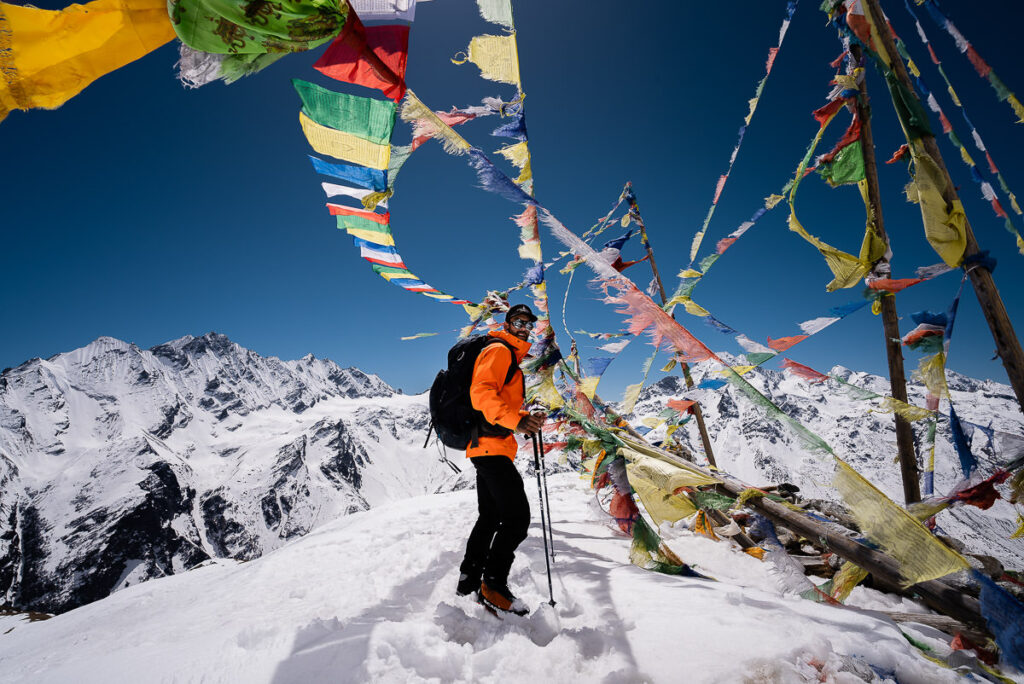
LANGTANG VALLEY TREK PACKING LIST
I packed pretty light and managed to wash most of my clothes each afternoon/night for the first half of the trip. In the latter stages of the trip, it was pretty cold so we weren’t sweating as much and we wore our warm gear basically nonstop while at the teahouses. There was no real need for multiple outfits.
This is just a guide and it worked quite well for me with no complaints from my set-up. You won’t need a sleeping bag as there are blankets in each guesthouse and when it got cold I just wore my down jacket to bed. This meant I didn’t have to carry a sleeping bag for the entire trek.
- 1 pair of pants that maybe convert to shorts
- 1 pair of shorts
- 1 Warm or thicker pair of hiking pants
- 1 Long sleeve quick-dry shirt
- 1 Long-sleeve thermal shirt
- 2 Short-sleeve t-shirts
- 1 Thermal long underwear
- 4 pairs of quick-dry underwear
- 1 Lightweight down jacket
- 1 Heavy-duty summit down jacket
- 1 Neck Buff
- Hiking boots
- 1 pair of warm summit socks
- 2-3 pairs of regular socks
- Trekking poles
- Water filter
All of this should fit into a backpack no bigger than 50L and should be less than 14kg.
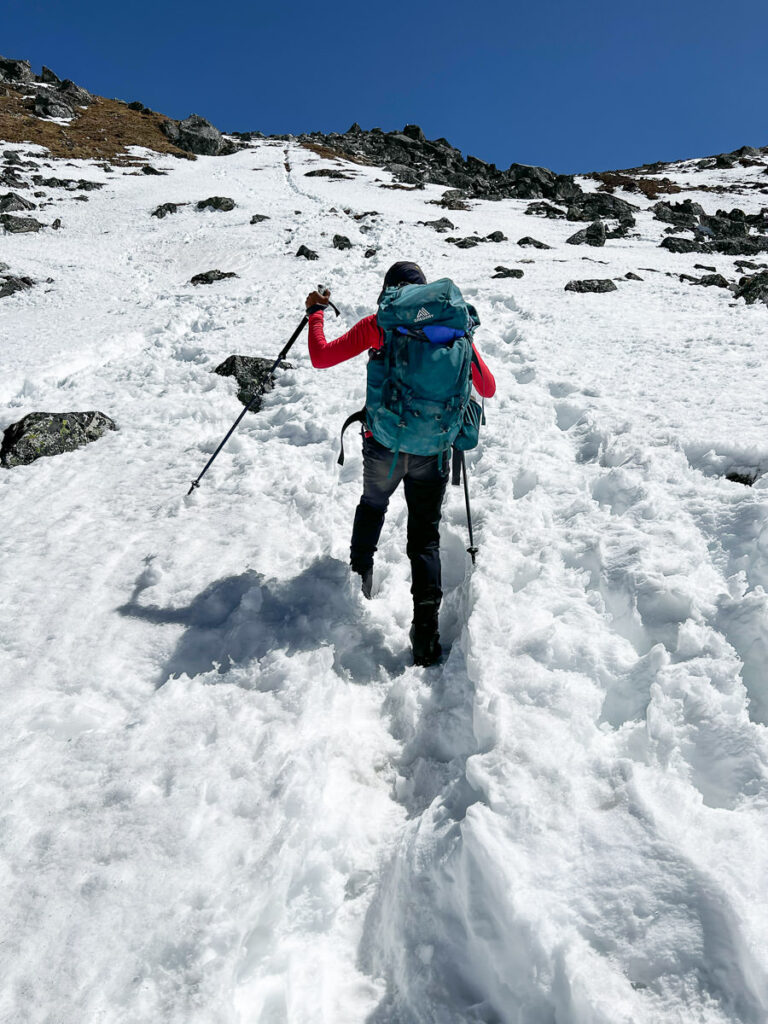
WIFI/ELECTRICITY AVAILABILITY ON THE LANGTANG VALLEY TREK
- Wifi: Costs anywhere from $free to $4 to use wifi at the guesthouses. Buy an NTC Sim before you go. It worked in most spots after Lama Hotel with a weak signal but we were able to send emails, watch Youtube, and message friends from Langtang and Kyanjin Gompa.
- Electricity: You will have to pay anywhere from $free at low elevation to $5 to charge your power banks, cameras, and phones. The key is to get a big power bank. Pay to charge it then charge everything from your power bank. My power bank lets me charge my phone and four camera batteries before it dies. Most of the places we stayed let us charge our gear for free but when it is busy they usually charge a fee as many teahouses run off gas or solar.
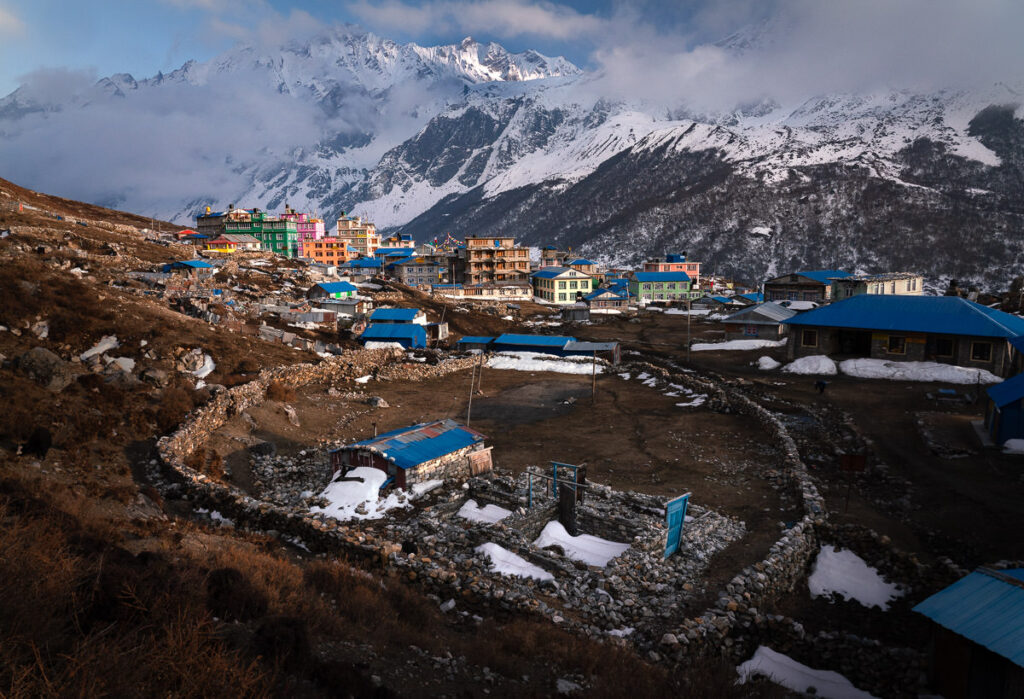
TOP 3 PLACES TO STAY IN KATHMANDU

- Ultimate Luxury: The Dwarika’s Hotel – Luxury, Spa-service, Pool
- Best Value : Aloft Kathmandu Thamel – Swimming Pool, Gym & Great Restuarant
- Budget Choice: Hotel Jampa is easily the top cheap hotel in Kathmandu
LANGTANG VALLEY TREK ITINERARY
This is one of the shorter treks in Nepal and has a straightforward itinerary.
- Day 1 : Drive from Kathmandu to Syabrubesi (1550m) 7 hours
- Day 2: Syabrubesi to Lama Hotel (2,380m) 6 hours
- Day 3 : Lama Hotel to Mundu via Langtang Village (3,430) 6 hours
- Day 4: Mundu to Kyanjin Gompa (3,870m) 3 hours
- Day 5 : Kyanjin Gompa to Tserko Ri to Kyanjin Gompa (5000m) 7 hours
- Day 6: Kyanjin Gompa to Lama Hotel (2,380m) 6 hours
- Day 7: Lama Hotel to Syabrubesi (1550m) 6 hours
- Day 8: Drive from Syabrubesi to Kathmandu 7 hours
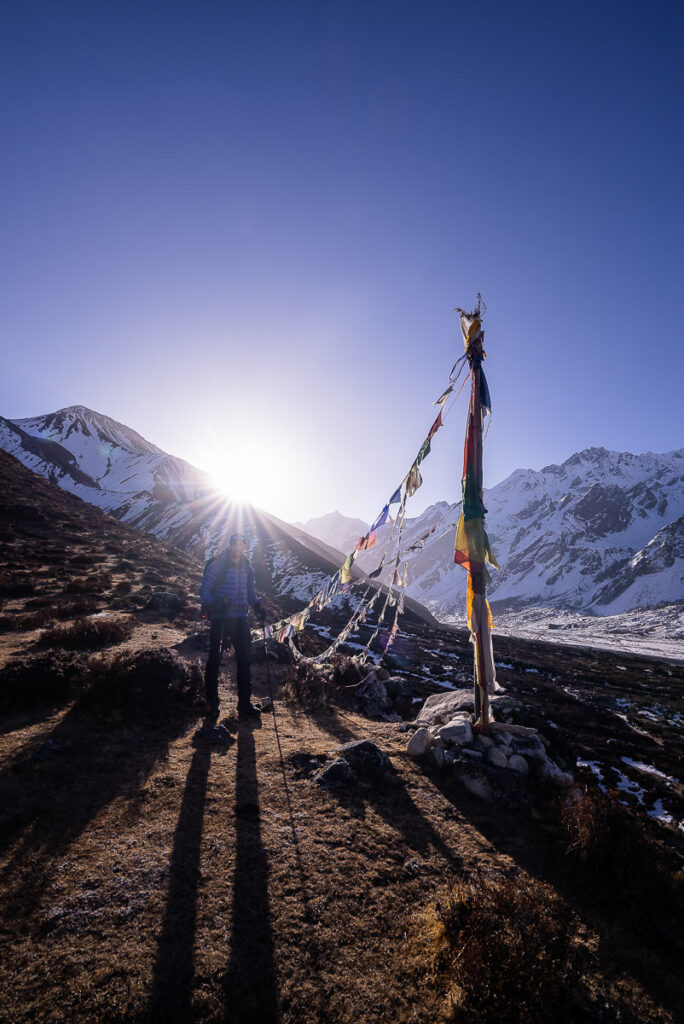
THE FULL VLOG FROM OUR LANGTANG VALLEY TREK
DRINKING WATER ON THE LANGTANG VALLEY TREK
I use the Grayl Ultralight Water Purifier and it is a game-changer for hiking in Nepal, making this super easy and cheap. The Grayl Ultralight Water Purifier removes 99.9999% of viruses of disease-causing bacteria. The best thing about it is it only takes 15 seconds and one press to purify water from any fresh water source. You don’t need to buy bottled water at every tea-house contributing to large amounts of plastic waste and costing you $4+ per day.
Along the Langtang Valley Trek, we filled up at tea-houses, rivers, and local village taps. Unlike aqua purification tablets which require you to wait 30 minutes before drinking, you can have rehydrated yourself immediately with the Grayl Ultralight Water Purifier .
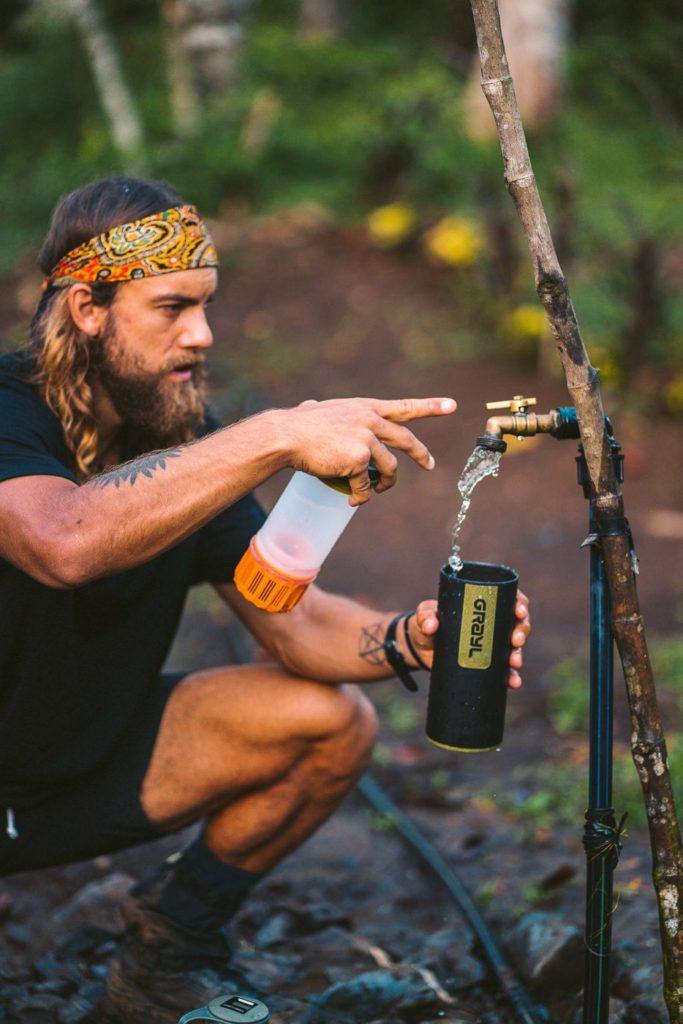
GrayL Water Purifier
- Never pay for water on the trek
- Save 3-4 plastic water bottles a day
- Turns any water into drinking water
INSURANCE FOR THE LANGTANG VALLEY TREK
Nepal can be a dangerous place for trekking or hiking because the high altitude can lead to many illnesses, weakness in trekkers, and misjudgments. There is also a risk on trails for falls, avalanches, or other mishaps. Your regular travel insurance probably won’t cover you at high altitude and won’t cover a helicopter evacuation. There is a solution though .
Need extra protection?
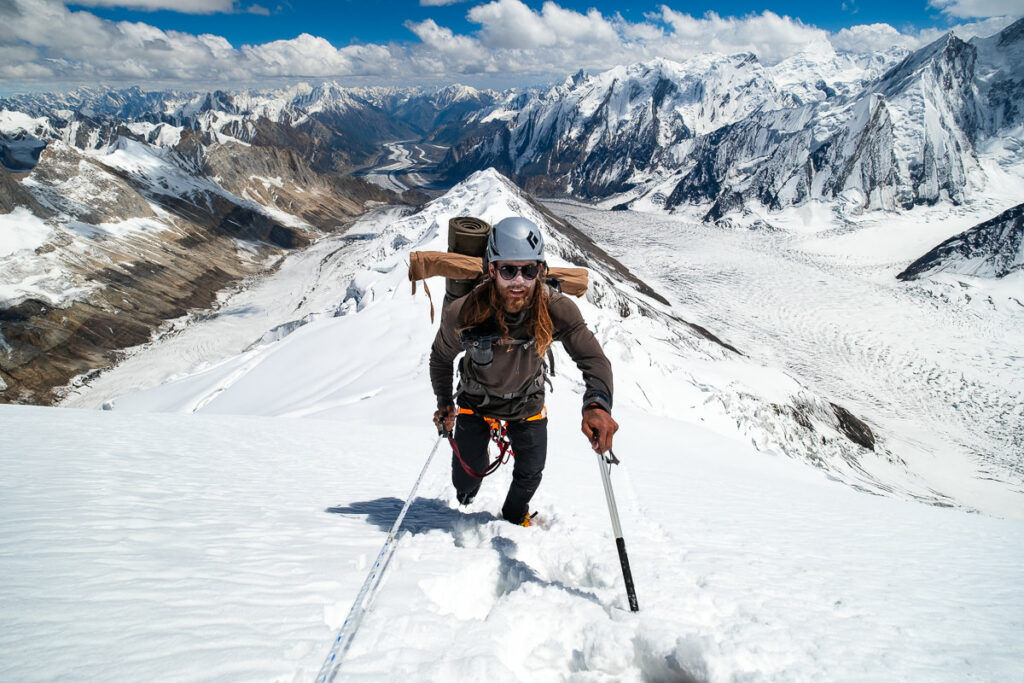
Regular travel insurance is great but won’t cover you for high altitude hikes or for helicopter evacuation. Each year, I purchase a Global Rescue Subscription .
For less than $500 per year or $100 per expedition, you can purchase a Global Rescue subscription and be covered no matter how extreme the hike or how high the climb is.
BEST TIME AND SEASON FOR THE LANGTANG VALLEY TREK
The peak season for the Langtang Valley Trek is March to April and October to November. The time to avoid this trek is during the rainy season from June to August .
During the winter from December to February, this region gets very cold and there will be snow cover in the higher parts of the trek. Many of the guesthouses actually close up for the winter and re-open in late February to March. However, it is possible to hike the Langtang Valley Trek on the fringe of the season in late February/early March and it can be quite beautiful with snow cover.
I hiked the Langtang Valley Trek in early March and it was warm during the day and got pretty cold at night. We experienced some heavy snow on Tserko Ri and Yala Peak but the trekking routes were clear.
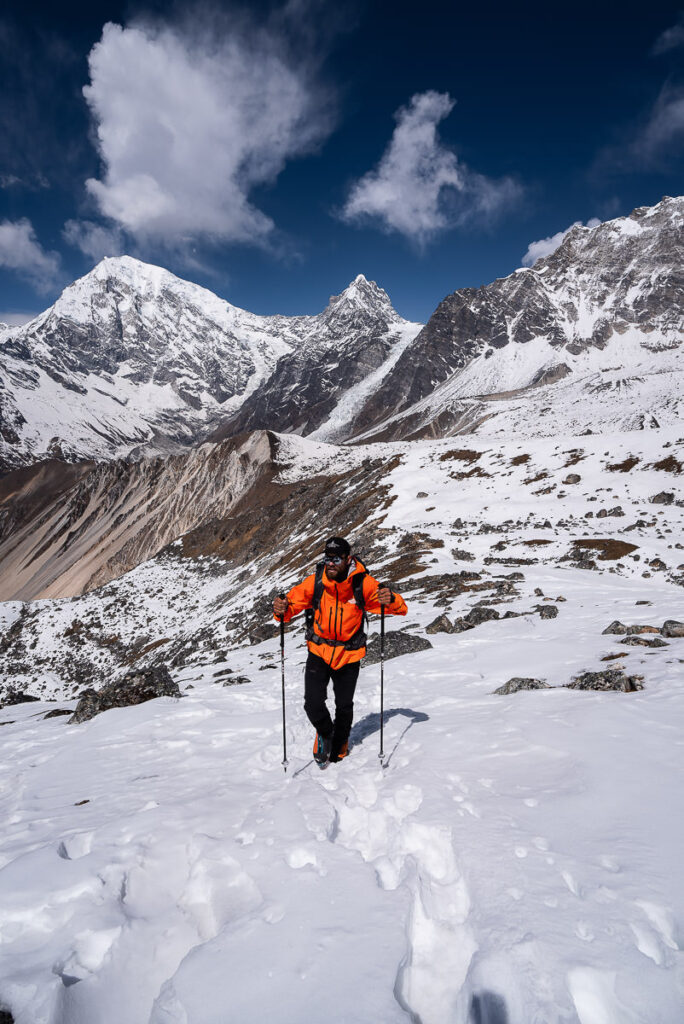
HOW TO GET TO THE LANGTANG VALLEY TREK
There are two main ways to reach Syabrubesi, which is the small town at the starting point of the trek. Despite the distance from Kathmandu to Syabrubesi only being 125km, the journey takes a long time due to the traffic and quality of the road.
Jeep: We went by private Jeep organized by our tour company Himalayan Masters. It costs about $180 to hire the vehicle out for the drive so can be split between your group. It’s not cheap but much less brutal than the lengthy bus journey.
Public Bus: The bus costs about $10 USD and can take anywhere from 7-10 hours depending on the traffic and if there are any roadworks or landslides recently. The bus leaves every day from Kathmandu to Syabrubesi at 6 am and 8 am as well as other defined times. The bus station in Kathmandu is called ‘ New Bus Station’ .
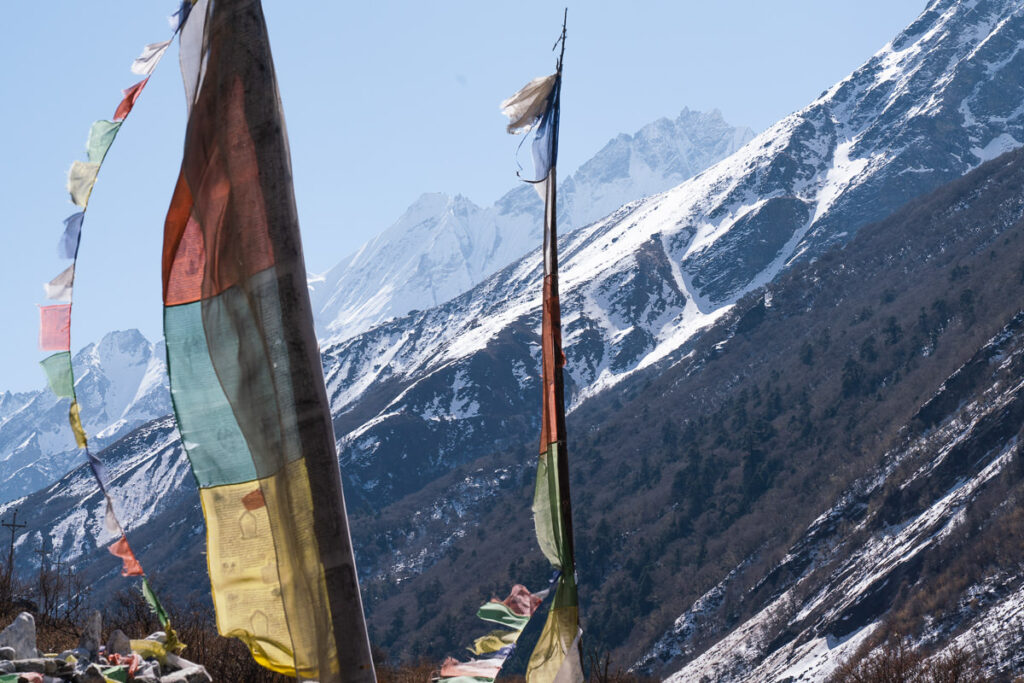
MY EXPERIENCE ON THE LANGTANG VALLEY TREK
Throughout this section of this guide, I will share my experience with each part of this trek. I found the Langtang Valley Trek quite unique as the trek in was actually not too exciting. However, it became an incredible experience once we reached Kyanjin Gompa and did the two hikes Tserko Ri and Kyanjin Ri as well as the Yala Peak climb.
So, unlike other treks where the trekking along the route is the highlight, I found that the time when we were based at Kyanjin Gompa was the highlight and found the trek into Kyanjin Gompa relatively mild.
TREKKING FROM SYABRUBESI TO KYANJIN GOMPA
Syabrubesi seems somewhat of a trekking town even though it is connected by road to the greater civilization. The main street is lined with guesthouses and some of the menus display prices that would see you are already in a remote mountain village.
I would recommend Hotel Lhasa for good Momo and friendly Tibetan owners. This is the last place you will have a reliable internet connection, a moderately warm shower, and a chance to buy any last-minute essentials.
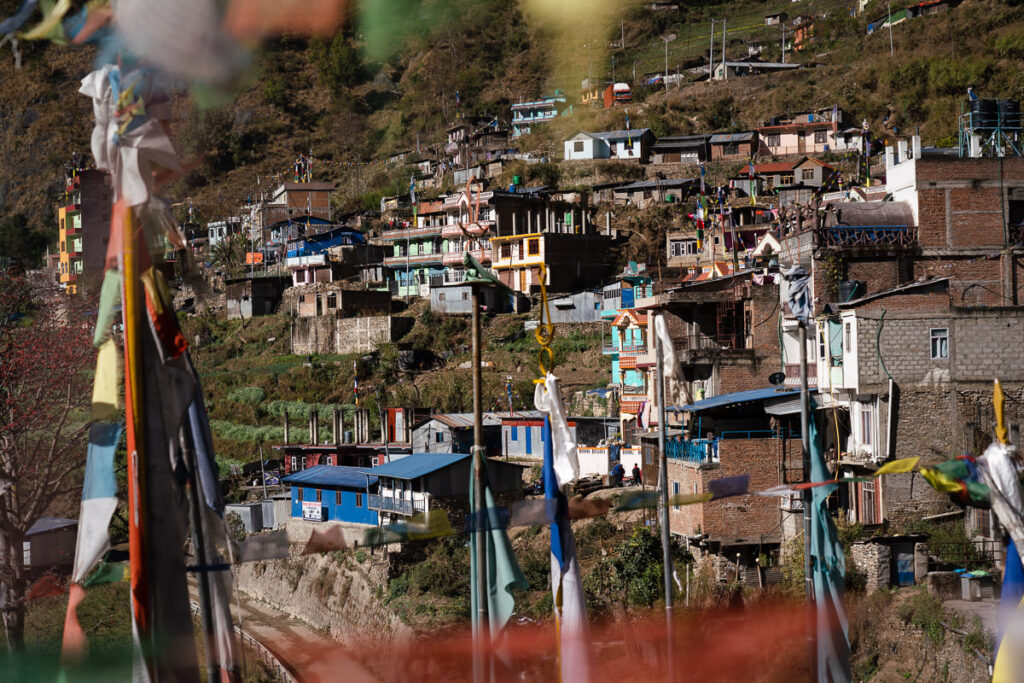
The journey from Syabrubesi to Kyanjin Gompa typically takes most trekkers three days. There are many different options for guesthouses along the way but most seem to follow a distinct route.
Lama Hotel (name of the town not the hotel) is the most common stop for the first night. The trek from Syabrubesi to Lama Hotel is quite intense and involves about 15 kilometers in distance. However, it is the 1200m of vertical gain and sun exposure that will knock you about.
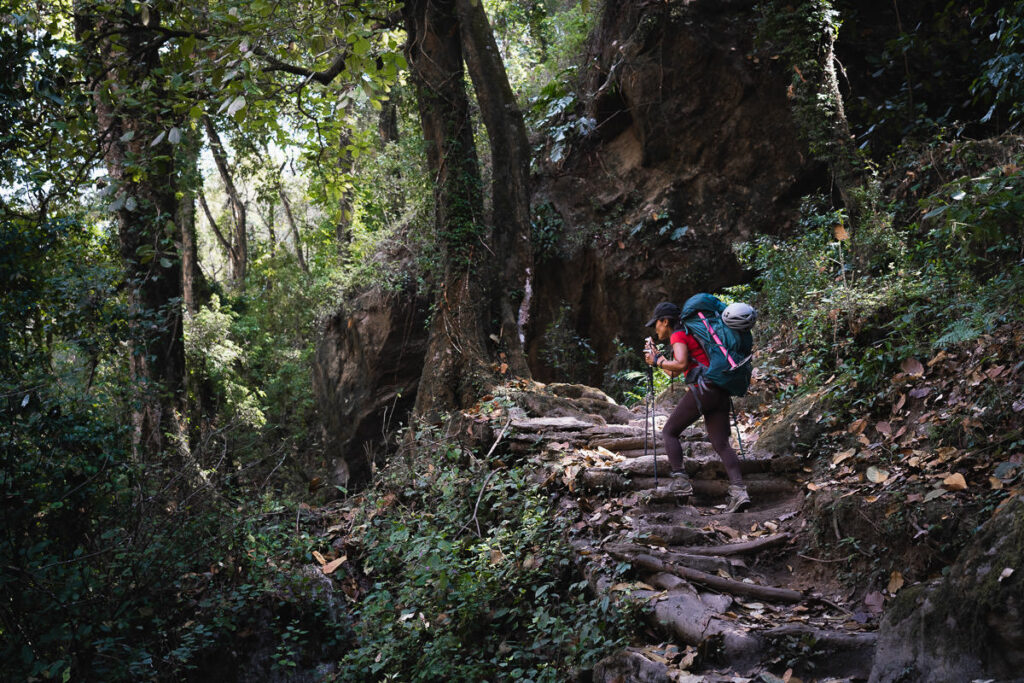
The trail begins alongside the river and has a lot of exposed sunny sections. The elevation isn’t high yet at just over 2300m so it can be very hot. Undulating alongside the river, the trail delves into the forest and careens up endless flights of rocky stairs. You can expect a few glimpses of snow-covered peaks but today is mostly about the river, forests, and a few bridge crossings as the highlights.
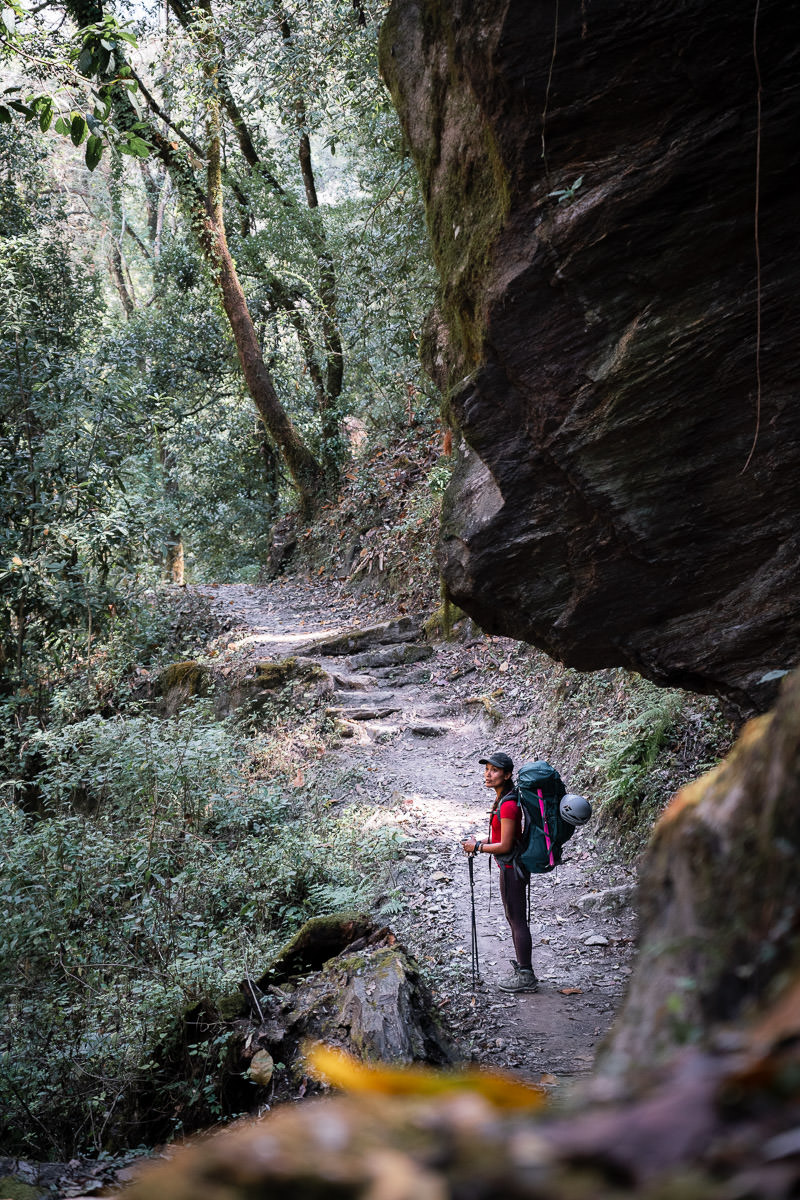
Upon reaching Lama Hotel, we were a little confused. There were six or seven hotels, all with Lama Hotel in their signage. Friendly Guest House Lama Hotel, Origin Lama Hotel, Sunrise Guest House Lama Hotel. It turns out this small village is just a collection of hotels and the location is known as Lama Hotel.
We ended up staying at the Friendly Guest House, run by a Tibetan family who was indeed friendly. Here we had a warm bucket shower, no signal, no electricity, great Tibetan food, a warm heater in the dining room, and comfortable beds with blankets. All you can ask for in the mountains really.
On our second day of trekking, we headed from Lama Hotel all the way to Langtang. You could stop earlier at smaller towns, but Langtang was recommended to us. The trail really opens up in the second half of the day as you break out of the forest and trek along the slopes of the valley towards Langtang.
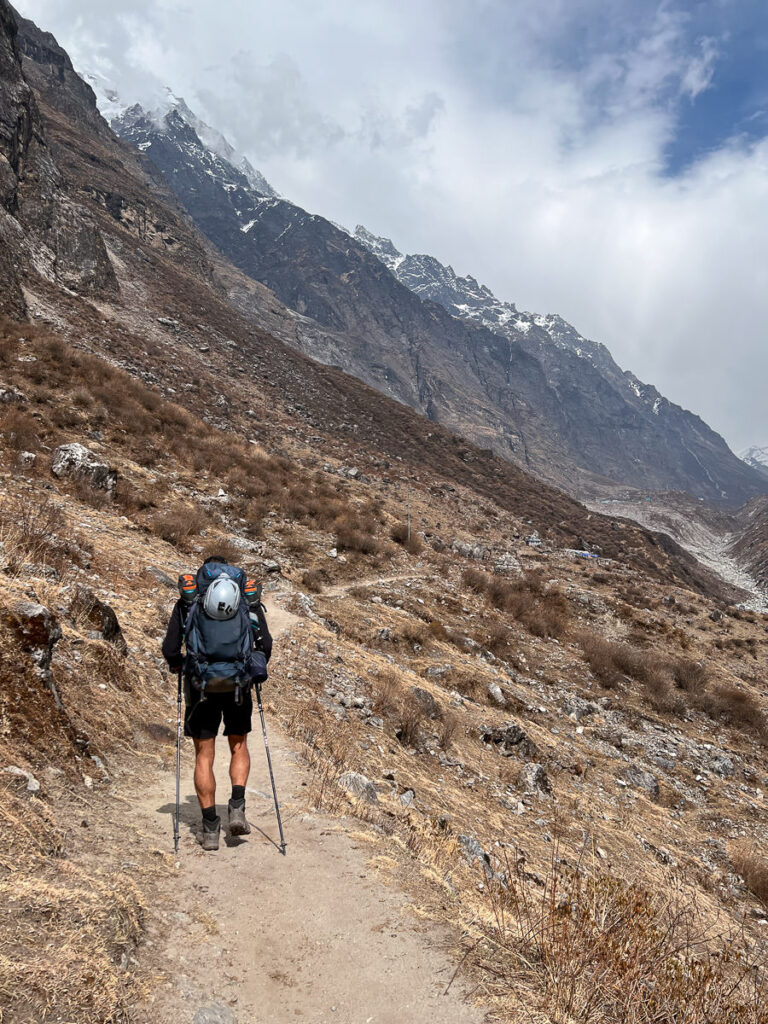
Snow-capped peaks begin to appear throughout the day. However, just after winter, the landscape is burnt orange. In the spring, you could expect lush green grass and wildflowers to create a much more vibrant setting. Personally, I prefer the trekking during the winter time when there are more snow-capped peaks.
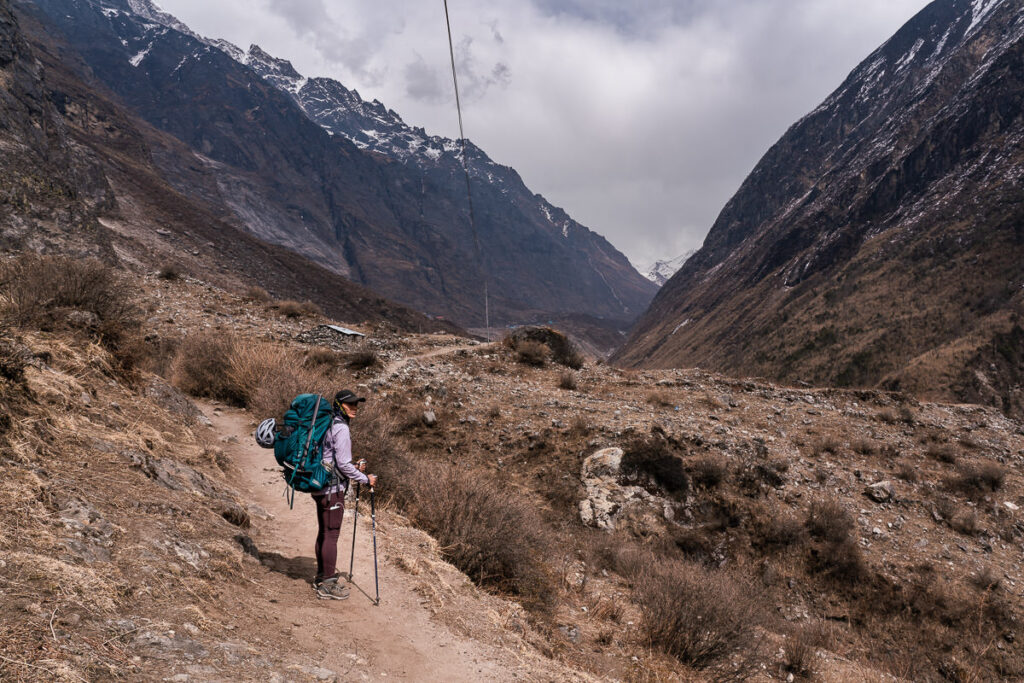
The journey from Lama Hotel to Langtang Village was about nine kilometers with almost 800 meters of incline. It was much softer than the first day but you are now reaching a higher elevation and may start to feel the oxygen thinning. In Langtang, I stayed at Chomo Valais and it had a hot shower and comfortable beds. It was similar to most tea-houses in the region and had a nice dining room with glass windows to enjoy the view.
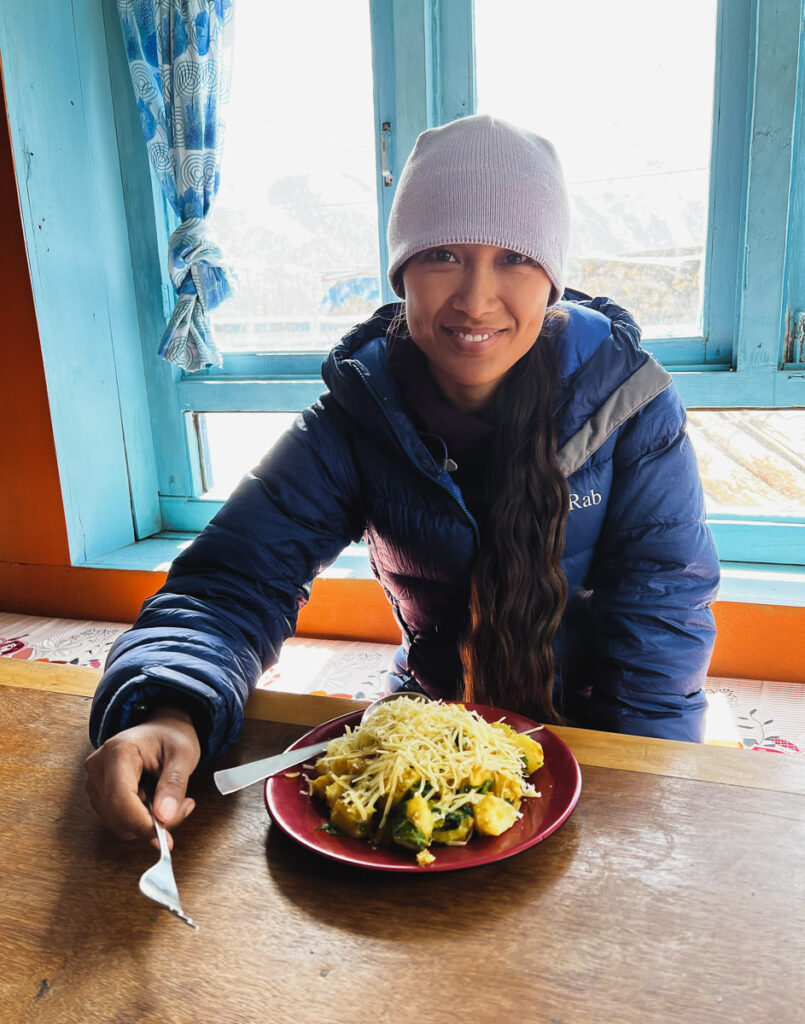
The final day of trekking from Langtang Village to Kyanjin Gompa is short and sweet. With just 6.5 kilometers and a few hundred meters of incline, it is by far the shortest day of the trek. Many people actually find it so short, they had up to Kyanjin Ri viewpoint on the same day as reaching Kyanjin Gompa.
On the way to Kyanjin Gompa, spectacular views of Tserko Ri and 7000m snow-capped peaks come into view. Following the river, you will pass by the stupa and monastery on your way into the town. Kyanjin Gompa is quite unique as the town is hidden from both sides until you basically reach the entrance due to the ridges and its hiding spot in the small valley.
I kept wondering when it would appear as the map said the entire town was just 150 yards away. I still couldn’t see any buildings, and then finally, we climbed the final hill and Kyanjin Gompa was revealed.
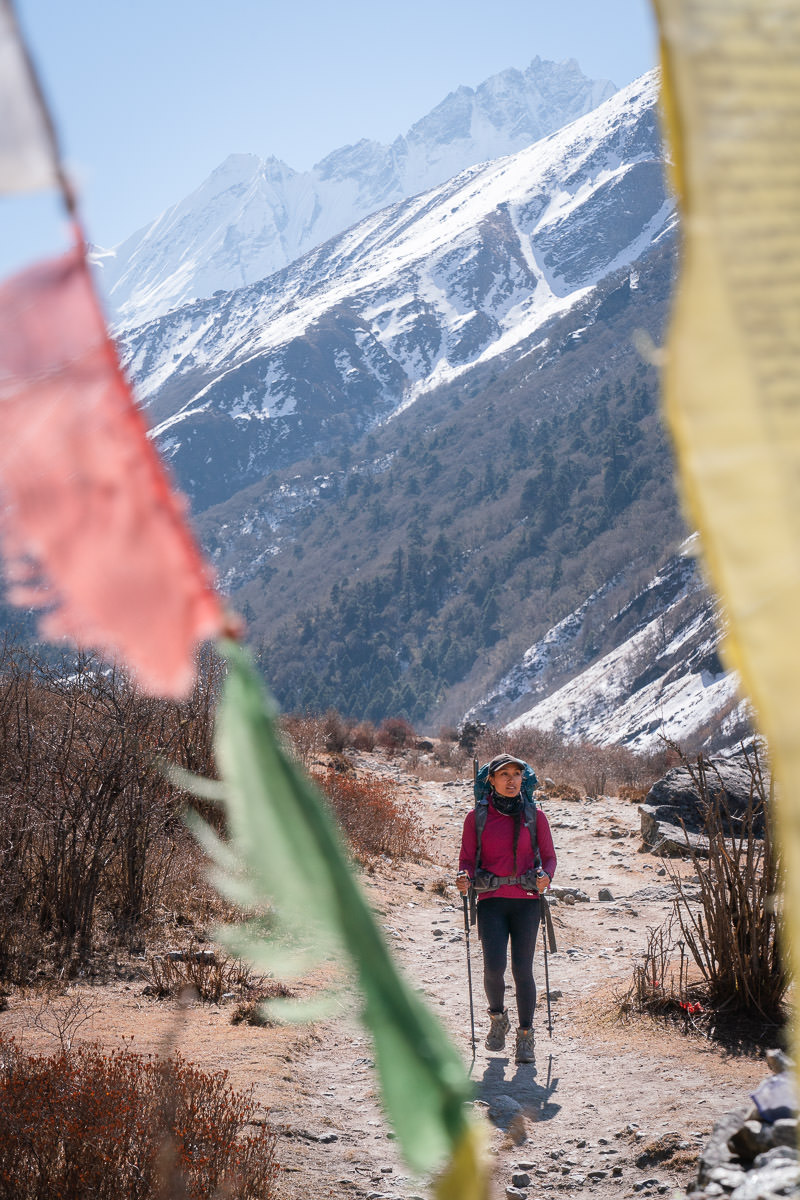
What are my favorite pieces of trekking gear?
There are six pieces of gear that I simply never forget when I go trekking. These are five items that I using right now and this list gets updated every year! Here are my trekking essentials.
- Arcteryx BETA AR Rain Jacket : This is my go-to rain jacket. It’s super light, folds down into a tiny ball, and protects brilliantly in a storm. This one never leaves my backpack.
- Salomon X Ultra 3 Mid GTX Hiking Boots : For the best ankle support, waterproofing, and durable exterior I’m a fan of tough but light hiking boots like these Salomons for my adventures.
- Black Diamond Head Torch : I can’t tell you how many times, I’ve arrived back from a hike unexpectedly late. I always keep this lightweight but strong headtorch in my bag for the unexpected.
- Darn Tough Socks : These are the most comfortable hiking socks I’ve ever worn and last for years. They also have a lifetime warranty and you just send them in with a hole and they replace it no questions asked.
- Osprey Atmos AG 65L Backpack : I’ve never had a more comfortable 65L pack than this one. I got it in the Navy Blue and have trekked with it through many a mountain.
- Bl ack Diamond Trekking Poles : They might feel weird at first, but on a long trek with incline and decline you’ll begin to love these.
- Grayl GeoPress Water Filter Bottle : I’ve used this for three years. It filters your water with one press and you can drink directly from it. Never buy a plastic water bottle again!
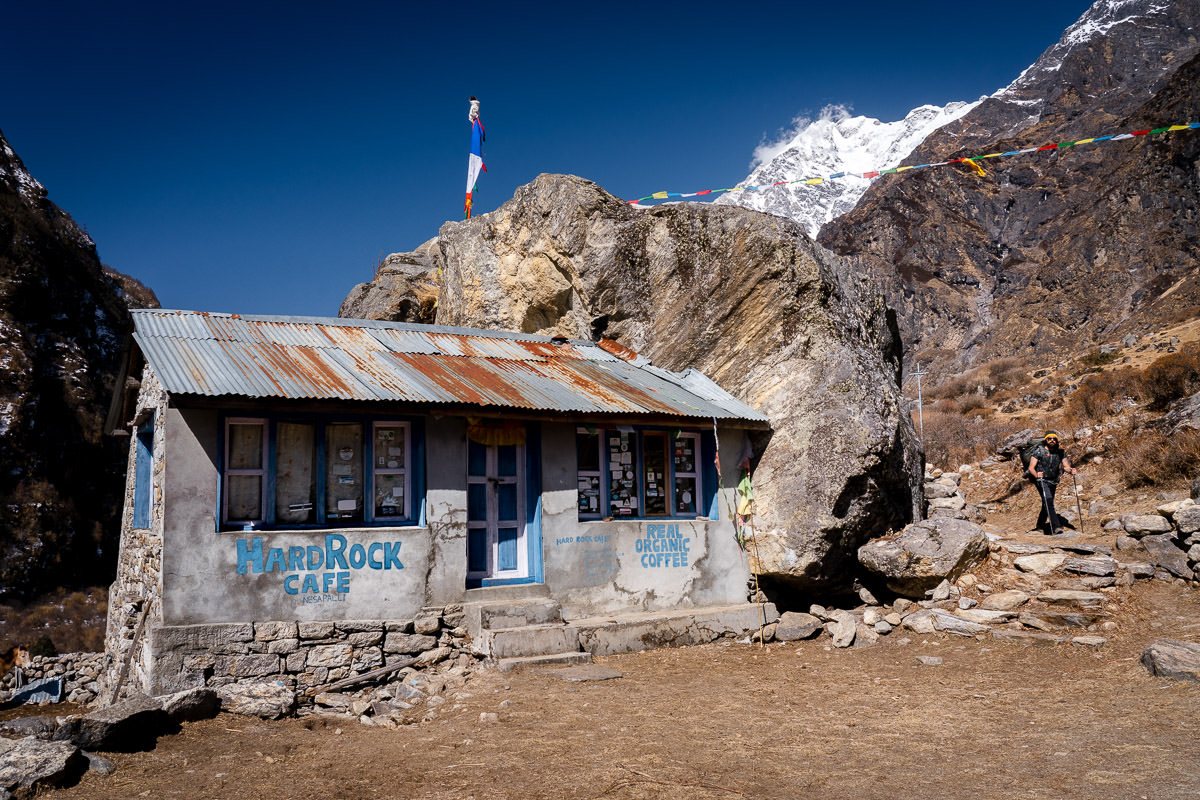
THINGS TO KNOW ABOUT KYANJIN GOMPA
Kyanjin Gompa is the end of the trek for most people. It’s a beautiful town with an incredible backdrop of snow peaks in all directions. The biggest mistake you can make on the Langtang Valley Trek is to stay one night and turn around and hike back down.
The absolute highlight of this trek is to base in Kyanjin Gompa for a few nights and spend one day hiking up Kyanjin Ri and one day hiking up Tserko Ri. We also spent another day climbing Yala Peak but that requires certain gear and experience.
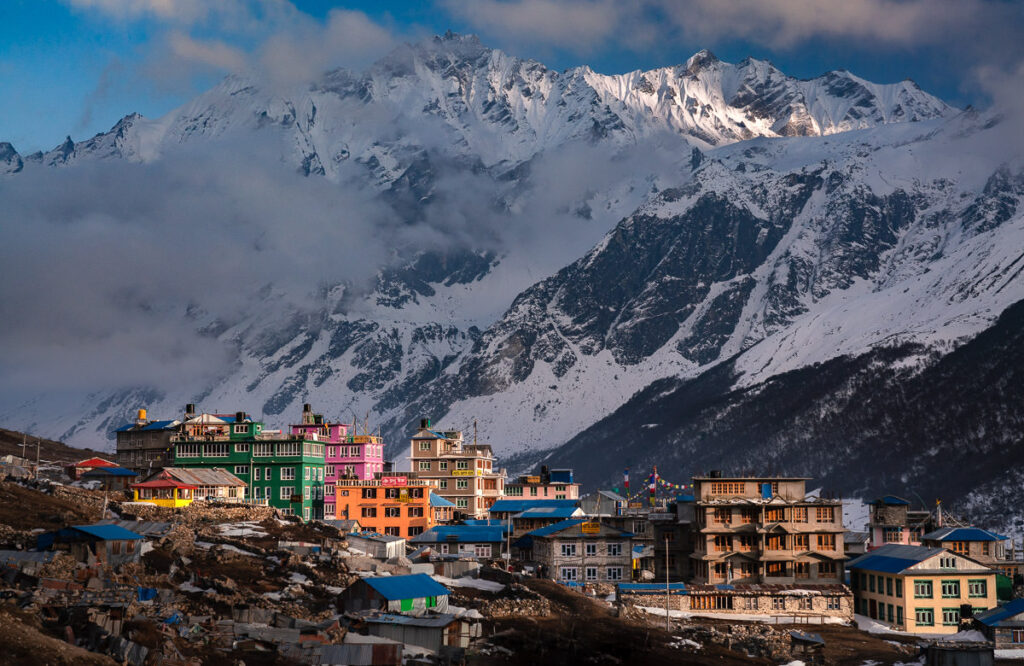
I ended up staying six nights in Kyanjin Gompa. My itinerary was the following:
- Yala Peak Base Camp
- Yala Peak/Sleep at Kyanjin Gompa
Understandably that is a lot of time but we were also trying to acclimatize for Yala Peak so we added in the rest days. The trek in to Kyanjin Gompa was good but not amazing. I really found that the time spent in Kyanjin Gompa was what made this trek is so great not the actual trek in itself. This is different from many other treks such as Everest Base Camp or the Annapurna Circuit where each day of trekking is the highlight rather than a specific destination or a specific town.
I stayed at Mountain View Hotel while in Kyanjin Gompa. It’s one of the smaller, older guest houses and I really enjoyed it here. Unlike many of the new multi-story hotels in the village, this hotel just had two floors and a cozy dining room.
Mipsang, the owner, is one of the kindest and most caring guys we’ve met in Nepal. Say hello to him for us if you end up staying there.
At Mountain View Hotel we had had water showers, internet connection from our sim card, great food, comfortable beds and blankets, and electrical outlets available in the room.
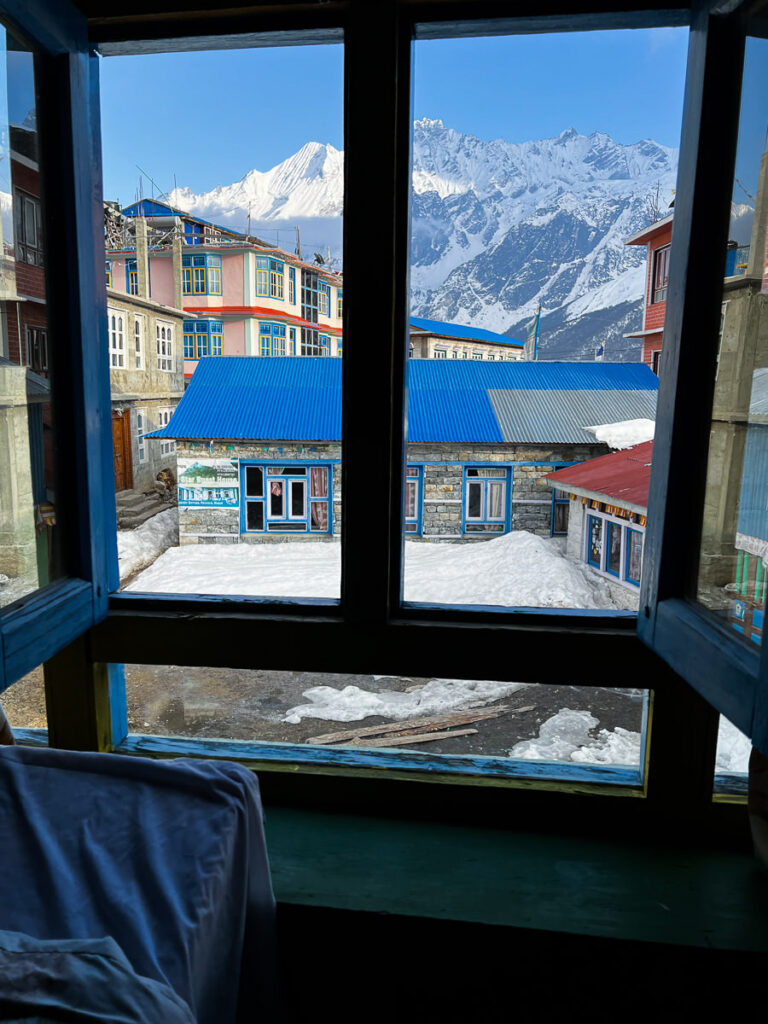
HIKING TO KYANJIN RI FROM KYANJIN GOMPA
From Kyanjin Gompa there are two awesome day-hikes. The smaller and most popular hike is Kyanjin Ri. This viewpoint towers over Kyanjin Gompa and has more than 700m of vertical gain in just a few kilometers. While short in distance, don’t underestimate this hike as it is incredibly steep and reaches heights of 4,700 meters.
The trail begins directly out of the town up the nearest ridge. A series of switchbacks leads you up to Lower Kyanjin Ri, which is the first viewpoint on the route. Covered in prayer flags, this viewpoint you will have you peering down over the entire town with jaw-dropping views across the valley.
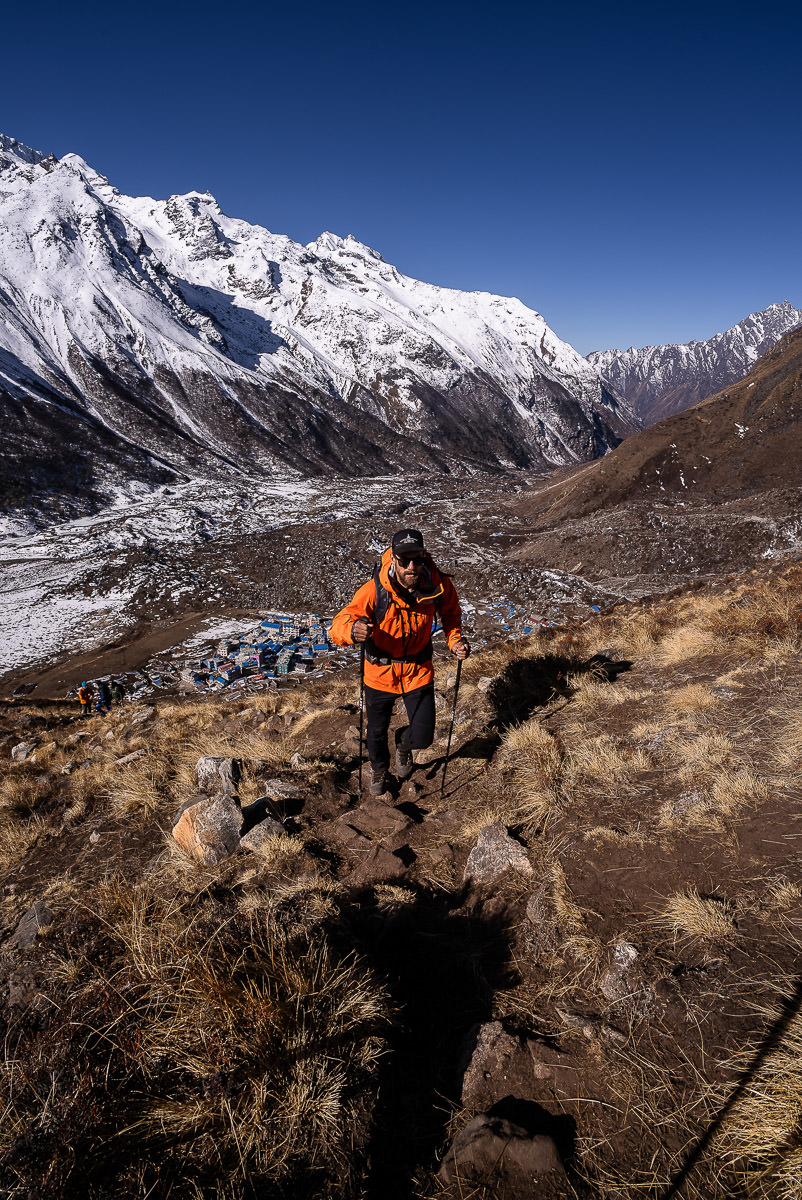
Continuing on, the ridge-line track continues higher and higher. We trekked just after winter and there was still considerable snow coverage for this trekking peak. Reaching Kyanjin Ri, we were walking across the snow at 4700m on a ridge overlooking the Langtang Lirung Glacier and the Langtang Lirung Peak (7,227m). To the right of Langtang Lirung you can find Changbu (6251m) and Yubra (6264m).
You can also spot Yala Peak (5,500m), which is the peak we ended up climbing on our trip to Kyanjin Gompa. And finally, across to the nearest peak, you can see Tserko Ri (5,000m), which will be your final objective on this trek.
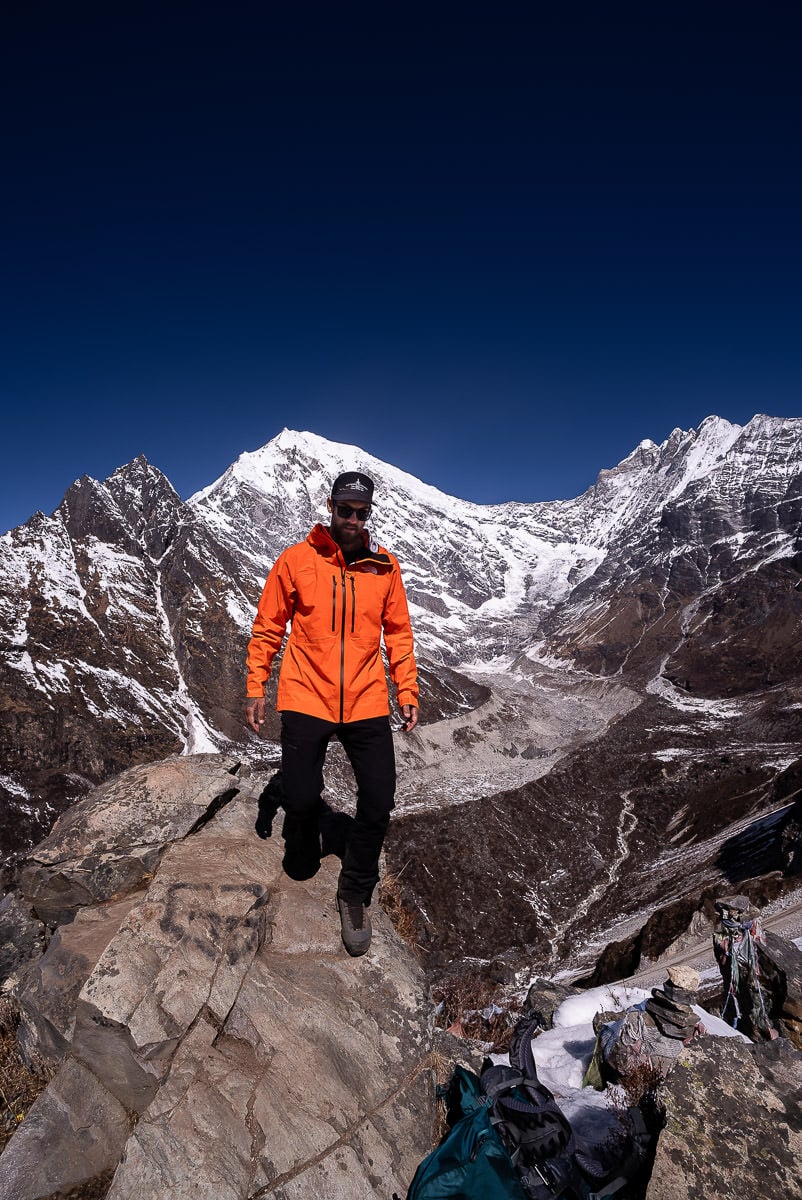
I suggest starting this hike just after sunrise as you won’t be too cold but you will also reach the summit before the afternoon clouds roll in. Take a packed lunch of Tibetan bread and an omelet from your tea house to eat at the summit and you are all set.
If you are interested in this expedition, I’ve written an entire guide about our Kyanjin Ri Hike.
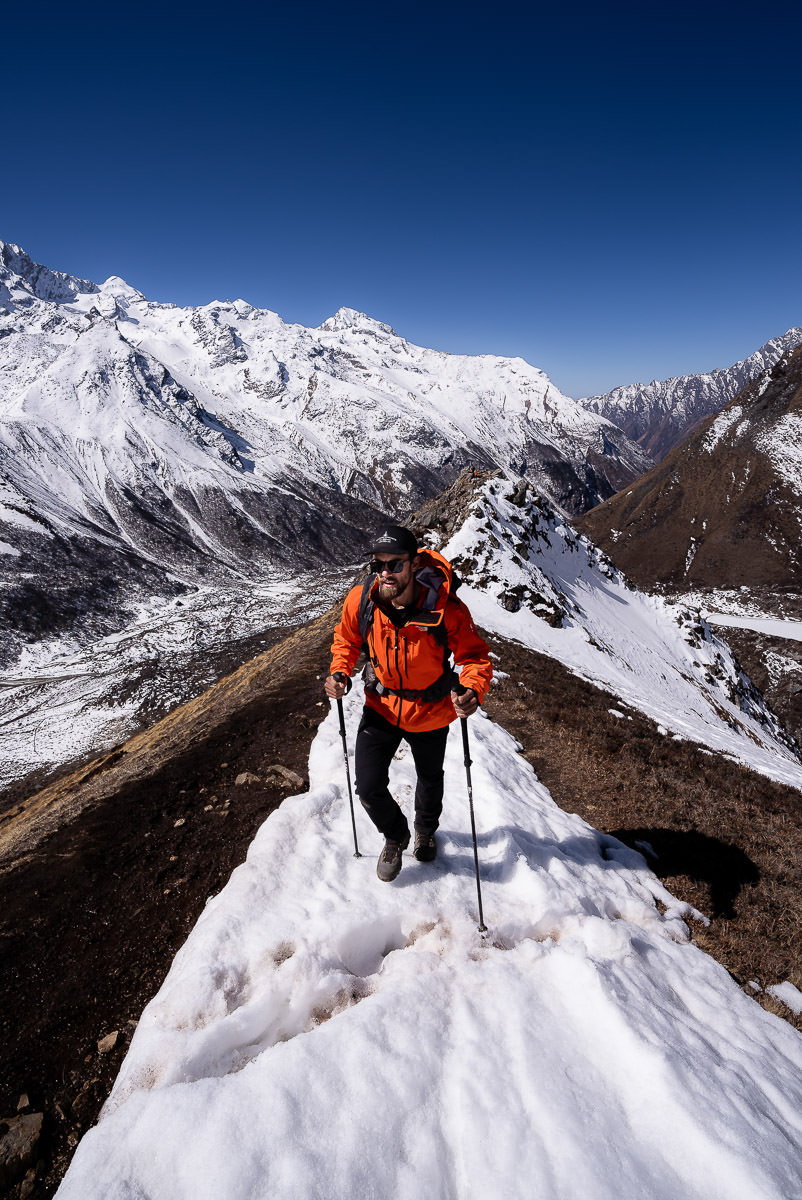
BEST INSURANCE FOR TRAVELERS
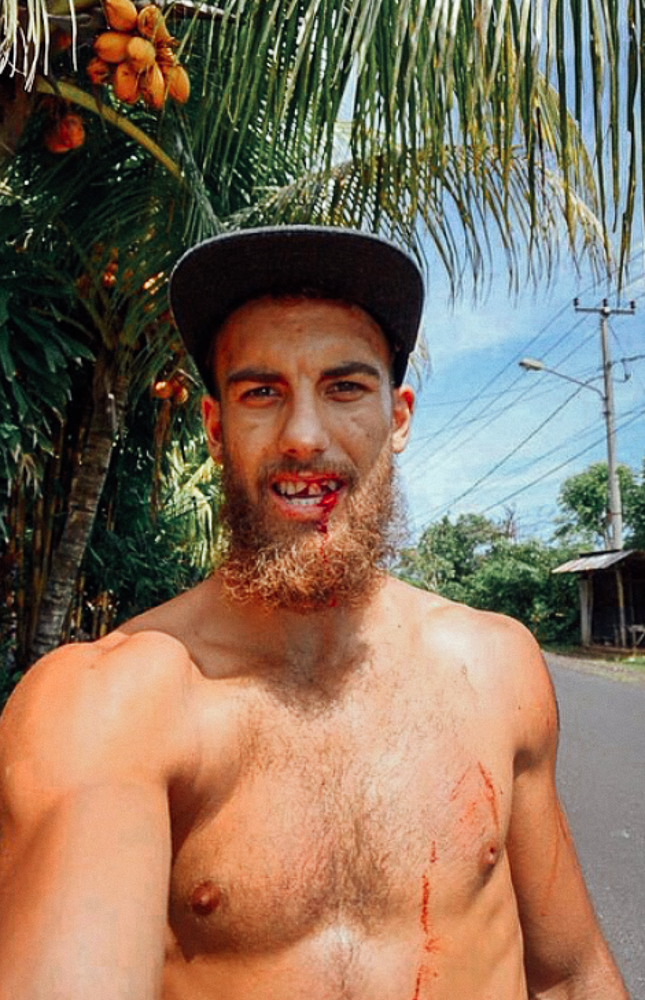
Don’t wait for an accident to happen… get insured! My travel insurance is HeyMondo which offers low-cost travel & medical insurance. That’s me on the left with three teeth knocked out after a motorbike crash in Bali!
You can click to read my Full Review of the Best Travel Insurance .
I’ve made several successful claims with HeyMondo and find their customer service very quick and helpful. Click the button below to get a 5% DISCOUNT
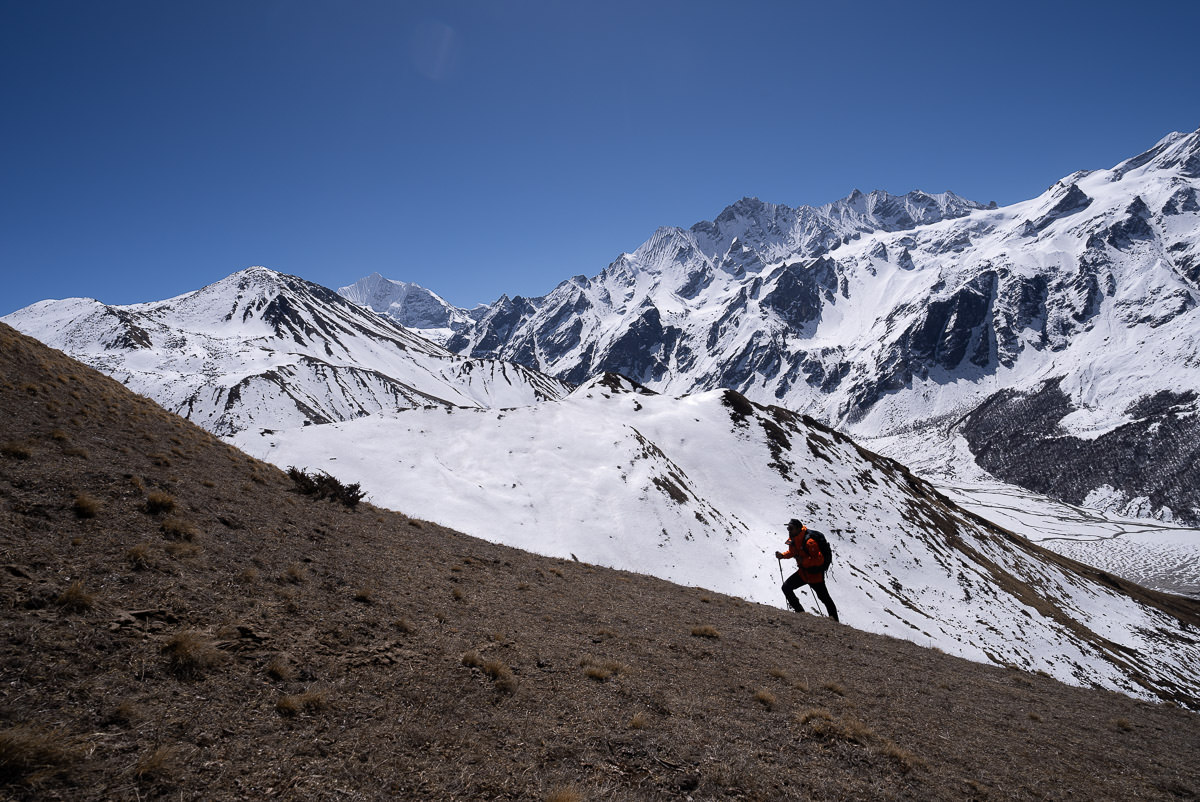
HIKING TO TSERKO RI FROM KYANJIN GOMPA
Tserko Ri (5,700m) is the finale for the Langtang Valley Trek. At 5,000m of elevation, this is a true test for trekkers against the elements and the altitude. It’s an optional day-hike, but one I highly suggest. Tserko Ri isn’t as hard as it sounds and is similar in many ways to its smaller brother, Kyanjin Ri.
The trek is about 8 kilometers in total with almost 1500m of incline throughout the day. It will definitely be a tough test and took us about seven hours to complete at a slow pace with lots of photos.
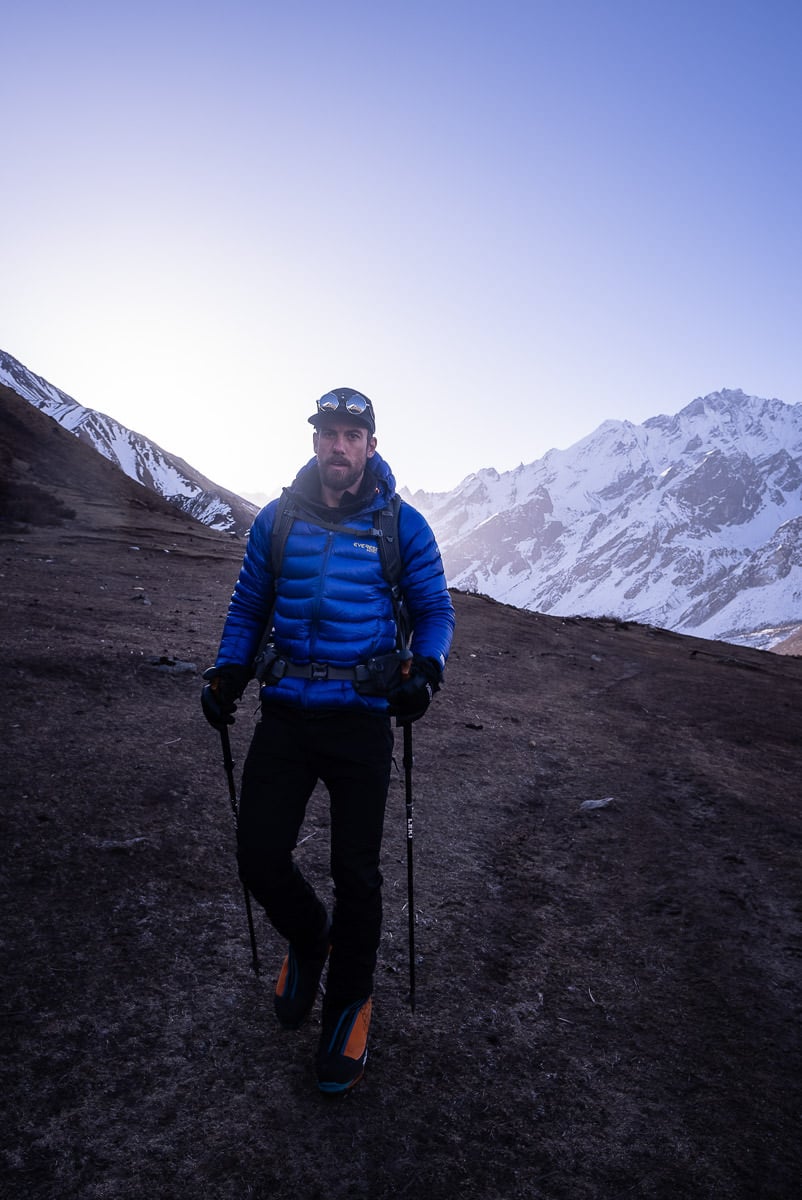
The trek takes you up a ridge all the way to the summit with very little danger to be found along the relatively wide and safe path. We visited just after winter and only encountered snow right at the last portion of the hike. Unfortunately, it was very soft and made it slow-going and difficult.
We managed to reach the summit and were the fourth and fifth people to touch the top for the season. Later in the season with less snow, this is a basic trekking peak and the only major consideration is the incline and the altitude.
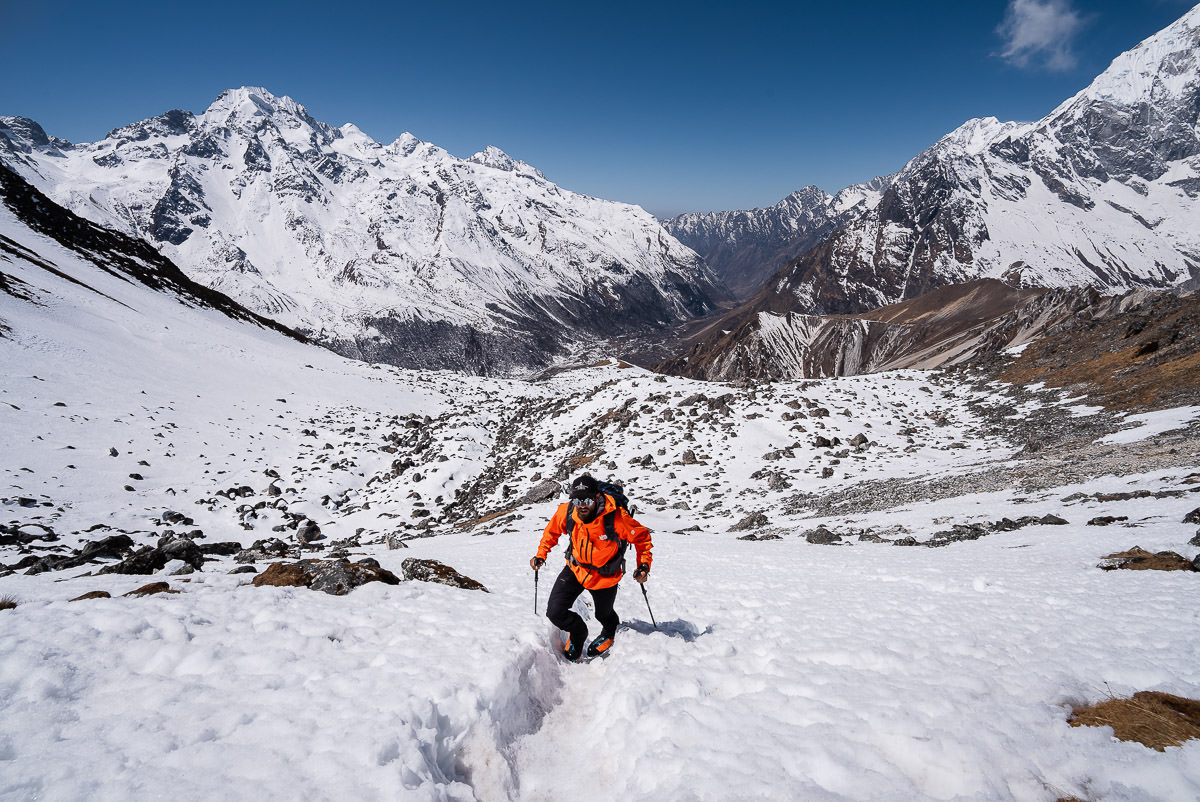
The summit of Tserko Ri is quite unique. A festival years ago at the summit involved carrying many large wooden poles to the top from which prayer flags were hung. There are so many poles and flags the summit has begun to look like a sailing ship. Nowhere in the Himalayas have I seen this many prayer flags at a summit, which made for a colorful, vibrant setting atop the peak.
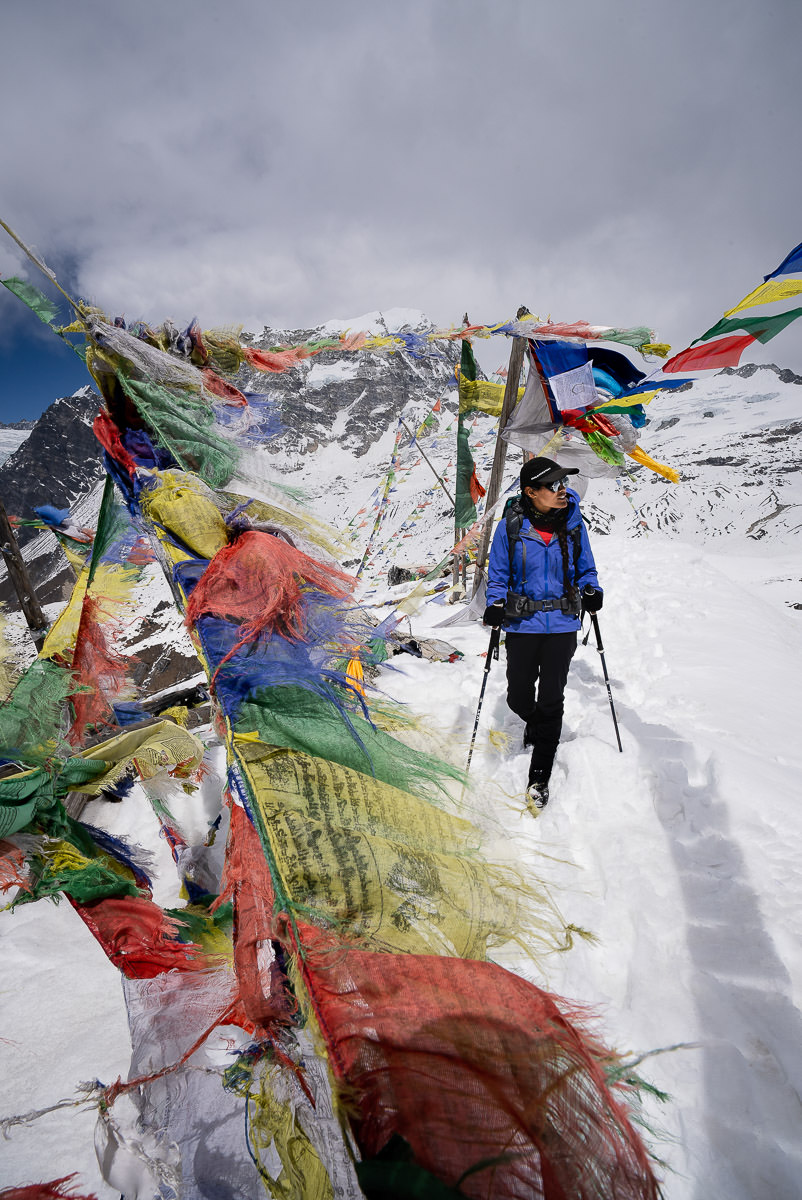
The views from Tserko Ri are simply phenomenal. With panoramic views, you can expect to see Yala Peak, Langtang Ri, Langtang Lirung, Naya Khang and many more.
As with Kyanjin Ri, it is best to be up at the summit before midday to avoid the afternoon clouds rolling in. I advise starting this hike no later than 7 am for the best possible conditions and views at the summit.
If you are interested in this expedition, I’ve written an entire guide about our Tserko Ri Hike.
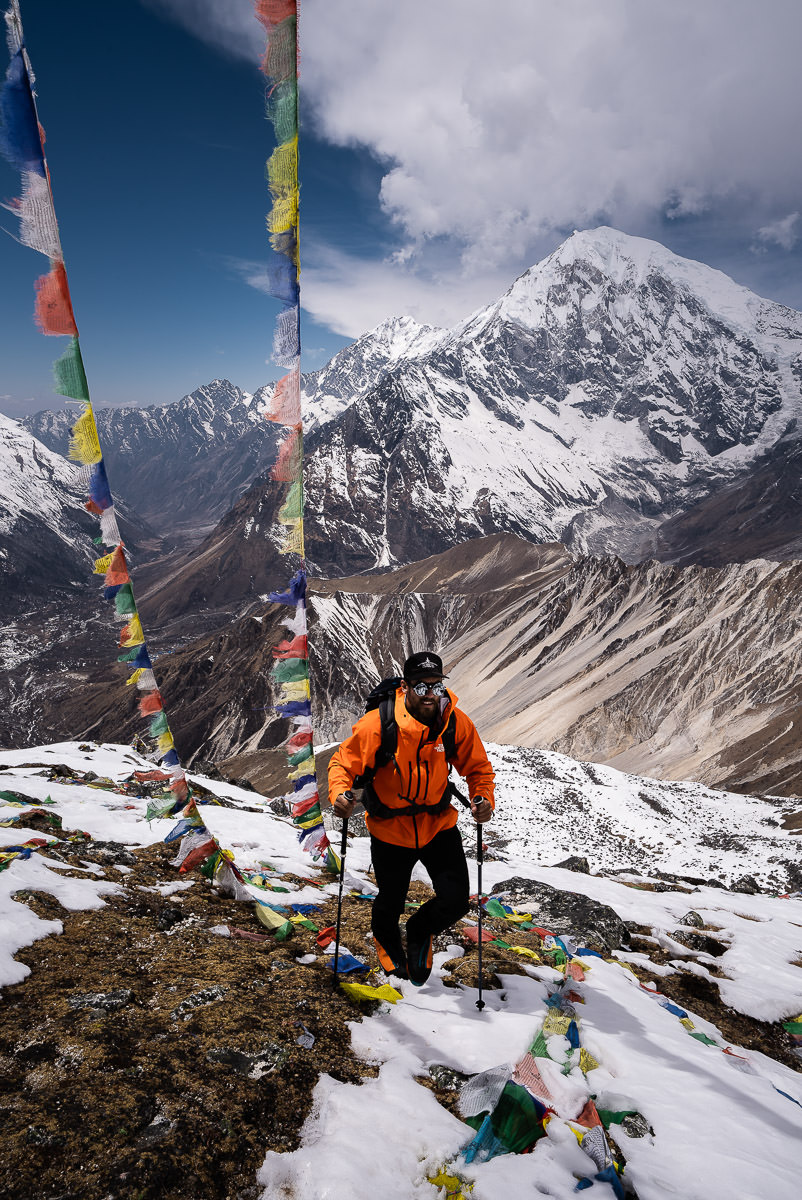
CLIMBING YALA PEAK
Yala Peak is a non-technical peak near Tserko Ri, which could be a great trekking peak for those on the hunt for a challenge.
We climbed Yala Peak with a guide over a two-day period. The climb included a trek to Yala Kharka (4750), which is the base camp. The summit push followed the next morning to Yala Peak (5,500m) through some heavy snow. With views into Tibet and specifically of Shishapangma, it was an incredible experience.
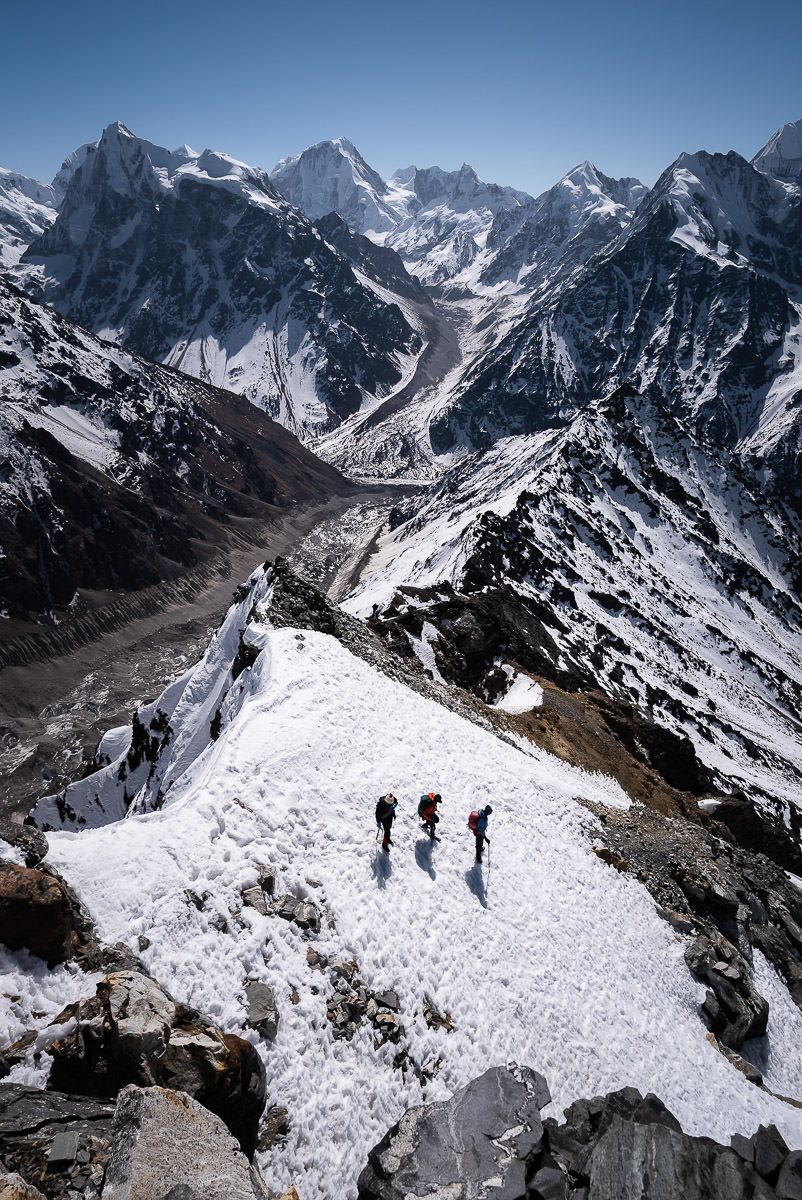
Yala Peak is not commonly part of the Langtang Valley Trek and involves prior preparation. We had to carry in our 6000m boots, extra warm gear, and climbing gear and arranged our climb in advance. While a guide can be arranged in Kyanjin Gompa, there is no gear rental shop so you may need to decide if Yala Peak is on your agenda before you begin the trek.
If you are interested in this expedition, I’ve written an entire guide about our Yala Peak Climb.
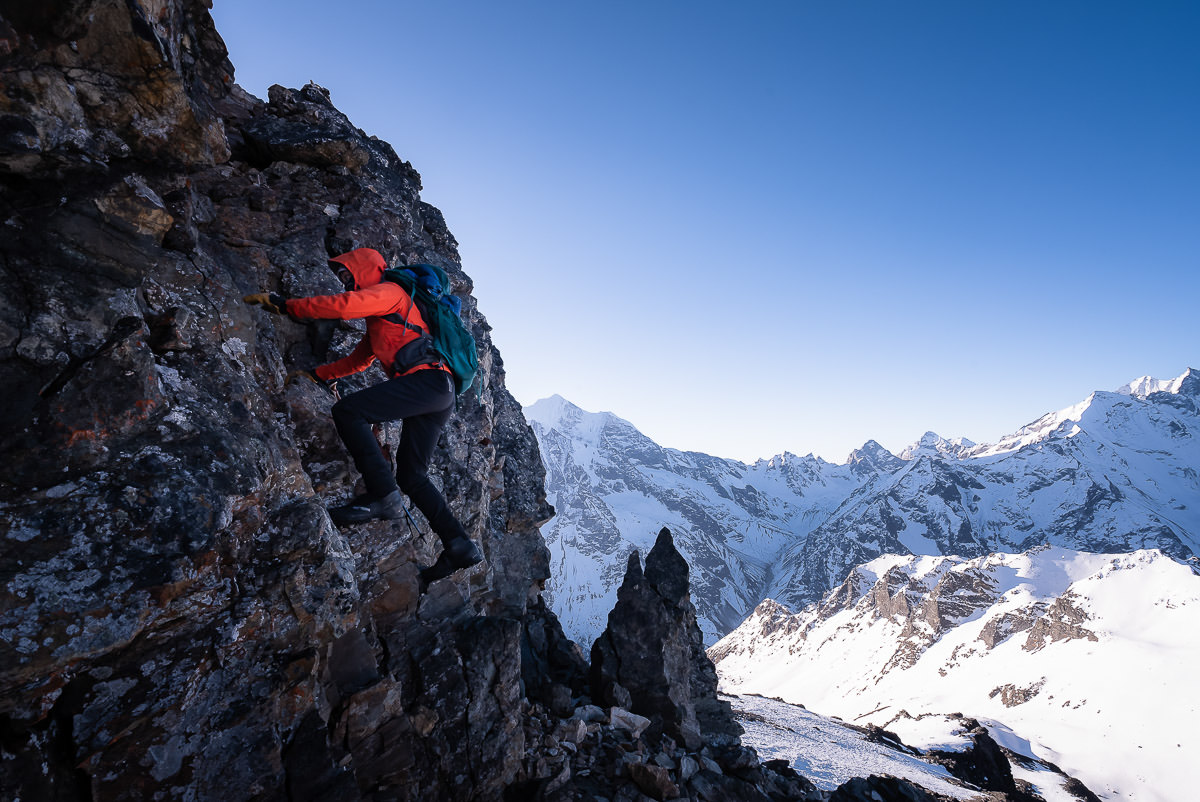
TREKKING FROM KYANJIN GOMPA TO SYABRUBESI
The trek back to Syabrubesi from Kyanjin Gompa takes most trekkers just two days. With only descent on the cards, it is much quicker than the trek upwards. On our first day of trekking, we made it all the way down to Lama Hotel with a 19km hike. On the second day, we had a 12km hike back to Syabrubesi.
It’s only 31km in total and there were some trekkers doing it all in one day. However, with more than 3000m of decline, I suggest taking at least two days for the descent as it can be quite tiring on the knees and ankles to endure so many steps and uneven surfaces.
After ten days out in the Langtang region, we wrapped up our trip with a celebratory beer at the Lhasa Hotel alongside a platter of Momo. It was one of our favorite treks and the expeditions from Kyanjin Gompa were wildly adventurous and incredible memories.
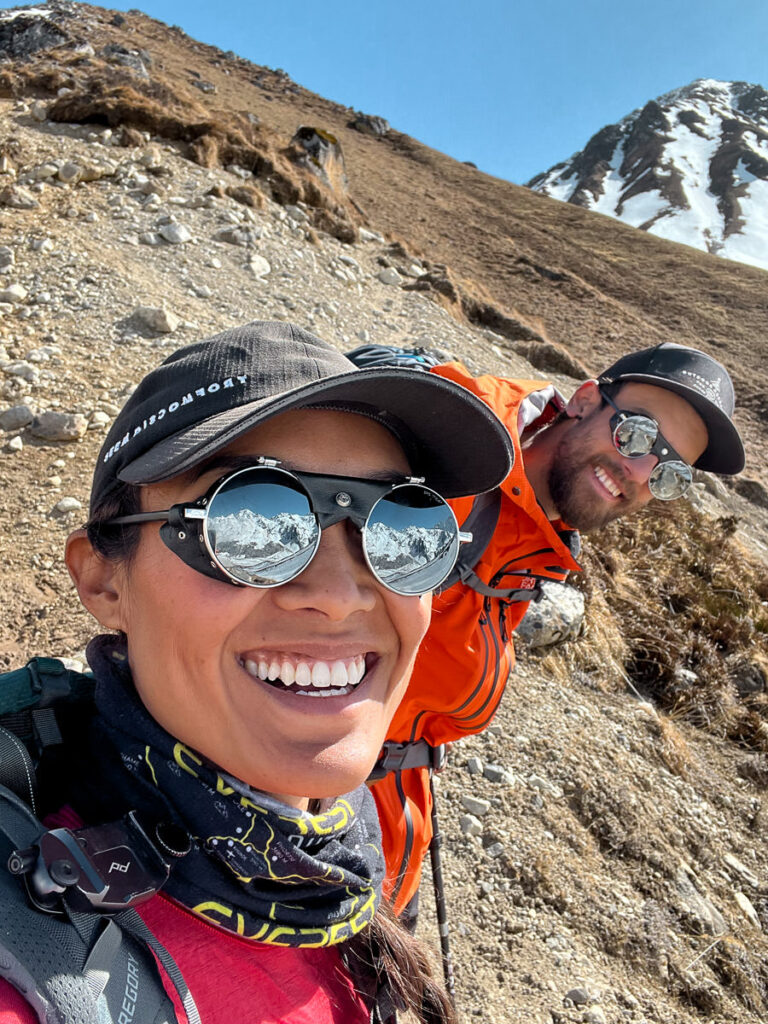
I hope you enjoyed this guide to the Langtang Valley Trek in Nepal and have a great experience yourself!
HAVE YOU READ MY OTHER NEPAL BLOGS?
I’ve been lucky enough to have many awesome adventures in Nepal, which you can check out below where I’ve listed some of my favorite blog poss from Nepal.
- The Most Iconic route: Everest Base Camp Trek
- The Most Scenic Route: Annapurna Circuit Trek
- My Favorite Trek in Nepal: Manaslu Circuit Trek
- An Easy Nepal Trek: Langtang Valley Trek
- A great beginner peak: Island Peak Climb (6,165m)
- My Favorite Climb in Nepal: Climbing Ama Dablam (6,812m)
- My first 8000er: Climbing Manaslu (8,163m)
- My toughest climb in Nepal: Climbing Makalu (8,463m)
- Where to stay: 16 Best Places to Stay in Kathmandu

Saturday 13th of May 2023
This blog has me already planning this in my head. I love hiking and being from Australia, I didn't get much of this sort of thing there, nor, here in Thailand, but I feel like I'd be mad not to get on board with this whilst I'm living in this part of the world.
Hey guy below "Jay" I was living in Brisbane, and there are plenty of good training spots for a hike like this in QLD. Maybe not the snow, but if you want to spend a night on one of the local peaks in the middle of Winter, it'll get you ready, both physically and mentally. If you want a challenge and want to test yourself locally first, try hiking through Mount Kosciuszko area, you can go through the back way on a multiday hike and it's both physically and mentally challenging, and it feels so remote, it takes very little time in those sorts of mountains to feel very alone and vulnerable. But totally worth it!!
Thanks for the article! Brilliant.
Tuesday 2nd of May 2023
Hello Jackson! What an incredible article with so many beautiful photos! I would have loved to have done the Langtang Valley trek with my mother when she was alive - she was the adventurous one, having climbed all of the Scottish Munros, summer and winter, including abseiling down the top of the InPin (I know, not a patch on Nepal!). Sadly, I lost her a couple of years ago, but even at 84 and dying of cancer, she still took us half way up Cairngorm! Maybe I'll manage it one day! Meantine, keep on trekking and stay safe!
Saturday 22nd of April 2023
Hi Jackson! Thank you for this very informative page. I'm hoping to hike this trek in November of this year. Absolute novice, barely done any hikes. I do keep fit with regular exercise though, and will train for this trek soon. I'm based in Queensland, Australia. I do have a fear of heights though, I was wondering what your thoughts were about the trek with this issue. Are there many suspension bridges and are they pretty high up? Would the trek otherwise be all right from that point of view? Thank you for your help. And I know it almost sounds ridiculous wanting to trek with a fear of heights but its something I've always wanted to do. Thank you for your time!

- Why Do You Choose NHTE?
- Who Are We?
- Legal Documents
- Terms and Conditions
- Clients Reviews
- Ghorepani Poon Hill Trek: Poon Hill Trek 3 Days From Pokhara
- Ghorepani Poon Hill with Mardi Himal Trek
- Short Annapurna Base Camp Trek
- Annapurna Base Camp Trek 6 Days
- 7 Days Annapurna Base Camp Trek
- Annapurna Base Camp with Poon Hill Trek 10 Days
- Annapurna Circuit Trek 10 Days
- Annapurna Base Camp Trek: A lifetime journey to the world’s 10th Tallest Peak
- Annapurna Circuit Trek 12 Days
- Mardi Himal Trek
- Khair Lake and Khopra Ridge Trek
- Mohare Danda Trek
- Jomsom Muktinath Trek
- Annapurna Circuit Trek: Explore the world’s longest Thorong La Pass
- Annapurna Tilicho Lake Trek
- Ghale Gaun Trek
- Nar Phu Valley Trek
- Poon Hill Trek 3 Days
- Dhampus and Sarangkot Trek
Langtang Trek
Langtang valley trek.
- Short Langtang Trek 5 Days
- Langtang Gosainkunda Trek
Langtang Tamang Heritage Trek
Gosainkunda pass trek, helambu trek, langtang valley and ganja la pass trek.
- Gosainkunda Lake Trek 5 Days
- Yala Peak Climbing
- Tilicho Lake and Mesokanto La Pass Trek
- Everest View Trek
- Everest Base Camp Trek 9 Days
- Everest Short Trek
- Everest Base Camp Trek 10 Days
- Everest Base Camp Trek 12 Days: Everest Base Camp Short Trek
- Everest Base Camp Trek: Experience Nature’s Majesty at Its Peak
- 14 Days Everest Base Camp Trek
- Gokyo Lake Trek
- Gokyo Chola Pass Trek
- Everest Base Camp Trekking
- Everest Three Pass Trek: Three High Passes Trekking in Nepal
- Everest Base Camp Trek Cost
- Ama Lapcha Pass Trek
- Pike Peak Trek
- Everest Base Camp Luxury Trek
- Everest Base Camp Trek Guide Cost
- Phaplu via Everest Base Camp Trek
- Three High Passes Trek
- Manaslu Circuit Trek
- Manaslu Trek
- Manaslu Circuit Trek 10 Days
- Manaslu Tsum Valley Trek
- Lower Dolpo Trekking
- Lower Manaslu Scenic Trek
- Rara Lake Trekking
- Rupina La Pass Trek
- Upper Dolpo Trekking
- Upper Mustang Trek: Discover the Hidden Nature & Culture of Mustang
- Chepang Hill Trek
- Ganga Jamuna Trek
- Manaslu Circuit Trekking 12 Days
- Kanchanjunga Trek
- Short Upper Mustang Trek
- Kathmandu Valley Tour
- Kathmandu Chitwan Tour
- Kathmandu Chitwan Pokhara Package Tour
- Kathmandu Chitwan Lumbini Via Pokhara Tour
- Bandipur Pokhara Tour
- Bungy Jump in Nepal
- Helicopter Tour In Nepal
- Mountain Flight in Nepal
- Paragliding in Nepal
- Island Peak Climbing: Popular Trekking Peak Climb in Nepal
- Lobuche Peak Climbing:
- Mera Peak Climbing
- Pisang Peak Climbing
- Amadablam Expedition in Nepal
- Chulu West Peak Climbing
- Trekking in Nepal
- Packages Tour in Nepal
- Peak Climbing in Nepal
- Expedition in Nepal
- Rafting in Nepal
- Chitwan Jungle Safari
- Paraglading in Nepal
- Mount Kailash Tour
- Cho Oyu Expedition in Nepal
- Bhutan Tour
- Bhutan Cultural Tour
- Compulsory Equipment List
- Nepal Visa Information
- Currency & Payments
- Travel Insurance

- Destination Nepal
- Region Langtang
- Duration 8 Days
- Transportation Drive
- Max Height 3870m.
- Activity Trekking
- Trip Grade Moderate
- Accomodation Hotel/Lodge
- Group Size Mini. 1 Pax
- Best Season Sep-Dec & Mar-May
- Meals B.L.D.
- Start / End Point Syabrubesi
Trip Overview
Langtang Valley Trek is a congenial delightful and ideal journey in the Langtang region . It is famous for providing exceptionally beautiful vistas of the mountains, native hidden culture, and Langtang Himalayas ranges. The Langtang Trekking Trail is an extremely beautiful and fascinating destination in Nepal. Which is not far from the capital city of Kathmandu and it’s just 137 Km away. Most of the way goes off the beaten trail in the Langtang Valley Trek. This Short 7 Days Langtang Trek takes you to discover the unique culture and natural beauties of the Langtang Himalayas. Likewise, you will extremely soak into nature and culture without any hassle.
What makes the Langtang trek special in 2024/2025?
Langtang Valley Trek is a distinguished destination that leads to discovering astonishing peaks with an amusing walk around the beautiful Langtang valleys. It’s a great occasion to discover the Langtang glacier, various landscapes, wild animals, renovated villages, an old Buddhist monastery, a local cheese factory , marvelous mountains, and extraordinary scenarios too. The peak of Langtang Lirung and the distinct culture of the famous ethnic group Tamang make this trek more authentic. 6 Days Short Langtang Trek offers alluring views of grand mountains and a mirthful walk around the glorious valleys.
The 8 Days Langtang Circuit Trek starts as well as ends at S yabrubeshi or Dhunche. It could be approached from Kathmandu through the 6 hours of drive. Since there is no airport, the only roadway is the option to attend the Langtang trek. Syabrubeshi, Bambo, Lama Hotel, Ghoda Tabela, Khangsher, Langtang Village, Mundo Village, Kyanjin Gompa- Kathmandu is the summarized 6 days itinerary from our company Nepal High Trek & Expedition Pvt. Ltd.
Kyanjin Gompa (3870m)
There are local old Buddhist monasteries and a small local cheese factory in the K yanjin village/Kyanjing gompa. It’s one of the best cheeses available around the Langtang area. There one can learn about the socio-economic life of the locals. Interacting with the local community and taking photos of their children are the best part to make the trek more memorable. Kyanjin Gompa is the last tea house place in short Langtang Trek and the place would be excellent to explore the beauty of hidden nature.
Langtang National Park (Buffer Zone)
Besides, the Langtang National Park conserves rare animals and plants that also can be explored through the Langtang Valley Trek . The Langtang National Park was established in 1976, has an area of 1710 sq km , and consisting a buffer zone area of 420 sq km. You will witness a variety of flora and fauna. Walking in remote places like Langtang suppresses all the stress and releases happiness within you. This feeling is awesome.
Magnificent Panorama Scenarios
Throughout the journey, you would pass through lightly populated and remote areas. But the mesmerizing views of the Ganesh Himal, Langtang Lirung (7324m), Dorje Lakpa (6966m), Gangchempo (Langtang Ri 7205m), Porong Ri (7292), and Yala Peak (5520m) would make your heart pounder. In addition, the beautiful vistas of the glacier moraine in the north provide a superb view of Langtang Lirung being popped out in the crystal clear sky.
Authentic Food and Accommodation
Despite the remoteness, the valley provides suitable accommodation with typical Nepalese food service. People are not as outgoing as in the urban area but they are humble and eager to chat with you. Local people have good hospitality and conduct. Regarding accommodation, in the Langtang region, the accommodation is ordinary and has twin-sharing beds. Each tea house has a warm dinning hall and cozy rooms as well. Along the trail somewhere you will get a bathroom inside the room but are not allowed shower inside. Throughout peak season you must the accommodation a week before.
A Engrossing Tamang culture and Festival
Around the Langtang Region, more than 80% of people are from Tamang. They have a brilliant tradition, and unique culture including a distinct language, cultural dress, script, ethnic instrument , and social manners. They have over 120 sub-clans in the Tamang caste . Approximately more than 80% of the Tamang have been flowing the Buddhist. Their language, Tamang, comes from the Tamangic branch of the Tibeto-Burman language family and it is 75% similar to Gurung Language.
Damphu and Cello are the identities of the Tamang people . Tamang Cello songs represent humor, satire, joy, and sorrow. It has a brisk movement and rhythmic beat specific to the Tamangs. Sonam Lhochhar is the major festival of the Tamangs and is celebrated in the month of Magh (February–March) . It is celebrated to welcome the Tamang new year.
Sacred Gosainkunda Lakes (4,380 Metres)
Another reason that people Trek to the Langtang region is due to the holy Gosainkunda Lake . The lake on the top of the hill often gets frozen in winter. Many trekkers have fancy skating in the lake which is awesome. That’s the best attractive part of the Langtang region. There are altogether 108 (ponds) lakes around the area but Saraswati Kunda, Bhairab Kunda, Surya Kunda, Naga Kunda , and Gosainkunda lakes are the most fascinating and popular too.
Moreover, the pristine Lake Gosainkunda is also worshiped by Hindu and Buddhist Devotees on special occasions. Besides, Langtang Tamang Heritage Tre k is the best option to explore the religion, culture, and festivals of the Langtang Valley.
Low Altitude and Short Treks in Langtang Region
If you are not really high adventure seekers the Langtang trekking routes would be good for hike and fun with spectacular mountains. This region has many various treks that you can find out the trek according to your choice. Moreover, all treks are based on the low altitude that everyone easily completes and have fun with nature. This trek can be completed within a week and also it’s one of the guaranteed trips in Nepal.
The Following Treks Are The Most Popular in the Langtang Region
- Short Langtang Valley Trek 5 Days
- Langtang Trek 6 Days
- Langtang Valley Trek 7 Days
- Gosainkunda Lake Trek 8 Days
- Tamang Heritage Trek 10 Days
- Langtang Valley with Ganja La Pass Trek 14 Days
- Gosainkunda Pass Trek 12 Days
- Langtang Helambu Trek 6 Days
- Langtang Valley Via Yala Peak Climbing
Alternative & Reliable Langtang Region Treks
Langtang Trekking Region is one of the most reliable and guaranteed treks in Nepal. It’s one of the closes and most popular destinations in Nepal. Moreover, the Langtang Trek Route would be the finest and everyone easily join to explore and discover the flora and fauna of Langtang Valley. The trek can start from many places like Syabru Bensi, Dhunche, and Sundarijal. The major transportation is only driving but if are interested you can get luxurious transportation too.
Perfect Family Trekking Route in Nepal
Take your kids to the lap of the Himalayas. Trekking with kids is tricky. You may need to consider lots of things. From altitude to walking hours as well as distance plays a crucial role while traveling with kids. However, it is not an issue while doing the Langtang Valley Trek. The trail is easy to walk and the distance between the two teahouses is short. Therefore, lots of family trekkers are choosing the trail as their ideal trekking destination.
Alternative Treks Around the Langtang Valley
Note : Langtang Trekking Route is one of the major assets of the Nepal tourism sector. Langtang Valley trekking trail is easily combined with popular treks like Tamang Heritage Trail, Langtang Valley and Ganjala Pass Trek , Helambu Circuit Trek, Pangsang Pass with Ruby Valley Trek, Gosainkunda Pass Trek, and Gosainkunda Lake Trek also famous trekking route. This Trekking is best to explore the sacred holy lake. Find the diverse trekking packages of the Langtang Region in 2023/2024 and we can make customize the itinerary and budget according to your desire and preference plan.
When to Trek Langtang Region?
The best time to trek is the dry season from October to May . The worst time is the monsoon season period from June to September. This generalization does not allow for the peculiarities of individual treks. Some people claim that the undeniable difficulties of trekking during the monsoon are outweighed by the virtual absence of western trekkers.
Autumn Season ( September, October, November & December)
The first three months of the dry season from mid-September to mid-December offer the best weather for trekking around the Himalayas in Nepal. The air freshly washed by the monsoon rains is crystal clear, the mountain scenery is superb and the weather is still comfortably warm. December, January, and February are still good months for trekking but are too cold and frozen on the trail. Even though, the Langtang treks are always a favorable and low risk of altitude sickness and tough too.
Spring Season ( February to May)
From March to May , the weather has been dry for a long time and dust is starting to hang in the air, affecting visibility. The poorer quality of the Himalayan views is compensated for by the superb wildflowers such as the wonderful rhododendrons. Furthermore, would highly recommend the autumn and spring seasons for hiking, trekking , and climbing in Nepal.
100% Successful & Guaranteed Trip
We ensure you that Langtang Region Treks would be 100% successful and Guaranteed Trips for the whole year. It’s always a pleasing and acceptable trek for everyone. We have multi-trip departures in the autumn, winter, and spring seasons for 2022/2023. The itinerary can be altered according to your holiday length and preference plan.
Conclusion of the short Langtang Trek Itinerary & Cost
6 Days Langtang Trek is generally the moderate type which is completed within a week time frame. The climate in these regions is almost cold throughout the year and is windy in higher altitudes. As the maximum elevations are lower than 5000m it has no threats of Mountain Sickness. Spring and autumn are the best Langtang trekking seasons.
Related Picture Gallery
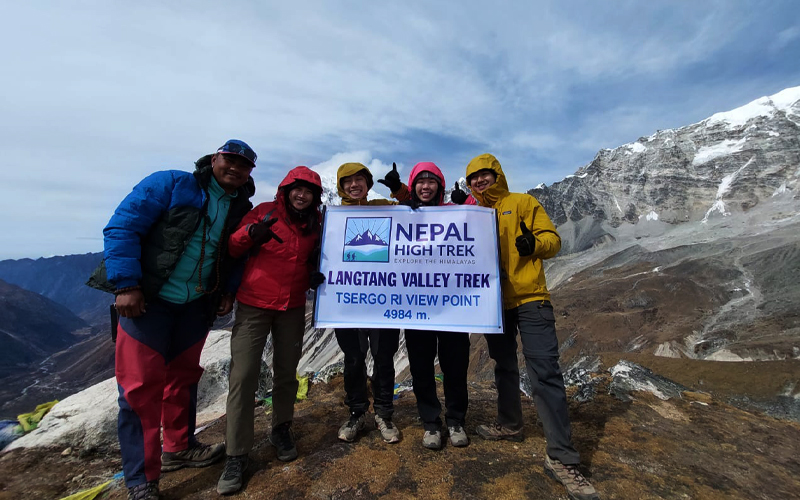
Details Itinerary
Day 01: arrival in kathmandu with transfer to the hotel..
On arrival at Kathmandu international airport get a transfer at the hotel. After then received by our guides and staff, at hotel check-in and join in for a group briefing regarding treks and other useful information, with a welcome dinner.
Day 02: Drive to Syabrubesi by sharing jeep 1,503 m -07 hours
An early morning departure from the hotel taking an overland drive to reach towards North around Langtang Himal, during six hours drive views of snow-capped peaks, then arriving at Syabrubesi village after driving past Dhunche headquarter town of Rasuwa district and Langtang Himal area.
Day 03: Trek from Syabrubensi to Lama Hotel 2,450 m – 06/07 hours
Walk commence from Syabrubesi village as the morning trail leads to a cross over a bridge of Langtang River, and then with an uphill climb into farm areas entering the green dense forest to reach our second overnight of the journey at Lama Hotel, a nice spot within a forest clearing.
Day 04: Trek From Lama Hotel to Langtang Village 3,430 m - 07 hours
From Lama Hotel morning walk follows the river upstream within deeply forested areas and in a gorge, a route leads to the much cooler area past Ghodetabla to reach Langtang village for an overnight stop surrounded by tree lines and views of Langtang Lirung peaks towards the north above high rocky cliff wall.
Day 05: Trek from Langtang village to Kyanjin Gompa 3,830 m – 04 hours
Today a short walk to reach Kyanjing Gompa our final and major destination of this lovely journey, morning trek starts with a short steep climb to reach a ridge on leaving the forested area, where the trail leads into a wide scenic Langtang valley enclosed with an array of peaks as our morning walk reaches a nice settlement at Kyangjing Gompa for few overnight stops.
Day 06: Optional Hike to Tserkuri Viewpoint (4984m) Explore the Langtang Himalayas with Tibetan Himalayas Ranges
A free day for you to enjoy a scenic walk with the hike on top of Tshergo-Ri viewpoint (4,984 m), the highest spot of the adventure overlooking the panorama of the whole Langtang Himalayas range of peaks with some mountains of Tibet across the border beyond Langtang mountains. We highly suggest you hike the stunning Tserku Ri viewpoint to discover the mesmerizing scenario of the Langtang Himalayas.
Day 07: Trek from Kyanjin Gompa to Lama Hotel 2,450 m – 07 hours
Having an enjoyable marvelous time around beautiful Langtang Valley at Kyanjing our adventure comes to an end following the downhill walk to Lama Hotel with an overnight stop. The mostly trail is coming down through the Mundu village, Langtang village, and Ghodatabela village. Approximately, 6 to 8 hours to get back to Lama Hotel.
Day 08: Trek from Lama hotel to Syabrubesi - 06 hours
From Lama Hotel our last day walk of the adventure, as the morning trek follows into the forest with a downhill to cross over a bridge then reaching our last overnight halt at Syabrubesi for the last overnight around Langtang Himal.
Day 09: Drive to Kathmandu by local sharing jeep and transfer to hotel – 07 hours
After a most remarkable time and trekking on Langtang valley around Rasuwa district with scenic moments, then take a drive in the morning where the overland journey takes you back to Kathmandu, on completing wonderful adventure on Langtang Valley Trekking.
Day 10: Final departure to homeward bound or to respective destinations.
Last day in the land of Himalayan wonders, as per your international flight time depart from the hotel for an airport for your international flight back to home countries or other respective destinations.
Cost Includes
- Airport Pick up drop by private car.
- Two-night Boutique Hotel in Katmandu with breakfast.
- During the trek three times meals (Breakfast, lunch, and Dinner)
- Langtang National Park Permit.
- Trekkers Information Management System (TIMS) Permit.
- Kathmandu to Syabru Besi, Syabru Besi to Kathmandu by sharing a jeep.
- Three cups of tea throughout the trek.
- During the trek fresh fruit.
- Government registers expert and knowledgeable guide (Including guide’s salary, meals, accommodation & insurance)
- Nepal High Trek & Expedition’s down jacket, sleeping bag and duffle bag. (If you needed)
- The arrangement of Emergency Helicopter service will be paid by your Travel insurance company.
- Medical supplies (first aid kit will be available).
- Farewell Dinner.
Cost Excludes:
- Nepal entry visa fee (you may easily issue the visa upon your arrival at Tribhuwan International Airport – Kathmandu).
- Your Travel and rescue insurance.
- US$ 150 for extra porter
- All the expenses in the mountain over than scheduled itinerary (due to strike, delay, or canceled flight)
- Extra night Hotel in Kathmandu if arrive early or late departure than scheduled Itinerary.
- All the Bar bills and personal expenses such as hot, phone calls, laundry service, battery recharge, a bottle of water, hot water, and shower.
Langtang Valley Trek Route Map

Frequently Asked Questions
Where is located langtang valley trek.
Langtang Valley Trek is located in mid-north Nepal and this Trek is into the Langtang Region of Nepal. The Langtang Trekking Region is the third most popular and most beautiful trekking route in Nepal.
How difficult is the trek to Langtang Valley?
Langtang Valley Trek is an easy hike and culture trek in the Langtang region. This trek leads you to 3830m a maximum height at Kyanjin Goma. The Langtang trek is not a difficult and high-altitude trek in the Langtang region.
What is the major transportation of Langtang Trekking Region?
What types of accommodation get along the trek.
Around the Langtang valley all accommodations like the same quality as a basis on tea houses. Whereas, in the mountains, you will be accommodated in the best available lodges and Guesthouses.
When is the best time to trek around the Langtang Valley?
March to May and September to December are the best months to trek in the Langtang region. Both seasons Spring (March to May) autumn (September to November) would be a more favorable time to hike or trek in Langtang. If you choose any of these reasons you are able to see an excellent view of mountains with hidden local cultures with majestic landscapes.
Do I need high-quality gears for Langtang Trek?
Usually, the trekking equipment is very crucial to complete the trek but Langtang treks are not high altitude treks that do not require very high-quality gears. You should have medium qualities gears and compulsory gears like boots, a down jacket, a sleeping bag, and related goods too.
How long does take to complete the Langtang Trek?
However, Langtang Region has many popular treks around the valley that references the trekking day depending on the trek. If you want to do the Langtang trek it could be completed within 6 to 8 days from Kathmandu to Kathmandu. Normally, the Langtang region treks can be finished within 6 to 16 days from Kathmandu.
What is the level of Langtang Trek?
The Langtang valley trek is based on a moderate and easy level. We do commit to you that anybody easily completes the Langtang trek without difficulty and acute mountain sickness.
Which is the highest mountain in the Langtang Valley?
In the Langtang region, there are many mountains that are very popular and tallest but there are not any above the 8000m. However, the Langtang Lirung (7234m) is the tallest peak in the Langtang region and along the trail, we are able to see the Shishapangma (8027) peak which is located in Tibet. Don’t worry, when you trek to Langtang valley you can see many beautiful and popular mountains throughout the trek.
Do I need a permit for the Langtang Trek?
Yes, the permit is mandatory for foreigners to do a trek around the Langtang region. A permit cost is RS 3000 rupees. The permit can buy at Langtang National Park at Dhunche and Sundarijal National Park. Moreover, you need also Tims cards as (Trekkers Information Management System).
What is the major culture in the Langtang valley?
Around the Langtang valley are available many cultures and customs but in the current context, Tamang culture is remarkable. It’s one of the charming tribe’s cultures in Nepal. When you hike around the Langtang able to explore the Tamang cultures with flora and fauna too.
Can I do Langtang Trek without Guide?
Regarding the guide, we never prefer and recommend the Langtang Trek without a guide. Trekking is always an adventure and difficult journey that better to hire a guide for the Langtang trek. If you hired a guide the trip would be safe and more enjoyable
Is there any alternative route to complete the Langtang Valley Trek?
Yes, the Langtang region trekking routes combined the many popular treks around the Langtang valley. There is another alternative trekking route Helambu and Gosainkunda Pass trek amalgamate the Langtang valley. If you want to follow this trekking route it would be an excellent journey to explore the flora and fauna of Langtang valley.
Is this trek for beginners ?
Yes, this trek is acceptable for all age groups and it's suitable for beginner travelers. Probably Langtang Trek is a low altitude and easiest trek in Nepal. If you're not an adventure seeker highly prefer this trip. Furthermore, throughout the trek, you will reach a maximum height of 3830m at Kyanjin Gompa except for the Kyajin viewpoint (4380m) and Tserkuri viewpoint (5030m).
Is possible to do the Langtang Trek in Monsoon ?
The Langtang Trek is possible during the monsoon season, but it comes with certain considerations and potential challenges. The monsoon season in Nepal generally lasts from June to September, and during this time, the country experiences heavy rainfall, increased cloud cover, and occasional landslides. Besides, when you trek around the Langtang Valley you must walk carefully and be careful of landslides along the trail
Is tip compulsory for trekking crews ?
In fact, the trekking crews appreciate and expect tips when completing the trek. Although, the Tipping is not fixed and you can give as you wish. It depends on the trekking difficulties and length.
What kinds of amenities get throughout the trek ?
The Langtang region trek is a unique delightful journey that offers the natural beauties and cultures too. However, throughout the trek, you will get good amenities along the local tea houses. The accommodations are based on the hotel and guest house. Each guest house has an attached bathroom inside the room and as well as you get a wife services each hotel. Besides, around the Langtang Valley available access to 4G coverage but due to bad weather 4G service would be weak.
Cost & Date
Client reviews.

Harish Darry
Sydney australia, unforgettable langtang valley trek with nepal high trek.
My Langtang Valley trek with Nepal High Trek was an unforgettable experience. The scenery was breathtaking, the trails were challenging yet rewarding, and the cultural immersion was incredible.
I would highly recommend using Nepal High Trek for your Langtang Valley trek. Their organization was excellent, and their communication from the start was exceptional. Anjan was fantastic throughout the planning process, ensuring everything was in order and providing detailed briefings before I started the trek.
My guide, Indako, was truly a gem. He was very knowledgeable about the area. We shared meaningful conversations throughout the trek, where I learned a lot about Nepali culture, Buddhism, and the local way of life. He was incredibly caring and attentive to my needs, ensuring I was comfortable and safe throughout the trek. Indako also knew when to encourage breaks, making sure I had the energy to fully enjoy the experience.
Even though this was my first time trekking and I was doing it solo, Indako’s positive energy and enthusiasm made the experience even more enjoyable. He’s a fantastic guide, and I highly recommend him to anyone considering the Langtang Valley trek.
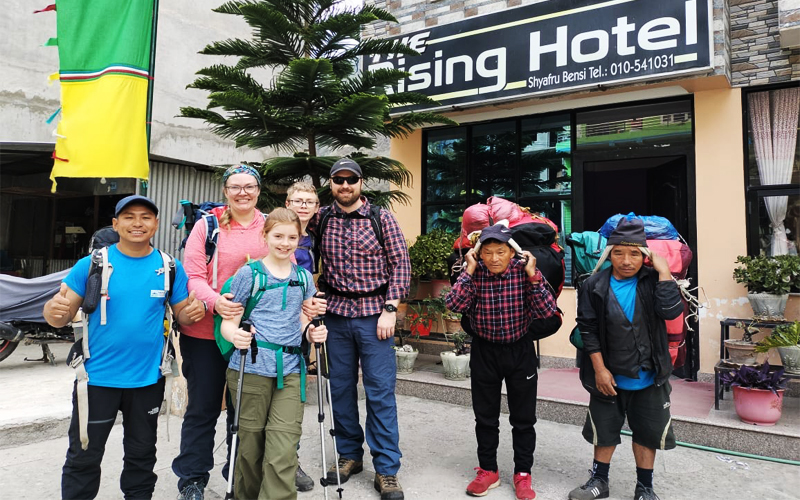
Daniel Richard (30/04/2024)
Washington dc, usa, family langtang trek.
What an incredible experience my family and I had with Nepal High Trek . We brought our 11 and 14 year old children over from the US to see a completely different part of the world. Our guide was excellent and helped to make sure our kids were well looked after, and they went out of their way to make sure they enjoyed the experience. He even helped our kids spot a Red Panda off the trail, which both had said was a ‘goal’ of theirs at the beginning of the trek! Nepal High Trek was always very attentive and made sure we enjoyed our experience. I even consider our guide, Indako Gole Tamang, a friend. Just a word of caution, the trek is not ‘easy’ as there are long sections of steep ascents, so come prepared. It is probably one of the easier treks compared to the other treks offered by Nepal High Trek , but you definitely work up a sweat. All that to say, I cannot recommend this company enough! They wowed us from beginning to end. We felt valued throughout. Constantly encouraging and coaching us once we got up into the higher elevations and we started to feel the altitude. We’ve done many treks throughout the world, and we have rarely experienced the level of attentiveness and personalization that Nepal High Trek gave to us. We will be back and will definitely be using Nepal High Trek again in the future!
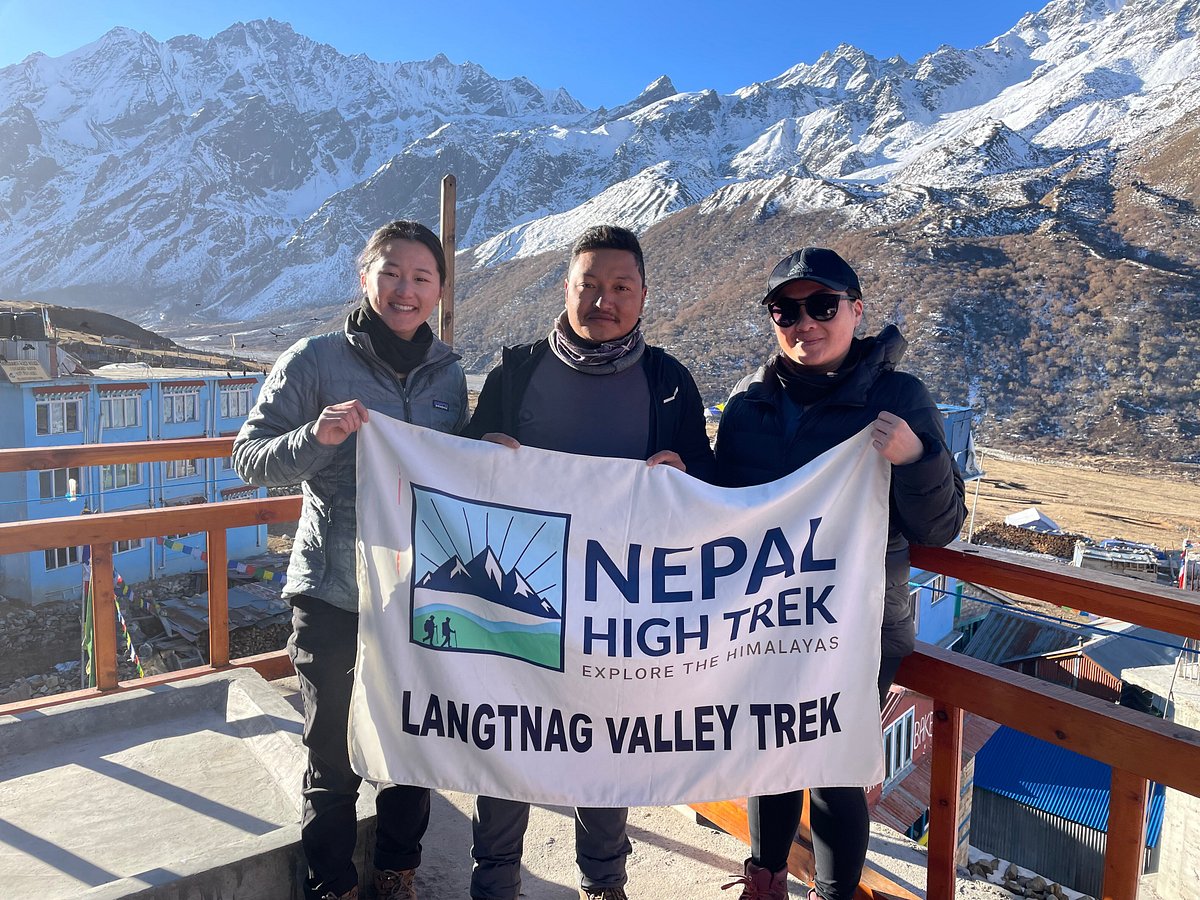
California USA
8 days langtang valley trek.
My sister and I were first time trekkers and were absolutely impressed with the service from the agency Nepal High Trek. The itinerary was well organized and everything went smoothly from start to finish. Communication from Anjan was amazing and quick prior to booking when I was just doing my own research. All my questions and concerns were addressed in a timely manner.
The agency was very accommodating in adjusting the itinerary to our needs which I was impressed. On the first day of arrival in Kathmandu, Anjan and our trekking guide Subodh greeted us directly and reviewed the itinerary once again and allowed the opportunity for any questions and concerns. Subodh was an amazing and knowledgeable trekking guide and always looked after us during the trek. At one point during the trek, my sister was struggling with carrying her backpack and he willingly offered to carry it in addition to already carrying his own. I’m glad to have utilized this agency for my first time trekking experience as they’ve made it a great one. For future Nepal treks, I’ll def utilize them again and highly recommend this agency to every person out there who’s looking to trek in Nepal and needs guidance.
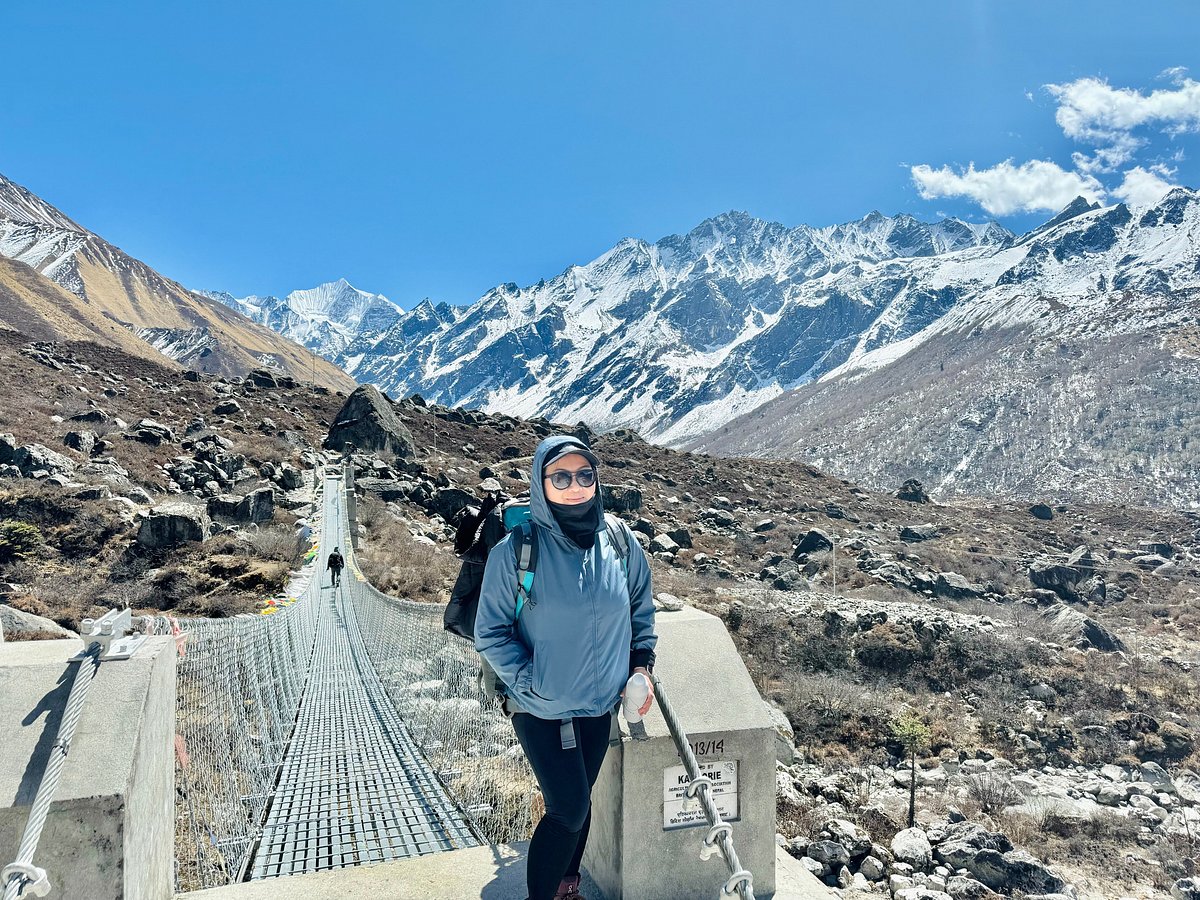
Langtang Valley with Tserkuri Hike
This was our first time trekking. Thank you so much for making it a memorable and wonderful experience from the beginning till the end. Communication was quick and efficient from Anjan prior to, during and after the trek. Our trekking guide Subodh was the best! I should have got a porter but Subodh helped me carried my bag and a few of my items during the trek because it got too difficult for me.
Subodh was very knowledgeable of the terrain. He was encouraging and went at our pace during the trek. He always made sure we were okay and safe. His communication was great because he would keep us informed of what to expect each day of the trek.
The views and terrain were beautiful. The food was great! The hospitality from the guesthouse was wonderful as well. I would highly recommend Nepal High Trek to friends or family that wants to trek here in Nepal. Their service exceeded my expectations. They treat their clients with the utmost respect.

Responsive Service, Experienced Guide Team
We traveled as a group of three from Singapore in Dec 2023. While generally considered “off-season”, we booked our Langtang Valley trek on a whim with Nepal High Trek just a few weeks before the trek.
The valley was indeed amazingly beautiful with clear skies, comfortable temperature in the day when we were hiking (it was cold at night though) and certainly no crowds.
We were able to make quick decisions to go with the trek all thanks to Anjan (boss of Nepal High Trek), who was superbly quick in responding on the tour package (which was at a very reasonable price) and to our multiple queries which helped with our planning. He was flexible in our itinerary planning so we could make the best out of the limited days we would be in Nepal. Anjan is also a generous boss who catered to our requests.
Overall a positive experience with the trekking staff, led by Pawan, who navigated us through the challenging terrains (at least to us beginner trekkers). Pawan took good notice of our preferences and needs (eg food) and ensured we had a good experience. Tareje was the our most admired porter who managed our combined 25kg duffel throughout the trek effortlessly.
Recommend to contact Anjan at Nepal High Trek when planning your next adventure up the Himalayas!

Veen Baskaran
Langtang valley trek in december.
Amazing! I booked at the very last minute and Anjan, the tour operator was extremely helpful and accommodating. With his guidance, i sorted out everything i needed and arrived in Kathmandu 2 days later. What i liked the most was the transparent pricing, online payment options and the patience he had in answering my 1,001 questions.
From Kathmandu, i met my guide Suraj without whom i never would’ve made it past the first day of the trek!
Suraj was not only a super helpful guide, he kept an eye on me and advised me accordingly to take proper breaks and to not give up!
needless to say, trekking over 4 days across mountains, rivers, valleys and then the summit plus glaciers was just wow!
suraj pointed out wild animals, cool rock formations and was ever willing to help me take some amazing shots!
we came back a day earlier due to my flights and both Anjan and Suraj were kind enough to not let me waste my last few hours without seeing some sights around Kathmandu before dropping me off at the airport,
Huge thank you to Anjan and Suraj for making this the trip of a lifetime!

Saranaya Sayar
Langtang valley trek with the best team.
My brother and I did an unforgettable Langtang Valley Trek in December 2023 with Nepal High Trek and we had an amazing time! Nepal High Trek was helpful to all our questions from the start and attended to all our queries. When we made changes to the Trek dates, Anjan was patient and accommodated to all the changes.
We did our Trek with Suraj and Surya, who made an exceptional and amazing team! They were so kind, patient, and friendly and went the extra mile to make us feel comfortable by checking on our needs consistently. Even when I fell sick during the 3rd day of the trek, Suraj helped me with my day pack on top of his bags. He explained a lot during the Trek about Nepal’s history and geography too. He made sure we had ample tea breaks and consistently checked on us. For Surya, I’m also very thankful as he was carrying our backpacks, yet timely, he guided me down the descent whenever I needed help. He even went the extra mile to pack our sleeping bags in the morning as we needed help. We can safely say that they made a huge difference to our Trek as we were in safe hands!
Overall, we enjoyed our Trek so much and returned home with so many beautiful memories and rate this trek 10 out of 10 stars. We’re planning to do another Trek and will definitely book Nepal High Trek again with no hesitations!
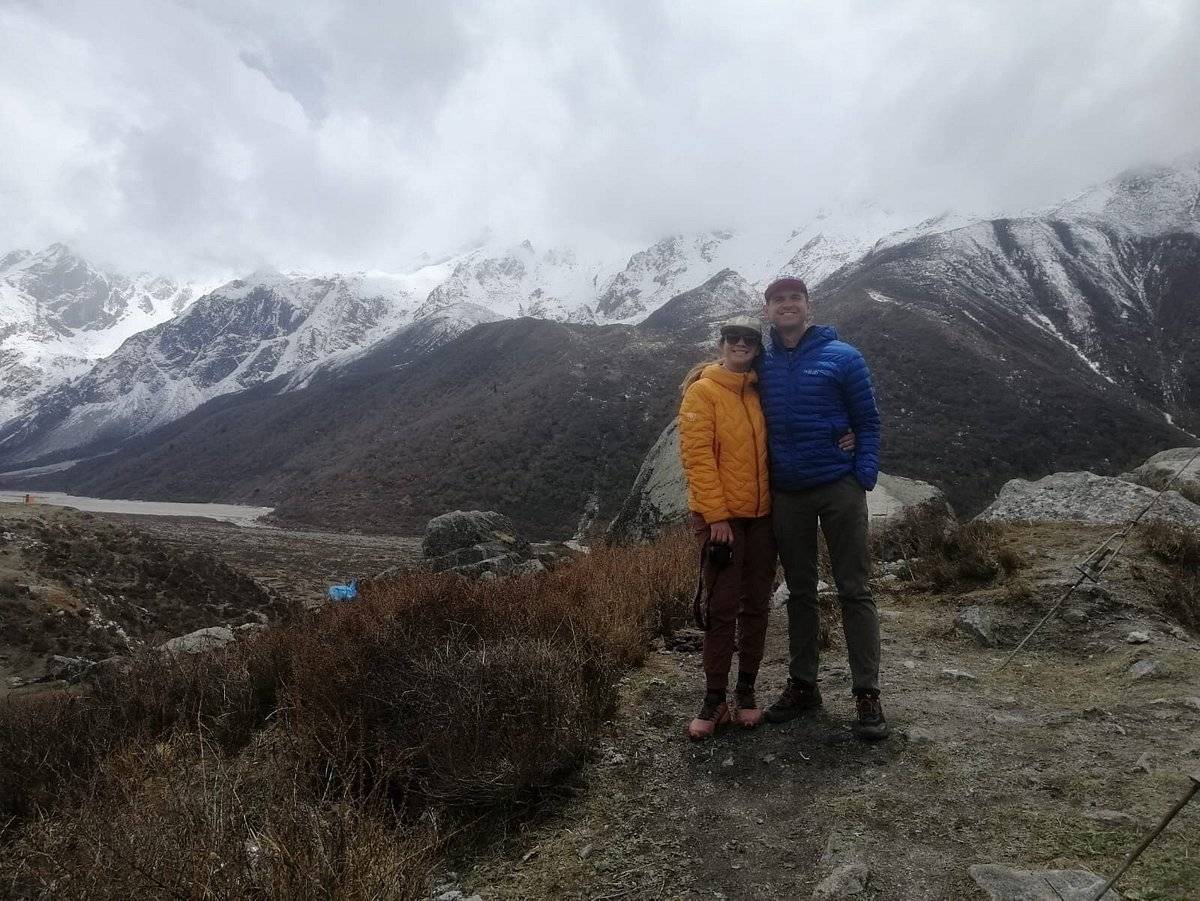
Daniel Cole
United state.
My wife and I did an 8 day Langtang Valley Trek with Pawan as our guide. The company picked us up from the airport and booked us a great room at a hotel in the Thamel district of Kathmandu. Our hotel was fantastic, with great breakfast, clean room and a rooftop restaurant. The guide and owner were both available for any questions we had and gave us great tips for things to see while in Kathmandu. They then got us a jeep and driver to take us to the start of the Langtang Valley Trek. We had a great lunch halfway though our drive and our guide helped us through all the police checkpoints along the way. The hike itself was absolutely incredible! Our guide was very knowledgeable about the area, where to stay, the history of all the towns, the wildlife, and even the many plants we saw along the way. Unfortunately, I had come down with altitude sickness during our hike but I was very happy to have our guide with us from Nepal High Trek. It was nighttime when I got sick and was snowing heavy that night so I could not hike down. Our guide Pawan checked on me constantly, monitoring my oxygen saturation and blood pressure as well as bringing water/tea etc. He was able to coordinate with the owner Anjan back in Kathmandu and they got me on the next available helicopter, safe and sound. They took me to the hospital and kept in contact the whole time I was there to make sure everything was alright. If your are looking for a reliable company with friendly, knowledgeable guides that truly care and will help you out through anything, then this is it. We could not recommend Nepal High Trek enough and definitely plan on booking another trip with them in the future!!
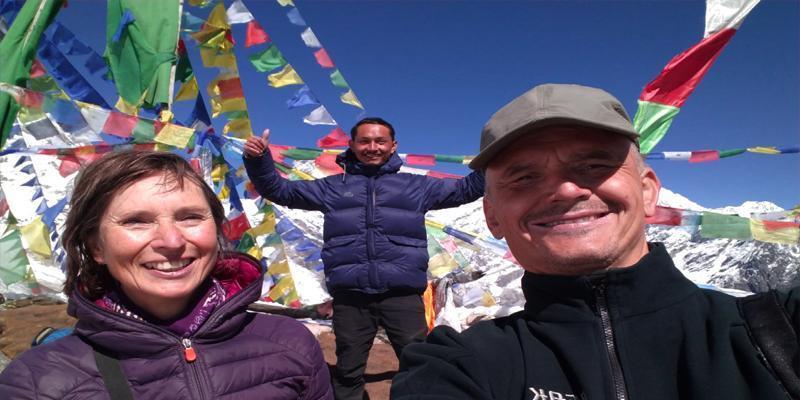
Andrew Clarke
100% Recommendation for Nepal High Trek & Expedition Team !!! My wife and I are booked for the 7 Days Langtang Valley Trek with this team. Begging of our trip we got everything is very customized and free of hassle. Anjan has made the trek itinerary according to our holiday length and preferences plan. He did respond to us very quickly with an affordable package. Communication was clear and professional from the outset, and we felt reassured before we left that we were in safe hands and wouldn’t have to decipher and possibly risk choosing from the multitude of trekking companies in Kathmandu. Our guide Pawan and porter Dorje were very helpful and friendly. Pawan has explained very well about the trail, accommodations, mountains, and local cultures.
Moreover, in December weather was perfect and we had an excellent time despite the cold. If you are planning to trek to Langtang valley don’t miss climbing the Tserkuri viewpoint and which was a brilliant viewpoint to see the numerous mountain views. We would like to thank the entire Nepal High Trek team and we will be back again with you.
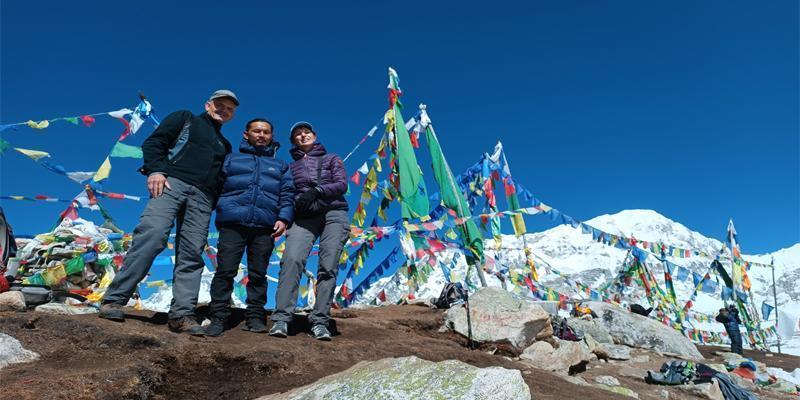
Natalie Silver
United stated.
Langtang valley is stunning. A quieter trail, less traffic, filled with raging rivers, waterfalls, and simply gorgeous scenery. We were fortunate to have our guide, Shyam, take us on this trek. He is calm, and caring, and works hard to accommodate all needs.
Anjan, the company owner goes ABOVE & BEYOND to make sure your trek is a lifetime, memorable, experience. Would recommend Nepal High Trek & Expedition if anyone is interested in treks throughout Nepal.
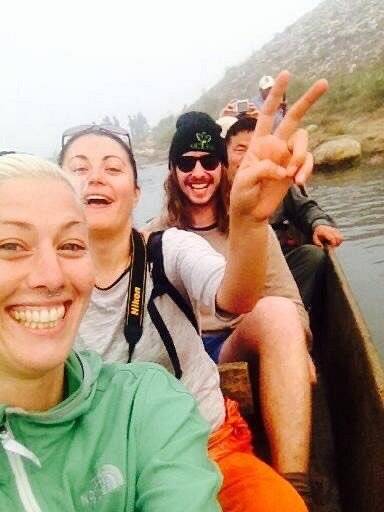
Miriam Hans
Langtang valley with chitwan tour.
We had a wonderful trip to Langtang Valley Trek with the 3 days Chitwan tour. We fully enjoyed and had fun with the glorious mountains, beautiful walk, and a spectacular Chitwan jungle safari with native cultures. The trip was organized by Nepal High Trek & Expedition, it was a brilliant team and affordable package too. Langtang Trek is a superb and moderate journey that had spent a memorable time in the mountain.
We are very happy and content with Nepal High Trek & Expedition team for an awesome trip. I’d highly recommend this perfect team those who are planning to visit Nepal in near the future. Namaste & Thanks to the entire team.
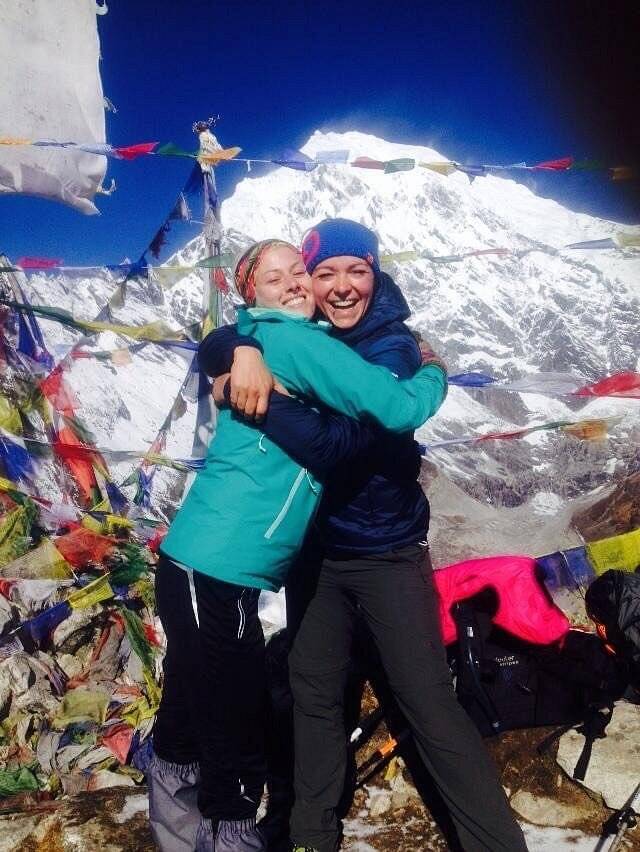
Cindy Campell
We did complete the 7 days Langtang Valley Trek in May. Instantly our trip was booked with Nepal High Trek & Expedition and genuinely there were perfect and very flexible in everything. The trekking itinerary, budget, services, guide and porter were brilliant. We had a great time around the beautiful mountain and it was a great trip. Our guide Pasang was professional, friendly and helpful. He had helped us to complete the whole trip and the trip was easy that we didn’t feel AMS. I would highly recommend this trek and use to this perfect local team if anyone planning to visit in Nepal.

Langtang Valley with Gosainkunda Lake Trek
I traveled to Nepal with my parents and completed the Langtang Valley with Gosainkunda Pass Trek for over two weeks with Nepal High Trek & Expedition. We all played dice games together and had a load of fun but what impressed me most was Anjan’s knowledge and experience of the area, the culture, the mountains and around the valley of Langtang. Anjan’s calm confidence was always reassuring particularly when my mother got altitude sickness. A beautiful and memorable experience. I’ve recommended Anjan to friends and he would be my first choice if and when I will return soon to Nepal. We had a wonderful time with Nepal High Trek Team. A lot of thanks to everyone !!!

Wonda Williams
Langtang valley with gosainkunda.
I traveled to Nepal two years ago with my parents and completed the Langtang Valley Trek and Gosainkuda Pass Trek with over two weeks with Nepal High Trek & Expedition Team. Our Guide was Anjan and he was professional and honest. We all played dice games together and had a load of fun but what impressed me most was Anjan’s knowledge of the area, the culture, and the trek. Anjan’s calm confidence was always reassuring particularly when my mother got altitude sickness. A beautiful and memorable experience. I’ve recommended Anjan to friends and he would be my first choice if and when I will return soon in Nepal. we had a wonderful time with Anjan.
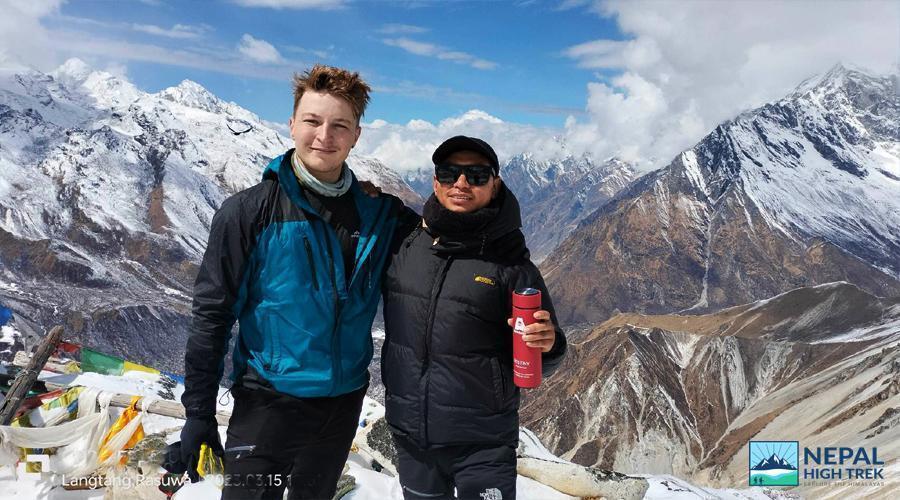
Torborg Sinow
I had an amazing time with Nepal High Trek! I planned my itinerary with Anjan by mail, who tailor-made it according to I my specific dates and requests. I was going to do the Langtang valley with Gosainkunda.
For the trek, I had the fortune of traveling with Indako, a very knowledgeable, friendly and funny guide. He was always ready to help, and fixed everything with food and accommodation. When I wanted to change the itinerary (see Tsergo Ri, and not go to Gosainkunda but return two days earlier) he planned a new itinerary on the fly. When I brought inadequate shoes he traded his for mine (they fit him better) which saved my summit attempt for Tsergo Ri. He also takes great pictures. Cannot recommend him enough
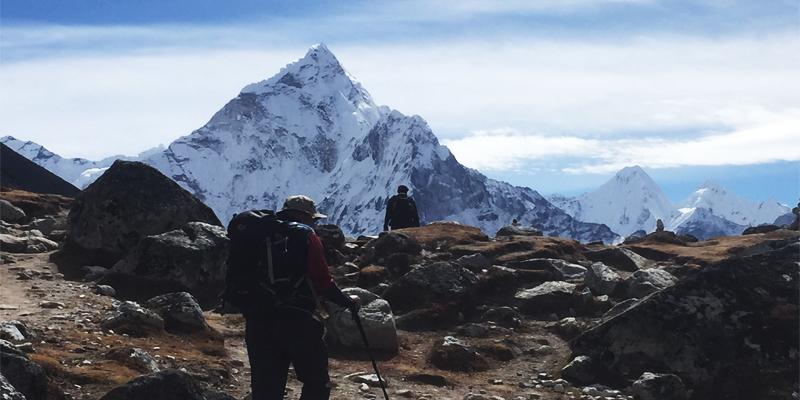
Robyn Henderk
My husband and I did a trek up the Langtang Valley in May 2023 with Nepal High Trek. Pawan was our guide. We had the most amazing experience with this guide service. They were honest, knowledgeable, and affordable. They made sure we were taken care of from the moment they picked us up from the airport to when we were dropped off.
I could recommend Pawan as a guide if anyone planning to trek in Nepal. My husband ended up getting a moderate/severe case of altitude sickness and needed to be helicopter evacuated to a lower elevation. Pawan was very helpful in walking us through our options, getting him the medication he needed, and attempting first to have him hike down before a flight was needed.
When it was clear my husband could not hike down, he arranged a helicopter which came as quickly as it could given the weather. We did a lot of research looking into guiding companies for this once in a lifetime trek. Nepal High Trek was our first choice and they lived up to our high expectations. We are planning to back again for Mount Everest Base Camp in 2024. Cheers Anjan & Pawan
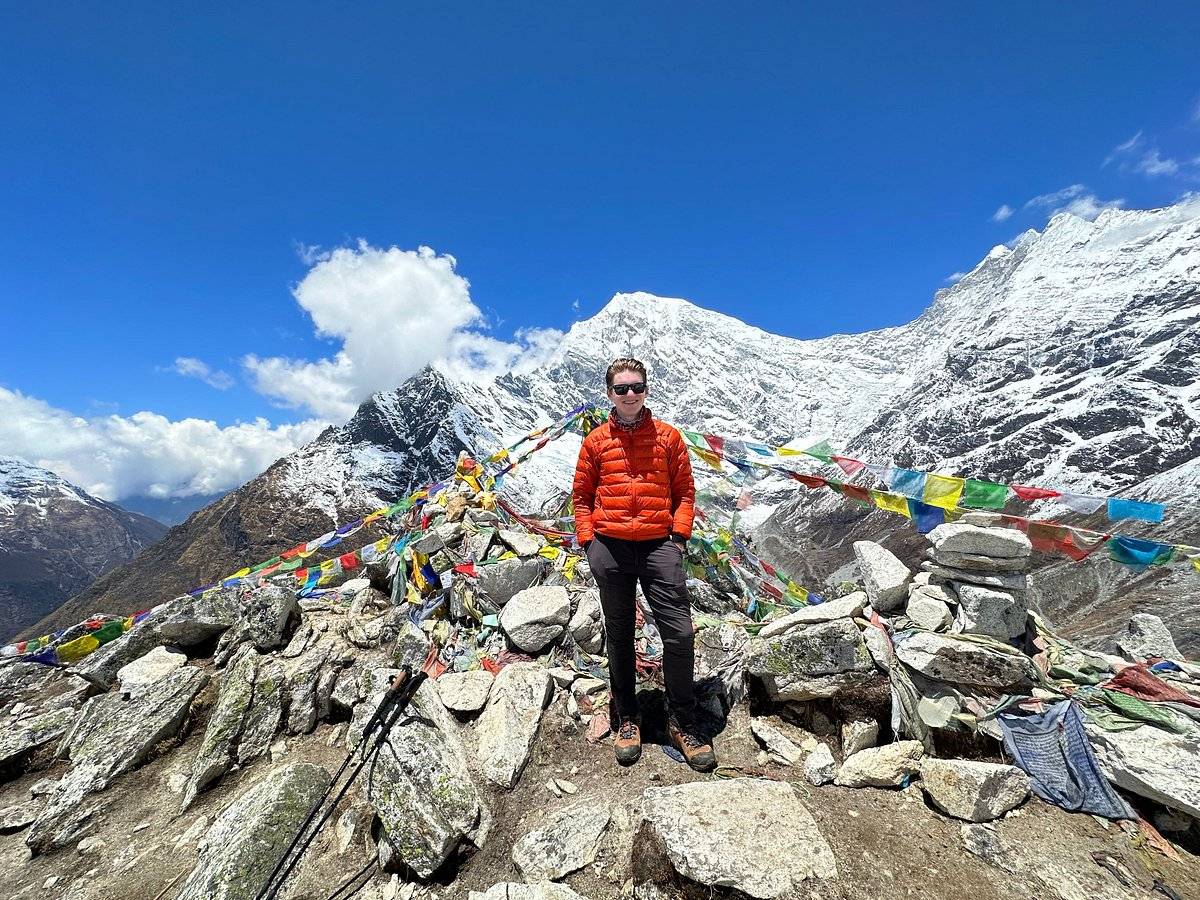
John Karpuk
Short langtang valley trek.
Excellent experience from start to finish! I had a last minute change of plans and contacted Anjan with less than 24 hours to go. He put together a 5 day Langtang Valley trek for my wife and me without missing a beat. We had an excellent guide (Buddhi) who took incredible care of us.
Reasons I would book with Anjan: personalized itinerary, experienced planner (Anjan used to be a guide himself), great guides, flexible planning, great value. Our 5-day itinerary included two private shuttles, 3 meals a day, lodging, a porter, and a guide for about a grand. On the trek, I didn’t have to worry about anything. If I felt like I could walk further, our guide knew the best place to stay in each stop and had the valley memorized like the back of his hand. Also, on the drive there are multiple army/police checkpoints and I didn’t have to deal with any headaches.
This trek would’ve been stressful (or impossible) to plan myself and Anjan and Buddhi made my life easy and made my wife happy. Worth every penny. I would book with these guys again next time I’m in Nepal.
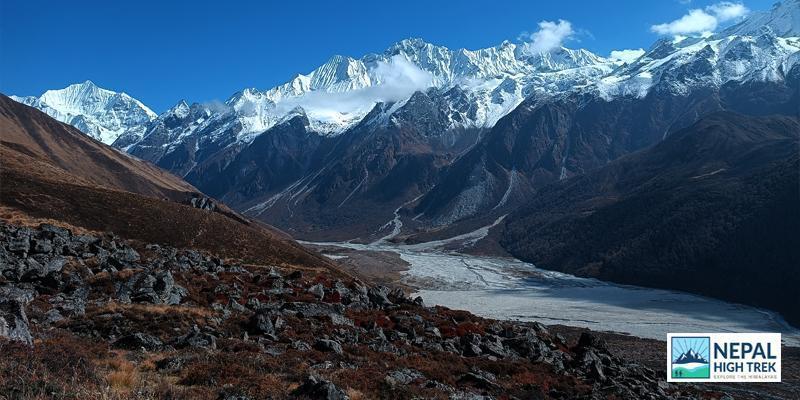
Andrew Wadsley
Australia new south wale.
In 2022, my son, husband and I did the Langtang Valley Trek with Anjan as our amazing guide. His knowledge of the area was extensive, including walking expectations, weather and terrain conditions, and the best places to stop, rest, eat and sleep. So much so, that other Trekkers called on his advice despite having their own guides. He was a very acknowledges an expert mountain guide. On the trek, Anjan was nurturing, fun and extremely amicable with everyone. He had a very endearing personality, and over the two-week trek, he became a member of our family. I highly recommend Anjan to anybody considering undertaking any trek in Nepal.
Similar Trips

Gosainkunda Pass Trek also called East Laurabina-La a wonderful adventure following the pilgrimage trail to the holy Gosiankund ponds. Gosainkunda Pass Trek is an enjoyable high-altitude walk in the close harmony of beautiful…
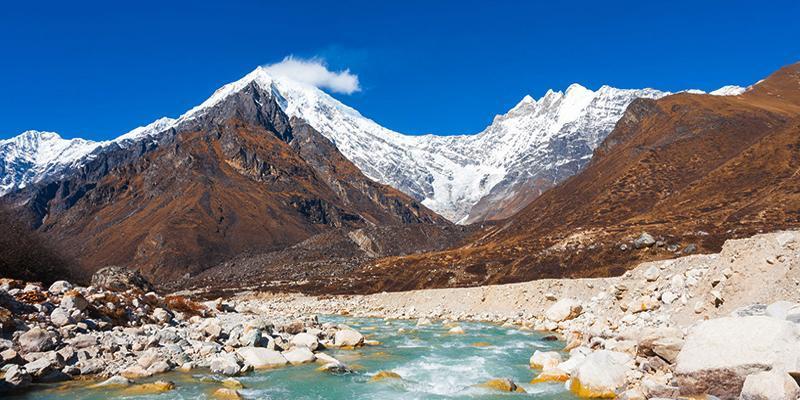
- Moderate/Adventure
Langtang Valley and Ganja La Pass Trek is an adventure that leads you to both the beautiful and cultural areas of Langtang Himal. An enjoyable, exciting journey around remote pockets of Langtang

Helambu Trek is one of the short moderate hikes of a week the area is almost forgotten by other trekkers. At present few groups of foreign visitors seldom venture to this lovely countryside,…
Langtang Trek in Nepal is the majestic journey towards the mythic and mystic areas of the Langtang region. The place is the host of the place where one can get the outstanding attractions…

Nepal High Trek & Expedition in Nepal is a trekking agency run by the Lama people. Therefore, traveling or trekking to the Langtang region of Nepal with us is always authentic. Get ready…

Our Partners

Sign Up for Our Free Newsletter
Make an inquery.
Trip Name : Your Name : Your Email : Telephone No : Your Message :
Everything You Need To Know About The Langtang Valley Trek

Most of you have probably never heard of the Langtang Valley or Langtang National Park, right? Or heard anything about this unknown but beautiful trekking circuit in Nepal, only a relative short drive from the chaos of Kathmandu. If you have ever been lucky enough to be walking around the streets of the capital on an exceptionally clear day, the mountains you will be seeing are those of the Langtang National Park.
So what to expect on the Langtang Valley trek? Stunning and often blooming rhododendron forests, Tibetan villages with some of the friendliest people on earth, exceptional hiking and often challenging sections along the Langtang Khola (river), valleys of waterfalls to 360-degree views of snowcapped peaks including that of Langtang Lirung, a 7,200 metre mountain.

Trekking in Langtang Valley is mindblowing! In this Langtang Valley Trek blog I will tell you all the things you need to know: places to see, difficulty, where to stop/sleep, trek cost, itinerary and more tips for an incredible experience.

The Langtang Valley trek has everything that the Everest Basecamp trek and Annapurna Basecamp trek have and the best thing about this Langtang trek is that you’ll pretty much have the whole valley to yourself… apart from a yak or two!
So if you want to get off the beaten path in Nepal travel to Langtang Valley!

Best time to do the Langtang Valley Trek
October and November are the ideal months to put on your hiking boots with little rain, good amounts of sunshine and warmth at lower altitudes. On higher grounds it already starts to get colder so prepared yourself well for the Langtang trekking.

Spring is also perfection from late March to May as Rhododendron’s bloom and wildflowers pop up all over the valley. This time of the year makes the Langtang stand out from other trekking circuits in Nepal.
In summer don’t be put off by the warmer weather below Lama Hotel because the higher you go, the colder it will get especially once you pass Langtang Village (from day 3 onwards). Chances of rain are significantly higher these months.
I did the Langtang Valley trek in the first week of June and temperatures were perfect for trekking. There was a slight chance of rain from day to day, but only one day it actually rained for about 2 hours. We found shelter in a tea house and order a pot of tea. Also magical! Unfortunately our days were mostly clouded, nevertheless it was an absolutely amazing lifetime experience.

Langtang trek difficulty
In general I found the Langtang trekking a bit more challenging than the Annapurna Basecamp trek, especially the first two days were long and tough to get through. From day 3 onwards it flattens out a little more and the trek becomes easier. In terms of altitude the Langtang Valley trek is pretty easy as the last village of the valley, Kyanjin Gompa, lies at only 3,800 / 12,500 foot.

These donkeys are only for transportation of goods. They look sweet and innocent, but one tried to kick me so be careful! You don't want to get injured while trekking in Langtang Valley.
If you scroll down on this blog you will find the Langtang trek itinerary in where I describe every day including the difficulty per day.
Personally, I would not worry about the Langtang Valley Trek difficulty too much. The first two days of any trekking are always hard. Every though start requires a little determination, but once you get through that and you start seeing the beauty of the surrounding mountain peaks then you will only be smiling.

Do you need a porter/guide?
When trekking the Annapurna Basecamp in 2013 I did not have a guide nor a porter. In all honesty I don’t think you need one for the Langtang Trek either, but…
My Langtang valley trek was with a group of 10 people and we had 1 amazing guide and 5 porters. Although you don’t need someone to guide you (there is only one way up) our guide was such an amazing addition to our team it was lovely to have him around. The same counted for the porters!

By hiring a team of porters and a guide you are contributing to local communities by offering these people a job. On top of that Nepali people are some of the friendliest in the world and having their smiling faces around you will surely cheer you up in times that the Langtang trekking is difficult. Also you don’t have to worry about guesthouses, meals, trip planning, etc. They fix it for you!

I hardly brought anything and only had my standard blue little backpack that I am now traveling around the world with for the last couple years. Which one? Click here to check out my Pacsafe .
What to pack for the Langtang Valley trek
For a comprehensive Nepal packing list be sure to visit my article in the link. There you will find everything you need to bring on the Langtang trek. Below in my list of Langtang Valley tips you can already find a couple essential things to bring.

9 Langtang Valley tips
1. where to sleep in langtang valley.
The trekking is a so-called tea house trekking. Basically you hike from mountain village to mountain village. Some villages consist of 50 houses, some of only 5. But no worries there are plenty guesthouses everywhere scattered along the trek. Accommodation is very basic but warm and cosy. Staying at the local guesthouses are one of the best things about trekking in Nepal in general.

Bring toilet paper! Western toilets are a rarity on the Langtang Valley trek. Some newer guesthouses in the bigger villages (Langtang Village and Kyanjin Gompa) have western toilets, but for the rest it will be squat toilets. My best tip is to start practicing! :)
First off have no expectations! If you prepare for the worst than all will be fine. Yes there are showers along the Langtang Valley Trek, but hot water is NOT guaranteed or chargeable. Don’t expect a hair dryer or any luxury item! So time your showers right…
On my 7-day trek in Langtang I had 3 hot showers. At the start and end of the Langtang trek in Shyaphru Besi and when we stayed at Langtang Village.
Make sure to carry enough cash on you to last the entirety of the trip from Kathmandu to Kyanjin Gompa and back as there are no ATM’s along the way. I will talk about the Langtang trek cost later, but better bring too much cash than a little too less. In the end of the day you are supporting local villages in the Langtang Valley and it feels good to spend money on these amazingly lovely people.
5. Phone signal
One of my favorite things about trekking in Nepal is that I can completely switch off. My first big trekking adventure was at Annapurna Basecamp in 2013 when I hiked through the mountains for 15 days. So when I went on the Langtang trekking I was really looking forward to not being online.
Things have changed and even going off the beaten path in Nepal there is a phone signal on the Langtang trek. In my article about the best sim card for Nepal I already explained that in case you are planning to go trekking in Langtang Valley you have to buy a Nepal Telecom sim card as that is the only signal available. There is only a signal in Langtang Village and Kyanjin Gompa, funny enough the two highest located villages at the end of the valley.
Ncell Nepal has no signal! I had an Ncell sim card and therefore still disconnected and I can tell you it feels amazing! :)

6. Wifi available
Nowadays there is even WiFi! So in case you really want to be connected to the internet you can buy internet access for a couple dollars. It costs about $10 for 1GB and you can use it in several guesthouse around Langtang Village and Kyanjin Gompa. Don’t expect high speed internet but I saw some other people using Instagram and Facebook with the Wifi.
7. Bring powerbanks
Most guesthouses will let you charge your electronic devices for free, others ask less than a dollar. But electricity plugs are limited so it is better to bring a couple strong powerbanks with you.
8. Tipping guides/porters
It is normal to tip your guides and porters. I am not 100% sure anymore but I think we tipped $30 per person with 10 people and dived the tip over the guide and the porters. The smile on their faces was priceless.

9. Langtang Trekking permit
Trekking in the Langtang Valley requires a TIMS card or a ‘Trekkers Information Management System’. These cards cost around 5,000 Nepalese Rupees ($44) and can be purchased enroute to the trailhead of the Langtang Valley or at the Nepal Tourism Board in Kathmandu.
A TIMS is a requirement for every major trekking in Nepal. Along with a TIMS, you are going to need to pay an entry fee for Langtang National Park. The Langtang National Park Entry Permit costs 3,000 Nepalese Rupees ($26).
Make sure you carry extra passport photos and a copy of your passport before purchasing a TIMS or National Park Permit as this will help the officers collect information for your TIMS.

Best Langtang trek itinerary
The most common Langtang trek itinerary is 7 days. Including the drive from and back to Kathmandu this Langtang Valley trek itinerary is 9 days.

Day 1: Drive from Kathmandu to Shyaphru Besi
- Distance: 120 kilometers (75 miles).
- Time: 9-11 hours depending on traffic and road conditions.
Getting to the trailhead of any trekking in Nepal is an adventure in itself meaning that nearly all adventures are bound to start in Kathmandu and may take up to half a day or more merely to get to the starting point of your trek.
Day 1 is more of a travel day, a really long one so make sure you are packed and ready to hit the road as early as possible to avoid the chaotic traffic of Kathmandu. Ideally, 05.00 or 06.00 in the morning is the perfect time to leave the city to avoid most of the crazy traffic.
Shyaphru Besi is located some 5 hours from the main road connecting Kathmandu and Pokhara and if you get out of the city before the traffic crawls to a stop, the whole trip either by bus or jeep should not take more than 9 hours.
Bus and jeep days can be long so make sure you charge up your phone or bring a book along to help pass the time. But prepare yourself for an at times horrible trip. Sorry I can’t make it sound better. The roads are really those of your worst nightmares! LOL
Oh and it is dusty! Like really dusty… :) A Langtang trekking tip I would like to tell everyone is to fix a vehicle with AC, like closed windows kind of bus/jeep! The dust is killing, or buy a mouthpiece!

Once at the trailhead, Shyaphru Besi is the last main town you will pass for the next week so be sure to have all the things to bring for the Langtang trek. Another good tip is to stock up on trail-snacks at Shyaphru Besi as the higher you climb into the Langtang Valley, the more expensive things become.
Day 2: From Shyaphru Besi to Lama Hotel
- Difficulty: Hard (long and tiring)
- Time: up to 8 hours
- Altitude: From 1,460 to 2,470 meter, total of 1,010 meters (3,310 ft) ascent.

Hiking out of Shyaphru Besi is a good feeling and knowing that you have officially put on the hiking boots and headed for the Himalaya is an even better feeling. The Langtang Valley trek has started! The first few kilometers of the trek involve swing bridges decorated with colourful flags and a first glimpse of the Langtang Khola which is a mighty river originating from the Langtang Glacier.

The first hour of the trek is quite flat following parts of an unfinished road and a rather mild mule track but that all changes once you arrive in the town of Pahare where a seemingly endless barrage of ups and downs occur over the course of the next 4 or 5 hours.
Fueling up or eating when trekking at altitude is essential so don’t forget to have lunch and plenty of water. Bamboo is an idyllic place to rest before pushing on through the thick native forests.

Me and my guide at Bamboo.
After resting up at Bamboo, you will notice the steep, rocky walls of the Langtang Khola which rise sharply into the sky. If you are lucky enough, Langurs are a species of monkey common to the area and can be seen bounding from tree to tree in search of fruit and new leaf shoots. High on the rocky walls are ginormous hives of honey often 1 to 2 metres in circumference which are extremely difficult to get to and harvest.
For the remainder of day 1, the trek weaves and winds over loose scree while continuing along the Langtang Khola River.

Lama Hotel is the name of the town and not a specific hotel and was our first place to sleep on the Langtang trek. Lama Hotel is based on the raging corner of the Langtang Khola while being tucked away into a beautiful patch of forest where curious monkeys often come down from the trees to pinch food from unsuspecting tourists.
The best place to stay in Lama Hotel is the first guesthouse on the left called Friendly Guest House. Everyone was broken that first day and even before dinner we all laid down to take a nap. Day 1 of the Langtang trek definitely was the most difficult one.
Day 3: Lama Hotel to Langtang Village
- Difficulty: Medium to hard as you will feel the big day from yesterday.
- Time: up to 7 hours.
- Altitude: From 2,470 to 3,400 meter, a total of 970 meters (3,200 feet) ascent.
Lama Hotel to Langtang Village is a big day and a welcome change to the ups and downs of Shyaphru Besi to Lama Hotel. Already after 1 day of hiking, the scenery starts to change within the first 2 hours of hiking.
Once you have hiked past the small village of Thomna, the valleys open right up giving stunning views of the towering cliffs and the odd glimpse of Langshisha Ri, a 6,560 metre snowcapped peak still some incredible distance away.
During the 2015 earthquake, the Langtang Valley was one of the most heavily affected regions in Nepal so you will notice large areas of debris, ruined houses and remnants of the recent earthquake. As the region is now stable, there are times where you will see plumes of dust after loosened rocks gravitate their way to the valley floor.
With towering cliffs all around, waterfalls are a common sight.
Enroute to Langtang village, there are a few good options for a meal and a cup of hot tea my favourite being Chyamki, a tiny village just before Langtang village and a mere 45 minutes hike away. What makes Chyamki so incredible the fact that it just survived from being wiped off the map in the 2015 earthquake.
Today, an area the size of 30 or more football fields divides Chyamki from Langtang Village. This particular landslide was so intense that it dislodged a glacier which slid from high up in the mountains above and to get from one village to another, you have to cross the remnant glacier by foot!
Langtang Village sits at 3,400 meters and is the first place from where you will get to take in the ultimate Himalayan views at a relatively close distance. To the north of the village, the Luri Himal can be seen, a 6,905 meter mountain peak. This particular chain of mountains connect to Langtang Lirung but more on that later!
With the Langtang Village being affected by the 2015 earthquake, many guesthouses are still being built but there are plenty to choose from. The good thing about all these new guesthouses is that they mostly have a western toilet and a proper hot shower.

Langtang Village was the only place on the trekking where I took a hot shower. Don’t judge me, it is normal to take only 1 shower a week when trekking in Nepal. By the way I tried washing myself in the Langtang Khola River but damn you need a thick skin for that: COLD!!!!
Day 4: Langtang Village to Kyanjin Gompa
- Difficulty: fairly easy as it is mostly flat/very slowly ascending.
- Time: up to 4 hours.
- Altitude: From 3,400 to 3,800 meter, a total of 400 meters (1,300 feet) ascent.
Langtang Village to Kyanjin Gompa is a slow going day despite its short distance. As the trail progresses, the valley opens right up and reveals stunning peaks in all directions.
As soon as you put Langtang Village behind there is a short steep climb for about 20 minutes, but then the trail flattens and follows Mani walls which are long rock walls with hand carved Buddhist writings imbedded into slabs of rock. Walking past Mani walls requires you to walk on the left-hand side which is a sign of respect for Buddhism and Hinduism which are prevalent in Nepal.
With only a few ups and downs, the hike is straightforward giving you time to take in the sights of a stupa at Yamphu which can be entered. In the middle of the stupa is a prayer wheel of gigantic proportions that spins as it is pushed while butter lamps flicker with the entering breeze.

From the Yamphu stupa, it is a matter of 30 minutes uphill hike to Kyanjin Gompa.There are several ways to reach Kyanjin Gompa, I recommend to take the high route over the big hanging bridge from where you have amazing views over one of the glaciers in the Langtang Valley.

Once you arrive in the small but charming town of Kyanjin Gompa, be prepared to be blown away by the closeness of Himalayan giants. Every direction you set your eyes upon, mountains pierce the sky while glaciers, seracs and chutes of snow bound the imposing mountain faces.
For now, take the rest of the afternoon off to acclimatize so sit back with a cup of tea and enjoy the views! Chilling out in Kyanjin Gompa taking in these views with a hot tea was one of my highlights of the Langtang Valley trekking.

Day 5: Rest/acclimatisation day at Kyanjin Gompa
There’s nothing more important than having a rest day or even two when hiking at altitude. Acclimatization allows your body to adapt to the change in atmospheric pressure. The higher in altitude you are, the less oxygen is available so there are a few key things to do to help your body adjust.

Drink More Water! Dehydration at altitude is common. When conditions are colder you may not want to consume water or fluids, but you’ll need to drink as much as possible until you become hydrated.
Drink Less Alcohol! Look who’s talking! But seriously guys, alcohol and altitude DO NOT go hand in hand. Wait until you are at a reasonable level, preferably when descending before consuming alcohol. Or just when you know you are going down.
In all honesty we got freaking drunk on day 6 in Kyanjin Gompa after we climbed to Kyanjin Ri. :)
Go High, Sleep Low! Possibly one of the best techniques for adapting to higher altitudes. A simple method of hiking to a higher altitude than to where you are going to sleep that night. Hiking to an altitude of already 200 meters higher than your accommodation and turning around will drastically help you sleep at night.
Don’t Forget to Eat! At altitude, your body consumes a lot of energy so make sure you have had an adequate meal before going to bed.
Take naps! Sleeping is by far the most important thing to do while at altitude. Sleeping at altitude can be strange with lucid, real life dreams occurring almost nightly to restless nights where you might not get any shut eye at all. Nights in the Himalaya and guesthouses can be long as they are very different to that of a western house so bring a book to read or music to listen to and that might help you sleep.
I usually sleep bad in the mountains. I tend to wake up in the middle of the night and can’t fall back asleep, because of my aching body. I seriously felt like I was suffering insomnia the first days on the Langtang Valley trek.
Now for exploring the village of Kyanjin Gompa!

With a rest day at hand, make sure to get out of the guesthouse to stretch your legs. Without doing anything too extravagant, you can walk to the nearby Yak Cheese Factory and sample a rather tasty delicacy of the high Himalaya.
If you’re feeling a bit more adventurous, I recommend going for a short walk to a lone stupa looking out to the incredible 7,227 meter Langtang Lirung peak which takes around 1 hour return.

Day 6: Summit Kyanjin Ri and back to Kyanjin Gompa
- Difficulty: Hard! This day involves some serious climbing, don't underestimate it.
- Time: up to 6 hours.
- Altitude: From 3,800 to 4,770 meter, a total of 970 meters (3,200 feet) ascent and back down.
Kyanjin Ri a peak adjacent to Kyanjin Gompa and a good challenge providing exceptional views of Langtang Lirung, Yala Peak and the Dorje/ Kangjala Himal.
The hike to Kyanjin Ri can be divided into two parts with the first being a rocky outcrop perched at 4,300 meters. As the hike is quite a jump in altitude, be sure to spend 30 to 45 minutes here before pressing on to the summit of Kyanjin Ri.

Kyanjin Ri is further away than it appears and is a lot steeper than you would imagine. A beautiful ridgeline precariously fades into the distant with the Kinshung and Yubra peak dominating the view. Depending on your level of fitness, the summit of Kyanjin Ri can be reached within 1 hour, preferably take your time to avoid altitude sickness related problems.

The views from the top of Kyanjin Ri are outstanding with enhanced views of Langtang Lirung as well as the gnarly ridgeline and summit of Kinshung Peak. When you are lucky you can even see the Shishapangma mountain just across the border in Tibet/China. This is the 14th highest mountain in the world with an altitude of 8,027 meters (26,335 ft).

When I was climbing to the top of Kyanjin Ri it started raining and I almost aborted my mission. Luckily I decided a little while later to continue and I’m extremely happy I did. Reaching the top of a mountain probably is one of the most rewarding feeling there is!

A long time ago in 2008 I did my first mountaineering trip in Bolivia to the summit of a mountain 6,088 meters (19,980 ft) above sea level. Until today it is one of my best travel adventures from around the world.
Descending from the summit can take 2 hours at the most but be careful as there are lots of loose, rocky sections.

Day 7: From Kyanjin Gompa back down to Lama Hotel
- Difficulty: Easy! From this day onwards it is all downhill.
- Time: 6 to 8 hours.
- Altitude: 1,440 meters (4725 ft) descent.
The Langtang Valley Trek as you might have noticed is a return trek unless you are thinking of combining the Panch Pokhari Trek which can be done by taking a high route just past Kyanjin Gompa.

As for the return part of the trek, you can do it in a few different ways depending on the time you have allowed yourself in Langtang Valley. If you are thinking of changing up the trek on the way back down, you could possibly stay at a different guesthouse in a different town or village.
Nearly 95% of the trek is downhill and the elevation that you will lose is guaranteed to give you a good night’s rest.

Due to our time restraints, we chose to hike back to Lama Hotel which took 8 hours and stayed at the same guesthouse due to the awesome hospitality provided. The party already started in Kyanjin Gompa, but when we got our hands on a couple more bottles of Nepali rum we got completely hammered at Lama Hotel.

Day 8: Lama Hotel to Shyaphru Besi
- Difficulty: easy/medium. It just drags along and you want to get back to civilisation!
- Time: 6 hours
- Altitude: 1,010 meters (3,310 feet) descent.
Once again, due to time restraints we were unable to extend our time in the Langtang Valley however if you have sufficient time towns like Bamboo and Hotspring provide all your needs for an overnight stay off the beaten path in Nepal. Both Bamboo and Hotspring are meters away from the Langtang Khola giving you a soothing soundtrack to your relaxation after a day on the trail.
When doing the Annapurna Basecamp trekking in 2013 I loved it so much that I was probably the slowest trekker on the mountain. If you have time, take your time! You won’t regret being an extra day close to nature and it cuts the long walk down into two as well.
If you decide to press on for Shyaphru Besi, today is much like the first day with a decent amount of ups and downs, swing bridges and warm temperatures.
After a week or more in the Langtang Valley, Shyaphru Besi is a welcoming site with a hot shower very much on the cards.
Day 9: Back to Kathmandu!
I hope all the above Langtang Valley trek tips were helpful and it got you excited to go off the beaten path in Nepal. May you have any questions please hit me up on my Instagram @traveltomtom . Here you will also find some more stories and videos of my Langtang trekking. Curious what to bring to Nepal then click on my packing list article and read what to put in your suitcase. Also inspiring to read is one of my first ever articles about the Poonhill trekking . A short but great trekking in the Annapurna region to one of the most amazing viewpoints in the Himalayas.

Curious how to be able to travel the world full time ? Click on the link to read my story or see here how to make money from travel blogging .
Enjoy your trip to Langtang Valley!
- Government Registered No: 113188/070
- Tourism No: 1599
- VAT No: 601221723
Nepal Eco Adventure
Committed To Be Eco Friendly!
- +977 9851170646 (Chhatra)
5 Days Short Langtang Trek
Langtang Trek is one of the shortest and most picturesque trekking experiences in Nepal , which takes the trekkers through an exhilarating experience of the Himalayas from Langtang’s perspective. Although there are several variants for the unforgettable exploration of the Langtang region that last from 7 to 15 days normally. Our Langtang Trek 5 Days Itinerary trek focuses on a short expedition of the region without missing much on the major highlights for the enthusiasts looking for a soulful escape to the Himalayan exploration in a limited timeframe.
As one of the closest trekking alternatives from the capital (just 51 km away from Kathmandu ), this is a very popular trekking route among adventurers from all over the world who want to explore a different perspective of the glorious Himalayas following a remote and isolated path. So, if you have a short time on your hand and want to include Himalayan exploration in your getaway, this Langtang Trek 5 Days Itinerary will be your golden trophy as a memoir of your great adventure.
- First Himalayan National Park, Langtang National Park
- Exploration of the Langtang Valley, a significant trade route connecting Nepal and Tibet in the past
- Kyanjin Gompa at an elevation of 3,830 meters, preserving Buddhist culture and traditions
- The highest viewpoint of this Langtang expedition Kyanjin Ri (4,300 meters)
- Unprecedented up-close views of magnificent mountain ranges of the Himalayas like Langtang Lirung, Ganesh Himal, Naya Kangri, Yala Peak, Dorje Lapka, Gang Cheenpo and Mt. Ganesh Himal.
- Traditional and culturally rich Himalayan civilizations
- Yak cheese factory
- Opportunity to witness the unique species of flora and fauna in the Langtang region
- Scenic natural and religious trails with great historic significance
- Short-scenic 5 days adventure exploring the remote and hidden gems in the Langtang Valley
Cost Includes
- Healthy nutritious balanced meals, three times a day during the expedition
- Freshly sourced fruit accompaniments every evening after dinner
- Comfortable and standard accommodation services in teahouses along the trail
- All the necessary permits for the exploration of Langtang region and Langtang National Park including the TIMS (Trekking Information Management System) card
- Private Jeep Kathmandu-Syabrubesi-Kathmandu including hotel pick and drop.
- Government-licensed, trained, and experienced trekking guide proficient in English communication
- Cost of food, accommodation, salary, transportation, and insurance of the guide and staff of the expedition team
- First aid kit, comprehensive group medical supplies, and respondents to ensure the safety
- Use of sleeping bag, down Jacket and walking Poles (if you don’t have your own, To be return after trip completed). Using these 3 items you pay $10 USD each as maintenance and washing charge
- Nepal Eco Adventure T-shirt cap cap and duffel bag.
- Arrangement of Emergency Helicopter Rescue, covered by your travel insurance.
- Mentioned package costs include all the government expenses, tax, and vat including our official service charges
- Medical equipment for the physical condition of all our beloved trekkers in the low oxygen-saturation level (twice a day)
- Assistant guide group size above 6+ person.
Cost Excludes
- International airport pick-up and drop-off facilities and airfare expenses
- Nepal entry visa fees $30 USD 15 day and $50 USD for 30 days on arrival.
- Accommodation and eatery facilities on arrival at Kathmandu
- Soft drinks, bottle of water, any alcoholic drinks, extra tea/coffee.
- Desserts and snacks between the meals.
- Expenses for travel and mountain rescue insurance
- Tips for the guides, porter, and driver (tipping is expected)
- Porter to carry your gear during the trek $125 USD one porter can carry for two trekkers gear.
Join Our Fixed Trip Starting Date
Load More Show Less
You will need approximately 5-7 days for the exploration of the Langtang region.
Langtang trek has been graded at a ‘moderately difficult’ level, which means that even beginners can do this trek with the right preparation.
The months in the peak season like March, April, and May (spring) and September, October, and November (autumn) are the best time for the Langtang trek.
No, it is not possible for you to go out on the Langtang exploration without a guide, it is mandatory for you to hire a professional service considering the safety and convenience factors.
During the clear days you will be able to get a good view of the mountain ranges from Langtang to Chamlang, and also occasionally massifs like Annapurna, Kanchenjunga, and Mt. Everest.
Kyanjin Ri at an altitude of 4,300 meters from sea level is the highest point of the Langtang Trek 5 days itinerary.
Langtang Trek 5 Days Itinerary Difficulty
The Langtang Trek has been graded at a ‘ moderate difficulty’ level, which means that even the inexperienced trekking enthusiast can partake in this beautiful expedition to the Langtang region with the right amount of preparation. Although it doesn’t demand any mountaineering or technical skills, like any other high-Himalayan adventure in the county, you will need proper mental and physical preparation to complete this expedition.
There are several factors that should be considered while evaluating the difficulty level of the Langtang trekking expedition.
- Altitude Sickness
Altitude sickness is one of the major concerns for any high-altitude adventure across the world. But considering the frigid cold weather of the Himalayas, you could say that you need better prevention for Acute Mountain Sickness (AMS). That's why you have to always be on the lookout for any kinds of symptoms like headache, nausea, dizziness, shortness of breath, and fatigue, that are related to altitude sickness.
Starting your adventure from Rimche at an elevation of 2,450 meters from sea level the highest elevation jump point of Langtang Trek is Kyanjin Ri at an altitude of 4,300 meters. Although, unlike other high-altitude adventures that have several acclimatization days, due to comparatively less significant altitude, there isn’t an acclimatization in this Lantang Trek 5 days itinerary. So, you will need to follow proper precautionary methods to avoid any altitude sickness-related issues. It would be better not to underestimate the trekking in the Langtang region, even though you are less likely to suffer from severe altitude sickness at these elevation points, you should still take proper acclimatization measures.
Trekking Distance
Yes, you are right, the fewer the number of itinerary days, the more trekking distance you have to cover. Although it is relatively on easier and at lower altitudes, long days of trekking aren’t an easy feat, you will need to cover an average walking distance of 7-8 hours . And covering this much distance without any preparation isn’t certainly going to be an easy feat.
However, there aren’t any technical segments en route or a great number of steep segment slike like other high-altitude trekking expeditions in the country. So the slow-paced exploration won’t be much of a big deal if you have well-prepared for the adventure, but it will certainly test your stamina and endurance level. Still, what really makes this trekking expedition challenging is that this Langtang trekking covers an approximate distance of 77 km (88 miles) within 5 days without any resting days. Thus you need to be able to carry on with the adventure without missing out on resting part and taking good care of yourself.
Weather Factors
As the weather change, the climatic conditions on the trekking routes also changes accordingly. Thus, these kinds of climatic changes in the trekking route can significantly contribute to the difficulty level of a trekking experience. The best season for Langtang Trek like any high-altitude expedition in Nepal is during the peak seasons like spring (March, April, and May) and autumn (September, October, and November).
Trekking in the Langtang region is also possible during the off-seasons like winter (December, January, and February) and monsoon (June, July, and August) , they come with their own challenges and difficulties. So, if you are looking for a comfortable immersive experience, the best time to set out on the exploration of the Langtang region would be the peak seasons.
Weather of Langtang in Autumn
Autumn is considered to be the best time for trekking in the Himalayas. The cool chilly mornings and nights, warm-tempered days with stable weather, and clear views offer some of the most exhilarating experiences exploring the true beauty of the Langtang region. The temperature of the Langtang region is around 10°C to 20°C during the daytime and can drop up to approximately 5°C during the nighttime.
Although the early month of autumn can be slightly bothersome if the monsoon lingers around the first part of September, the rest of the season is cool and breezy, a perfect period for outdoor adventure.
Weather of Langtang in Spring
Another peak season for trekking adventure in Nepal, spring, welcomes trekkers with warm stable weather and of course, the colorful blooming flowers that cover entire lower-region regions. In your trekking expedition to the Langtang region during the spring you will be able to explore the entire region brimming with life.
The temperature during the spring is also stable and ranges from 10°C to 20°C and the night-time temperature can fluctuate around 0°C to 5°C at higher altitudes. But, both of the peak seasons see a lot of adventurers, so you might have to occasionally deal with the queues in the teahouses and trails.
Weather of Langtang in Monsoon
The weather in monsoon is unstable for an outdoor adventure, and the non-stop rainfalls that result in muddy and slippery routes certainly aren't the best time for a trekking experience. The monsoon rain doesn’t only mess up the trekking routes but also significantly increases the chances of landslides that sometimes even block the routes.
Leeches and mosquitoes swarm the region and the bad weather conditions also sees lots of flight cancellations. So, if you don’t have the patience to wait for a few days for the weather to clear or halt your ascends for safety clearance, Langtang trekking , in this season might just dampen your exploring mood. The temperature of the Langtang region fluctuates from 10°C to 25°C , and the average temperature of the region lingers around 12.1°C making it one of the warmest months for the trekking expedition.
Weather of Langtang in Winter
The winter is the most challenging season for adventurers seeking to explore the magnificence of the Langtang region at its peak. The cold frigid environment doesn’t just make the climate cold and harsh but also makes it very difficult to navigate and explore the region.
Morning fogs due to extreme cold weather stretch past the mornings and often cover high-altitude vantage points. The temperature of the Langtang region hovers around 3°C to 6°C during the daytime and can drop to -3°C during early morning and night. Although it is still possible for the Langtang trekking during the winter, the difficulty level is certainly high and you will need a specific set of equipment, trekking gear, and clothes to successfully complete the trek in this season.
Preparation Langtang Trek 5 Days Itinerary
Although Langtang Trek 5 days itinerary is a slow-paced short adventure that explores the unprecedented beauty of the Langtang region. To cope with the no rest or acclimatization adventure you will need to properly prepare both mentally and physically.
Required Level of Physical Fitness
In this ‘moderate difficulty ’ level adventure, you will at least need a basic level of fitness . As the trekking days are longer with approximately 7-8 hours of walking per day, you will require a great deal of stamina and endurance. It is recommended that you should start preparing for the expedition at least 8-12 weeks before it starts, emphasizing your strength and endurance build-up.
With the right amount of physical preparation, you could easily complete this immersive trekking experience in the remote part of the Langtang region. Practicing hikes on the natural terrains will come in a lot helpful as you will be trekking on the steep regions with frequent ascents and descent. Just make sure to add some weight to your backpack while you are hiking, also, wear your trekking boots during the expedition this will help break in the boots and check the comfort level.
If you work out on a regular basis then this scenic short adventure will be just a piece of cake for you. In case you don’t, stamina, cardiovascular training like jogging, cycling, and swimming will be very effective. As for the strength part, planks, bench presses, deadlifts, push-ups, shoulder presses, and full-body workouts will significantly improve your core strength.
Mental Preparation
Don’t make the mistake that almost every novice trekking enthusiasts make, just focus on the physical preparation factor and leave out the mental preparation part. Undoubtedly physical preparation is a big part of any successful high-altitude adventure, but so is mental preparation.
By mental preparation we don’t mean that you don’t have to keep yelling at yourself ‘You can do This’ all the time, just the right set of mind and mentally preparing for the remote high-altitude expedition will take you far. As you have understood this is a short exploration of the Langtang region without any resting and acclimatization days, after trekking for long hours, you will have to prepare yourself and rest well for the adventure the next day.
Just be prepared for slight discomforts, stressful situations, and almost non-existent luxuries of an urban lifestyle on the trekking route. And at the same time sharpening your determination and will to see it through, if you have decided to do this then see it all the way to the end.
- Langtang Trek Cost
- Langtang Valley with Ganja La Pass Trekking
- Langtang Circuit Trek in Nepal
Write a Review Cancel reply
Thank you. Your review will appear after admin approves it.
Please fill all the fields.
Your email address will not be published. Required fields are marked *
Review Title*
Date Of Experience
Photo Gallery Invalid File Type. Supported File Type: JPEG/JPG, PNG. Drop your Image or click to browse Supported file : JPG, PNG, GIF
Save my name, email, and website in this browser for the next time I comment.
You Can Send Your Inquiry via The Form Below.
Send your inquiry via the form below, we will reply to your email as soon as possible.
- Full Name *
- Contact No.
- Trip Type * Select Trip Type Private Group Joining
- No of Travelers *
- When Will You Be Travelling? Day 1 2 3 4 5 6 7 8 9 10 11 12 13 14 15 16 17 18 19 20 21 22 23 24 25 26 27 28 29 30 31 Month 1 2 3 4 5 6 7 8 9 10 11 12 Year 2025 2024 2023 2022 2021 2020 2019 2018 2017 2016 2015 2014 2013 2012 2011 2010 2009 2008 2007 2006 2005 2004 2003 2002 2001 2000 1999 1998 1997 1996 1995 1994 1993 1992 1991 1990 1989 1988 1987 1986 1985 1984 1983 1982 1981 1980 1979 1978 1977 1976 1975 1974 1973 1972 1971 1970 1969 1968 1967 1966 1965 1964 1963 1962 1961 1960 1959 1958 1957 1956 1955 1954 1953 1952 1951 1950 1949 1948 1947 1946 1945 1944 1943 1942 1941 1940 1939 1938 1937 1936 1935 1934 1933 1932 1931 1930 1929 1928 1927 1926 1925 1924 1923 1922 1921 1920
- Your Message *
This trip is fully customizable
- Have a big group? We can help.
- We can customize your trip as per your request
- We can help you make fit it your all the itinery
Trek’s Route Map
- Trip Destination: Langtang Region
- Difficulty: Moderate
- Group Size: 2-20 PAX
- Best Season: Spring and Autumn
- Maximum Altitude: Kyanjin Ri 4,300 meters
- Transportation: Public/Private Vehicle
- Trip Duration: 5 Days
- Accommodation: Guest House/Lodge/Tea House
- Walking Duration: 6-7 Hours
- Starting Point: Kathmandu
- Ending Point: Kathmandu
Certificate of Excellence
Travel info.
- Getting Tourist Visa for Nepal
- Trekking in Nepal- Complete Guide
- Visa Info and Religions in Nepal
- Visa Information
- Responsible Tourism
- Trekking Seasons in Nepal
- Trekking Guide & Porter on Hire
- Trekking Equipment
Related Trips
Langtang gosaikunda trek, helambu trekking, langtang circuit trek, tamang heritage trek, helambu gosainkunda trekking, langtang valley trek.

Himalaya Discovery

Langtang Trek 7 Days
The Langtang is the nearest Himalayan trekking region from the Kathmandu Valley. A few hours drive from Kathmandu can take you to the beautiful Langtang region . Despite its proximity to the Kathmandu City, the Langtang Region is as wild as any Tibetan highlands with an idyllic rural landscape.
The people living in the highlands of the Langtang region are from Tibetan Origin, hence they look like Tibetans . Langtang region is one of the most popular trekking regions for those wishing for a trek from Kathmandu into the Himalayas influenced by Tibetan culture and lifestyle within 7 days.
7-day Langtang Trek takes the trekkers through its forests and among the villages and farmlands of its people, many of who are of Tibetan origin. Once an important trading route with Tibet, this influence is reflected in the character of the villages and peoples.
During part of the Langtang trek, you will be walking through National Park, and though wildlife is never easy to spot in a forest setting, there are chances of seeing some interesting animals and birds. Among those found in the park are monkeys, musk deer, pika and the national bird of Nepal, the colourful danphe.
The Langtang Trek, from Langtang village, the track continues to Kyangjin Gompa (3,740meters). This is the site of the Yala Cheese Factory. There is a STOL airstrip at Chhaldang, a short distance east of Kyangjin. Visiting the Yala Cheese Factory (4.633meters) and the small lakes beyond Yala are worthwhile. Yala can be reached within half a day from Kyangjin Gompa.
From Kyangjin Gompa, a continuation to the pastures of Langshisa (4.084meters) offers the good views of numerous glaciers. There are some huts in Langsisa that can be reached within one day’s walk from Kyangjin Gompa.
Langtang Trek Difficulty
Is it difficult to trek to Langtang? The trek in the Langtang is considered a moderate trek. Unlike moderate treks, walks and altitudes are longer than easy treks. The route is steeply climbing or descending in some places. You will need an average level of physical fitness in order to enjoy the trek.
However, a moderate trek does not require as much skill, knowledge However, moderate trekking does not require as much skill, knowledge and experience as difficult trekking. Even if it’s your first trekking experience, it might be a nice choice to start with Langtang. Rest enough if you’re overweight or senior and break the walk into short walks.
Best Time to Trek Langtang
When to Trek Langtang? Spring (March to May ) and Autumn (September to November ) are the best time to trek Langtang Valley. You can enjoy the rhododendron filled forests during Spring and you will see beautiful clear mountain views in Autumn. The weather during these seasons is warm and stable with a temperature range of 10 °C-15 ° C. There is also no chance of rainfall so you can walk on the trekking trails freely.
To see the magic view of the snow-capped peaks, you can choose a winter trek, but the weather and climate may make your trek more difficult. In higher altitudes, the temperature drops down to below 0° C. Cold winds, slippery trails, and heavy snowfall can make the trek difficult.
In the Langtang region, if want to do 10 to 15-day trek, then you can also combine with the Langtang Gosaikunda Trek, Helambu Trek or Tamang Heritage Trail if your time allows, which will give you a nice trip of the Langtang region.
For those who want to trek this off the beaten track and see something completely different from many of the more touristy areas in the country, this is a perfect trek.
Upon your arrival in the Kathmandu airport after completing your custom formalities Visa, etc. pick up your luggage and look for our airport representative from Himalaya Discovery, who will display your name on the board at the arrival gate. You will be greeted by our representative and transferred to your hotel by private tourist vehicle. Overnight in Kathmandu.
Leave Kathmandu early in the morning for the 6 hours bus journey to the Langtang Valley Trek. Your guide will assist you to get the bus from Machhapokhari to Syabrubesi. Your drive begins at 7:00 AM.
You will enjoy the beautiful view of landscapes, villages and winding roads along with the massive Trishuli River. After your thrilling 6 hours bus ride you will reach Syabrubesi (1,500m).
Your first day is completed. You will have leisure time in which you can have a tour of Syabrubesi and enjoy time with villagers. Overnight at guesthouse.
Today, the first part of the trail crosses through Bhote Koshi and follows the Langtang Khola. This trail gradually ascents up to Bamboo passing through Landslide.
Afterward, your trek ascends gently to Rimche (2400 meters) through Bamboo (1960 meters) which lies at the bank of Langtang Khola. You can have lunch at this place if you like and at the end, your trail is level to the Lama hotel. En route you could see red pandas, monkeys and bears if you are lucky. Overnight at guesthouse.
From lama hotel, we continue gently ascending above the Langtang Khola. As the trail progresses, it becomes steeper. From time and again we can have the most exotic sights of Langtang Lirung lying at 7246 meters.
The trail leads to a log bridge and on climbing further we come across lush meadows of Ghoda-tabela at 2992 meters. We will see several lodges and a police check post. Further on, the route opens up into a wide valley of yak pastures and scattered Tamang villages showcasing water-driven mills and prayer wheels.
On descending for a while, we arrive at Langtang village after crossing a stream and reaching to the height 3430 meters.
Langtang village is the headquarters for Langtang National Park and has flat-roofed Tibetan style houses, hotels and cultivated lands yielding buckwheat, potatoes, wheat, turnips, barley etc. Overnight at guesthouse.
The trail skirts gradually through rich yak pastures and interesting traditional villages of Mundu to Singdun. We cross a wooden cantilever bridge and reach a wide valley after climbing a moraine.
Finally, on ascending along the mountain passes we arrive at Kyagjin Gompa. There is a small monastery and a government-operated cheese factory. Overnight at guesthouse.
We start hiking downhill, bringing our Langtang Trek Nepal towards the end. After breakfast, we leave Kyangjin. As we walk downward, we pass through a dense forest of Rhododendron and Pine. We hike back to the Lama Hotel, passing through dense forests and several waterfalls.
This allows you to take in the scenery of the beautiful mountains that you may have missed during your ascend. Walking through more Tamang villages, we get to Lama hotel by evening. Overnight at guesthouse.
Today, we have two options. We can either retrace our same route or take a more interesting route via Rimche. On the way to Rimche, we visit the village of Sherpa Gaon for lunch and get to Syabrubesi by evening.
Or, we walk through oak and rhododendron forests before returning to Syabrubesi and saying goodbye to the Himalayan wilderness. Before our Langtang Trek route concludes, feel free to stroll around the local market. Overnight at guesthouse.
Following your breakfast, early morning you can catch a coach and head back to Kathmandu. It takes you around 6 hours to reach Kathmandu.
In the evening we will have a farewell dinner in a traditional Nepalese restaurant with cultural performances.
Today, you can either stay back and enjoy a free day in Kathmandu or leave for your respective countries.
Our representatives will drop you off at the airport according to your flight schedule.
Price Includes
- Airport transfers pick-up and drop-off.
- Three meals a day (breakfast, lunch and dinner) during the trek.
- Hot drinks tea/coffee three times a day.
- All accommodation during the trek.
- All necessary paper works, Langtang National park entry permit.
- Trekking information management system (TIMS) permit.
- From Kathmandu – Syabrubeshi – Kathmandu by bus or Private transport.
- English speaking, trained government license holder Guide.
- Porter to carry your luggage during the trek (1 porter for 2 trekkers)
- Accommodation / salary / food / drinks / insurance / equipment / medicine and transport for all staff.
- Medical supplies (first aid kit will be available)
- Walking stick (if it is required)
- Himalaya Discovery duffel bag.
- All government taxes.
- Farewell dinner with culture show.
Price Excludes
- International airfare and Nepal entry visa, you can obtain a visa easily upon your arrival at Tribhuwan International Airport in Kathmandu.
- Tips for guide/porter (tipping is expected)
- Travel insurance which covers emergency Rescue and Evacuation.
- Any others expenses which are not mentioned on the 'Price Includes' section.
[faq_shortcode id=”1030″]
The above information is a guide and standard template of what we provide. This itinerary can be customized according to the duration of your holiday. We have many options for shorter visits based on your interests and budget.
On an adventure trip of this type, weather, political strikes, transport or a multitude of other factors beyond our control can result in a change of itinerary. It is however very unlikely that the itinerary would be substantially altered; if alterations are necessary the leader will decide what is the best alternative, taking into consideration the best interests of the whole group. Where a change does occur, we do everything we can to minimize its effect, but we cannot be responsible for the results of changes or delays.
Trek Leader and Crew
Here at Himalaya Discovery, we firmly believe that the way to get the most out of your staff is to treat them well; a happy staff is a hard-working staff. And this belief manifests itself in every way we deal with our staff.
We employ only local leaders and staff to help sustain the local communities we work with. We provide training for all our staff and all our trek leaders are trained in the following as a minimum;
- Intensive Wilderness First Aid
- Trekking Guide Training
- Eco Trekking Workshop & Adventure Meet
- English Language
- Conservation & Biodiversity
- Rock & Ice Climbing & Mountaineering (for expedition leaders)
So, we can guarantee you your trip will be led by the best, most professional and experienced guides there are. All of our guides good English-speakers, All our guides are carefully selected for their experience, leadership skills and personal ability. We have learnt that effective leadership is a vital for a trip to be safe, enjoyable and successful.
In fact, not only are all our guides experienced working in these regions, but most of them actually grew up in these mountainous regions of Nepal. Its home for them, it’s in their blood. They’re not only ‘familiar’ with local communities and culture; they’re a part of them and they practice it. They truly love their home and relish getting the opportunity to show travellers.
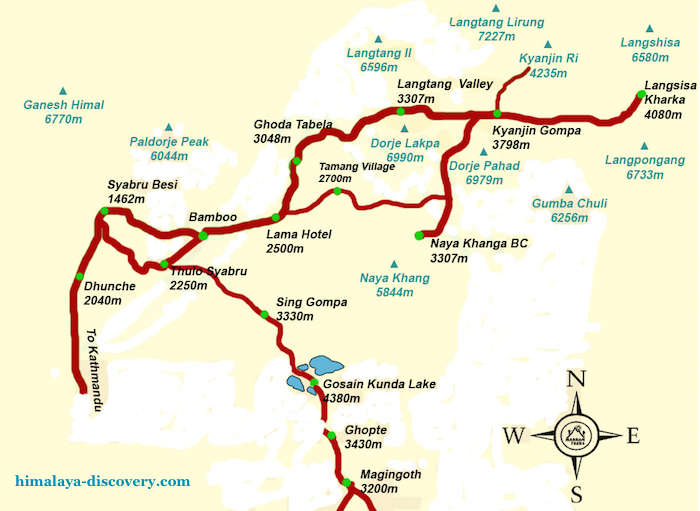
You can send your enquiry via the form below.
- Best Price Guaranteed
- Sherpa Local Guide
- No Booking Fees & No hidden Fees
- Local Operators
- Total Duration 7 Days
- Difficulty Easy to Moderate
- Group Size Min. 2 to Max. 16 Persons
- Best Season February to May and September to November
- Max Altitude 3,798m.
- Average Walking per day 4 to 5 hours.
- Starting and Ending Point of Trek Syabrubesi/Syabrubesi
- Trek Region Langtang
Recommended for you
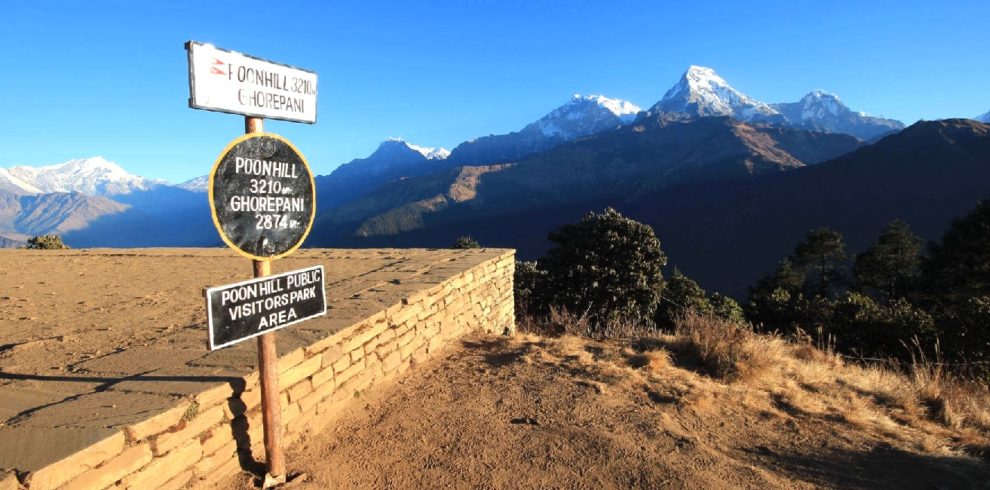
Poon Hill Trek
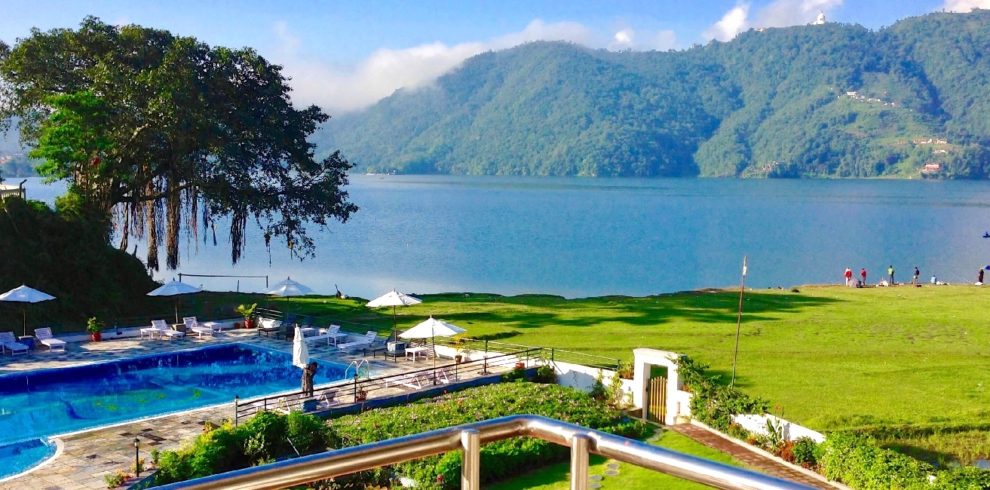
Annapurna Luxury Lodge Trek
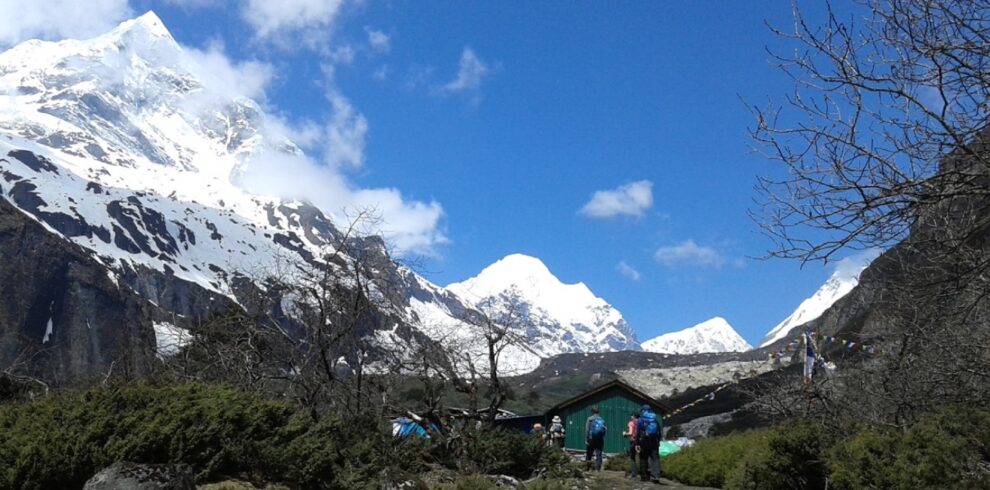
Makalu Base Camp Trek
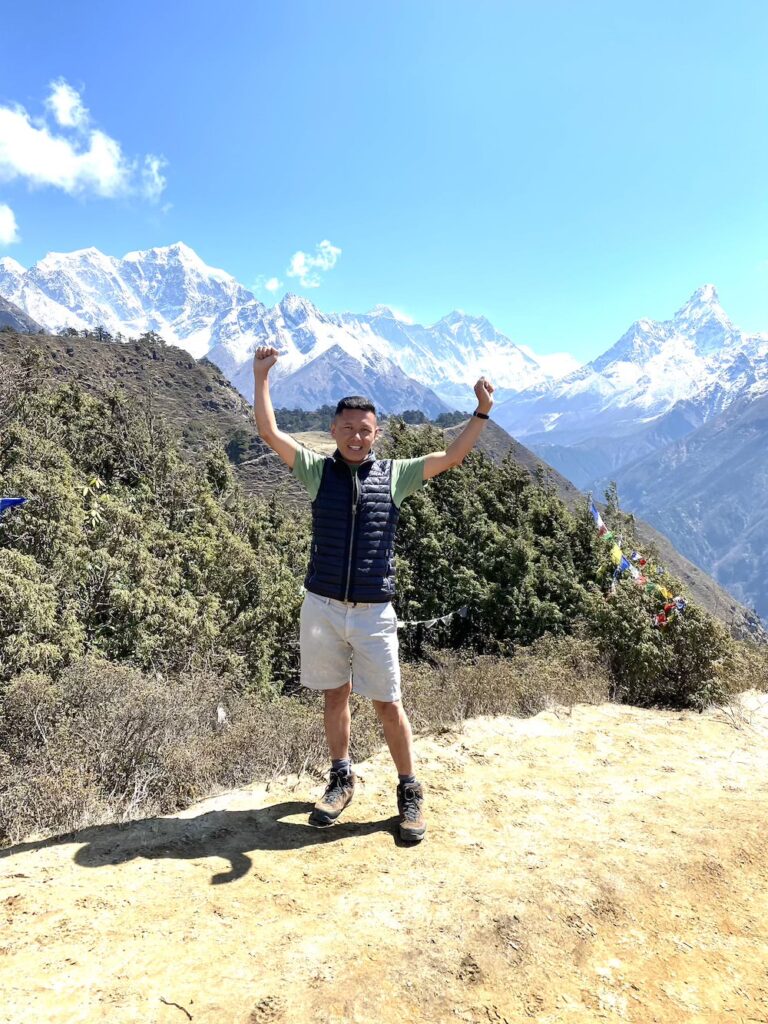
“ I was born and raised in Nepal, nearby Everest region. I am proud to be a native Sherpa, and I have been a Mountain guide over a decade now. Following my passion, I decided to start helping travelers with their travel plans! I think life is a journey, a trip where you collect experiences when you share with other people and with nature. “

Trip Designer

Privacy Overview

- You are here:
- Langtang Guide
5 Days Langtang Trek Itinerary
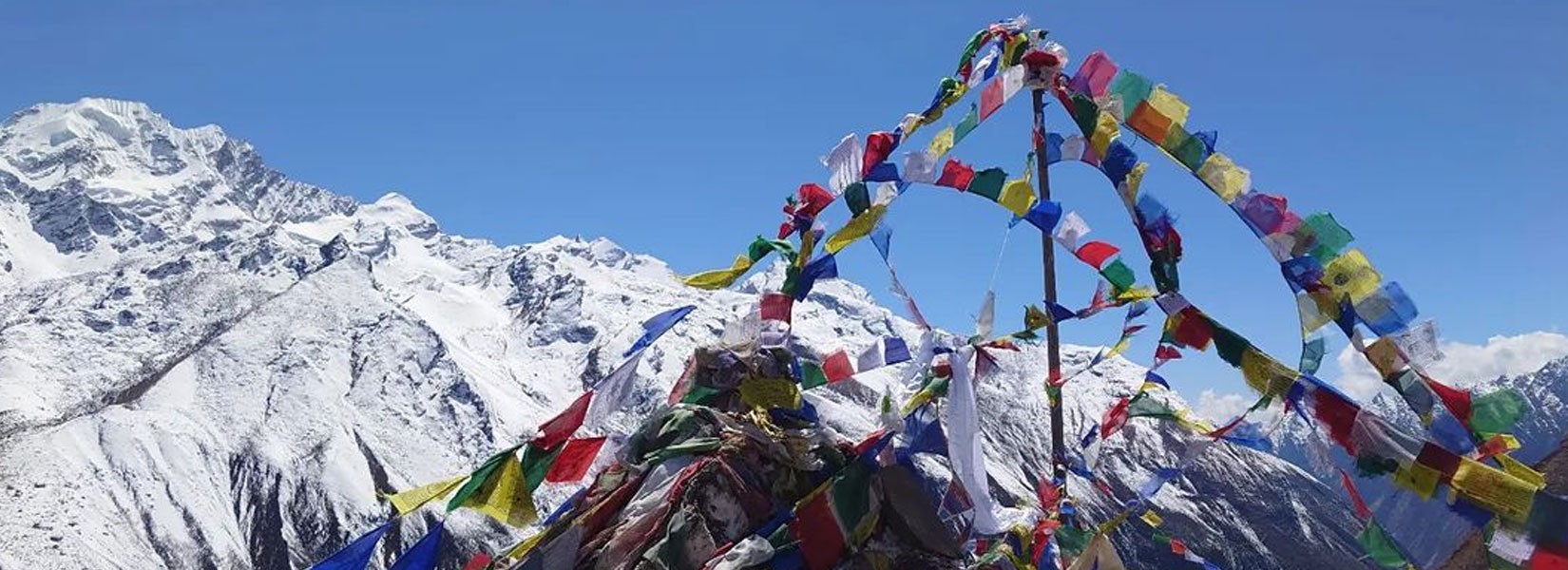
- Oct 9, 2023
- Marvel Adventure
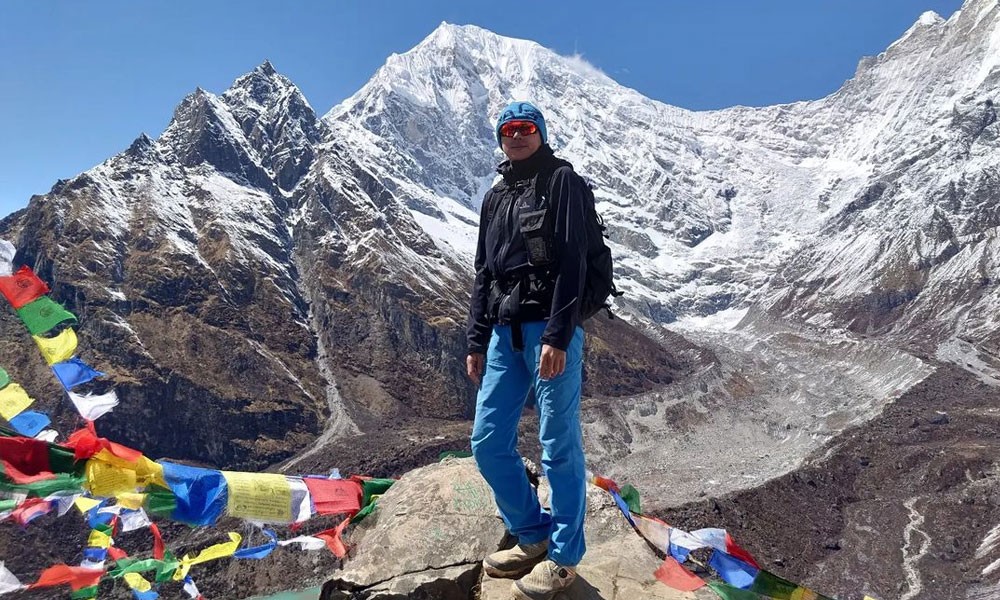
5 Days Langtang Trek itinerary follows a short and adventurous expedition to the northern part of the Himalayas. Langtang Valley which is in close proximity to Kathmandu , just at a distance of 51 km , offers some of the most rewarding exploration opportunities to the Himalayan trek enthusiasts.
If you are here for a limited time and want to increase your prospects on the Himalayan adventure with the time you have, the exploration of this beautiful valley which is also known as the ‘ valley of glaciers ’ is something you don’t want to miss during your stay.
Besides the mainstream trekking routes like Annapurna Circuit Trek and Everest Base Camp, the Langtang Trek is the ‘ third-most ’ popular trekking route in Nepal. This 5 Days Langtang Trek itinerary optimizes the short-trek expedition very efficiently without missing out on any major highlight of the overall expedition.
Table of Contents
Highlights of trek.
- Exploration of the third-most-popular trekking route in the country
- A short and sweet expedition that optimizes the limited time you have on your hand
- 300 years old Buddhist monastery, Kyanjing Gompa (3.,830 meters)
- The vantage and high elevation point of this expedition, Kyanjin Ri (4,300 meters)
- Incredible views of the Himalayan massifs like Langtang Lirung, Naya Kangri, Ganesh Himal, Manaslu, Annapurna, Yala Peak and several other adjacent mountains
- Ancient yak cheese factory
- Diverse endangered species of flora and fauna of the Langtang National Park, the first Himalayan national park in the country
- Cultural, traditional, and lifestyle prospects of the high Himalayan Sherpa and Tamang settlements
General 5 Days Langtang Trek Itinerary
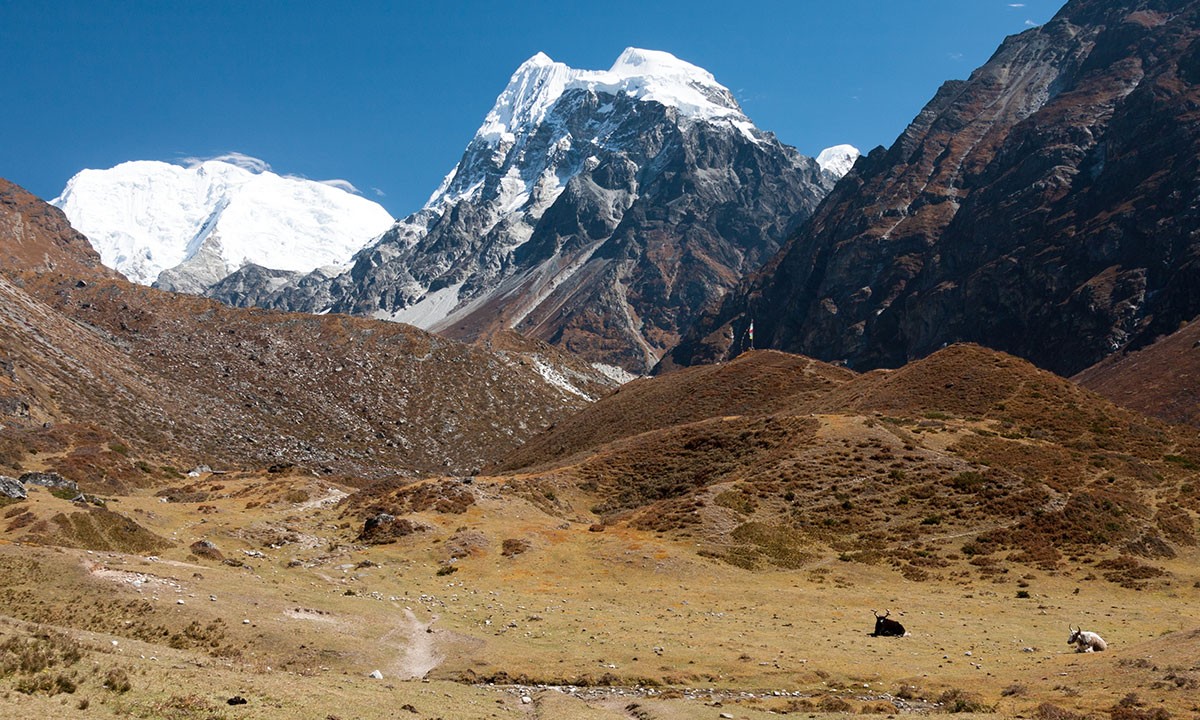
In your 5 Days Langtang Trek itinerary you can expect the following trekking activities, although the itinerary plans on the longer trekking packages vary depending on the highlight and exploration, this is the most basic outline for the 5 Days Langtang Trek.
Day 1: Drive from Kathmandu to Syarubesi and trek to Rimche
Following the 5 Days Langtang Trek itinerary, on the first day of this expedition, you will kickstart your adventure after a scenic drive from Kathmandu to Syarubesi. You will cover an approximate distance of 122 km on this day’s drive, equivalent to 7- 8 hours of driving.
During the second part of this day’s adventure, you will set out on a trekking exploration from Syarubesi to Rimche traversing across the Bhote Koshi River and Old Syabrubesi.
Day 2: Trekking from Rimche to Langtang Village
On the second day of your 5 Days Langtang Trek itinerary, you will trek across the Langtang Valley Khola heading toward the charming settlement of Langtang. Passing Lama Hotel along the trail, you will trek across the steep segments of Rimche Dangda moving toward Ghora Tabela.
It is a slight downhill trek from this point as you proceed toward the Old Langtang Village and finally arrive at the New Langtang Village.
Day 3: Trek from Langtang Village to Kyanjin Gompa
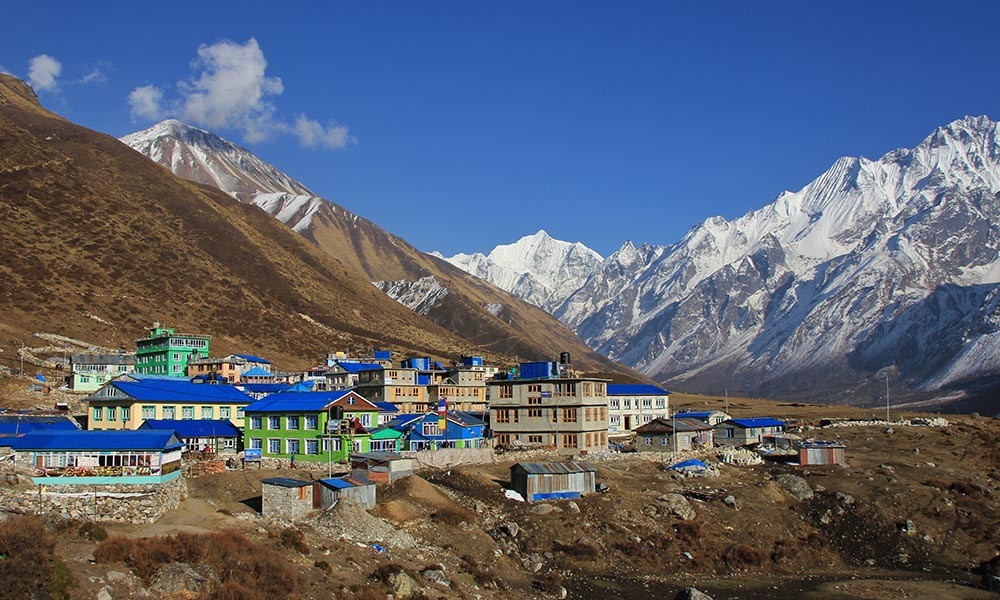
Moving toward the high-elevation points of your Himalayan exploration, in your 5 Days Langtang Trek itinerary, this day’s trekking trail will ascend toward Kyanjin Gompa. It is a scenic day’s adventure passing thick lush forest and enjoying clear stunning views of the Himalayas.
After crossing a suspension bridge during the last part of this day’s trek, you will finally arrive at Kyanjin Gompa, the region that is popular for the ancient Buddhist monasteries as well as the yak cheese factory.
Day 4: Early morning hike to Kyanjin Ri and back to Kyanjin Gompa then trekking down to Rimche
On Day 4 of your 5 Days Langtang Trek itinerary, you will hike to the highest elevation point of this entire adventure, Kyanjin Ri at an elevation of 4,300 meters (14,107 feet). After enjoying the views of the surrounding region and the Himalayas from this short hike, which will take approximately 2- 3 hours , you will trek down to Kyanjin Gompa and retrace your steps back all the way to Rimche.
Day 5: Rimche to Syabrubesi trek and drive back to Kathmandu
On the final day of your 5 Days Langtang Trek itinerary plans, you will conclude your Himalayan expedition after a short trek from Rimche to Syabrubesi. From here, you will drive back to Kathmandu in a convenient and comfortable vehicle.
Best Season for the Trek
.jpg)
Considering the short-natured adventure plans in 5 Days Langtang Trek itinerary, the most suitable months for this trek are spring (March, April, and May) and autumn (September, October, and November) .
The weather and climatic conditions are most stable during this peak season, so you don’t have to worry about overstaying your stay with the limited time at your hand. The temperature of the Langtang region during spring averages around 10°C to 20°C , and can drop to 5°C at nighttime.
Whereas, during the autumn season, the moderate day temperature usually hovers around 10°C to 15°C . So, you can expect the most ideal outdoor trekking environments, furthermore, the chilly breezes during the mornings and nights make the adventure even more exhilarating.
You can expect the temperature above 4,000 meters to be in minus degrees during the nighttime in both seasons, as the altitude is close to the alpine climate in the Himalayas. Especially during the late autumn, you can expect light snowfall at the higher altitudes as the winter closes in. So, make sure to pack appropriately for a more comfortable experience.
Is 5 Days Langtang Trek Itinerary Difficult?
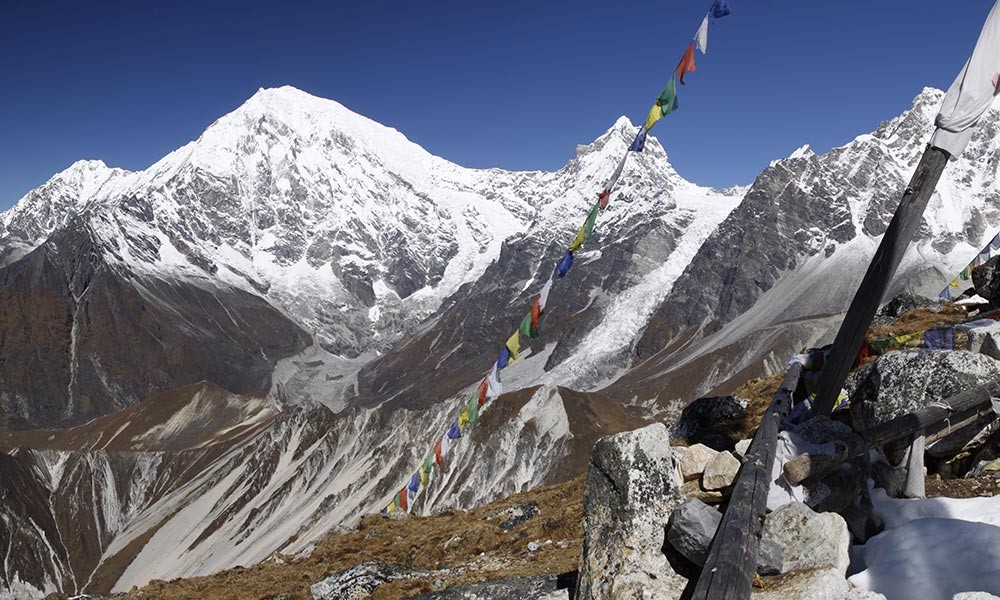
As 5 Days Langtang Trek itinerary is a short Himalayan adventure, those of you who are familiar with the high-altitude adventure might be concerned about whether it will be an easy expedition or not. As acclimatization and resting is a crucial factor for the success of any Himalayan adventure, this short 5 Days Langtang Trek itinerary may feel a little rushed.
However, unlike other long Himalayan trekking expeditions in the country, the general outline of the Langtang Trek is between 5- 7 days . The overall trekking expedition has been graded as a ‘moderately difficult ’ adventure, so even if you don’t have any prior trekking experience, you will be easy complete this Himalayan exploration with adequate preparation.
In the case of the quick-paced time frame, in general, the Himalayan trekking adventures in Nepal are designed for slow-paced walking. This way, not only will you be able to truly immerse in the natural allurements of the region but also have enough time to acclimatize to the rising altitude even when you trek.
With a basic level of fitness and good health conditions, anyone can easily complete this trekking adventure. As the success rate of 5 Days Langtang Trek itinerary is at 97% to 99% , it is not as difficult as other high-altitude Himalayan trekking adventures in the country.
Still here are a few major difficulty factors of this 5 Days Langtang Trek itinerary plan that you should be on the lookout for:
Altitude Sickness
Even though you don’t have to spend a significant amount of time at altitudes over 4,000- 5,000 meters on 5 Days Langtang Trek itinerary package, the altitude gain is still significantly high.
Starting your adventure from Syarubesi which is at 2,380 meters , you will move along the trekking route overcoming other significant elevation points like Rimche (2,450 meters), Langtang Village (3,430 meters), Kyanjin Gompa (3.,830 meters) and the highest elevation point Kyanjin Ri at 4,300 meters.
There is a risk of altitude sickness for an average human body over the altitude o f 2,500 meters , so you will still need to stay on the lookout for the symptoms of altitude sickness because its threat is real in this Himalayan expedition.
The high-altitude trekking adventures in Nepal take place in remote and secluded regions of the country, so you cannot expect leveled or a paved walking route. You will have to walk on rugged trails, mostly on loose and rocky segments, in addition to that, the steep segments make the everyday trekking adventures even more challenging.
You will roughly cover an approximate distance of 60- 80 km in this trek, which means that in your 5 Days Langtang Trek itinerary, you will trek for about 6- 7 hours on average during each day of this Himalayan exploration.
Certainly, it is not an easy challenge to overcome as even simple walking at a higher altitude is really tiresome and you will be walking carrying your luggage on top of it.
Completely Secluded Region
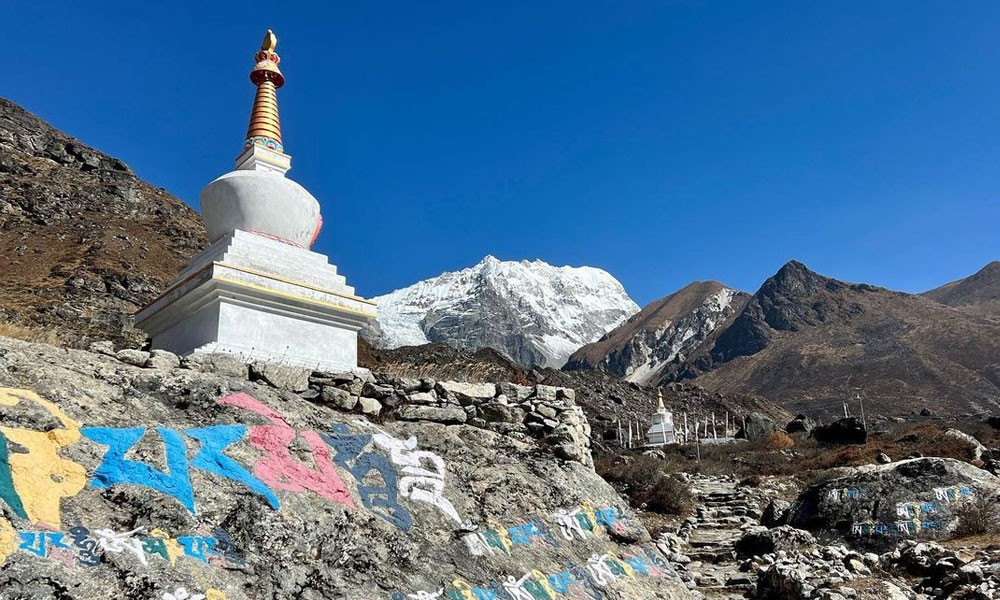
You can expect a very basic level of services during your trekking adventure, unlike other mainstream trekking routes, the luxurious options are pretty much limited for this 5 Days Langtang Trek itinerary.
Due to the lack of transportation facilities, purchasing even basic products like water can be quite expensive at higher altitudes. Similarly, even the basic services like electricity, internet, and medical facilities along the trail are in a very limited number.
Unpredictable Weather
Although the peak seasons like autumn and spring are considered to have the most suitable and stable climatic conditions compared to the other seasons. The climatic conditions of the high-altitude regions can be unpredictable at times.
If you are planning your adventure for the seasons like monsoon (June, July, and August) and winter (December, January, and February) , the weather challenges are significantly high. The trails are muddy and slippery due to continuous and heavy downpours in the monsoon, the landslides and flooding also elevate the overall risk factors in this season.
In comparison, the winter season isn't that high on the danger scale, however, the harsh climatic conditions certainly make the 5 Days Langtang Trek itinerary a difficult venture. So, in general, you have to be prepared for whatever climatic conditions the Himalayan region throws your way.
Training and Preparation
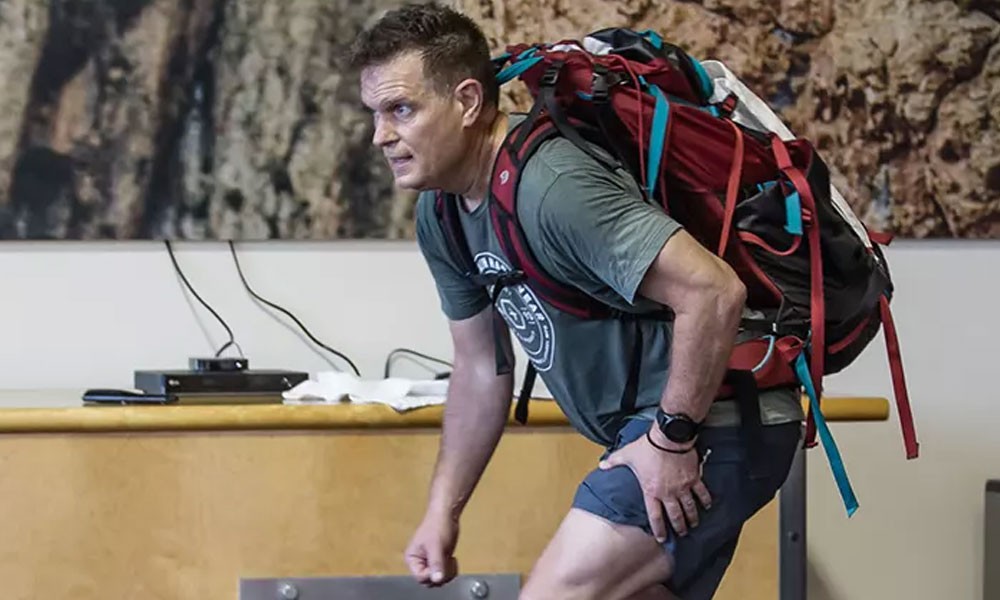
For the most exhilarating and enjoyable experience, preparing for the 5 Days Langtang Trek itinerary is a must. With an adequate amount of preparation, you will be able to significantly reduce some of the major difficulty factors of the adventure for an overall delightful and memorable experience.
The minimum recommended training period for this adventure is about 4- 6 weeks , however, you should do your own physical assessment for an effective training program. In case you are in sports or exercise regularly, you may not have to put in much effort to overcome the difficulty factors of this Himalayan adventure.
But, if you don’t work out that much, then you should properly assess your abilities and decide on the right training programs starting slow with an extensive time frame. This way your body will get used to exercising habits.
Here are some exercises that you can include in your preparation for the 5 Days Langtang Trek itinerary:
Strength Exercises: These exercises overall buff your strength and endurance level, so you won’t feel completely drained during each day’s demanding expedition . Push-ups, planks, squats, pull-ups, deadlifts, weight lifts, bench presses, shoulder presses, arms curls, legs curl, dip, etc are some exercises that you can include in this training program.
Cardiovascular Exercises: Cardiovascular exercises are known to improve your body’s capability to absorb oxygen, it is among the most crucial training part that also helps you to acclimatize properly to the rising altitude. Jogging, cycling, swimming, rope jumping, aerobics, rowing, power walking , etc are some examples of cardiovascular exercises.
Also, one of the most efficient ways to prepare for the 5 Days Langtang Trek itinerary is to do some practice hiking on the steep natural landscapes. This way you will able to understand the overall hiking environment during your actual adventure.
Moreover, make sure to carry your backpack with significant weight as you will be carrying your luggage during the trek (2: 1 porter ratio in most trekking packages). Plus, hiking in your trekking boots will help you break into the boots and understand their comfort level which is another crucial factor for a comfortable experience.
Food and Accommodation for 5 Days Langtang Trek Itinerary
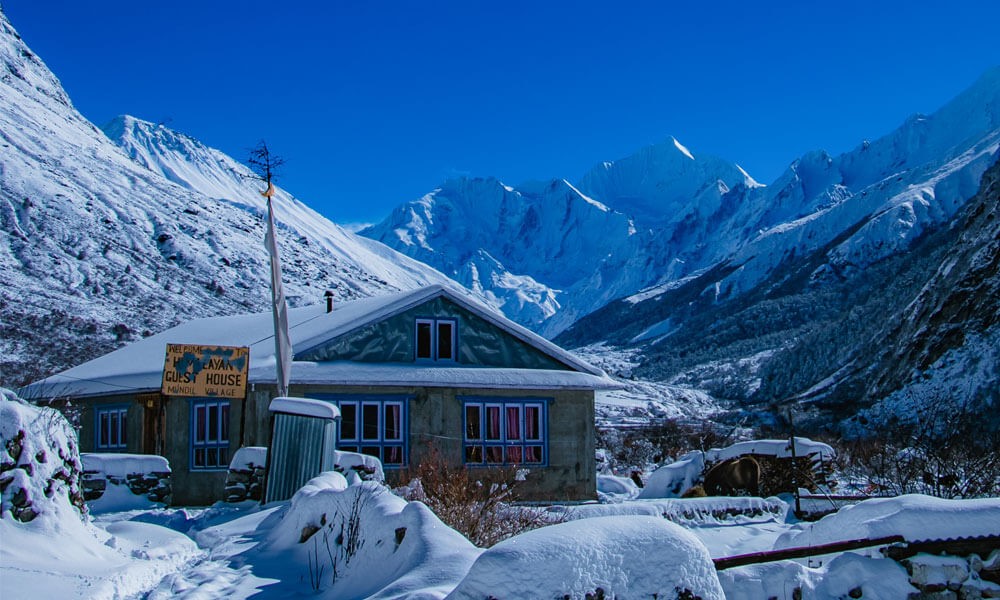
As the third-most-popular trekking route in the country, you can expect a moderate level of food and accommodation facilities along the teahouses in your trekking during this Himalayan adventure.
You will be able to enjoy various native delightful delicacies as well as some of the most basic continental dishes during your Langtang Trek. Here are some basic menu options that you can expect during your trek in the region.
For Breakfast: Eggs, bread, jam, butter, fruits, oats, pancakes, porridge, chips, sandwich, paratha, chapati, pudding, Pakoda, muesli, etc.
For Lunch and Dinner: Dal Bhat Tarkari (steamed rice, lentil soup, vegetables with side dishes), pizza, noodles, pasta, macaroni, steak, dumplings, lasagna, soup, Thukpa, Shyphale, etc.
For the accommodation as well, you will receive a cozy bedroom in the teahouses run by the local inhabitants. You will receive a comfortable mattress, clean pillow, and blanket, and the rooms are well-furnished, however, you will have to use a shared room with 2 or 3 adjacent beds.
Similar to the shared bedroom, you will also have to make do with the shared bathroom facilities, as there isn’t a luxurious mode of trekking available in the region yet. There aren’t any provisions for the private rooms or bathrooms at the teahouses in the Langtang Trek as of now.
You may also like:
- Langtang Trek 7 Days
- Langtang Valley Trek
- Langtang Gosaikunda Trek
- Nepal Travel Guide
Send an Enquiry - 5 Days Langtang Trek Itinerary
Recent post.
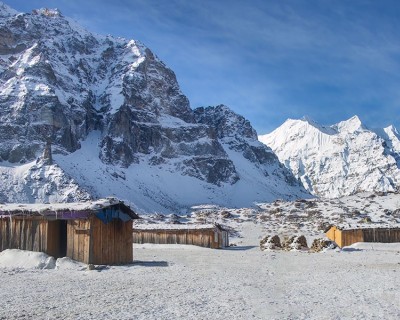
Less Crowded Treks In Nepal
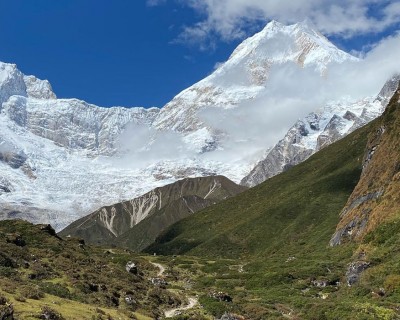
Tsum Valley, Cultural Richness & Buddhist Influence
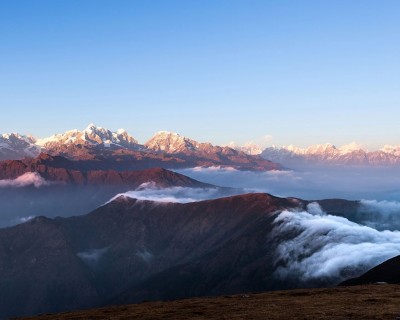
Perfect Time For Pikey Peak Trek
- Annapurana Guide - 16
- Climbing - 1
- Dolpo Trek Guide
- Everest Guide - 52
- Kanchenjunga Guide - 8
- Langtang Guide - 5
- Makalu Trek Guide - 2
- Manaslu Trek Guide - 19
- Mustang Guide - 4
- Nepal Trekking Tips - 9
- Places to see in Nepal - 4
- Things to do in Nepal - 14
- Trekking in Nepal - 12
- Uncategorized - 5
Marvel Adventure Pvt. Ltd.
Share this:
Marvel adventure affiliations & certificates, registered with: company registration office, government of nepal, licensed by: nepal tourism board & department of tourism, proud member of trekking agency's association of nepal, general member of nepal mountaineering association.
- Weekend +91 87 6262 3333
- Himalayan +91 9886 444 809
- International +91 84968 85968
- [email protected]
- One Day Treks
- Two Day Treks
- Himalayan Treks
- International Treks
- Private Treks
- Group Adventures
![Langtang Valley Trek [Premium] - Tour Langtang Valley Trek [Premium] - Tour](https://vl-prod-static.b-cdn.net/system/images/000/720/867/d39a5cd02c3a71d360b18a6ad03c24c2/x600gt/kyanjin_gompa.jpg?1704891685)
- Langtang Valley Trek [Premium]
- Secure & Easy Booking
- Best Price Guaranteed
- 1000+ Happy Customers
Langtang Valley Trek: Explore Nepal's Himalayan Beauty
Nestled in the heart of the Himalayas, the Langtang Valley Trek offers an unparalleled fusion of natural grandeur and cultural heritage. This moderate trek strikes a perfect balance for adventure enthusiasts. Traverse diverse landscapes, from rhododendron-filled forests to alpine meadows, each step revealing a tapestry of experiences. Encounter Tamang hospitality in Langtang and Kyanjin Gompa, immersing in centuries-old culture. The trek unfolds panoramic views of Langtang Lirung, Langshisha Ri, and Dorje Lakpa. Tserko Ri's ascent, providing a 360-degree panorama, is a highlight. Journey through less-trodden trails for an intimate connection with nature and an enriching Himalayan adventure. Embark on the Langtang Valley Trek for an extraordinary experience, each step unveiling Nepal's beauty and cultural heritage.
Trek Difficulty Level: The Langtang Valley Trek, graded as moderate, caters to varying experience levels. Offering a fulfilling adventure without reaching extreme altitudes, it ensures a memorable and manageable trek for a diverse range of trekkers.
Terrain: Traverse diverse terrains, from lush rhododendron and bamboo forests to scenic alpine meadows. The well-defined trails, featuring a mix of ascents and descents, provide a balanced challenge, creating an engaging and enjoyable trekking experience.
Flora and Fauna: Langtang Valley's biodiversity is a highlight. Trek through dense forests adorned with vibrant rhododendron blooms, encountering diverse wildlife, including the elusive red pandas and Himalayan Thars. Bird enthusiasts will revel in the array of species, presenting a unique opportunity to witness Nepal's natural beauty up close.
Prominent Mountain Peaks: Marvel at the awe-inspiring peaks surrounding Langtang Valley. From Langtang Lirung (7,227m) to Langshisha Ri (6,810m), Dorje Lakpa (6,966m), and Yala Peak (5,520m), the trek offers a stunning backdrop of Himalayan majesty, captivating trekkers throughout the journey.
Best Season: Optimal trekking seasons are spring (March to May) and autumn (September to November). Stable weather, clear skies, and comfortable temperatures during these periods ensure a delightful and safe Langtang Valley trekking experience.
Embark on the Langtang Valley Trek, a captivating journey blending natural wonders and cultural treasures in the heart of the Himalayas. Unveil the extraordinary with each step in this extraordinary adventure.
- Cultural Immersion: Immerse in Tamang hospitality, exploring Langtang and Kyanjin Gompa for insights into their unique culture and traditional villages.
- Panoramic Views: Capture breathtaking Langtang mountain panoramas, reaching a photographer's paradise with the 360-degree snow-capped peaks from Tserko Ri.
- Diverse Landscapes: Trek through Nepal's diverse terrains - from dense forests to high-altitude splendour, ensuring a dynamic and enriching Langtang Valley adventure.
- Wildlife Encounters: Spot red pandas, Himalayan Thars, and diverse bird species in Langtang Valley, creating a unique and rewarding wildlife experience.
- Less Crowded Trails: Enjoy tranquillity on Langtang Valley's less-trodden trails, fostering a deeper connection with nature and local culture.
You need more information?
Langtang valley trek itinerary in brief:.
- Day 01: Arrival in Kathmandu and Trek Preparation (1,400 M)
- Day 02: Drive to Syabrubesi (1,550 M)
Day 03: Trek to Lama Hotel (2,380 M)
- Day 04: Trek to the Langtang Village (3,430 M)
Day 05: Trek to Kyanjin Gompa (3,870 M)
Day 06: Hike Up To Tserko Ri (5,000 M) And Trek Back To Lama Hotel
Day 07: Trek from Lama Hotel to Syabrubesi (1,550 M)
- Day 08: Drive back to Kathmandu
Day 09: Final Departure
Langtang Valley Trek Detailed Itinerary:
Day 01: Arrival in Kathmandu and Trek Preparation (1400 M)
- Altitude: 1400 meters
Arrive in Kathmandu and take the day for acclimatization and trek preparation. Explore the vibrant streets of Thamel, the tourist hub in Kathmandu.
Day 02: Drive to Syabrubesi (1550 M)
- Altitude: 1550 meters
- Travel Distance: Approximately 117 km
- Travel Duration: 7-8 hours
Embark on a scenic drive to Syabrubesi, the gateway to the Langtang Valley. Enjoy picturesque landscapes during the journey.
- Altitude: 2380 meters
- Trek Distance: About 14 km
- Trek Duration: 6-7 hours
Begin the trek from Syabrubesi, passing through lush forests and charming villages. Reach Lama Hotel, nestled in the heart of the Langtang Valley.
Day 04: Trek to Langtang Village (3,430 M)
- Altitude: 3430 meters
- Trek Distance: Approximately 12 km
- Trek Duration: 5-6 hours
Continue the ascent through the Langtang Valley, encountering the unique blend of Tibetan culture. Reach Langtang Village surrounded by stunning mountain views.
- Altitude: 3870 meters
- Trek Distance: About 8 km
- Trek Duration: 3-4 hours
Embark on a shorter trek to Kyanjin Gompa, a spiritual and cultural hub. Enjoy the breathtaking scenery of the surrounding peaks.
- Altitude: 5000 meters (Tserko Ri)
- Trek Distance: Approximately 17 km (round trip)
- Trek Duration: 7-8 hours
Challenge yourself with a hike to Tserko Ri for panoramic mountain views. Descend to Lama Hotel, capturing the Langtang Valley from a different perspective.
- Trek Distance: About 17 km
Descend back to Syabrubesi, reminiscing about the stunning landscapes and cultural encounters of the Langtang Valley.
Day 08: Drive back to Kathmandu
Conclude the trek with a scenic drive back to Kathmandu. Reflect on the Langtang Valley adventure.
Depart from Kathmandu, concluding your Langtang Valley Trek. Cherish the memories of the picturesque landscapes and cultural experiences.
Trek Insurance:
Trekking in the Himalayas comes with its own set of risks. While adventure is fun and can be extremely thrilling, nature can be unpredictable, and to help secure you during your trek, it is of utmost importance that you are covered with insurance.
We've gone a step ahead and made sure that you don't have to worry about scouting for the best insurance option out there. When you trek with us, your insurance comes as a part of your inclusions.
Risk and Liability:
We will endeavor to make your program smooth and as pleasant as possible. However, the entire course of trekking depends on the ranges of the mighty mountains, physical health, and environmental conditions. Therefore, TrekNomads shall not be responsible for any changes in the itineraries due to unavoidable circumstances and natural disasters such as landslide, road blockage, flood, snowing, cancellation of flight and delay, any type of sickness including altitude sickness.
What is included in the tour
- Arrival and departure transfer to the international and domestic airport in a private vehicle
- Kathmandu/ Syabrubesi / Kathmandu transport in a private vehicle
- 02 Nights accommodation at Kathmandu at a 3-star category hotel with breakfast on twin sharing basis
- 6 Nights accommodation in TeaHouses during the trek on twin sharing basis
- Three meals (Breakfast, Lunch, Dinner) a day during the trekking period (open menu to choose any one item per meal from the menu)
- Three times tea or coffee in a day during the trekking period
- 2 litres of mineral water or hot water
- 5 days of trekking with an experienced, English-speaking and government-licensed trek guide and assistant trek guide
- 1 porter for every 2 persons’ luggage (max 10-12 kgs per head allowed)
- Insurance, meals, transportation daily salary of guide & porter
- Sagarmatha National Park Fees and TIMS (Trekkers’ Information Management System)
- Domestic airport taxes at Kathmandu and Lukla
- 3 litres oxygen cylinder with mask regulator for emergency (additional charge if used)
- Kathmandu sightseeing with a van and a guide full day for Pashupatinath – Bhaudhanath – Monkey temple – Patan Darbar Square
- All government, local taxes and service charges
- TrekNomads Fee, Trek Captain support and expertise
- 10% discount coupon on Fast&Up products
- 25% discount coupon on BMore products
- Personalized Dri-Fit T-shirt
- TrekNomads goodies
What is NOT included in the tour
- International airfare
- Nepal Visa fee
- Lunch and dinner at Kathmandu
- Any personal expense
- Personal Adventure Insurance
- Excess baggage charge(s), if it exceeds 15kg
- Insurance Fee
- Any type of soft drinks
- Boiled hot water, shower, etc, during the trek
- Extra meals apart from inclusions
- Tips to porters and guides (calculated per person at 10$ per day per person)
- Any other activity such as Bungee Jumping/River Rafting
- Helicopter fares
- Transportation to and fro Ramechhap in case of early return from the trek
- Extra days at the hotel in Kathmandu apart from the schedule
- Any other expenses incurred apart from inclusions
- All personal, medical, evacuation and emergency expenses like extra day stay out of itinerary, helicopter services and vehicle charges due to delays, landslides, evacuation
- Expenses incurred for guide or porter during extra days stay, transport, flight, helicopter service, etc (divided amongst the group which utilises the services of guides/porters on extra days)
Altitude Map:
- Kathmandu: 1,400 m (4,593 ft)
- Syabrubesi: 1,550m (5,085 ft)
- Lama Hotel: 2,380 m (7,808 ft)
- Langtang Village: 3,430 m (11,253 ft)
- Kyanjin Gompa: 3,870 m (12,697ft)
- Tserko Ri: 5,000 m (16,404 ft)
Other Details:
- Trek Gradient: Moderate
- Trek Distance: 60+ Km
- Assembling Point: Kathmandu
- Trek Duration: 40+ hours
- Average Temperature: 20°C to -10°C
- Best Months to trek: March,April, May, September,October, November
Frequently Asked Questions - Langtang Valley Trek:
Q1: What is the best season for Langtang Valley Trek? A: Spring (March to May) and autumn (September to November) are ideal. Stable weather, clear skies, and comfortable temperatures enhance the trekking experience.
Q2: What food do we get on the trail? A: Local teahouses offer a variety of fresh and hygienic meals. Enjoy a mix of local and international cuisines, ensuring a wholesome trekking experience.
Q3: Do we get bottled water in the mountains? A: Yes, bottled water is available at most tea houses and restaurants along the trek. However, prices may increase with altitude. Alternatively, there are abundant water sources where you can refill your bottles or use purification tablets. 2L of mineral bottled water is a part of our package on trekking days.
Q4: Is travel insurance necessary for Langtang Valley Trek? A: Yes, travel insurance is mandatory. Ensure coverage includes medical and mountain evacuation up to 5500m. TrekNomads recommends purchasing insurance in your home country. We will assist you with the insurance booking process after you register for the trek.
Q5: How long do we have to walk every day? A: The average daily trekking duration is 6-7 hours, depending on fitness levels and terrain. High altitudes may slow the pace, especially above 4,000m.
Q6: Are hot showers available in the mountains? A: Hot showers are available but may incur an additional cost. Cold showers are generally free. However, it is advisable to limit showering at altitudes above 4,000m to prevent potential health issues.
Q7: How fit do we need to be for Langtang Valley Trek? A: Langtang Valley Trek is of moderate difficulty. While shorter treks are easier, longer treks like this one require a better standard of fitness. Regular exercise preparation is recommended.
Q8: What is tea house trekking in Langtang Region? A: Tea house trekking involves staying overnight and having meals at local lodges. While basic, these lodges offer comfortable beds. Bathrooms and shower facilities are usually shared with other guests.
Q9: What types of food are served during the trek? A: Tea houses serve a mix of local and international cuisine. You can enjoy wholesome vegetarian meals with a focus on fresh and hygienic local foods. Expect a blend of Nepali, continental, and basic western dishes.
Q10: Is there telephone/internet facilities during Langtang Valley Trek? A: It is advisable to have a local number for internet connections and phone calls. Some teahouses may offer prepaid Wi-Fi, but it can be expensive. NCELL local cards provide good coverage in the Langtang region.
Q11: What do I need to carry on the trek? A: Pack a small day-pack with essentials like a fleece jacket, waterproofs, hat, sun cream, water bottle, first aid kit, and camera. Porters carry personal belongings, and unnecessary items can be stored at the hotel.
Q12: What do we do in case of altitude sickness? A: Prevent altitude sickness by maintaining a positive attitude and controlling your pace, also, keep yourself well hydrated and eat a balanced nutritious meal. If symptoms occur, descend to lower elevations or use first aid and medications. Evacuation may be necessary in severe cases.
Q13: What happens in case of an emergency during Langtang Valley Trek? A: In case of an emergency, we will assist in all possible ways to handle the situation and initiate evacuation in case it is required. Trekking guides are trained in first aid. If needed, additional expenses can be recovered from your insurance company.
Q14: What currency should I bring for Langtang Valley Trek? A: Major currencies are generally accepted, but it's recommended to have Nepali Rupees for expenses. ATMs are available in Kathmandu, and TrekNomads guides/porters are insured.
Q15: How early should I book my Langtang Valley Trek? A: Booking a few months in advance is recommended for better organization of transport, accommodation, and trip arrangements. Early booking ensures a smoother and well-prepared trek.
Q16: What are the payment terms for Langtang Valley Trek? A: A 20% advance deposit is required to confirm the trip, with the remaining balance payable 30 days in advance. Payment can be made through the provided payment options (Paypal, Razorpay with credit/debit cards, internet banking, UPI, wallets, EMI options, etc).
Q17: How much extra cash should I bring on the trek? A: Full-board Langtang treks cover expenses for hot showers and tipping. Personal expenses may include bar bills and souvenirs. ATMs in Kathmandu allow the withdrawal of Nepali Rupees.
Q18: Are TrekNomads guides/porters insured for Langtang Valley Trek? A: Yes, all field staff, including guides, porters, cooks, and Sherpas, are insured. This ensures their well-being during the trekking journey.
Q19: How is Langtang Valley Trek different from other treks in Nepal? A: Langtang Valley Trek offers a unique blend of cultural immersion, diverse landscapes, and panoramic mountain views with fewer crowds, providing a more intimate Himalayan experience.
Q20: Are there any permits required for Langtang Valley Trek? A: Yes, trekkers need two permits: Langtang National Park Entry Permit and TIMS (Trekkers' Information Management System) card. We assist you in obtaining these permits.
Q21: What safety measures are in place during Langtang Valley Trek? A: TrekNomads prioritizes safety with experienced guides trained in first aid. Emergency evacuation plans, communication devices, and a well-structured itinerary enhance trekker safety.
Q22: Are there charging facilities for electronic devices during the trek? A: Charging facilities are available in teahouses along the trek, usually at an additional cost. Carrying a portable power bank is advisable for uninterrupted device charging.
Q23: How is altitude sickness managed during Langtang Valley Trek? A: TrekNomads guides monitor trekkers for altitude sickness symptoms. Adequate acclimatization days, controlled ascent rates, and prompt descent in case of severe symptoms are part of the safety measures.
Q24: Can I customize the Langtang Valley Trek itinerary according to my preferences? A: Yes, TrekNomads offers customizable itineraries based on trekkers' preferences and time constraints. Contact us to discuss your specific requirements and create a tailor-made trek.
Q25: Are vegetarian and vegan food options available during Langtang Valley Trek? A: Yes, teahouses along the trek provide vegetarian and vegan meal options. Trekkers can enjoy a variety of plant-based dishes to accommodate dietary preferences.
Q26: What is the average group size for Langtang Valley Trek with TrekNomads? A: TrekNomads aims for small group sizes to ensure a more personalized experience. The average group size ranges from 4 to 12 trekkers, fostering a close-knit trekking environment.
Q27: How challenging is the ascent of Tserko Ri, and is it suitable for all trekkers? A: The ascent of Tserko Ri is moderate-difficult and suitable for trekkers with a good fitness level. TrekNomads guides provide support and guidance to ensure a safe and enjoyable climb.
Q28: Can I extend my stay in Kathmandu before or after the Langtang Valley Trek? A: Yes, TrekNomads can assist in arranging accommodation and additional activities in Kathmandu before or after the trek. Contact our team for personalized extension options.
Q29: Are there opportunities for cultural interactions with local communities during the trek? A: Absolutely, Langtang Valley Trek provides ample opportunities for cultural interactions with the Tamang people. Trekkers can engage in local traditions, festivals, and learn about the Tamang way of life.
Q30: How do I deal with unexpected weather conditions during Langtang Valley Trek? A: TrekNomads plans treks with flexible itineraries to accommodate unexpected weather conditions. Experienced guides monitor weather forecasts, ensuring safety and adaptability during the trek.
Loading the map...
- RAZORPAY EMI PAYMENT METHOD
- CONNECT WITH US
- TREKNICAL DETAILS

Recognitions

OTHER POPULAR TOURS
![Valley of Flowers Trek and Hemkund Sahib [Premium] - Tour Valley of Flowers Trek and Hemkund Sahib [Premium] - Tour](https://vl-prod-static.b-cdn.net/system/images/000/326/464/f004eeac1383bb5aea2b18eb9400c343/x400gt/VOF_Banner.png?1684915067)
Valley of Flowers Trek and Hemkund Sahib [Premium]
![Kashmir Great Lakes Trek [Premium] - Tour Kashmir Great Lakes Trek [Premium] - Tour](https://vl-prod-static.b-cdn.net/system/images/000/414/735/bed5a46f080cd0e89659ed19c0c6d7aa/x400gt/TrekNomads_Website_Banner__13_.png?1684931452)
Kashmir Great Lakes Trek [Premium]
![Everest Base Camp Trek [Premium] - Tour Everest Base Camp Trek [Premium] - Tour](https://vl-prod-static.b-cdn.net/system/images/000/352/493/2f06596a5543585d0f67bc5c9eabe2dd/x400gt/Everest_Base_Camp.png?1684317973)
Everest Base Camp Trek [Premium]
OTHER ACTIVITIES

- Testimonials
- Customized Private Treks
- Corporate Outings
- Cancellation Policy
Online booking system by Vacation Labs | © 2024 TrekNomads
Get Instant Response:
- Hillary Classical Trek – 17 Days
- Everest Base Camp Trek – 14 Days
- Everest Three High Passes Trek – 18 Days
- Everest Base Camp Trek Via Gokyo Lake – 15 Days
- Everest View Trek – 5 Days
- Gokyo Renjo La Pass Trek – 13 Days
- Everest Base Camp Trek Heli Return – 10 Days
- Everest Base Camp with Island Peak Climbing – 16 Days
- Everest Base Camp with Lobuche Peak Climbing – 16 Days
- Everest Panorama Trek – 7 Days
- Luxury Everest Base Camp Trek – 12 Days
- Ama Dablam Base Camp Trek – 8 Days
- Short Everest Base Camp Trek – 10 Days
- Gokyo Ri Trek – 10 Days
- Annapurna Base Camp Trek – 7 Days
- Annapurna Circuit Trek – 14 Days
- Annapurna Base Camp Trek via Poon Hill – 13 Days
- Annapurna Circuit Trek with Annapurna Base Camp – 20 Days
- Annapurna Circuit Trek with Tilicho Lake – 15 Days
- Nar Phu Valley Trek – 14 Days
- Poon Hill Trek – 7 Days
- Upper Mustang Trek – 15 Days
- Mardi Himal Trek – 5 Days
- Khopra Danda Trek – 8 Days
- Annapurna Base Camp Trek with Helicopter Return – 8 Days
- Annapurna Sanctuary Trek – 10 Days
- Short Annapurna Circuit Trek – 10 Days
- Manaslu Circuit Trek – 13 Days
- Manaslu Tsum Valley Trek – 20 Days
- Tsum Valley Trek – 16 Days
- Langtang Valley Trek – 8 Days
- Langtang Gosaikunda Trek – 13Days
- Gosaikunda Trek – 5 Days
- Tamang Heritage Trail – 7 Days
- Kanchenjunga Trek – 22 Days
- Pikey Peak Trek – 6 Days
- Mera Peak Climbing – 13 Days
- Lower Dolpo Trek – 15 Days
- Island Peak Expedition – 15 Days
- Mera Peak Climbing – 15 Days
- Legal Documents
- Terms & Condition

Langtang Valley Trek - 8 days
Starting from
Starting Price USD 690
Group Size 1+
Trip Grade Modarate
Best Season March - May, October - December
Accommodation Hotel/Tea House
Max Elevation 4984 m
Meals Full Board
Transportation Private Vehicle
Trek Route Syabrubensi-Langtang Village- Kyanjin Gompa
Trip Highlights
- Witness magnificent views of sky-touching mountains including the beautiful peaks of Dorje Lakpa, Langtang Lirung, and Langtang Ri.
- Enjoy trekking on well-established and less crowded trails in the Himalayas of Nepal for a peaceful trekking adventure.
- Walk through Langtang National Park while exploring incredible flora and fauna in nature.
- Immerse yourself in the traditional art, culture, and lifestyle of the local people in the Langtang region.
- Witness sublime views of the landscape and surrounding nature from either Tserku Ri, Langshisa Kharka, or Kyanjin Ri.
Trip Overview
The Langtang Valley Trek offers a beautiful blend of nature, culture, and adventure, making it a perfect choice for trekkers of all kinds. Hillary Step Treks presents Langtang Valley Trek 8 days package for trek enthusiasts to explore the magical Langtang Valley, a hidden gem that comes to life with vibrant sights and sounds. Nestled in the heart of Nepal, this trek is perfect for all kinds of trekkers and provides a remarkable experience for travelers with different levels of trekking expertise.
As you embark on this unforgettable journey, the valley has breathtaking views at every turn, surrounded by majestic snow-capped mountains. The towering peaks, such as Langtang Lirung , Dorje Lakpa, and Langshisa Ri, create a stunning backdrop against the clear blue sky. However, it is not just the mountain vistas that will leave you in awe during our Langtang Valley Trek 8 days trip. The pleasing landscape of Langtang Valley also features lush forests, cascading waterfalls, and meandering rivers. Moreover, the serene and pristine environment offers a peaceful respite from bustling city life, allowing you to reconnect with nature and rejuvenate your senses.
One of the other excellent features of the Langtang Valley Trek is the warm and welcoming atmosphere of Langtang National Park. As you traverse through the park, you’ll encounter a rich diversity of flora and fauna, including rhododendron forests, bamboo groves, and rare wildlife such as red pandas and Himalayan black bears.
In addition to breathtaking scenery and natural wonders, the Langtang Valley Trek 8 days trip also provides an opportunity to immerse yourself in the local culture. Along the trail, you’ll encounter traditional Tamang and Sherpa villages, where you can interact with friendly locals and learn about their way of life. Experience their warm hospitality and witness cultural traditions that have been passed down through generations. Additionally, the walking days are also well balanced in our Langtang Valley Trek 8 Days and you will find something special for each day as you explore Langtang.
Just so you are aware, the Langtang Valley trek distance covers 70 km/43 miles from Syabrubensi to Kyanjin Gompa and back upon completion of the trek with HST. To represent the cost, the Langtang Valley trek cost may vary depending on numerous factors including season of travel and group size. On average, our Langtang Valley trek cost ranges from USD 449 to USD 690. If you have more time, you can continue 13 Days Langtang Gossainkunda Trek
More Travel Blogs/Guides for Langtang Valley Trek
A complete guide for Langtang Valley Trek
Best Side Trips Around Langtang Valley
Day to Day Itinerary
Drive from kathmandu(1,359m/4,429ft) to syabrubensi (1,460m/4790 ft) by bus.
On your first day of the Langtang Valley trek itinerary, you will embark on the scenic drive to Syabrubensi from Kathmandu.
In the early morning, our representative will pick you up from your hotel and escort you to the bus station. From here, the scenic drive takes you through the rough high hills of Nepal to arrive at the rural hills of the Rasuwa district . In the midway settlements, we will take a break for lunch. Then, the further drive will take you through scenic landscape and scenery before reaching Syabru in the afternoon.
Upon arriving at Syabrubensi , you will check in to the hotel and the balance day is for rest and refreshment. Stay overnight in Syabrubensi
Trek from Syabrubensi (1,460m/4,790ft) to Lama Hotel (2,470m/8,103ft))
The second day of the Langtang Valley Trek veins with a sense of excitement and anticipation. Leaving behind the cozy village of Syabrubesi, you will embark on a journey that will lead you to the enchanting Lama Hotel.
Crossing the bridge nearby, you will begin by following a ride-side path on the trekking trails toward the Lama Hotel. The trail is comfortable and the astonishing surrounding views introduce you to the beautiful Langtang region.
During the journey, we will take a break at the picturesque Riverside teahouse to enjoy lunch. Afterward, you will continue walking on a gradually ascending trail to arrive at Rimche. From here, it takes a further 25 minutes on an easy trail to reach Lama Hotel. Stay overnight at a teahouse in the Lama Hotel.
Trek from Lama Hotel(2,470n/8,103ft) to Ghodatabela to Langtang Village (3,430m/11,253ft))
On the third day of the Langtang Valley Trek itinerary, the trail takes you deeper into the heart of the Langtang Valley, promising breathtaking vistas and cultural encounters that would leave a lasting impression.
From the beginning of the day, you will witness the change in the landscape and trail as you begin to feel the majestic snow-capped peaks getting nearer and nearer. Admiring the natural beauty, you will pass through a steep jungle trail alongside a wide and open terrain to arrive at Ghodatabela. Here, you will take a break to catch your breath, soaking in the panoramic views of the surrounding mountains and the tranquil beauty of the valley. The break is also for relishing the lunch.
Leaving Ghodatabela after lunch, the trail passes through the landslide-engulfed Langtang Village and takes you to the newly reconstructed village on the other side. Stay overnight in a teahouse/lodge in Langtang Village.
Trek from Langtang Village(3,430m/11,253ft) to Kyanjin Gompa (3,900m/12,795ft)
Today, the short trekking trail weaves its way through rugged terrain and captivating landscapes, as you make your way towards the enchanting destination of Kyanjin Gompa. Before leaving the Langtang village, you will have time to explore the village with an opportunity to interact with the locals. Draw upon the opportunity to hear their stories and learn about their unique culture, tradition, and way of life.
After a late breakfast, you will continue the trek ascending steadily, each step bringing you closer to the sky-piercing heights of the Langtang region. The path unveils breathtaking panoramas at every turn, offering glimpses of majestic peaks on your way to Kyanjo Gompa.
Kyanjin Gompa is a fantastic example of traditional Himalayan settlements in Nepal. Upon arriving at Kyanjin, you will visit the historic Kyanji Gompa monastery and join the monks for their evening prayer. Stay overnight at a teahouse in Kyanjin.
Excursion day (Kyanjin Ri, Tserku Ri, or Langshisa Kharka)
Kyanjin Gompa includes some amazing trails that lead the trekkers to the surrounding natural viewpoints and peaks. On this day of the captivating Langtang Valley Trek, you can choose one from the three of the popular day hike options in the region – Tserku Ri (4983 m), Kyanjin Ri (4773 m), and Langshisha Kharka (4325 m). All of this hiking can be completed in around 5 hours and amazes you with fantastic views of the astonishing Langtang range. Plus, you will also have to go over the 15000 ft mark which itself is an amazing milestone to achieve.
After accomplishing the hike, take a rest for the remaining day in a teahouse. Stay overnight at Kyanjin Gompa.
Trek from Kyanjin Gompa(3900m/12,795ft) to Rimche (2,400m/7,874ft)
On the sixth day of our Langtang Valley Trek itinerary, you will bid a fond farewell to the enchanting Kyanjin Gompa with memories of the towering peaks and the warm hospitality of the locals etched in your hearts. Today, you will embark on descending trails that retrace your footsteps back toward Rimche. As you drop further, the trail and landscape change from barren lands to lush hills.
Once again, the beautiful scenic trail passes through Langtang, Ghodatabela, and Lama Hotel before you arrive at Riche. You will reach Riche in the late afternoon. We will have lunch here and then, you can explore the place and interact with the locals. In the evening, you will enjoy a beautiful sunset from Rimche before spending a night at a local teahouse.
Trek from Rimche(2,400m/7,874ft) to Syabrubensi (1,460m/4,790ft))
Today marks the last day for trekking on foot on our Langtang Valley Trek 8 days trip. The hike back to Syabrubensi is a short and relaxed one. Before starting the trek, you can visit the farms and spend some time interacting with the locals to learn about their life under the shadows of the Himalayas. You will arrive at Syabrubensi in the late afternoon, taking a rest at the riverside for lunch on your way.
Upon arriving at Syabrubensi, the remaining day is for rest at the hotel. Stay overnight in Syabrubensi.
Drive from Syabrubensi(1,469m4,790ft) to Kathmandu(1,350m/4,429ft) by bus
On the final day of the remarkable Langtang Valley Trek, you will start the day with relishing breakfast before you bid farewell to the scenic town of Syabrubensi. You will embark on the scenic drive to return to Kathmandu. The beautiful hills on rivers on the roadside will keep you entertained throughout the journey.
Upon arriving in Kathmandu, our representative will transfer you to your hotel in Thamel. You can spend the remaining day exploring the Thamel Market and buy souvenirs and gifts to take back home. Stay overnight at a hotel.
Cost Inclusion
Accommodation.
- 7 Nights Accommodation During the trek, Five nights Attached bath room with hot shower. Syabrubensi two nights, Langtang Village, Kyanjin Gompa for two night. Two nights Standard common accommodation at Lama Hotel & Rimche Village.
- All Standard meals (7 Dinner, 8 lunch & 7 Breakfast /the main course) while on the trek
Transportation
- Both Way Kathmandu to Syabrubesi & Syabrubensi to kathmandu by Public Transportation ( If you ask we can arrange private vehicle on extra cost)
- Langtang Nationalpark permit fees
- Trekker’s information management system (TIMS) cards fees
- Professional & government licensed holder English Speaking Trekking Guide
- Porter (2 trekkers: 1 porter)
- Staff costs including their salary, insurance, equipment, food and accommodation etc
- Sleeping bag
- Trekking Map
- First aid kit
- Cookies & Seasonal fruits everyday
- All government and Local Taxes
Not Included
- International Airfare
- Nepal Visa fees at Tribhuwan International Airport ( 15 Days- $30, 30 Days – $50, 90 Days – $125
- All accommodation & Meals in Kathmandu
- Extra nights accommodation in Kathmandu due to early return from the trek
- Travel & Health Insurance
- Emergency Helicopter Rescue Insurance
- All hard and soft table drinks such as Tea/Coffee, Coke, Fanta, Beer, Water and deserts in trek
- International call/WIFI & Internet on trek
- Your trekking gear
- Tips for guides and porters
Trekking Information
Benefits of choosing hillary step treks(hst).
Our experienced team of over one decade has accomplished treks in Langtang Valley Treks and other treks too.
Our guides are fluent in English, and Nepali dialects. They are familiar with the terrain, culture, and people in the Langtang region to the core.
HST provides you with the best value services for your money. No hidden cost, every step with HST is transparent and clear. We value our clients over profit any day.
Your safety is the top priority while trekking with the HST team. Thus, in case of an emergency, a first-aid kit or provision of rescue teams are always in place.
We are a government-registered company providing you with real care services at the best reasonable rate.
Our company also has 70% repetitive clients over the years which shows their trust in us.
We go the extra mile to assure you of a complete trekking experience in Nepal. HST certainly is your ideal choice for trekking in Nepal.
Accommodation of Langtang Valley Trek
You will be staying in Tea Houses or local lodges for the whole duration of the Langtang Valley Trek. As soon as you leave Kathmandu, you will be traveling to the rural parts of the country where tea houses are more of a standard accommodation for trekkers. Your rooms are simple and you can expect sufficient basic services and facilities in these establishments. The teahouses will also provide you with food and shared dining rooms.
As for hot water and WI-FI availability, it is best to ask about them before choosing the teahouse. Also, inquire about the additional cost for the use of these services.
Meals & Drinking water
Meals in the Langtang trek are simple and prepared making the best use of the local organic ingredients. You can expect Dal Bhat and tea served at almost all the teahouses and hotels during the trek. A few other items that make it to the menu include popular snacks like bread, momos, chow mein, and so on. You can also find bakeries operating in major settlements like Langtang, Syabru, and Kyanjin here.
For drinking water, there are taps as well as freshwater streams straight from the mountain. We do suggest you ask for water refills at the teahouses and lunch stops just to be safe. Also, it is ideal to carry water purification tablets with you just to take additional precautions.
Langtang Valley Trek Packing List
Creating a packing list can be overwhelming when traveling to unfamiliar regions. Where do I start the packing checklist? What are the essentials that I can’t miss? And many such queries may arise. Don’t worry; we’ve got you covered on that one. Here is your packing guide to the Langtang Valley trek.
Upper Body: –
- A long-sleeve thermal base layer
- Trekking shirt
- Insulation layer
- fleece jacket
- Warm Down Jacket
- waterproof jacket
- T-Shirt lightweight
- Beanies and ear warmers
- Sunhat & Scarf
- Headlights with extra batteries
- Sunglasses with UV protection
- Face /Body wipe
legs & Boots:-
- Trekking Pants two pairs
- Trekking boots
- Sport Shoes
- Crampons (If snow or Ice)
- Thermal Leggins
- Underwear & thick Socks
List Of Clothing
Hiking Shorts
Comfortable Hiking Trousers
Wind Stopper Jackets
Non-cotton innerwear
Water-Proof Fabric Jackets, Pants
Light-Weight Thermal Tops & Bottoms
Woolen Trousers
Waterproof GoreTex Jackets
List Of Footwears
Light Weight Socks
Comfortable Hiking Shoes And Extra Shoelaces
Heavy Woolen Socks
Training Or Running Shoes
Cotton Socks Gaiters
List Of HeadWears
Sunglasses With UV Protection
Woollen Caps
Prescribed Sunglasses (if any)
Woolen Scarf
Headlamp Along With Extra Batteries And Bulbs
Personal Medical Kit
Simple And Light Medical Kit
Pain Killers
Skin-Blister Repair Kit
Anti-Diarrhoea Pills
Anti-Altitude Sickness Pills
Cough And Cold Medicines
Water Purifying Tablets
Stomach Antibiotic
Prescribed Medicines (If Any)
Essential Toiletries
Toothbrush And Toothpaste
Toilet Papers And Wet Wipes
Anti-Bacterial Handwash
Nail Cutter
Essential Documents
Trekking Permits
Travel Insurance
Tech Essentials
Camera, along with extra Batteries
Power Banks
Phone & Chargers
Adapter Plugs
Note: The above list can be customized as per the seasons and necessities of the trekkers .
Entry Permits for Langtang
You need a permit to enter and trek inside the Langtang National Park during the Langtang Valley Trek in Nepal. This permit will cost you around 30 USD per person and will last for the duration of the trek. Similarly, a Trekkers Information Management System (TIMS) card is also required for trekking in the Nepalese Himalayas. It will cost you 20 USD per person when applied in a group. You can get both these from the Nepal Tourism Board head office in Kathmandu.
Total Distance Covered During the Trek
The Langtang Valley trek distance covers 70 km/43 miles from Syabrubensi to Kyanjin Gompa and back upon completion of the trek with HST. The trek starts at an elevation of (1460m/ 4789ft) meters in Syabrubensi and reaches the maximum altitude of (5033m/16509ft) meters in Tserku Ri.
Difficulty Factor Of Langtang Valley Trek
The Langtang Valley trek is an easy to moderate-level trek. This trek does not require prior experience, skills, or knowledge. However, you need to get enough rest if you have any health conditions.
Our Langtang Valley trek 8 days journey starts at an altitude of 1460m. The trail includes; passing through the hill, forests, and rivers. The path through the hills gets narrow. Even so, the path is easy and not rugged. You will have a smooth experience passing through ethnic villages and radiant nature.
People of all age groups can do the Langtang Valley trek. This journey will be a good start if you have yet to gain experience in trekking.
Best time to Visit Langtang Valley Trek
Autumn is the best time for Langtang Valley Trek. During this time, the weather remains warm, pleasant, and stable. Therefore, going to the Langtang region during autumn will be the best decision as you get to see the marvelous blue skies, breathe fresh air, and have a clear view of the majestic mountains. Mornings might get chilly this season, but the temperature becomes more stable and pleasant as the day progresses.
Springs will be the second most preferred time to do the Langtang Valley trek in Nepal. Moderate and pleasant temperatures with the extraordinary sight of Rhododendron blossoms make spring a heavenly time for your trek.
Winter offers a fantastic view of the snow-covered Langtang Valley under deep blue skies. Periodic snowfalls and the chilly weather open another dimension of beauty. However, there are better times for trekking to the mountains than winter. If you want to travel to Langtang during winter, you must be prepared for heavy snowfall, harsh winds, and frosty weather. Trekking to Langtang during the winter is not recommended.
Monsoons follow summer in Nepal, and Rainy weather has its challenges. Rain invites bugs, worms, and leeches, along with slippery roads. So, summer is also not that favorable from a trekking point of view.
Hence, the best time to do the Langtang Valley trek is from September to Mid-December and March to May.
Travel Insurance for the trek
We recommend you get travel and medical insurance for the Langtang Valley trek. The Himalayas can get unpredictable at times and it is always a wise decision to get yourself covered. Make sure your policy also includes emergency helicopter evacuation, just in case. We can suggest some reputed international insurance companies for you while booking the trek with HST.
Electricity & Internet Availability
Electricity and Internet are available throughout the Langtang Valley trek. Both NTC and Ncell sim cards operate for most parts of the trail. Electricity is usually solar-powered and in some places, you might have to pay extra for charging your devices.
Altitude sickness and acclimatization
Altitude sickness is rare but not unheard of during the Langtang trek. Trekkers have to be especially cautious while hiking over Kyanjin Village i.e. during Kyanjin Ri (4773m), Tserku Ri (4983 m), and Langshisa Kharka (4325 m) excursion. Here are some preventive measures for altitude sickness.
– Rehydrate at regular intervals. Drink approx. 1 liter for every hour of walking.
– Avoid alcohol and overly salty food.
– Rest and get the appropriate amount of sleep.
– Do acclimatization hikes and warm-up exercises to prepare your body for high altitude.
– Take medicine if necessary by consulting with your guide.
Reaching Syabrubesi:- the starting point of Langtang Valley Trek
Syabrubesi will be the starting point of the Langtang Valley trek and it is only accessible by road. Local buses operate from the Macchapokhari Bus stand to reach there and the fare is around 10 USD as of date. You’ll have a midway lunch stop and the whole journey will take you around 6-7 hours. For big groups of trekkers, you can hire a tourist bus for slightly more cost to drive you to Syabru.
Your second option to reach Syabru is with a private vehicle i.e., a Jeep or Car. This tends to be much more expensive than taking a local bus. However, you can experience a comfortable ride with the freedom to stop in between while taking a private vehicle to Syabrubesi. Syabru is a small town just beside the Trishuli River and will be an ideal starting point to attempt the Langtang village trek.
Photo Gallery

FAQs of Langtang Valley Trek
Can i withdraw or exchange money during the langtang valley trek.
You can withdraw money at an ATM in Syabrubensi. However, we suggest you take enough cash from Kathmandu for your extra expenses.
What is the Luggage limit for Porter to carry?
Hillary Step Treks will provide one porter for two trekkers to carry a combined 20 Kg of Luggage (10Kg for each trekker)
Can I take a Private Vehicle to Travel to Syabrubensi instead of riding a public bus?
Yes, you can take Private Vehicles to travel to Syabrubensi at an extra cost. The private vehicle offers more hassle-free travel.
Can I hire or buy a sleeping bag and Down Jacket in Kathmandu?
Yes, you can hire a Sleeping bag and down jacket in Kathmandu. They charge around RS 150-200 per piece per day. And You also can buy it if you need a fresh one.
What permit is required for the Langtang Valley trek?
There are 2 permits required for the Langtang Valley trek. Langtang National Park permits fees and Trekkers Information Management System (TIMS) card.
How long does it take to reach Langtang Valley Trek?
Generally, it takes 8 Days to complete the Langtang Valley trek. However, it depends on which route you choose.
Do guides and Porters have Insurance?
Yes, Hillary Step Treks Guides & Porters are covered by Insurance. We also cover the cost of their salary, meals, accommodation, equipment, etc. during the trek.
What is the Tipping culture like in Nepal?
All our tour operators are a member of the Trekking Agencies Association of Nepal registered under the Nepal Government. You may wish to tip the guides and porters for their service during the trek. Tipping is your personal choice and you may tip about 10% of the trekking cost or more than that.
How many Kilometers do we have to walk on this Langtang Valley Trek?
You have to walk 70.8km on this Langtang Valley Trek.
What documents do I need for the Langtang Valley trek?
You need to submit the following documents by WhatsApp or Email after the advance deposit.
- A Copy of Passport copy
- P.P size Photos
- Flight details (Arriving and Departure date)
- Travel insurance which should include emergency evacuation
Trip Review

Travel Year : 2021 Jen USA
Thoroughly enjoyed the Langtang trek
Review trip, similar trips.

Langtang Gosaikunda Trek
Langtang Gosainkunda Trek 13 Days Program Deep within the majestic Himalayan range lies a hidden gem, the Langtang Gosaikunda Trek, an adventurous journey for the…

Manaslu Circuit Trek
Manaslu Circuit Trek: Unveiling the Untamed Beauty of Nepal Manaslu Circuit Trek is a dream trek for all adventure lovers seeking to trek on the…

Nar Phu Valley Trek
Nar Phu Valley Trek is a popular trek in the Annapurna region for its remoteness and isolated Nar and Phu valleys. The trek offers stunning…
Trip Inquiry

Discover the essential travel requirements for Nepal, including visa procedures, current travel restrictions, and health and safety guidelines. Our travel expert will guide you through the latest entry requirements based on your departure country and passport, ensuring you’re prepared for your Himalayan adventure.

- [ June 13, 2024 ] Brevard Zoo to Release Juvenile Green Sea Turtle ‘Van Gogh’ at Lori Wilson Park Today Brevard News
- [ June 13, 2024 ] SAY IT AIN’T SO JOE! Joey Chestnut Banned from Nathan’s Hot Dog Eating Contest for Promoting Vegan Wiener Company Brevard News
- [ June 13, 2024 ] OBITUARY: Longtime Brevard Community Servant Raymond John Nau, Jr. Passed Away at Age 83 Brevard News
- [ June 13, 2024 ] OBITUARY: Elina K. ‘Lina Bina’ Perez, 18, of Melbourne, Passed Away May 27 Brevard News
- [ June 13, 2024 ] Brevard Sheriff’s Office Telecommunicator Team Moves Into New State-of-the-Art Unified Communication Center Brevard News
Home » Home » 3 Best Treks of Nepal: Annapurna, Manaslu and Langtang Valley Trek
3 Best Treks of Nepal: Annapurna, Manaslu and Langtang Valley Trek
By Space Coast Daily // June 6, 2024
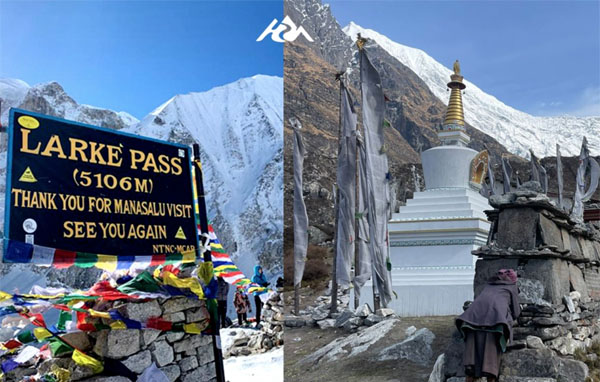
Nepal offers some inconceivable trekking routes, and the Manaslu and Annapurna Circuit Trek and Langtang Valley Treks are among the most popular. Here will provide you an outline of each.
Manaslu Circuit Trek
Difficulty Level: Strenuous.
Begin and End: Kathmandu to Kathmandu.
Best Season: March to May and October to December.
Great Altitude: 5,416 meters ( Thorong La Pass).
Highlights
- Journey across the distant Manaslu area, surrounding Mount Manaslu( 8,163 meters), the eighth-loftiest top on the planet.
- Cross both of Nepal’s exhilarating passes, Thorong La Pass( 5,416 measures) and Larkya La Pass( 5,106 measures).
- Experience varied geographies, including tropical timbers, ravines, and massive glaciers.
- Stay in traditional villa homes and interact with ethical Gurung and Tibetan communities.
- Respect the mesmerizing views of . Annapurna, Manaslu, Dhaulagiri, and different pinnacles.
- Investigate Pungen Gompa, visit Muktinath Sanctuary, and appreciate shocking posts of the Horse area and Tibetan level.
Manaslu Trek
Best Time: Fall( September to November) is great for Manaslu Circuit Trek .Enjoy clear skies, stable rainfall, and smaller crowds. Spring( March to May) is also great, offering dry trails and good visibility. Avoid the thunderstorm season( June to September) and harsh downtime ( December to February).
Manaslu Trek:
Because the Manaslu area is less traveled, its true culture is still preserved. See prayer wheels, monasteries, and communities with Tibetan influences.
The region is home to Tamang, Tibetan, and Gurung people. Your experience is enhanced by their traditional lifestyles and warm hospitality.
The word “mountain of the spirit” that Manaslu embodies reflects the spiritual significance of the peak.
Accomodation:
Throughout the walk, there are tea houses that provide cozy beds and delicious meals.Look into Samdo, Maccha Khola, Soti Khola, and other places. Another alternative is to go camping.
Make reservations early to ensure a cozy stay.
Annapurna Trek
Difficulty Level: Moderate to emphatic.
Start and End: generally begins in Besisahar and ends in Jomsom or Nayapul.
The maximum altitude of Thorong La Pass is 5,416 meters.
- stirring views of snow-limited peaks, including Annapurna( 8,091 measures), Nilgiri, Dhaulagiri, and more.
- Explore different geographies, from lush timbers to thirsty high-altitude comeuppances.
- Visit fascinating townlets, interact with locals, and witness their culture.
- Cross the iconic Thorong La Pass, one of the loftiest touring passes in the world.
- Witness the excellence of the Kali Gandaki Valley and the holy Muktinath Sanctuary.
AnnapurnaTrek
Best Time: Eternity long stretches of September, October, and November are great for the Annapurna.During this season, you ’ll enjoy stable rainfall, clear skies, and vibrant geographies. The trails are less muddy, and the views of the Annapurna Range are spectacular.
Spring( March to May) is another great time. Wildflowers bloom, and the rainfall remains affable. Still, it’s busier than autumn.
Annapurna Trek:
The Annapurna region is an artistic mosaic. You ’ll hassle Gurung, Thakali, and Magar communities, each with their own unique traditions, carnivals, and warm hospitality.
Explore ancient cloisters, prayer flags, and chortens that reflect the mix of Buddhist and Hindu influences.
The Annapurna Conservation Area is home to different foliage and fauna, and you’ll substantiate the harmonious relationship between nature and culture.
Accommodations:
Basic amenities are available at tea houses, or guesthouses, located along the trail.
Chame, Upper Pisang, and Ngawal are popular stops. Magnificent vistas are offered by opulent options like the Farmhouse Hotel and Ngawal Mountain House.
Trekking the Langtang Valley:
The Langtang Valley Trek is situated in the Langtang District, north of Kathmandu, and gives stunning perspectives on the snow-covered mountains.
Scenery: Adventurers are dazzled by Mount Langtang Ri, Langtang, Langrisa, and Ganjala Top as they cross through the “Valley of Glacial masses.”
Local Culture: The experience is enhanced by the friendly and hospitable Tamang people.
Crowds: The Langtang Valley Trek is a tranquil option because it is much less congested.
Time: The journey time changes, however it regularly requires about 10 days to finish.
Best Time: Traveling is best finished in the spring (Walk to May) and fall (September to November).Fall gives quiet climate and clear skies, while spring conveys sprouting wildflowers and lovely temperatures.
Individuals and Culture: The Tamang and Tibetan individuals dwell in the Langtang district.
You will come across
You will experience friendly hospitality, folk dances, and distinctive customs.See nearby monasteries, such as Kyanjin Gompa, to gain knowledge of Buddhist customs and traditions.

Accommodations and guesthouses are available at Kyanjin Gompa (3,870 meters) and Langtang Village (3,430 meters).A noteworthy place to stay is the Hotel Habre1 in Langtang.
Near Kyanjin Gompa, at Me Very Happy Guesthouse .
Conclusion:
All these three treks offer life-changing encounters, stunning views, and the chance to completely immerse oneself in Nepal’s rich natural and cultural heritage.
After deciding which one best fits your preferences, embark on an unforgettable vacation.Choose the tour that most closely matches your preferences and degree of comfort as each provides something unique.
Nepal Hiking Trek Pvt.Ltd is an authentic local tour company located in Kathmandu, which is the heart and gateway of Nepal’s trekking .Company gives services of multiple day tours for solo and private groups. You can contact them through [email protected] or whatsapp:+9779851068290
Similar Stories
FEATURED STORIES

Click Here to Sign Up for Text Alerts
Or Signup Below For Email Alerts!

Passing Thru Travel
The 10 Best Treks in Nepal’s Majestic Mountains 2024
Posted: February 21, 2024 | Last updated: February 21, 2024
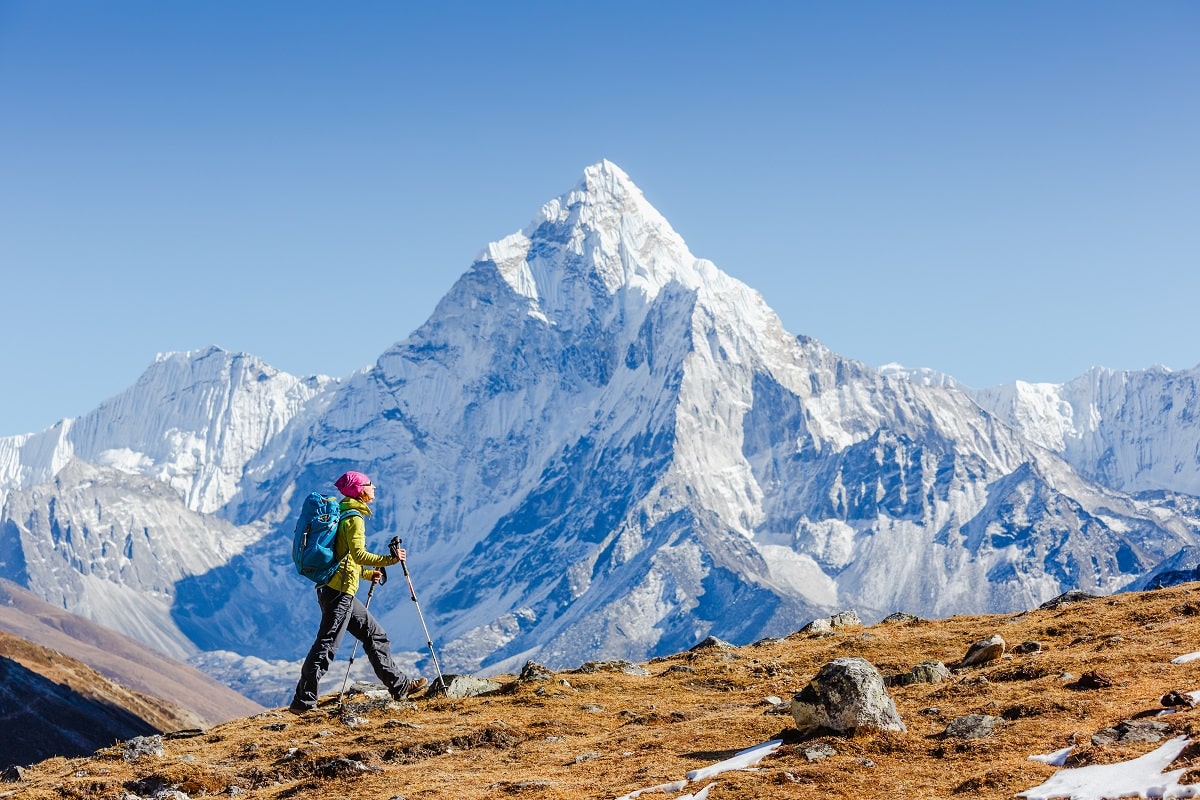
Nestled between the towering peaks of the Himalayas, Nepal is a land of unparalleled natural beauty and a haven for trekkers. From the iconic Everest Base Camp to the serene trails of the Annapurna region, Nepal’s mountains offer a diverse array of trekking experiences, each more awe-inspiring than the last. This guide will take you through 10 of Nepal’s most majestic mountain destinations, providing insights and practical advice for your trekking adventure.
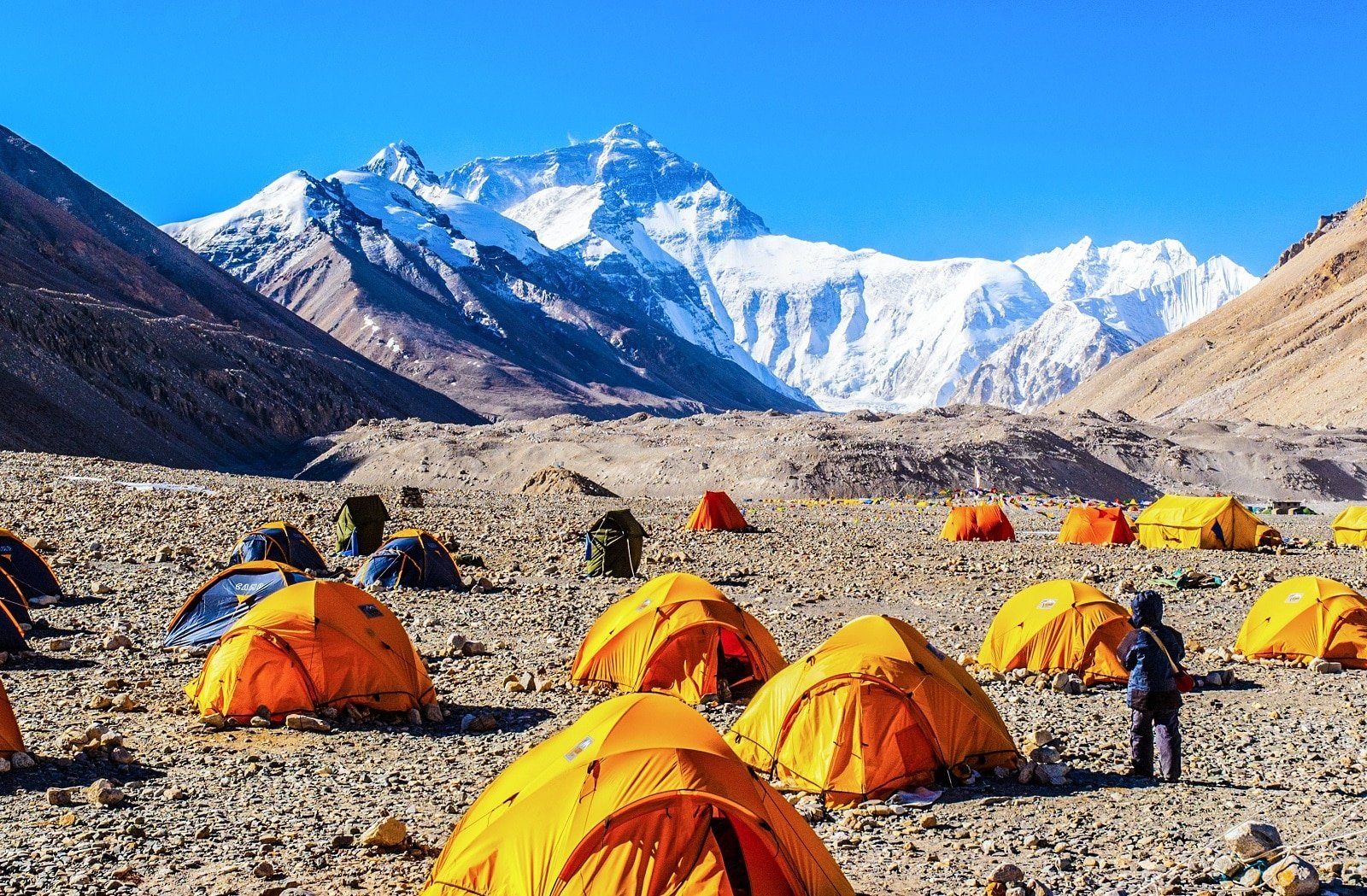
1. Everest Base Camp
Embarking on the Everest Base Camp trek, you’ll journey through the heart of the Himalayas, where the world’s highest peaks, including Everest, Lhotse, and Nuptse, tower above. Starting with a thrilling flight to Lukla, the trek takes you through traditional Sherpa villages, Buddhist monasteries, and along the Dudh Kosi River. The route is challenging yet rewarding, with acclimatization days in Namche Bazaar and Dingboche. The final ascent to Base Camp offers a stunning view of the Khumbu Icefall, making all the effort worthwhile.
Insider’s Tip: Acclimatize properly to avoid altitude sickness.
When To Travel: Pre-monsoon (March to May) or post-monsoon (September to November).
How To Get There: Fly to Lukla from Kathmandu and start your trek from there.
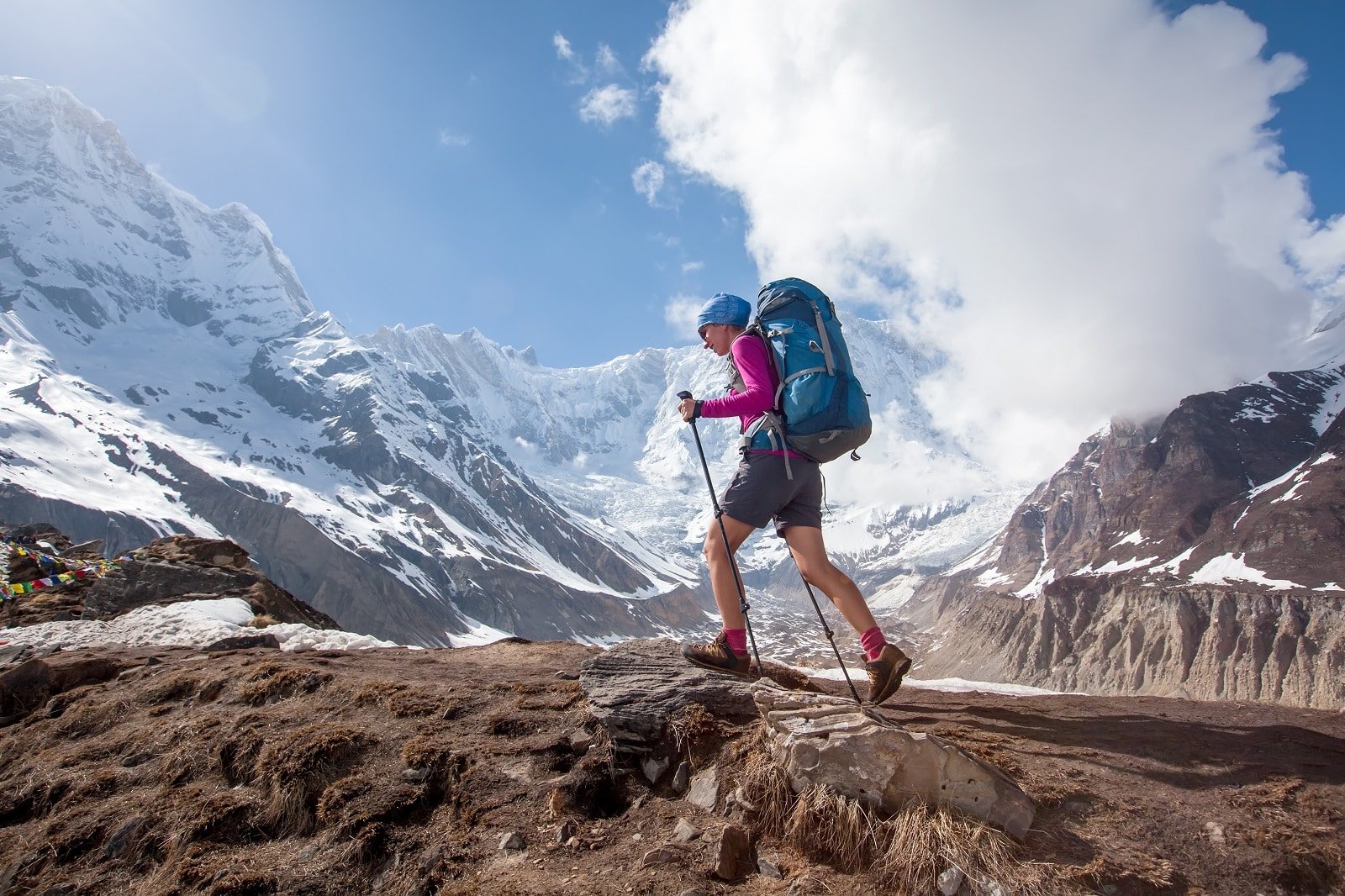
2. Annapurna Circuit
The Annapurna Circuit is a classic trek that takes you around the majestic Annapurna massif. This journey offers a remarkable diversity of landscapes, from the subtropical jungle of the Marshyangdi Valley to the arid, Tibetan-like terrain of the Upper Mustang. Crossing the Thorong La Pass, the trek’s highest point, is a challenging but exhilarating experience. The trek also allows for cultural immersion in the mountain communities of the Gurung and Manangi people.
Insider’s Tip: Take side trips to the ice lakes or Tilicho Lake for additional stunning views.
When To Travel: March to May and October to November for the best weather conditions.
How To Get There: The trek typically starts in Besisahar or Bhulbhule, accessible by road from Kathmandu or Pokhara.
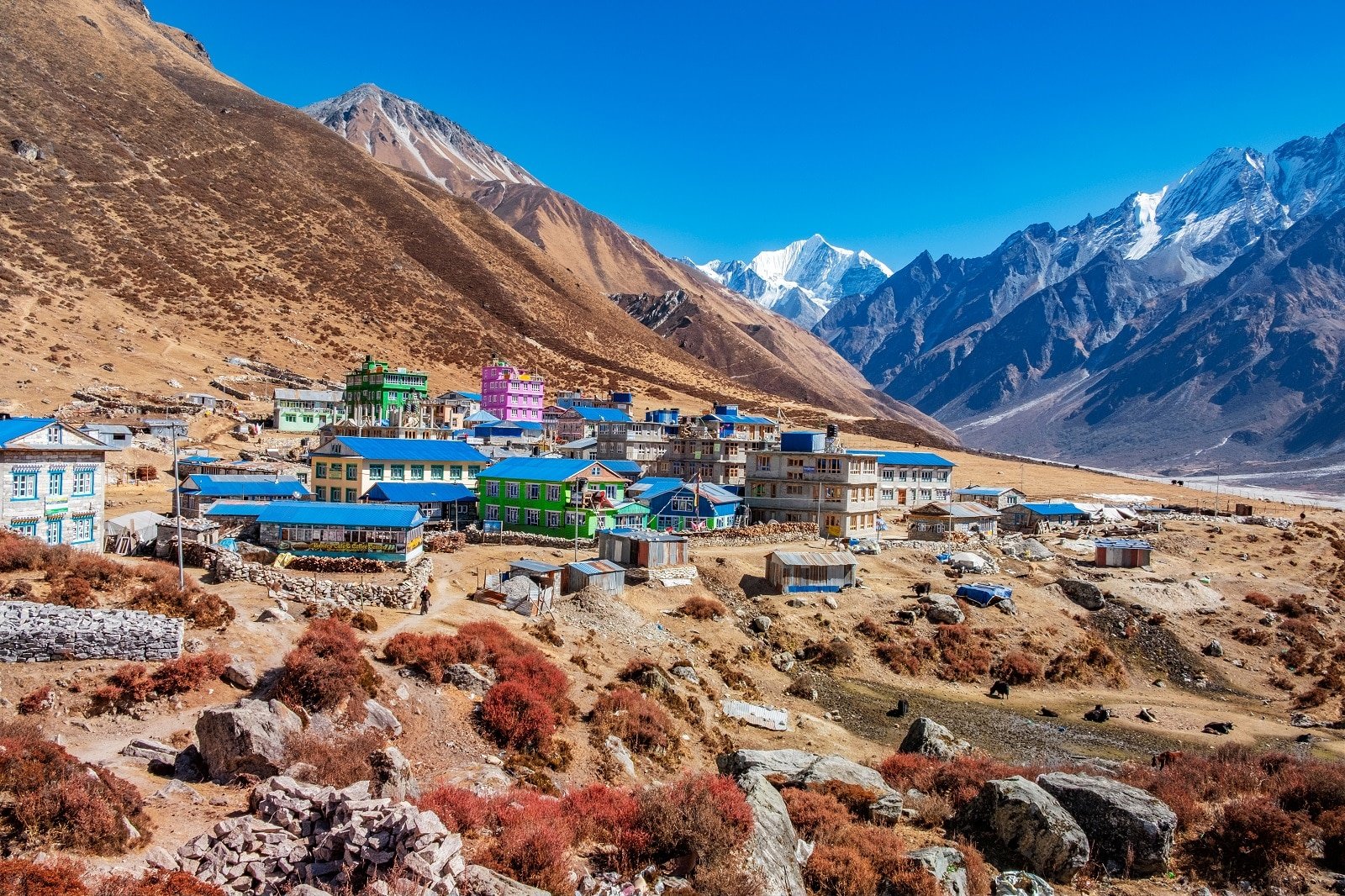
3. Langtang Valley
The Langtang Valley trek offers a quieter, more intimate Himalayan experience. It begins with a drive to Syabrubesi and a trek through forests, pastures, and traditional villages. The valley provides close-up views of Langtang Ri and Langtang Lirung. The trek also includes a visit to Kyanjin Gompa, a significant Buddhist monastery, and an optional climb to Tserko Ri for panoramic mountain vistas. This region was heavily affected by the 2015 earthquake, and trekking here supports local recovery efforts.
Insider’s Tip: Extend your trek to Gosaikunda Lake for a spiritual experience.
When To Travel: March to May and September to November for clear skies and pleasant temperatures.
How To Get There: Drive to Syabrubesi from Kathmandu, the starting point of the trek.
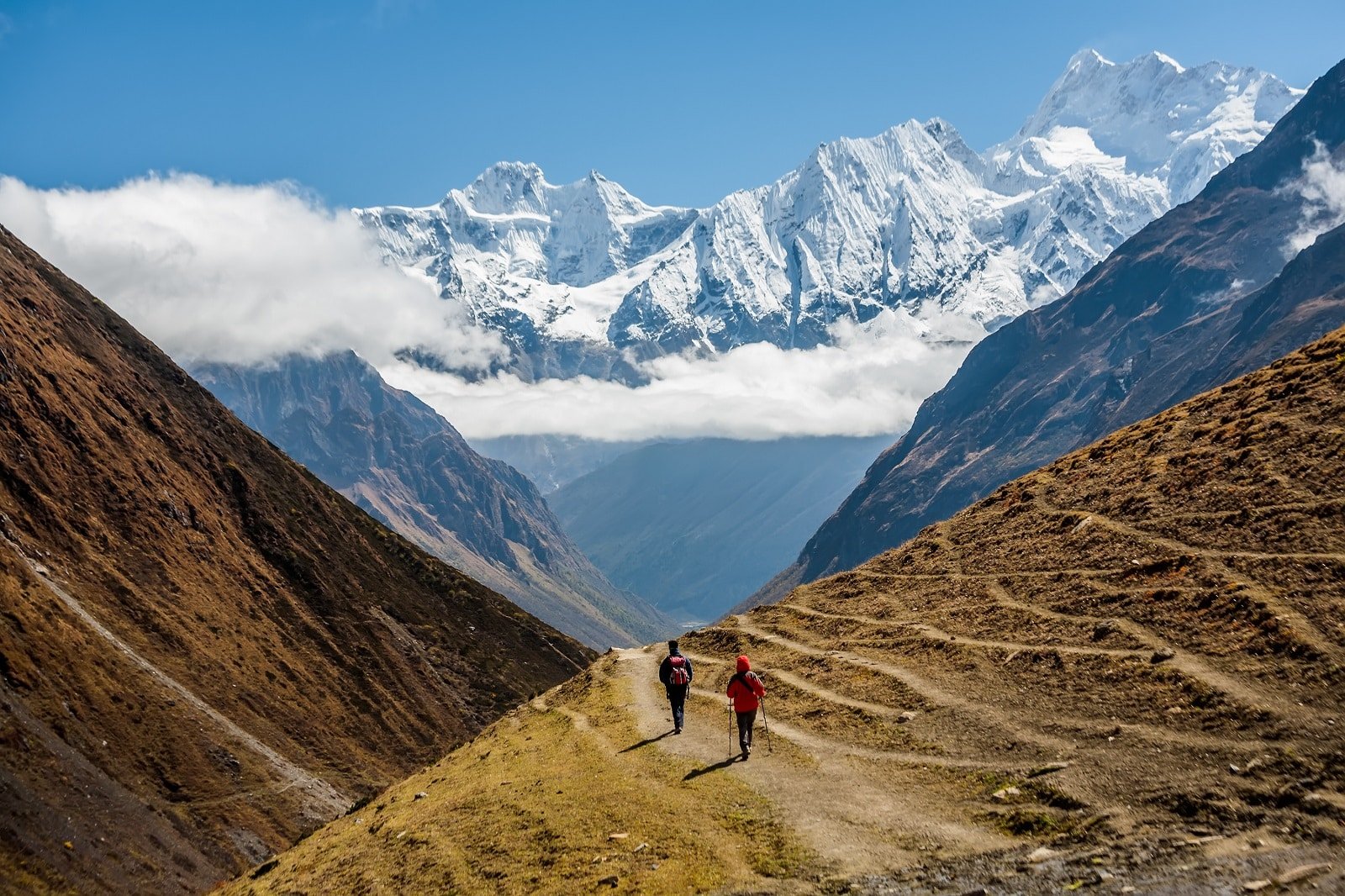
4. Manaslu Circuit
The Manaslu Circuit trek circles the majestic Manaslu, the world’s eighth-highest peak. This trek is less crowded than its more famous counterparts. It offers a look into the untouched natural beauty and culture of the Nepali Himalayas. The trek involves crossing the Larkya La Pass and traverses through Budhi Gandaki Valley, known for its mix of Hindu and Tibetan Buddhist villages. The circuit is a challenging trek, blending cultural richness and scenic splendor.
Insider’s Tip: Ensure you have a guide, as the Manaslu trek requires special permits.
When To Travel: March to May and September to November are ideal.
How To Get There: The trek starts at Arughat or Soti Khola, which can be reached by bus or jeep from Kathmandu.
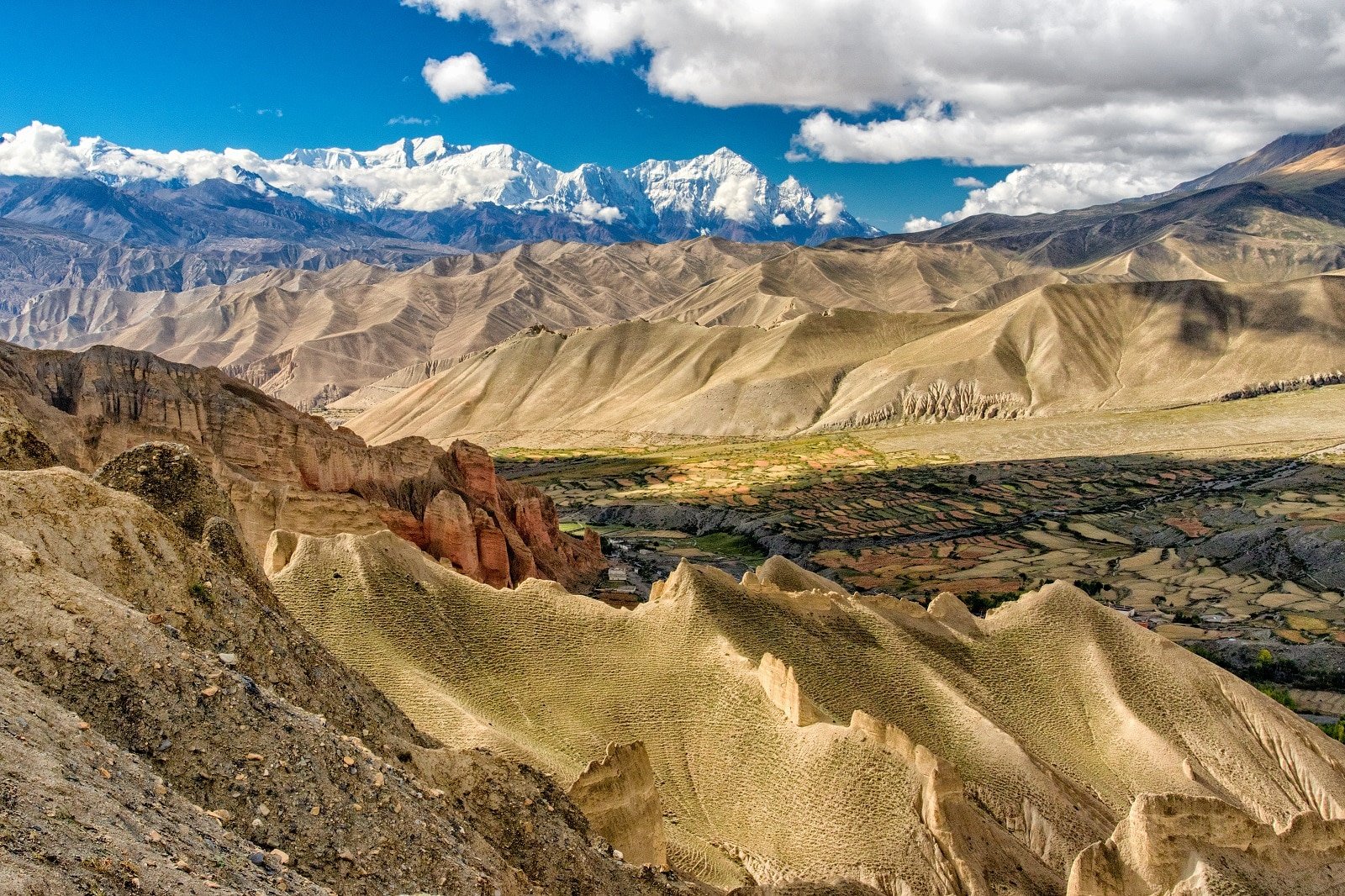
5. Upper Mustang
Trekking in Upper Mustang takes you to a region that was once an independent kingdom. The landscape here is more desert-like, characterized by eroded canyons and colorful stratified rock formations. Lo Manthang, the walled capital, is a highlight, with its monasteries and royal palace. This area is culturally and geographically more akin to Tibet, offering a unique trekking experience distinct from the rest of Nepal.
Insider’s Tip: Visit the ancient monasteries and the royal palace in Lo Manthang. Stay at the beautiful Shinta Mani Mustang.
When To Travel: May to October, as the region lies in the rain shadow area.
How To Get There: Fly or drive to Jomsom, then trek or drive to Lo Manthang.
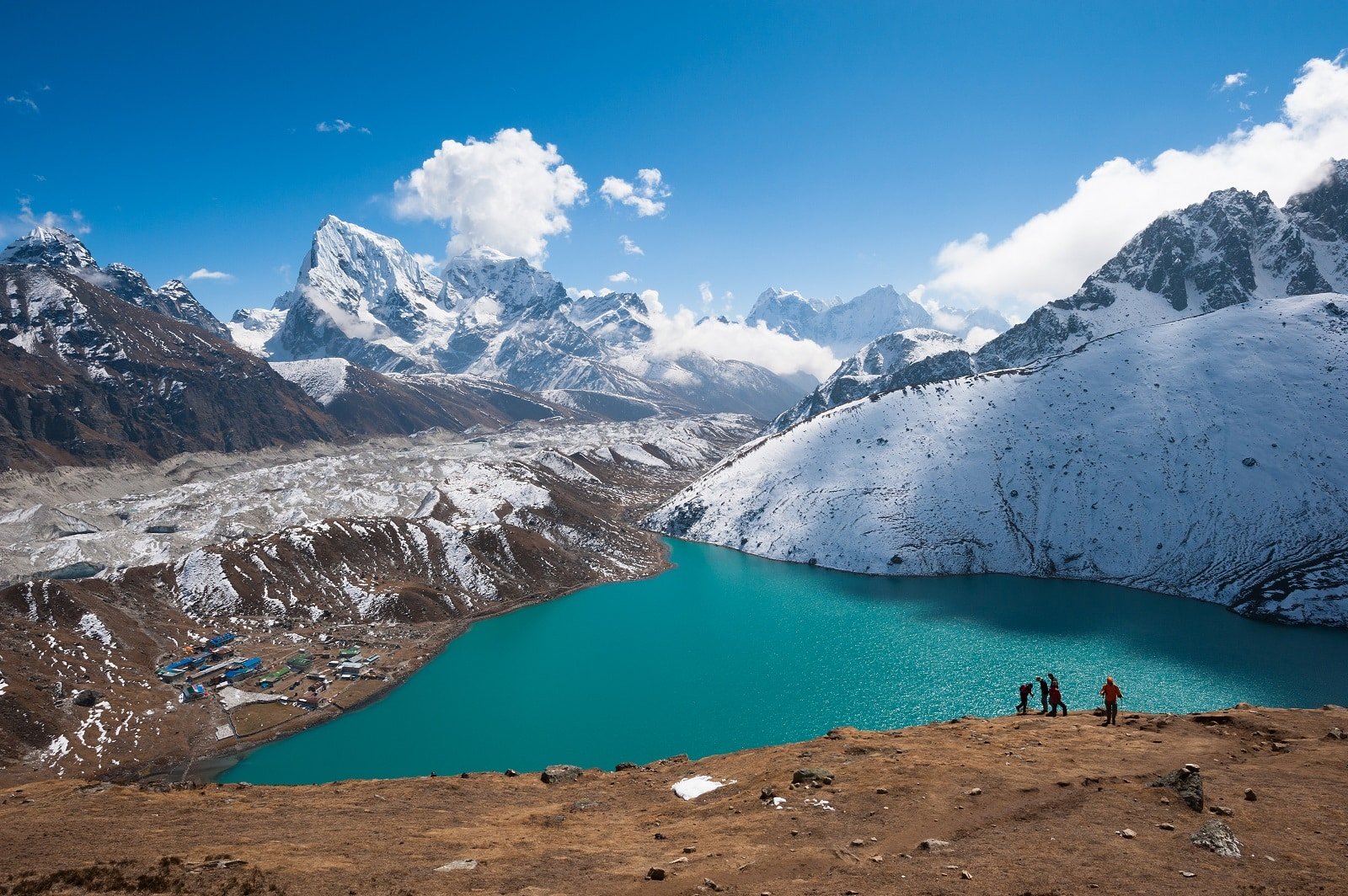
6. Gokyo Lakes
The Gokyo Lakes trek is a fantastic alternative to the Everest Base Camp trek, taking you to a series of stunning high-altitude lakes in the Gokyo Valley. The trek is less crowded and provides spectacular views of Everest and surrounding mountains. Climbing Gokyo Ri offers one of the best viewpoints in the Everest region. The trek passes through Sherpa villages, offering insight into the local culture.
Insider’s Tip: Trek during the full moon for spectacular night views of the mountains.
When To Travel: March to May and September to November for the best weather.
How To Get There: Similar to Everest Base Camp, fly to Lukla and follow a different trail.

7. Poon Hill
The Poon Hill trek is ideal for those looking for a shorter hike in the Annapurna region. It’s known for offering some of the most spectacular mountain views, especially at sunrise from Poon Hill itself. The trek passes through rhododendron forests and Gurung villages, giving you a chance to experience the culture of the central Himalayan region. The trek starts and ends in Nayapul, a short drive from Pokhara.
Insider’s Tip: Carry enough cash, as there are no ATMs on this route.
When To Travel: October to November and March to April for clear skies and good weather.
How To Get There: The trek starts from Nayapul, which is a short drive from Pokhara.
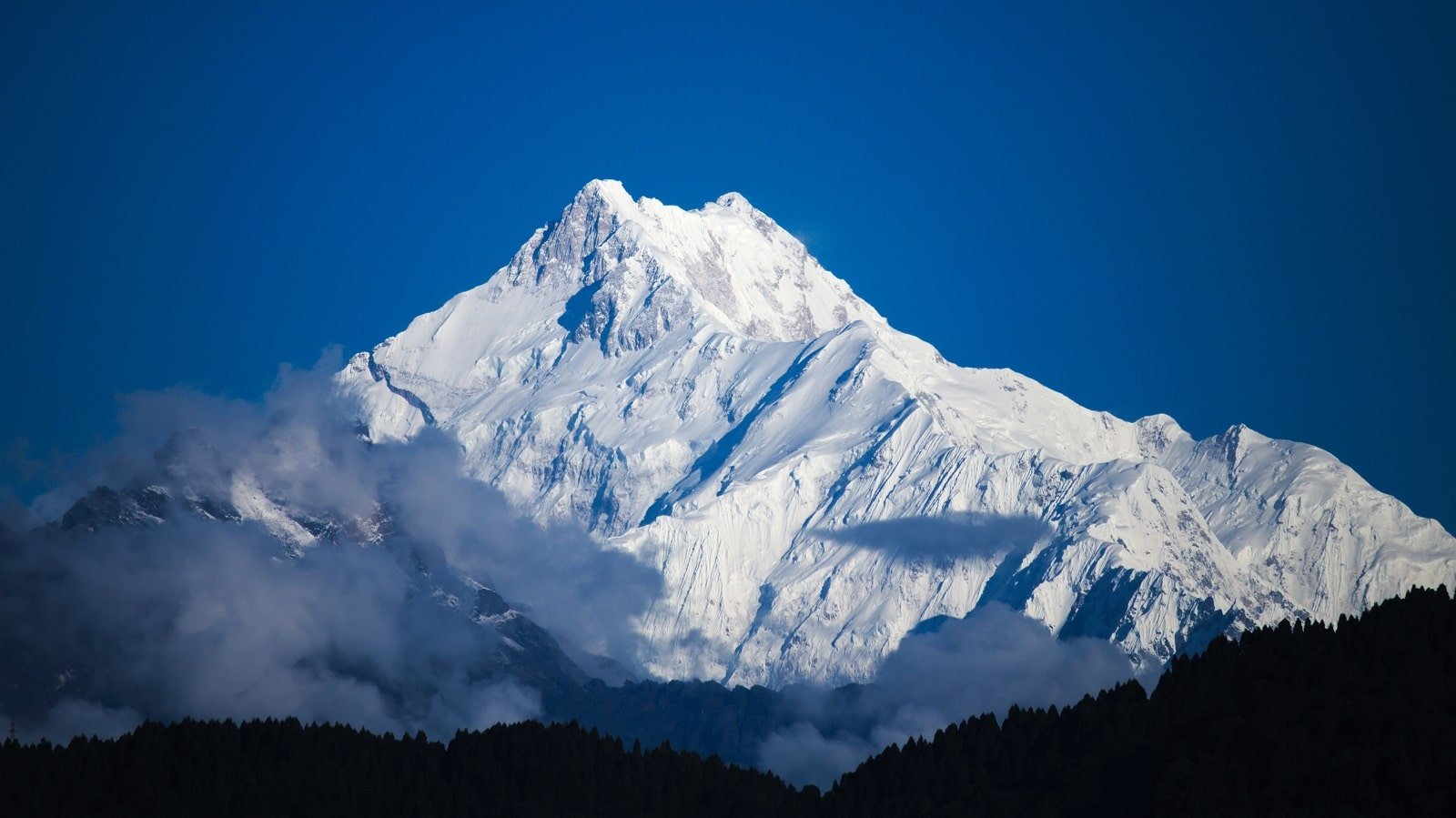
8. Kanchenjunga Base Camp
The Kanchenjunga Base Camp trek is a challenging and adventurous journey to the base of the world’s third-highest mountain. This remote trek offers stunning views of Kanchenjunga and a chance to experience pristine wilderness. The trek passes through diverse ecosystems, traditional villages, and high alpine terrain. It’s a trek for those seeking solitude and unspoiled nature.
Insider’s Tip: Be prepared for basic accommodations and facilities, as this is a less developed trekking route.
When To Travel: March to May and September to November for stable weather.
How To Get There: Fly or drive to Bhadrapur, then drive to Taplejung, the starting point of the trek.
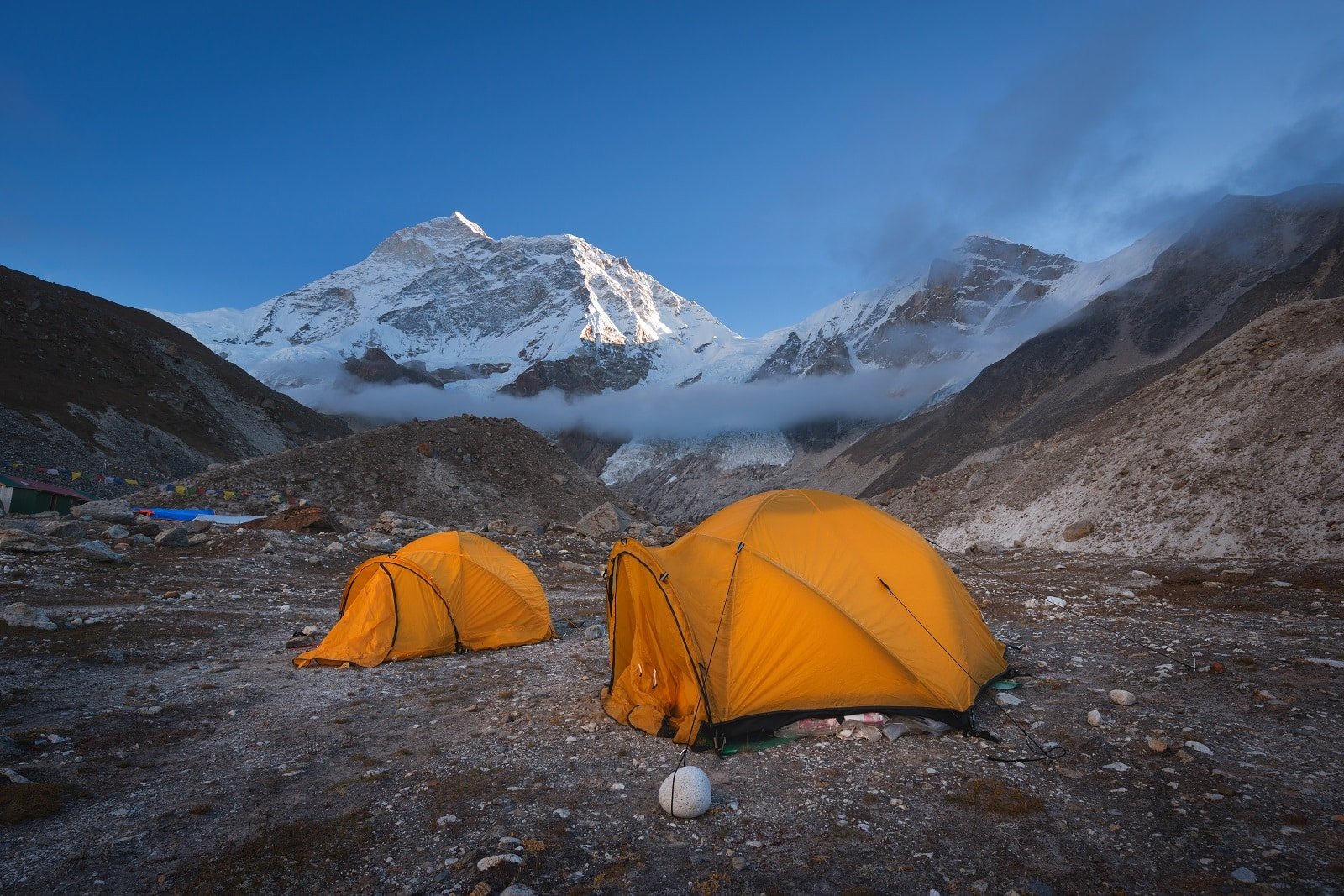
9. Makalu Base Camp
The Makalu Base Camp trek is a challenging journey to the base of Mount Makalu, the world’s fifth-highest mountain. This trek takes you through some of Nepal’s most remote and wild areas, offering stunning views of the eastern Himalayas. The Makalu Barun National Park, through which the trek passes, is a biodiversity hotspot with a rich variety of flora and fauna.
Insider’s Tip: Be physically and mentally prepared for a challenging trek with basic facilities.
When To Trave: Pre-monsoon and post-monsoon periods for the best conditions.
How To Get There: Fly to Tumlingtar from Kathmandu, then drive to Num, the starting point of the trek.
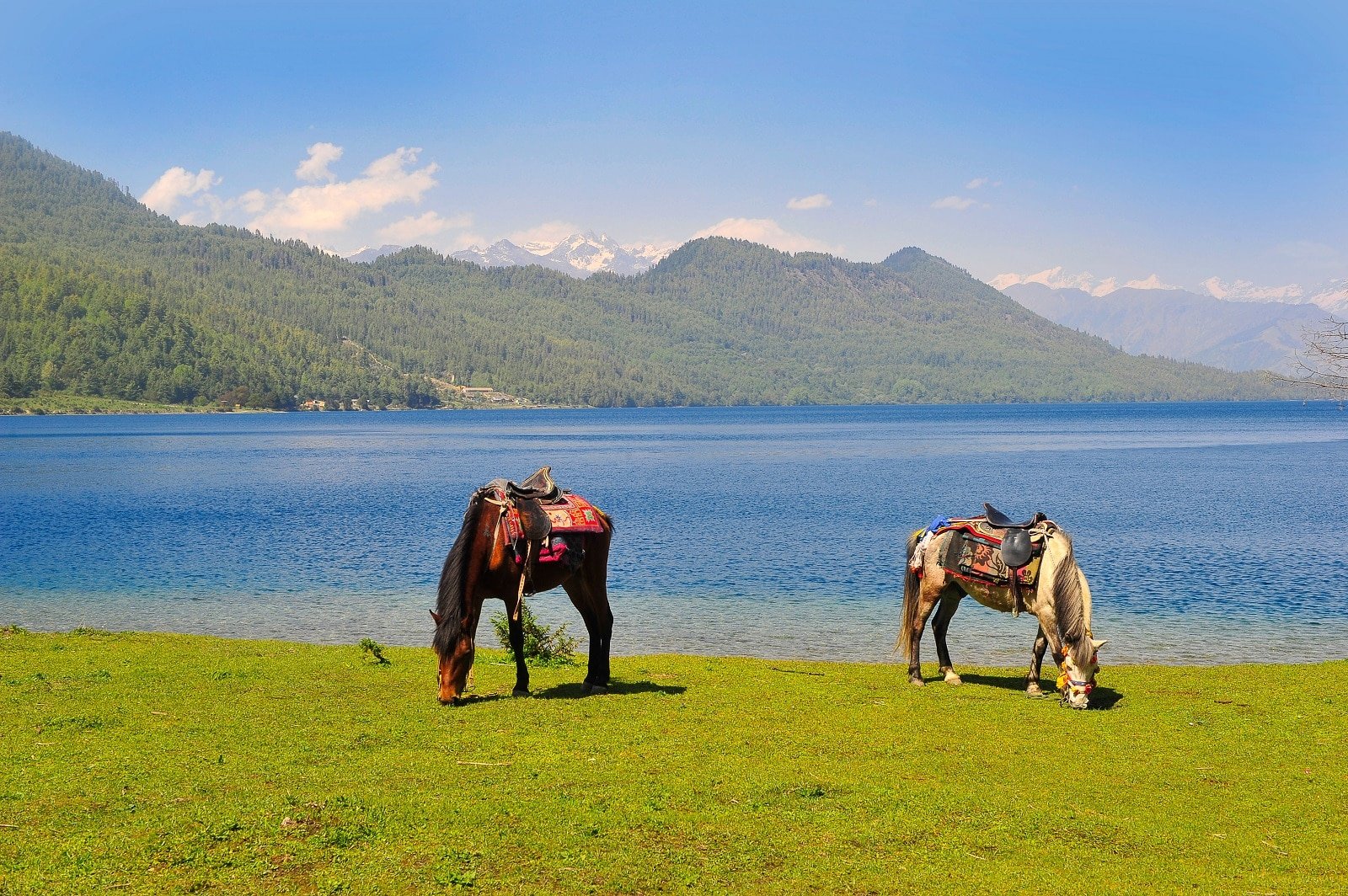
10. Rara Lake
Trekking to Rara Lake offers a serene experience away from the more popular trekking routes. Rara, the largest lake in Nepal, is known for its clear blue waters and scenic beauty. The trek to the lake is an adventure in itself, passing through remote Jumla and Mugu districts. The area around the lake, Rara National Park, is home to a variety of wildlife and offers tranquility unmatched in other parts of Nepal.
Insider’s Tip: Visit the nearby Rara National Park for a chance to see unique wildlife.
When To Travel: September to October and April to May for the best trekking conditions.
How To Get There: Fly to Nepalgunj from Kathmandu, then to Jumla, from where the trek to Rara Lake starts.
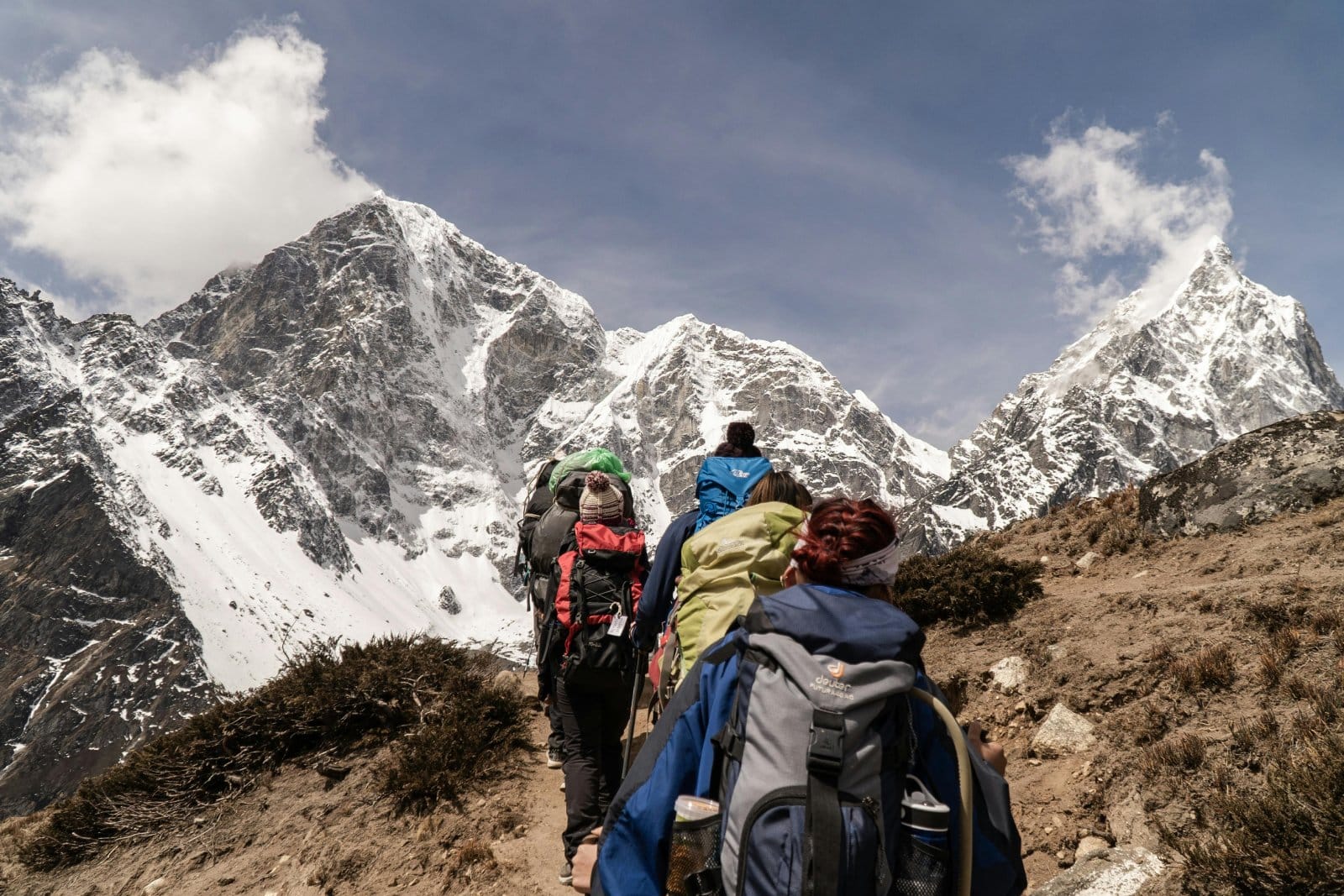
The Bottom Line
Trekking in Nepal is more than a physical journey; it explores some of the most majestic landscapes on Earth. Each destination offers its unique charm, from the world-renowned Everest Base Camp to the tranquil trails of Rara Lake. As you trek through these mountains, you’ll not only witness breathtaking vistas but also immerse yourself in the rich culture and hospitality of the Nepali people. Pack your bags, lace up your boots, and prepare for an adventure that will leave you with memories to last a lifetime.
More Articles Like This…
Barcelona: Discover the Top 10 Beach Clubs
2024 Global City Travel Guide – Your Passport to the World’s Top Destination Cities
Exploring Khao Yai 2024 – A Hidden Gem of Thailand
The post The 10 Best Treks in Nepal’s Majestic Mountains 2024 was republished on Passing Thru with permission from The Green Voyage .
Featured Image Credit: Shutterstock / Olga Danylenko.
For transparency, this content was partly developed with AI assistance and carefully curated by an experienced editor to be informative and ensure accuracy.
More for You
Donald Trump Gets Worst Poll Yet in State He Has Always Won
Forget pull-ups — you just need a set of dumbbells and 5 exercises to build your back and biceps
The Fed’s interest rate mistake is a gift for Trump
Shaquille O’Neal Delivers Harsh Reality Check to Caitlin Clark About Joining Big3
The Supreme Court decision that could rock Utah
Remington's sale of its ammunition arm to a foreign buyer is raising eyebrows
Fact Check: Article Claims Trump Threatened Probation Officer During Video Call. Here's the Truth
These common walking mistakes can ruin a good thing
The Only Major Actors Still Alive From The Carol Burnett Show
Indiana Fever Coach Pressured to Make ‘Obvious’ Lineup Adjustment Amid Brutal Defensive Metrics
Fani Willis Lawyers Get New Warning From Judge
Lia Thomas’ transgender case thrown out after US swimmer ruled ineligible
Disney, Florida's DeSantis end spat with deal on 15-year expansion plan
60s pop icon and actress dies aged 80
What to do with old EV batteries? Recycle them!
Thinking About a Half Marathon? 24 Things to Know Before Lacing Up
Warning as birth of rare white buffalo calf in Yellowstone park fulfills ancient prophecy
The Forgotten '60s Sitcom That Kicked The Twilight Zone Off TV
CalPERS becomes latest Tesla shareholder to vote against Musk's pay package
The Russian submarine that just showed up off of Cuba is one of a new class of subs that has worried the US and NATO for years

COMMENTS
Some of the mountain peaks to look out during your Langtang trek are Langtang Lirung (7246m), Yala Peak (5500m). You can see Gangchhenpo (6388m), Dokpu (5930m) and Naya Kangri (5846m). In early March and late May, there are chances of clouds blocking the views. For great visibility and clear days, April is the ideal month.
A 2023 update for the Langtang trek. From the 1st of April 2023, it's compulsory for all international trekkers to have a licensed guide for hiking most routes in Nepal including the Langtang trek. It's a very recent change that was made in March 2023. Unfortunately, it's still unclear if it's compulsory for the Langtang trek or not.
The Langtang trek in March will be spectacular because of the wonderful mountain views. Due to the lack of clouds to obstruct your views, the skies will be aesthetically pleasing. You can see snow-capped mountains even from the first days of the trek. You will also get close and unobstructed vistas of glaciers and lakes of the valley.
All you need to know to plan your Langtang Valley trek in Nepal, with a suggested itinerary, route maps, practical info, and tips for the trail. Plan your Langtang Valley trek with this in-depth guide. ... From our own experience trekking in Nepal in March and April 2023, we can confirm that independent trekkers are still trekking in the ...
If you are considering the Langtang Valley Trek, I say go for March. In addition to the better views, you will face fewer crowds on the trails and teahouses. The average day temperature during the Langtang Valley Trek in March is around 10°C-20°C (50°F-68°F). Whereas the average night temperature is around 0°C-10°C (32°F-50°F),
Langtang Valley Trek in March is a captivating journey in the high-altitude Himalayas. March offers a harmonious blend of delightful weather and favorable temperatures with enchanting mountain topographies.March is just the start of trekking activities, and unlike April and May, there is less number of trekkers, which offers a peaceful atmosphere in a pleasant environment, allowing for an ...
15 kilometers, 7 hours, altitude gain 1070+. The first day of the Langtang trek is also one of the most difficult days of the trek as you gain more than a 1000 meters in altitude. It starts with a 3 hour gentle climb up to Bamboo village. Bamboo village is about halfway and a great place for a lunch break.
Best Time to do Langtang Trek: Spring (March, April, and May) and fall (September, October and November) are the optimum seasons for a Langtang valley trek. The greatest time to see the spectacular mountains and glaciers is in the autumn. Spring also brings us snow-capped mountains and green woodlands brimming with crimson rhododendrons.
The famed British mountaineer and travel writer, Bill Tilman (1898-1977), called this "one of the world's most beautiful valleys.". The local people in the Langtang Valley are mostly of Tibetan origin and, according to legend, the valley was first discovered by a lama - a teacher of Tibetan Buddhism - who was pursuing a runaway yak.
The best seasons to trek to Langtang are autumn and spring. Autumn is from September to December and spring stretches from March to May. The weather is warm and the heat is bearable. There will be very little or no rainfall. The sky will be clear allowing you to get the best view of the mountains.
The height season for mountain climbing the Langtang trek is March-April and October-November, with April and October being the busiest months. The wet season, June to August is the worst time for trekking. It rains so much, trails and roads get very muddy, many visitor homes shut for the offseason, and at decrease elevations, there are various ...
Langtang Trek is a favorite short trek destination in the Langtang valley located close to Kathmandu city, in the central Himalayas. The 11 days trip takes you across the Langtang National Park through some low and high elevation terrains with natural views and integration of rich Tamang community culture. Bordering closely to Tibet in the north, it offers expansive views of Nepali and Tibetan ...
Best time to hike Langtang Valley. There are two main trekking seasons: March-April and October-November. I would advise to try and complete the trek around these months and avoid the wet season in the middle of the year. The dry winter can make for quieter trails, but many teahouses close down and the trail will be snowed in higher up.
Langtang Trek in Spring (March, April and May) Spring is the season of nature; during this period, the landscapes of the entire country are brimming with life. During your trekking adventure, you traverse across the lush green hills, terraced farms, and charming trails adorned with colorful flowers. If you are a nature enthusiast who is looking ...
The peak season for the Langtang Valley Trek is March to April and October to November. The time to avoid this trek is during the rainy season from June to August. During the winter from December to February, this region gets very cold and there will be snow cover in the higher parts of the trek. Many of the guesthouses actually close up for ...
The peak of Langtang Lirung and the distinct culture of the famous ethnic group Tamang make this trek more authentic. 6 Days Short Langtang Trek offers alluring views of grand mountains and a mirthful walk around the glorious valleys. The 8 Days Langtang Circuit Trek starts as well as ends at S yabrubeshi or Dhunche.
Spring is also perfection from late March to May as Rhododendron's bloom and wildflowers pop up all over the valley. This time of the year makes the Langtang stand out from other trekking circuits in Nepal. ... In general I found the Langtang trekking a bit more challenging than the Annapurna Basecamp trek, especially the first two days were ...
The best season for Langtang Trek like any high-altitude expedition in Nepal is during the peak seasons like spring (March, April, and May) and autumn (September, October, and November). Trekking in the Langtang region is also possible during the off-seasons like winter (December, January, and February) and monsoon (June, July, and August ...
Spring Langtang Trek. March-May is the second best season to go trekking in Langtang region. You will love the long and warm days during this season. The daytime temperature in the Langtang region falls in the range of 10°C-20°C (50°F-68°F). In the moderate temperatures, you will have easy trekking to the Langtang valley.
Spring (March to May) and Autumn (September to November) are the best time to trek Langtang Valley. You can enjoy the rhododendron filled forests during Spring and you will see beautiful clear mountain views in Autumn. The weather during these seasons is warm and stable with a temperature range of 10 °C-15 ° C.
Considering the short-natured adventure plans in 5 Days Langtang Trek itinerary, the most suitable months for this trek are spring (March, April, and May) and autumn (September, October, and November). ... As the success rate of 5 Days Langtang Trek itinerary is at 97% to 99%, ...
Langtang Valley Trek itinerary in brief: Day 01: Arrival in Kathmandu and Trek Preparation (1,400 M) Day 02: Drive to Syabrubesi (1,550 M) Day 03: Trek to Lama Hotel (2,380 M) Day 04: Trek to the Langtang Village (3,430 M) Day 05: Trek to Kyanjin Gompa (3,870 M) Day 06: Hike Up To Tserko Ri (5,000 M) And Trek Back To Lama Hotel Day 07: Trek from Lama Hotel to Syabrubesi (1,550 M)
This trek does not require prior experience, skills, or knowledge. However, you need to get enough rest if you have any health conditions. Our Langtang Valley trek 8 days journey starts at an altitude of 1460m. The trail includes; passing through the hill, forests, and rivers. The path through the hills gets narrow.
Manaslu Circuit Trek. Difficulty Level: Strenuous. Begin and End: Kathmandu to Kathmandu. Best Season: March to May and October to December. Great Altitude: 5,416 meters ( Thorong La Pass). Highlights
The Langtang Valley trek offers a quieter, more intimate Himalayan experience. ... as this is a less developed trekking route. When To Travel: March to May and September to November for stable ...